information asymmetry
description: a situation in which one party in a transaction has more or better information than the other, creating an imbalance of power
231 results
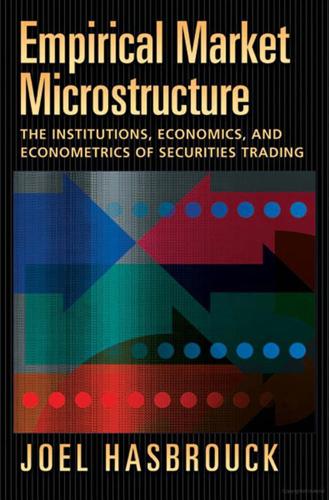
Empirical Market Microstructure: The Institutions, Economics and Econometrics of Securities Trading
by
Joel Hasbrouck
Published 4 Jan 2007
In the model (and in real markets), a trade can trigger a wave of elections. 5.5 Empirical Implications This book’s presentation of information asymmetry focuses on its role in trading situations. More broadly, though, asymmetric information figures SEQUENTIAL TRADE MODELS prominently in many models of corporate finance and asset pricing. The sequential trade models (and others to follow) establish a connection between information asymmetries and observable market phenomena. The construction of proxies for the former via empirical analysis of the latter ranks as one of the most important goals of empirical microstructure research. In the model of section 5.2, the structural asymmetric information parameter is µ (the proportion of informed traders in the population). µ is positively related to both the bid-ask spread and the revision in beliefs (compare Eqs. (5.7) and (5.1)).
…
This is an important point because although information asymmetries related to value are quite plausible in some markets, they are more dubious in others. In equity markets, for example, advance knowledge of an earnings surprise, takeover announcement, or similar event confers an obvious advantage. Similar events do not, however, characterize the government bond and foreign exchange markets. Models of these markets, therefore, must rely on a broader concept of private information. This important point has been stressed by Lyons (2001). 5.4.2 Fixed Transaction Costs Suppose that in addition to asymmetric information considerations, the dealer must pay a transaction cost c on each trade (as in the Roll model).
…
Subrahmanyam considers the case of a multiple security market that includes a basket security, for example, a stock index futures contract or an index exchange traded fund. The diversification in an index greatly mitigates firm-specific information asymmetries, making index securities generally cheaper to trade. Holden and Subrahmanyam (1992, 1994), Foster and Viswanathan (1996), and Back, Cao, and Willard (2000) consider multiperiod models with multiple informed traders. 8 A Generalized Roll Model 8.1 Overview Following the economic analysis, we now turn to empirical examination of asymmetric information by developing a generalization of the Roll model. One sensible first step is to allow the efficient price to be partially driven by the trade direction indicator variable.

Markets, State, and People: Economics for Public Policy
by
Diane Coyle
Published 14 Jan 2020
Technological disruption might then be the best hope of tilting the balance back in favor of consumers. The remainder of this chapter looks in more detail at three aspects of markets: the importance of information asymmetries in preventing competition from working well and so requiring regulation; technological disruption as a force for increased competition; and why natural monopoly markets always require heavy regulation. Information Asymmetries The absence or presence of information asymmetries can make all the difference to how a market functions. One of the most famous economic models, George Akerlof’s “market for lemons” model, captures the key insight into how the fact that one party has more information than another can prevent a market from working at all.
…
Industrial policy is now coming back into favor among economists for the first time in some decades, with recent economic thinking emphasizing the important coordination role of government when there are missing markets and asymmetric information, and also an important role for the production of public (knowledge) goods via investment in the science base. This chapter links the theory and history of the shifting boundary of state and private production to specific market failures: public goods, natural monopolies, asymmetric information, and incomplete markets (assumptions A3, A4, A5, and A6 fail—see box 1.4). The History of Nationalization and Privatization: The UK and Beyond The nationalization of industry came in three waves, with substantial variation between countries, the US experience being significantly different.
…
What’s more, extreme inequality at the upper end of the income scale can lead to an erosion of democracy, as rich people are likely to have growing influence on policies and so minority interests or the protection of monopoly rents may increasingly prevail in legislation and regulation. What, though, is the economic efficiency rationale in terms of market failures? There are in fact several. They concern asymmetric information (assumption A4 fails), incomplete markets (A6 fails), and externalities (A5 fails) (see box 1.4). When it comes to providing an income in times of need, the most important rationale concerns the inability of individuals to insure themselves privately against some kinds of risk, because of asymmetric information and missing markets (assumptions A4 and A6 fail). The welfare state is in essence society’s mutual insurance. There are some risks it is impossible for individuals to insure themselves against either because the scale is so large or because the adverse events affect everyone simultaneously such that private insurers could not diversify the risks.

Culture and Prosperity: The Truth About Markets - Why Some Nations Are Rich but Most Remain Poor
by
John Kay
Published 24 May 2004
Odysseus would not have been impressed by the argument that the behavior he fears, being irrational, will not happen. And nor are we. Information (Chapter 19) ••••••••••••••••••••••••••••••••••••• Asymmetric information is endemic in modern market economies. It is easy to conclude that the remedy for asymmetric information is to tell consumers more, either by regulation or by recognizing disclosure of risks as a legal defense. Yet, as these examples illustrate, such measures are almost use- Culture and Prosperity { 349} less. The normal market mechanism for dealing with asymmetric information is reputation. When we place a deposit with a bank or visit a doctor, we rely on the reputation of the bank and the doctor to assure the security of our deposit and the wisdom of the advice.
…
Simon USA 1978 Decision making Vernon Smith USA 2003 Behavioral economics Robert M. Solow USA 1987 Theory of economic growth A. Michael Spence USA 2001 Asymmetric information George J. Stigler USA 1982 Industrial structures, functioning of markets, and causes and effects of public regulation Joseph E. Stiglitz USA 2001 Asymmetric information Richard Stone UK 1984 National income accounting Jan Tin bergen Netherlands 1969 Economic dynamics James Tobin USA 1981 Finance theory and macroeconomics William Vickrey USA 1996 Asymmetric information {glossary} ••••••••••••••••••••••• absolute advantage balance of payments bounded rationality See COMPETITIVE ADVANTAGE.
…
Yet a business partner in Antonio's venture would sensibly be nervous of information asymmetry and moral hazard. Even if Antonio is completely honest and truthfully reveals all he knows, he may be more inclined to offer participations when he is nervous about the prospects for his trade than when he is optimistic. 20 And Antonio will certainly take more risks if he does not bear the whole consequences of failure. This is not entirely a bad thing. Optimism and risk sharing enable many more new businesses to be started and contribute to the pluralism of a market economy. Information asymmetries extend more widely. Those who invest with Antonio will not be a random sample of the population.
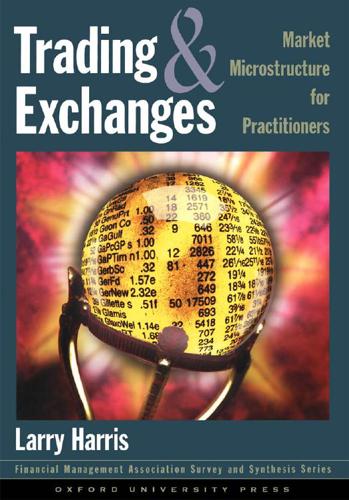
Trading and Exchanges: Market Microstructure for Practitioners
by
Larry Harris
Published 2 Jan 2003
When we compare spreads, we will implicitly refer to relative spreads. 14.6.1 The Three Primary Spread Determinants The three primary spread determinants are asymmetric information, volatility, and utilitarian trading interest. Their effects on spreads are not independent of each other. For example, if information asymmetries are high, spreads will be wide. Wide spreads, however, discourage uninformed investors, decrease trading volumes (a secondary spread determinant), and thereby make spreads even wider. Asymmetric Information The adverse selection spread model suggests that markets with asymmetrically informed traders will have wide spreads. Spreads will be widest when well-informed traders know material information about instrument values that would have an immediate and significant effect on values if it were common knowledge.
…
For example, we argue below that firms in emerging industries should have wider spreads than firms in established industries because of asymmetric information problems. However, firms in emerging industries tend to have substantial investment interest, which creates substantial volumes and therefore narrower spreads. Firms in emerging industries therefore may have narrower spreads than firms in established industries, although we predict otherwise. When factors are correlated, it is often necessary to use statistical methods to disentangle their conflicting effects. 14.6.2.1 Asymmetric Information Proxies Information Disclosure Rules Rules that require information disclosure decrease information asymmetries. Stock markets that require their listed firms to disclose reliable, comprehensive financial information on a regular and timely basis will have narrower spreads than those which do not require extensive disclosure.
…
See International Councils of Securities Associations immediacy, 70, 279, 294, 297, 398, 399 immediate-or-cancel orders, 83, 84 implementation risk, 363, 364, 366–67 implementation shortfalls, 424, 426 implicit transaction costs, 421, 422–23 inappropriate order exposure, 165 in-balance inventories, 283, 284 index arbitrage, 563, 577, 580 index components, 484 index creators, 485 index divisors, 485 indexed limit orders, 309 index enhancement funds, 354 index funds, 40, 484, 486–87 index futures market, 562–63 indexing, 197, 457–60 index managers, 486 index markets, 484, 487–93 index participations, 67 index portfolios, 468, 469, 489–91 index products, 484, 491–92 index replicators, 442 index trading mechanisms, 489 indication of interest, 107, 387 indirect compensation, 593 inefficient traders, 197 inelastic demand, 412 inferior prices, 70 infinitely lived contracts, 41 information asymmetries, 7, 312, 314–15, 323, 326–27, 332, 531–32 collection systems, 97 disclosure rules, 314 distribution systems, 98–99 and floor-based trading, 548–49 inside, 228, 584–88 public, 223, 241–43 of specialists, 501–2 technologies, 8, 524–26 unequal access to, 532 See also informed traders informationless trading strategy, 468 information-oriented technical traders, 194, 195, 196, 226, 230–32, 235, 243 informative prices, 4, 206–14, 218, 222, 224, 235, 237, 238–39, 241, 243 informed traders, 223–24, 252, 384–85 asymmetric information, 299, 310, 531 and block trading, 330 competition among, 239–40, 243 in crossing networks, 135 and dealers, 287–92, 295, 519 definition of, 177, 194, 197, 222 and informative prices, 224, 238–39, 243 liquidity and predictability, 236, 237, 239–40 market paradox, 238–39 profits, 237, 238 trading strategies, 196, 225–26 trading styles, 226–35 and transaction costs, 430 initial margin, 156 initial public offering (IPO), 39, 253 innovative market, 527–28 inside information, 228, 584–88 insider trading, 315, 584–99 bounty hunting for, 590 corporate control issue, 594 debate over, 591–97 definition of, 584 and inside information, 584–88 practical judicial issues, 588–91 proving, 590 inside spread, 280, 281 See also bid/ask spread inside the market, 70 Instinet, 35, 132, 543 institutional traders, 281, 283, 290 instrument(s) correlation of, 44 debt, 40–41 definition of, 4 and informed traders, 223 similar, 539 spread orders, 84 straddle, 37 U.S. markets by class, 45 See also trading instruments insurance companies, 65 insurance contracts, 43 interconnect access fees, 536 interdealer brokers, 58, 93 interest, 155–56, 315 interest rate swap, 42, 187 Intermarket Trading System, 105 Intermedia Communications, 363, 373 intermediate commodities, 188 internalization of orders, 161, 514, 520, 522 internal order crossing, 514, 520–21, 522, 537 internal rate of return, 446, 447 International Councils of Securities Associations (ICSA), 66 international equity derivatives markets, 50, 53 international futures markets, 54 International Organization of Securities Commissions (IOSCO), 66 International Securities Exchange, 50, 543 international stock markets, 50–52 Internet, 99, 267, 343, 545, 558 intertemporal cash flow timing problems, 178, 180 in the doghouse, 325 in the market, 74 in the price, 229 intrinsic values.
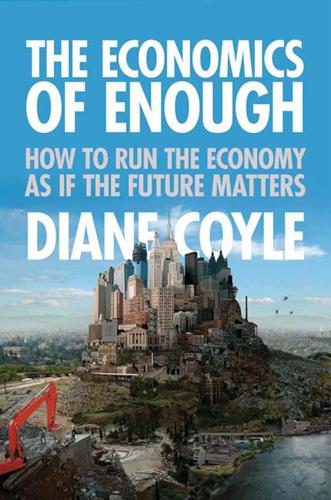
The Economics of Enough: How to Run the Economy as if the Future Matters
by
Diane Coyle
Published 21 Feb 2011
But note that—referring back to the previous chapter—a number of increasingly important sectors of the economy such as music and software also have these characteristics of nonrivalry and nonexcludability. Moreover, many goods and services are characterized by a lack of information about their quality. This can be either because of an information asymmetry between buyer and seller (the seller of a used car knows much more about it than the customer), or because it is an experience good which must be consumed to know what it’s like, for example watching a movie. Information asymmetries and shortfalls are an important reason why markets might not work efficiently. It will be apparent that there are many ways in which markets can “fail,” more so than was the conventional wisdom in the 1980s and 1990s, and covering many more activities than those normally provided by the government.
…
They will involve a more productive and thoughtful interplay between markets and governments than we’ve typically had in the past, one taking account of the dramatic technological and structural change in the economy. Markets and governments need each other to function well, and indeed often “fail” in the same contexts. The existence of transactions costs and information asymmetries present a challenge to any institutional framework. The work of the 2009 Nobel laureates Elinor Ostrom and Oliver Williamson focuses precisely on the way these aspects of reality shape different kinds of institutional response. The utterly transformed world of information, due to ICTs, is revolutionizing the governance of every economy, and we’re only partway through the revolution.
…
This “states versus markets” perspective is bogus, however. Debates about the scope of government intervention on close inspection turn out to be about the nature of government intervention.6 Markets and governments are likely to fail in similar ways because the “failures” stem from inherent problems such as information asymmetries and spillovers between individual decisions. These make it hard for any institution, whether market or state or some other structure, to bring about an ideal outcome. The deep changes in the structure of the economy have made current institutional and governance failures—in both markets and government—acute.

Big Data and the Welfare State: How the Information Revolution Threatens Social Solidarity
by
Torben Iversen
and
Philipp Rehm
Published 18 May 2022
Measurement of information is a wide-open field, and we hope that our efforts will stimulate interest, foster debate, and spark innovation. Second, our theoretical framework assumes that the information asymmetries are such that individuals know more than (insurance) companies or the state. This is a standard assumption, and it strikes us as very reasonable in many instances. However, as (Big Tech) companies guzzle up more and more information about more and more individuals, linking them across many domains and mining them for patterns, the information asymmetries may not just grow smaller and disappear – as we assume – but eventually reverse. Our intuition is that this would increase the https://doi.org/10.1017/9781009151405.007 Published online by Cambridge University Press 202 Conclusion “cream skimming” of insurance companies: Their risk classification would be excellent; they could identify bad risks with high accuracy; and they would not need to worry as much about adverse selection.
…
We begin with the classic case of asymmetric information, where the buyer of insurance is informed, but the insurer is not. This is covered by the standard model of insurance. We then ask what happens when information is shared with insurers, and lastly, we consider the case where neither buyer nor insurer is informed. This latter scenario is rarely considered, but the second case of both the insurer and the insured being informed increasingly applies to today’s Big Data world. The case where neither is informed was important in the early formation of the welfare state. The Asymmetric Information Case Insurance markets would not be problematic if insurers were aware of individual risks.
…
We begin with the classic case of asymmetric information, where the buyer of insurance is informed, but the insurer is not. This is covered by the standard model of insurance. We then ask what happens when information is shared with insurers, and lastly, we consider the case where neither buyer nor insurer is informed. This latter scenario is rarely considered, but the second case of both the insurer and the insured being informed increasingly applies to today’s Big Data world. The case where neither is informed was important in the early formation of the welfare state. The Asymmetric Information Case Insurance markets would not be problematic if insurers were aware of individual risks.
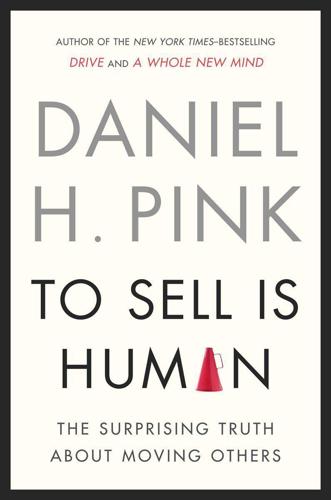
To Sell Is Human: The Surprising Truth About Moving Others
by
Daniel H. Pink
Published 1 Dec 2012
When sellers know more than buyers, buyers must beware. It’s no accident that people in the Americas, Europe, and Asia today often know only two words of Latin. In a world of information asymmetry, the guiding principle is caveat emptor—buyer beware. Akerlof’s provocative thought piece recast how economists and others reckoned with individual transactions and entire markets. So with this example as a model, let’s try another intellectual finger exercise. Imagine a world not of information asymmetry, but of something closer to information parity, where buyers and sellers have roughly equal access to relevant information. What would happen then?
…
But the only way to truly influence others is to adopt “a frame of mind and heart that constantly seeks mutual benefit in all human interactions.”10 Because of Fisher’s and Covey’s influence, “win-win” has become a fixture in organizations around the world, though often more in parlance than in practice. One explanation for the disconnect between word and deed goes back to the upheaval I described in Chapter 3. Under conditions of information asymmetry, results frequently are win-lose. After all, when I know more than you, I can get what I want by beating you. And since information asymmetry was the defining condition of sales for so long, our muscle memory often takes us in that direction. But with the emergence of information parity (or at least something close to it), those instincts, developed for a different environment, can send us down the wrong path.
…
Kowalski’s name, along with a reminder in his calendar to call him, and moves to the next name on this list. “After the easy ones,” Girard writes, “there are many Kowalskis, if you keep searching.”8 That Girard found enough clueless Kowalskis to become the world’s greatest salesman—and that he remains out and about teaching sales skills—might seem to validate that information asymmetry and the ignoble tactics it allows are alive and well. But there’s one more thing you should know about Joe Girard. He hasn’t actually sold a car since 1977. He quit the business more than three decades ago to teach others how to sell. (The Deloitte & Touche audit his office sent me verifying his record is dated 1991 and covers a fifteen-year period beginning in 1963.)

When Free Markets Fail: Saving the Market When It Can't Save Itself (Wiley Corporate F&A)
by
Scott McCleskey
Published 10 Mar 2011
E1BAPP01 06/16/2010 172 16:33:47 & Page 172 Appendix 1 INFORMATION ASYMMETRIES ‘‘Information asymmetry’’ is simply an impressive way to say that one party to a deal knows more about the thing being bought or sold than the other (so impressive that it won three economists the Nobel Prize in 2001). If you have ever bought anything on eBay, you have been on the receiving end of an information asymmetry (hopefully without an unhappy ending). The clearest embodiment of asymmetric information is insider trading. Someone knows that ABC Corporation is going to acquire XYZ, Inc. for a share price nicely above the current price, so he goes in with both feet and rakes it in with both hands (hands that, we would hope, will end up in cuffs). There are some wonks who would assert that this should not be illegal, since it is simply a manifestation of an efficient market reflecting all known information in the market price, even if that information is not known by the whole market.
…
Informational disadvantages do not appear solely in the process of drafting regulation. They are also a part of the market—a common one if not a natural one. These so-called information asymmetries present regulatory challenges of their own, from a fairness and an efficiency point of view. 1 Rachel Beck, ‘‘Lobbyists Influence Financial Reform,’’ Associated Press, October 17, 2009. E1BAPP01 06/16/2010 172 16:33:47 & Page 172 Appendix 1 INFORMATION ASYMMETRIES ‘‘Information asymmetry’’ is simply an impressive way to say that one party to a deal knows more about the thing being bought or sold than the other (so impressive that it won three economists the Nobel Prize in 2001).
…
If a firm’s research department concludes that ABC shares will go down based on its own analysis but then recommends purchasing the shares to its customers, the practice is better termed a conflict of interest (also onerous) rather than an information asymmetry. It should be stressed that an act is not always illegal or unethical simply because it is based on information asymmetry. Financial markets are the same as the markets for puppies or houses or life insurance: One side has a better understanding of the quality of the products or the risk to the insurer than the other. But since it is harder to return a toxic asset than a refrigerator whose light will not turn on, regulators seek to identify those that cross the line into unfair transactions, and to level the field.

Spies, Lies, and Algorithms: The History and Future of American Intelligence
by
Amy B. Zegart
Published 6 Nov 2021
The root causes lie deeper, in the informational environment, incentive structure, and institutional dynamics that are unique to intelligence. Information Asymmetry If you’ve ever taken your car to a mechanic, you’ve experienced one of the biggest oversight challenges: information asymmetry. Whenever one party relies on another to get something done, there’s a risk that things go awry. The mechanic overcharges. The car still isn’t fixed properly. Maybe the mechanic is dishonest, or careless, or overworked, or well intended but badly trained. Whatever the reason, you’re disappointed. Information asymmetry is a big part of the problem. One side knows much more than the other and can take advantage of the situation.69 The mechanic knows you have no idea how to fix the car or what it should cost.
…
North Korea has been such a hard intelligence target, as late as 2009, the CIA was building its dossier on Kim through the second-hand reports of a sushi chef.18 South Africa is the only country that has ever developed a nuclear arsenal and then voluntarily dismantled it.19 But that’s not a generalizable case, either; at the time, apartheid was crumbling and the outgoing White regime feared putting the bomb in the hands of a Black government. While sports analysts can estimate this year’s outcomes by leveraging literally thousands of data points, nuclear analysts trying to mine history for insights about Iran have a grand total of ten unique cases over seventy-five years. ASYMMETRIC INFORMATION The second factor making some things easier to estimate than others is asymmetric information. In sports, the same information is generally available to everyone. Coaches may have inside knowledge about the mood of their team or how good they looked in practice, but critical information is in the open; nobody is hiding this year’s rankings or a season-ending injury.
…
The only real limiting factor to obtaining data is time—how much of it you want to spend watching ESPN or digging through statistics. In geopolitics, the same information is not available to everyone, regardless of how much time they have. Intelligence is in the business of unlocking other people’s secrets and protecting our own. Asymmetric information is the name of the game. And in a world of asymmetric information, prediction is much more difficult and miscalculation much more likely. Douglas MacArthur had some intelligence about China’s troop movements and willingness to intervene in the war. But he found out too late that it wasn’t the full picture. On October 15, 1950, just as MacArthur was reassuring President Truman that China “would have the greatest difficulty of getting more than 50 thousand across the river,” tens of thousands of Chinese forces were secretly doing just that.20 By October 19, 260,000 Chinese fighters were hiding in the Korean mountains.

High-Frequency Trading: A Practical Guide to Algorithmic Strategies and Trading Systems
by
Irene Aldridge
Published 1 Dec 2009
When the quoting dealer receives order flow that he suspects may come from an informed trader and may leave the dealer at a disadvantage relative to the market movements, the dealer increases the spread he quotes in order to compensate himself against potentially adverse uncertainty in price movements. As a result, the wider the quoted bid-ask spread, the higher the dealer’s estimate of information asymmetry between his clients and the dealer himself. Given that the dealer has the same access to public information as do most of the dealer’s clients, the quoted bid-ask spread may serve as a measure of asymmetric information available in the market at large at any given point in time. Effective Bid-Ask Spread The effective bid-ask spread is computed as twice the difference between the latest trade price and the midpoint between the quoted bid and ask 147 Trading on Market Microstructure prices, divided by the midpoint between the quoted bid and ask prices.
…
As the order flow from informed traders to the market maker conveys information from traders to the market maker, the subsequent I 145 146 HIGH-FREQUENCY TRADING changes in the bid-ask spread may also convey information from the market maker to other market participants. This chapter describes information-based microstructure trading strategies. MEASURES OF ASYMMETRIC INFORMATION Asymmetric information present in the markets leads to adverse selection, or the ability of informed traders to “pick off” uninformed market participants. According to Dennis and Weston (2001) and Odders-White and Ready (2006), the following measures of asymmetric information have been proposed over the years: r r r r r Quoted bid-ask spread Effective bid-ask spread Information-based impact Adverse-selection components of the bid-ask spread Probability of informed trading Quoted Bid-Ask Spread The quoted bid-ask spread is the crudest, yet most readily observable measure of asymmetric information.
…
According to Dennis and Weston (2001) and Odders-White and Ready (2006), the following measures of asymmetric information have been proposed over the years: r r r r r Quoted bid-ask spread Effective bid-ask spread Information-based impact Adverse-selection components of the bid-ask spread Probability of informed trading Quoted Bid-Ask Spread The quoted bid-ask spread is the crudest, yet most readily observable measure of asymmetric information. First suggested by Bagehot (1971) and later developed by numerous researchers, the bid-ask spread reflects the expectations of market movements by the market maker using asymmetric information. When the quoting dealer receives order flow that he suspects may come from an informed trader and may leave the dealer at a disadvantage relative to the market movements, the dealer increases the spread he quotes in order to compensate himself against potentially adverse uncertainty in price movements.

Networks, Crowds, and Markets: Reasoning About a Highly Connected World
by
David Easley
and
Jon Kleinberg
Published 15 Nov 2010
In the case of the used-car market, however, each seller of a used car knows something about his or her own car — its quality — that potential buyers do not know. This is an inherent feature of how the market works: there is asymmetric information. In Chapter 17 we studied self-fulfilling expectations equilibria in settings without asymmetric information. In the rest of this chapter, we add asymmetric information to the picture; this turns out to be a basic ingredient in the way that beliefs about endogenous events can manifest themselves in markets. There is a fundamental reason for this: in many settings where buyers and sellers interact, one side of the market has better information about the goods or services being traded than the other side does.
…
But just as in our earlier examples, we see how socially undesirable outcomes can occur in the market when there are imbalances in information. The information asymmetry we have focused on in the market for health insurance leads, just as in case of used cars or employment, to a type of adverse selection. Insurance companies cannot select for a population consisting only of healthy individuals; rather, if anyone buys insurance at all, the only thing one can be sure of is that it will be bought by those who are less healthy. There is another type of information asymmetry that occurs in the market for health insurance that we have so far ignored in our discussion.
…
If these actions are not observable to the insurance company then we have a new source of information asymmetry, since each individual knows more about his future behavior than the insurance company does. Once an individual purchases health insurance, his incentive to undertake costly actions to maintain his health is reduced, since he no longer bears the full cost of poor health. This introduces an effect known as moral hazard: when you’re shielded from the full cost of your potential bad behavior, you have less incentive to avoid engaging in it. Information Asymmetry in Trading and the Stock Market. It is useful to reflect further on these examples in light of one of the basic lessons of this chapter: that in any trade, each trader should ask why whoever is on the other side of the trade wants to make the trade.

The Plundered Planet: Why We Must--And How We Can--Manage Nature for Global Prosperity
by
Paul Collier
Published 10 May 2010
Somehow, the copper companies kept failing to make any net profits: large revenues were always offset by large expenses. Information asymmetries and corruption may have found their apogee in the Democratic Republic of the Congo. In October 2009 the Financial Times reported that out of gold exports estimated to be around a billion dollars, the government was capturing revenues of only $37,000. When I raised the issue with the Minister of Finance he doubted the accuracy of the numbers but agreed that there was a massive problem of smuggling. The information asymmetry between tax authorities and a company can be narrowed if the authorities hire specialist accountancy firms to audit the company’s books.
…
Leveling the Playing Field That seemingly simple example of a corrupt official being bribed by a foreign company contained a second and more subtle type of problem. The corrupt minister was probably himself being ripped off by the company because he was on the wrong end of the asymmetric information problem that I introduced in the previous chapter. He simply did not know as much as the company offering the bribes about the true value of the contracts he was awarding. There is an institutional technology for overcoming the asymmetric information problem: selling the extraction rights through auction. Auctions can be complicated, but they can level the playing field between a savvy company and an ignorant government.
…
The Chinese deals, negotiated in secrecy, had the potential to create all the problems we have encountered: corruption, asymmetric information, and time-inconsistency. However, finger-wagging at China has met with the predictable response. By 2008 the EITI executive was sufficiently concerned to ask me to suggest an alternative approach, one I will outline in the next chapter. Why Not Nationalize Resource Extraction? If resource-extraction companies have ripped off governments through a cocktail of corruption, asymmetric information, and discounts that reflect the time-consistency problem, and if prospecting is in any case best financed by government, why not let government handle the exploitation of natural assets?
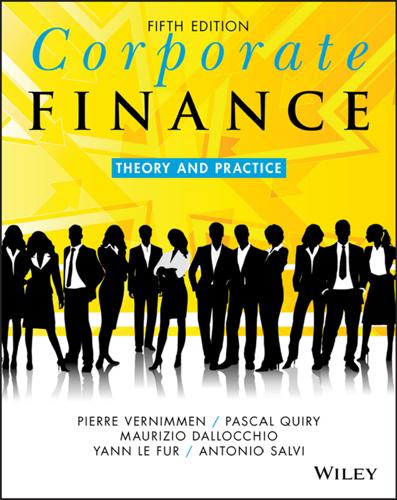
Corporate Finance: Theory and Practice
by
Pierre Vernimmen
,
Pascal Quiry
,
Maurizio Dallocchio
,
Yann le Fur
and
Antonio Salvi
Published 16 Oct 2017
It examines the incentives that encourage good managers to issue the right signals and discourage managers of ailing companies from using these same signals to give a misleading picture of their company’s financial health. In sum, information asymmetry may lead to a share being priced at less than its objective value, with two consequences: investments are not maximised because the cost of financing is too high; the choice of financing is skewed in favour of sources (such as debt) where there is less information asymmetry. Stephen Ross initiated the main studies in this field in 1977. 3. Agency theory Agency theory says that a company is not a single, unified entity.
…
Signal and agency theory were developed to make up for the shortcomings of the theory of markets in equilibrium. Signal theory is based on the assumption that information is not equally available to all parties at the same time, and that information asymmetry is the rule. This can have disastrous consequences and result in very low valuations or a suboptimal investment policy. Accordingly, certain financial decisions, known as signals, are taken to shake up this information asymmetry. These signals can, however, have a negative financial impact on the party who initiates them if they turn out to be unfounded. Agency theory calls into question the claim that all of the stakeholders in the company (shareholders, managers, creditors) have a single goal — to create value.
…
It is also the reason why every year in the US, the UK, France and many other countries, top managers and all directors must disclose the number of shares they hold or control in the companies they work for or of which they are board members. Section 33.4 Information asymmetries and the pecking order theory Having established that information asymmetry carries a cost, our next task is to determine what type of financing carries the lowest cost in this respect. The uncontested champion is, of course, internal financing, which requires no special procedures. Its advantage is simplicity. Debt comes next, but only low-risk debt with plenty of guarantees (pledges) and covenants restricting the risk to creditors and thus making it more palatable to them.

Humans as a Service: The Promise and Perils of Work in the Gig Economy
by
Jeremias Prassl
Published 7 May 2018
Algorithmic control is exercised in myriad ways, often eschewing direct orders or explicit instructions.14 Alex Rosenblat and Luke Stark’s study of Uber’s control mechanisms demonstrates how crowdwork conditions can easily be ‘shaped by the company’s deployment of a variety of design deci- sions and information asymmetries via the application to effect a “soft control” over workers’ routines’.15 Even though instructions are ‘carefully designed to be indirect, presumably to avoid the appearance of a company policy’,16 they are incredibly powerful: Individualized metrics . . . foster a ‘highly individualized sense of responsibility for one’s own job stability’, even though drivers have limited control over how passengers interact with the rating system or how Uber assesses it.
…
There are two closely related challenges to the on-demand economy’s claim to have fostered a revolutionary culture of innovation: first, that many of its supposedly innovative elements are, in fact, simply aimed at entrench- ing existing operators against future competitors; and second, that platforms’ business models might in fact disincentivize the investment in research, development, and working conditions that spurs innovation. Pernicious Innovation Take rating algorithms as an example. The dramatic increase in information available about workers and consumers alike has gone a long way towards alleviating the information asymmetries that traditionally plague two-sided markets. The case for productivity-enhancing innovation looks straightfor- ward: extensive information allows for easy matching of supply and demand, increasing service provision for platform users, and income for workers. Upon closer inspection, however, not all is quite as it seems.
…
The authors graciously concede that ‘because the inter- ests of digital, third-party platforms are not always perfectly aligned with the broader interests of society, some governmental involvement or oversight is likely to remain useful’: ibid. 21. Ibid., 130–1. In their worked example of airbnb (a property rental business), they suggest: [delegating] regulatory responsibility relating to information asymmetry to plat- forms like Airbnb (whose interests are naturally aligned with the global aggregation of information and the mitigation of adverse selection and moral hazard), and let [local housing associations] play a key role in the regulation of local externalities, as the guest-noise and strangers-in-the-building externalities are typically local and primarily affect [the association’s] membership

Machine, Platform, Crowd: Harnessing Our Digital Future
by
Andrew McAfee
and
Erik Brynjolfsson
Published 26 Jun 2017
Knowledge differentials, unfortunately, kept these transactions from happening. The idea that such “information asymmetries” are harmful not just for the less informed party but also for markets overall was formalized by economist George Akerlof in his classic 1970 paper “The Market for ‘Lemons.’ ” Akerlof showed that the used-car market could suffer greatly because of the existence of “lemons”‡—apparently fine cars that, in fact, had bad mechanical problems. Sellers know which cars are lemons but most buyers don’t, and this information asymmetry will keep the used-car market small and inefficient unless it’s addressed by, for example, having dealers offer money-back guarantees to customers who feel that they’ve been cheated.
…
Akerlof showed that in extreme cases, information asymmetry could lead to complete market breakdown and the end of trade. This insight was so counterintuitive and radical at the time that his paper was repeatedly rejected from the top journals in economics, with one referee explaining that the journal “did not publish papers on subjects of such triviality” while another took the opposite tack, writing “if this paper were correct, economics would be different,” so it couldn’t be correct. But Akerlof was right about the critical importance of information asymmetries—economics was different—and ultimately he was recognized with a Nobel prize for this work.
…
But Akerlof was right about the critical importance of information asymmetries—economics was different—and ultimately he was recognized with a Nobel prize for this work. Few information asymmetries are deeper or more important than the one that exists between someone who wants a ride across town and a stranger offering to provide that ride in a private car. Even if most drivers are completely honest and safe, the financial and personal risk of getting a bad one appears unacceptably high. Unless this inherent information asymmetry was overcome, the market for person-to-person rides would never take off. But by March of 2016, Uber was handling 50 million rides per month in the United States. The great majority of Uber’s ride suppliers were not professional chauffeurs; they were simply people who wanted to make money with their labor and their cars.
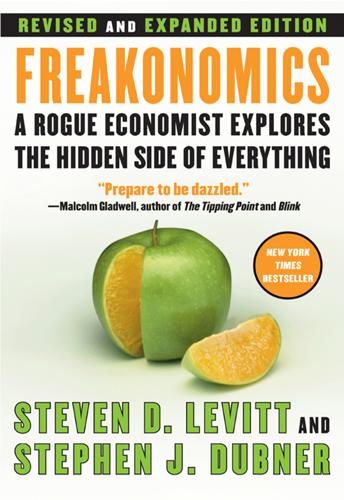
Freakonomics: A Rogue Economist Explores the Hidden Side of Everything
by
Steven D. Levitt
and
Stephen J. Dubner
Published 11 Apr 2005
By then, the suspicion of lemonness will have faded; by then, some people will be selling their perfectly good year-old cars, and the lemon can blend in with them, likely selling for more than it is truly worth. It is common for one party to a transaction to have better information than another party. In the parlance of economists, such a case is known as an information asymmetry. We accept as a verity of capitalism that someone (usually an expert) knows more than someone else (usually a consumer). But information asymmetries everywhere have in fact been gravely wounded by the Internet. Information is the currency of the Internet. As a medium, the Internet is brilliantly efficient at shifting information from the hands of those who have it into the hands of those who do not.
…
January 8, 2006 Our book Freakonomics includes a chapter titled “How Is the Ku Klux Klan Like a Group of Real-Estate Agents?” This chapter was our effort to bring to life the economic concept known as information asymmetry, a state wherein one party to a transaction has better information than another party. It is probably obvious that real-estate agents typically have better information than their clients. The Klan story was perhaps less obvious. We argued that the Klan’s secrecy—its rituals, made-up language, passwords and so on—formed an information asymmetry that furthered its aim of terrorizing blacks and others. But the Klan was not the hero of our story. The hero was a man named Stetson Kennedy, a white Floridian from an old-line family who from an early age sought to assail racial and social injustices.
…
Unless you decide to spend $2,300 for “The Last Hole” (a casket with golf scenes) or “Memories of the Hunt” (featuring big-racked bucks and other prey) or one of the much cheaper models that the funeral director somehow failed even to mention. The Internet, powerful as it is, has hardly slain the beast that is information asymmetry. Consider the so-called corporate scandals of the early 2000s. The crimes committed by Enron included hidden partnerships, disguised debt, and the manipulation of energy markets. Henry Blodget of Merrill Lynch and Jack Grubman of Salomon Smith Barney wrote glowing research reports of companies they knew to be junk.

Virtual Competition
by
Ariel Ezrachi
and
Maurice E. Stucke
Published 30 Nov 2016
Economists have long recognized that information is a key component in promoting a competitive market, which in turn promotes consumer welfare.3 Indeed, the undistorted flow of information is one of the conditions of the theoretical economic model of “perfect competition,” under which consumers benefit from lower prices, wider choice, and better quality.4 Market transparency, the OECD noted, “increases efficiency by reducing customers’ search costs and allowing suppliers to benchmark their performance with that of their competitors.”5 Market transparency, besides helping buyers, helps sellers “to save costs by reducing their inventories, enabling quicker delivery of perishable products to consumers, or dealing with unstable demand etc.”6 In general, increased transparency ameliorates the problems of “information asymmetries.”7 This is when one party knows more key information than the other party (such as the seller of a used car who knows more about the car’s problems than the buyer).8 As the flow of information increases and becomes more balanced, sellers and buyers are more likely to make educated decisions, and markets become more efficient.9 We often see the benefits of increased transparency when we shop online.
…
Rarely will you and others simultaneously search on the The Rise of “Almost Perfect” Behavioral Discrimination 113 same website for the same room and communicate your findings. Thus, consumers may not know when pricing is dynamic, discriminatory, or both. Where Does the Power Reside? The power in our scenario favors those who hold and sell our personal data. These informational asymmetries support near-perfect behavioral discrimination. The first asymmetry is between the discriminating firm and its customers. The firm collects data on its customers and designs the algorithm. The firm may not know exactly how its pricing algorithm derived a particular price for a particular customer (see Chapters 7 and 8), but the firm does know the algorithm’s ultimate strategy (namely to increase profits by better discrimination).
…
Nor, in most countries, do individuals as of this book’s publication date have the right to view the data, and to verify or contest the data’s accuracy. Nor can we challenge the accuracy of categories in which we are placed. We may know that we are getting a lot of ads—such as substance abuse, lowerquality credit cards, or checking our prison records—but not know why these ads are directed at us.56 The second level of informational asymmetry is between the firm and its competitors. Because perfect price discrimination will remain elusive, firms will seek to refine their categorizations of consumers. Not all the 114 Behavioral Discrimination firms will have the same data. Firms with a data advantage will likely have better algorithms that can better segment customers, and for each group they will likely be better at identifying the group’s average reservation price (and a narrower distribution of individual reservation prices).

The Captured Economy: How the Powerful Enrich Themselves, Slow Down Growth, and Increase Inequality
by
Brink Lindsey
Published 12 Oct 2017
Some more quality-conscious (and presumably higher-income) consumers are better off, but some more price-conscious (and presumably lower-income) consumers are worse off.5 Even if it works as well as it can, occupational licensing is thus regressive in its distributional consequences. Meanwhile, licensing regimes and the requirements they impose are all too often highly arbitrary. If the existence of occupational licensing were really a response to underlying market failures (e.g., information asymmetries) that made consumers especially vulnerable to abuse, the same types of occupations would be regulated in state after state. In reality, the scope of occupational licensing is all over the place. Although more than 1,100 different occupations are licensed at the state level, the highest number of occupations licensed in any one state is 177 (California takes this dubious prize).6 This fact strongly suggests that factors other than industry characteristics determine who gets regulated.
…
The problem of narrow interests’ advantages in organizing and wielding influence is always with us, but it is especially severe in the cases at hand where the interests are so flush with resources. Furthermore, we identify four additional sources of bias that stack the deck even more in favor of the rent-seekers. The first source of bias is information asymmetries, in which the government’s dependence on regulated interests for policy-relevant information makes it especially open to capture. The second involves the exploitation by rent-seekers of a favorable “policy image” that short-circuits appropriate scrutiny of their self-serving claims. The third source of bias concerns the venue of decision making: when policies are crafted in obscure or insular settings that discourage monitoring and participation by outsiders, it becomes all the more likely that policymaking will be captured by insiders.
…
The judges gave virtually identical scores to the Texas and Louisiana arrangements; moreover, the licensed Louisiana florists and unlicensed Texas florists differed little in their ratings.12 Another study found that Florida’s relaxation of licensing restrictions on roofers following Hurricanes Frances and Katrina did not reduce the quality of roofing services despite the fact that asymmetric information problems, frequently cited to justify licensing, could be expected to be especially severe in a post-crisis environment.13 II THE PRICE OF INCUMBENT PROTECTION Occupational licensing may not offer much in the way of consumer protection, but it succeeds admirably as protectionism, shielding incumbent firms from competition and thereby boosting their incomes at consumers’ expense.
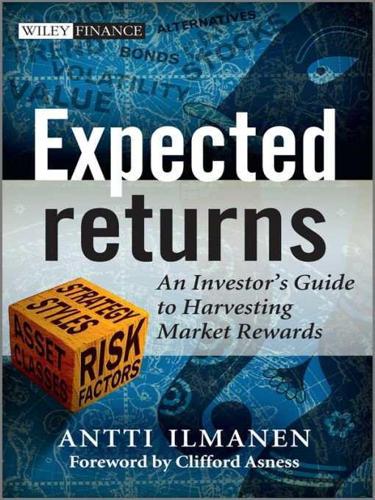
Expected Returns: An Investor's Guide to Harvesting Market Rewards
by
Antti Ilmanen
Published 4 Apr 2011
Liquidity differences can often be explained by varying degrees of information asymmetry—a key determinant of illiquidity that can in extreme situations cause market breakdowns. At such times, the credibility of information about market prices—which comes from markets being continuously traded with transparent pricing—can influence asset valuations as much as information about economic fundamentals. General confidence in the financial system and in the health of counterparties supports the liquidity of all assets but especially that of more complex and opaque assets; the loss of such confidence raises concerns about information asymmetry and can result in virtual closing of more fragile markets.
…
These illiquidity-related premia appear to raise the expected returns of certain alternative asset classes as well as less liquid pockets of traditional asset classes, such as corporate bonds and small-cap equities. Illiquidity premia are hardly constant over time; they apparently were bid down to near zero by early 2007 and then rose sky high during the 2008 liquidity drought. Disagreement and information asymmetries Another CAPM assumption—homogeneous expectations—is obviously unrealistic, but this was a very convenient modeling device. In the past decade, disagreement models showed how differences in investor beliefs can influence financial markets through several channels: gradual information flow, limited attention, and heterogeneous views.
…
On supply–demand factors I cite Scholes (1972) and Lamont–Thaler (2003), on index inclusion effects Shleifer (1986) and Wurgler–Zhuravskaya (2002), on inflation-linked bonds D’Amico et al. (2010), on market frictions Garleanu–Pedersen (2009a), on liquidity Acharya–Pedersen (2005), on disagreement Hong–Stein (2007), and on information asymmetries Vayanos–Woolley (2008). On the efficient markets hypothesis, I recommend Fama’s surveys (1970, 1991, 1998), on extensions Grossman–Stiglitz (1980) and Lo (2004), on the many criticisms Soros (2008), Akerlof–Shiller (2009), and Fox (2009), and on defense Rubinstein (2001), Cochrane (2007), and Ball (2009). 6 Behavioral finance • Behavioral finance states that investor irrationality causes systematic mispricings that rational arbitrageurs cannot fully offset due to scarce capital and riskiness of “arbitrage”
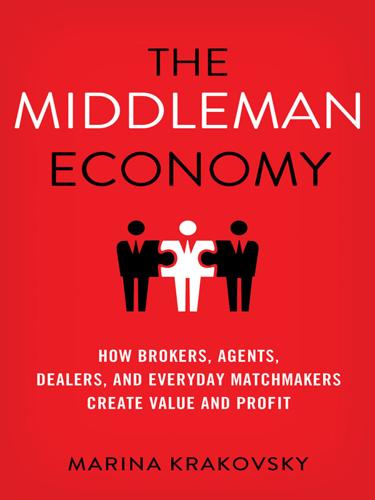
The Middleman Economy: How Brokers, Agents, Dealers, and Everyday Matchmakers Create Value and Profit
by
Marina Krakovsky
Published 14 Sep 2015
Yet there’s plenty of material for such an education because lots of social scientists have studied, from one angle or another, the questions of how middlemen provide value and profit from their roles between buyers and sellers. For example, economic theory has much to say about transaction-cost economics, two-sided markets, and intermediaries’ ability to reduce information asymmetries between buyers and sellers. In particular, game theory informs our understanding of repeated interactions, reputations, shirking and cheating, and third-party enforcement. Social psychology and experimental economics show how acting on behalf of others affects people’s behavior and impressions.
…
The chapter on Risk Bearers showed that we have always relied on middlemen to even out ups and downs of uncertain demand and supply; today’s “Uber of” this or that is just the latest technological application of this basic role. The chapters on Certifiers and Enforcers showed how effective middlemen reduce informational asymmetries between buyers and sellers. The Insulator chapter showed how a middleman can act as an equalizer, righting the balance of power between the less experienced players on one side and the experts on the other or enabling the novices to tout their merits and ask for more of what they want than they could comfortably do on their own.
…
Therefore, to profit from risk, middlemen, like successful insurers, must be astute at teasing apart these two types of risk: •Internal risk. This is my term for what finance scholars call counterparty risk, or risk due to the characteristics or actions of a trading partner. In other words, internal risks are risks caused by asymmetric information (adverse selection and moral hazard). Risk-bearing middlemen should avoid internal risk because it can only harm them and their partners on the other side. That’s why, for example, a lender should be wary of lending money to someone with no job and no assets. •External risk. This is what economists call exogenous risk and what lawyers call acts of God or force majeure: risks that trading partners cannot control.

Cogs and Monsters: What Economics Is, and What It Should Be
by
Diane Coyle
Published 11 Oct 2021
The 1980s privatisation of formerly nationalised industries is just one example. Even though these industries are still regulated by the government, the intellectual framework for this regulation is, as Turner described, the correction of a well-defined ‘market failure’, a specified reason such as an externality or information asymmetry for a breach in the general principle of the desirability of markets. The boundaries of the economic activities that take place in the public rather than the private sector clearly vary from country to country, suggesting there is room for debate about whether the market can and should organise, say, the supply of water and electricity, or rail and air services, or health care, in part or as a whole.
…
We might now reclassify communications as hard-to-measure given the scale of technological advance, while manufacturing has declined further as a share of output. The ‘measurable’ share of the US economy was down to 30 percent by 1990 (from 49 percent in 1947), Griliches reckoned; it is 23 percent now (Coyle 2021). How should we define price, quantity, and quality in these contexts of ever more intangible output, variety explosion, information asymmetry? Is a smartphone app a low-price camera combined with photo processing? Should we be trying to measure the price of cameras or the price of capturing and storing an image? How should we account for the fact that it is the content of 1MB of data that has value, not the number of bits or the energy use?
…
As Chapter Five concluded, elements of the necessary new analytical framework are available in the economic literature—much of it provided by a crop of Nobel laureates such as Krugman (1991), Romer (1994), Stiglitz (2014, with B Greenwald), and Tirole (1988, 2016). Their work has shown different limitations of the fundamental assumptions underpinning the bias toward market solutions. I do not know what the next paradigm in economics will look like, but it will have as default assumptions increasing returns to scale, information asymmetries, pervasive network effects and externalities, principal-agent relations, interaction between decision-makers—all the many characteristics of the digital economy that do feature in many economic models and areas of specialism, but have not been integrated, or mainstreamed to the extent they shape the current climate of ideas.

The Sharing Economy: The End of Employment and the Rise of Crowd-Based Capitalism
by
Arun Sundararajan
Published 12 May 2016
As platforms like Airbnb, Lyft, Getaround, and Etsy disrupt old economic systems rooted in firm-to-consumer interactions and individual ownership, we are witnessing myriad regulatory issues. These issues, discussed in my 2015 University of Chicago Law Review paper that I coauthored with Molly Cohen, include new solutions to old forms of information asymmetry, new and old “externalities,” and an increasingly blurred boundary between professional and personal modes of exchange.10 Information Asymmetry: When One Party Knows More than the Other Most forms of peer-to-peer exchange are characterized by asymmetric information—knowledge relevant to the intended exchange that is possessed by one trading party but not by the other: for example, a passenger who enters a taxicab may not know the qualifications or intentions of its driver, or a hotelier knows more about the quality of her short-term accommodation than a potential guest does.
…
Well, the assertion that new marketplaces will result in perfect competition and depress earning levels focuses on one older aspect of economic theory while ignoring a different aspect that has gained a great deal of attention in the last 40 years: that of “information asymmetry.” As I defined and discussed in chapter 6, sharing economy platforms can reduce many forms of information asymmetry. The predictions of economic theory are that such reductions will increase, rather than reduce, wages over time. Let me explain the consequences of information asymmetry, and in particular, the effect of “adverse selection” further by appealing to the example of used car markets that George Akerlof famously used in his Nobel Prize–winning work.
…
These issues, discussed in my 2015 University of Chicago Law Review paper that I coauthored with Molly Cohen, include new solutions to old forms of information asymmetry, new and old “externalities,” and an increasingly blurred boundary between professional and personal modes of exchange.10 Information Asymmetry: When One Party Knows More than the Other Most forms of peer-to-peer exchange are characterized by asymmetric information—knowledge relevant to the intended exchange that is possessed by one trading party but not by the other: for example, a passenger who enters a taxicab may not know the qualifications or intentions of its driver, or a hotelier knows more about the quality of her short-term accommodation than a potential guest does. Similarly, a borrower knows more about her creditworthiness than a lender does. These and other forms of information asymmetry can lead to a lower level of economic activity than society might find desirable. Part of this could be due to uncertainty about quality—I’m not going to get into a taxi unless I’m sure the driver is reliable and won’t rip me off. Or information asymmetry can lead to the situation of “adverse selection”: if there’s no good way of distinguishing between lower and higher quality providers, then a customer is likely to be willing to pay, on average, a price commensurate with the value they’d get from an average quality provider.
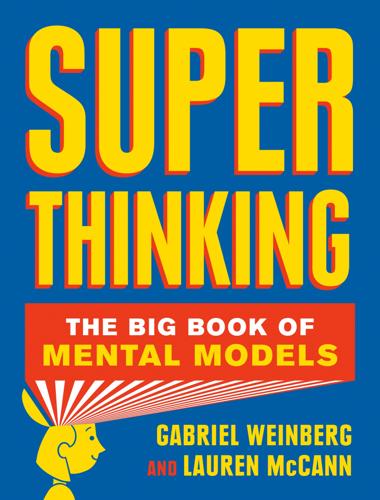
Super Thinking: The Big Book of Mental Models
by
Gabriel Weinberg
and
Lauren McCann
Published 17 Jun 2019
It is also not always completely transparent to principals how agents are compensated, which might cause principals to make different decisions than they would if they had the full picture. If you knew that your financial adviser was getting paid to recommend a financial product to you, you might be less likely to invest in it. Disclosure laws and the increase in open information via the internet can reduce the effects of asymmetric information. Sometimes, though, the consumer has the upper hand when it comes to asymmetric information. This is often the case with insurance products, where the person or company applying for insurance usually knows more about their own risk profile than the insurance company does. When parties select transactions that they think will benefit them, based at least partially on their own private information, that’s called adverse selection.
…
This helps keep premiums from rising too high, making care more affordable for everyone. That’s why the ACA mandate was so important to the viability of the overall system. The mental models from the last section (tragedy of the commons, externalities, etc.) and those from this section (moral hazard, information asymmetry, etc.) are signs of market failure, where open markets without intervention can create suboptimal results, or fail. To correct a market failure, an outside party must intervene in some way. Unfortunately, these interventions themselves can also fail, a result called government failure or political failure.
…
Department of, 97 homelessness, 22 homeostasis, 110–12, 194 honeypot, 234 hornet’s nest, 51–52 horse racing, 91, 286 hospital rankings, 50 hotels, 217, 228 house, see home Housing First, 22 Houston, Tex., 192 Hyman, Ray, 62 hydra effect, 51, 52 hyperbolic discounting, 87 hypothesis, 136, 161 alternative, 163, 164, 166, 167 null, 163, 164 see also experiments hysteresis, 194 IBM, 241 iCloud, 97 idea maze, 301 ignorance, veil of, 21 “I Know an Old Lady” (Bonne and Mills), 58 immigration, 15–16 immune system, 194 imposter syndrome, 268–72 incentives, 55 perverse, 50–51, 54 income, U.S. household, 148–49, 191 independence, 205 India, 50–51, 235 individualist versus collectivist, in organizational culture, 274 inertia, 102–3, 105–8, 110, 112, 113, 119, 120, 129, 290, 296 infantry, in organizations and projects, 253 inflation, 179–80, 182–83 inflection point, 115 Influence: The Psychology of Persuasion (Cialdini), 215 influence models, 215, 220, 221, 226, 229, 230, 289 authority, 219–20, 226 commitment, 216, 220 liking, 216–17, 220 reciprocity, 215–16, 220, 222, 229, 289 scarcity, 219, 220 social proof, 217–20, 229 information asymmetry, 45–47 information overload, 60, 146 Ingham, Harrington, 196 in-group favoritism, 127, 217 Inkster, James A., 91 innovations, 302 disruptive, 308, 310–11 innovators, in technology adoption life cycle, 116–17, 289, 311 Innovator’s Dilemma, The (Christensen), 310 insincerity, manipulative, 264 Instagram, 220, 247, 291, 310 instant gratification, 87 institutional knowledge, 257 insurance, 43, 46, 191 health, 42, 46, 47, 190 key person, 305 Intel, 308, 310 intelligence quotient (IQ), 138, 250–52 interest, compound, 69, 85 interest rates, 85, 182–83 internalizing, 41–42 internet, 290 messaging services, 119 introverts, 249–50 intuition, 30–31, 33, 132 invention, simultaneous, 291–92 inverse fallacy, 156–57 inverse thinking, 1–2, 291 investments, investors, 180–84, 192, 272, 288 cargo cult, 316 Invisible Armies (Boot), 239 iPad, 290 iPod, 296–97 IQ (intelligence quotient), 138, 250–52 Iraq, 196, 234, 243, 276 irreversible decisions, 61–62, 223–24 Iverson, Allen, 246 Jacobi, Carl, 1 James, LeBron, 246 Janz, Christoph, 298–99 Japan, 241 jelly beans, 169–71 Jobs, Steve, 64, 296–97 jobs to be done, 296, 299–300 John, Tommy, 83 Johnson, Magic, 246 jokes, 35–36 Jordan, Michael, 246 Journal of Experimental Psychology, 13, 17 Joy, Bill, 247 Joy’s law, 247, 248 judicial rulings, 63, 144 Jurassic Park, 121 justice, distributive versus procedural, 224–25 Justice, U.S.

Economics Rules: The Rights and Wrongs of the Dismal Science
by
Dani Rodrik
Published 12 Oct 2015
Work by Michael Spence, Joseph Stiglitz, and George Akerlof showed that these types of markets could exhibit a variety of distinctive features, including signaling (costly investment in behavior that has no immediate apparent benefit), rationing (refusal to provide a good or service, even at a higher price), and market collapse. This work earned these three economists a joint Nobel Prize in 2001 and spawned a huge literature that hums along to this day. As a result, we understand much better the workings of credit and insurance markets, where information asymmetries are rife.†† Today, economists are increasingly turning their attention to markets in which consumers do not behave fully rationally. This reorientation has produced a new field called behavioral economics, which attempts to integrate the insights of psychology with the formal modeling approaches of economics.
…
Depending on what we assume along these and many other dimensions, we have learned from decades of modeling that imperfect competition can produce a bewildering array of possibilities. More important, thanks to the transparency of the assumptions, we have also learned what each one of these outcomes is predicated on. In the 1970s, economists began to model another aspect of markets: asymmetric information. This is an important feature of real-world markets. Workers have a better sense of their ability than do employers. Creditors know whether they are likely to default or not, while lenders do not. Buyers of used cars do not know whether they’re buying a lemon, but sellers do. Work by Michael Spence, Joseph Stiglitz, and George Akerlof showed that these types of markets could exhibit a variety of distinctive features, including signaling (costly investment in behavior that has no immediate apparent benefit), rationing (refusal to provide a good or service, even at a higher price), and market collapse.
…
The irrelevance of sunk costs (payments already made that cannot be recouped) and the equivalence between financial costs and opportunity costs (the value of choices not exercised) do not hold under less than full rationality, to cite but two examples. Although grossly simplified, this telescopic account should give a sense of the expanding diversity of the profession’s explanatory models. We have moved beyond competitive models to imperfect competition, asymmetric information, and behavioral economics. Idealized, flawless markets have given way to markets that can fail in all sorts of ways. Rational behavior is being overlaid with findings from psychology. Typically, the expansion has its roots in empirical observations that seem to contradict existing models.
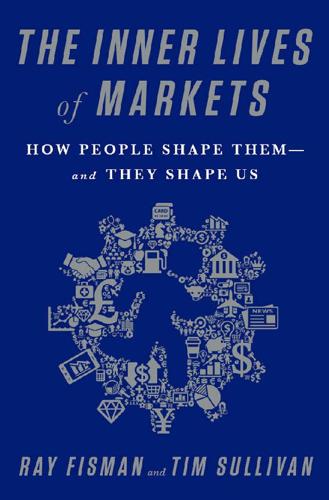
The Inner Lives of Markets: How People Shape Them—And They Shape Us
by
Tim Sullivan
Published 6 Jun 2016
Their imperfections notwithstanding, the advent of babysitter platforms is bad news for brick-and-mortar nanny placement services, whose businesses are surely suffering. But we’re still skeptical that any intermediary, however diligent, will overcome the anxieties of the modern helicopter parent. We doubt that day will ever arrive. Asymmetric information is dead? Long live asymmetric information. The Network Externalities of Ladies’ Night The calculation of how to set prices is a lot more complicated on platforms than in one-sided markets because they are defined by what economists call network externalities, where one person’s purchase makes the item more valuable for other would-be consumers.15 Obviously, this isn’t the case for groceries: the happiness I get from a box of Oreos isn’t affected by whether you prefer to spend your money on Oreos or chocolate-chip cookies or kale.
…
It’s why, despite their best efforts, no amount of antifraud efforts by Amazon or eBay or anyone else will rid the world of conmen. As long as there’s money to be made off easy marks, there will be operators able to separate fools from their money. And if somehow tomorrow morning we were to figure out a technology to end information asymmetry, someone else would figure out by tomorrow afternoon some way of making more of it. 4 THE POWER OF SIGNALS IN A WORLD OF CHEAP TALK FACE TATTOOS AND OTHER SIGNS OF HIDDEN QUALITIES When fifteen-year-old Robert Torres came home in 1977 with the letters “SF” tattooed on his left hand, his horror-struck mother, Frances Hernandez, asked him why on earth he’d gone and “marked [himself] for life.”
…
In fact, the story of eBay’s early days is partly about the perils of market transactions and how they undermine the fundamentalist vision of markets as the answer to all the world’s problems. They’re insights that are worth keeping in mind today, for internet commerce participants and entrepreneurs alike. But whatever problems eBay and others encountered initially, the tinkerers and innovators of Silicon Valley did prevail. While asymmetric information—when the seller knows more than the buyer—complicates the job of turning the economy into an internet bazaar, eBay and its e-commerce brethren have found many ways to get the market to work reasonably well. And as we’ll see, their successes have provided economists with yet more fodder for their model building and experiments—often from within the companies themselves.
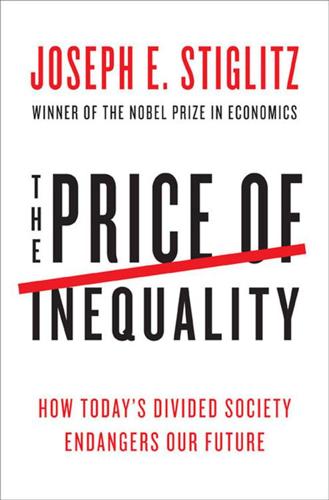
The Price of Inequality: How Today's Divided Society Endangers Our Future
by
Joseph E. Stiglitz
Published 10 Jun 2012
It was the eighth-largest corporate bankruptcy in U.S. history and the biggest failure by a securities firm since Lehman Brothers Holdings Inc. filed for Chapter 11 in September 2008. 10. While there may be some debate about when taking advantage of information asymmetries is unethical (reflected in the maxim “caveat emptor,” putting the obligation on the buyer to beware of the possibility of information asymmetries), there is no doubt that the banks stepped over the line. See the discussion in later chapters over the large fines paid by the banks for practices that were fraudulent and deceptive. 11. This predatory behavior took a number of forms.
…
Hoff, “Market Failures and the Distribution of Wealth: A Perspective from the Economics of Information,” Politics and Society 24, no. 4 (1996): 411–32; and Hoff, “The Second Theorem of the Second Best,” Journal of Public Economics 25 (1994): 223–42. 55. The exciting story is told in the bestseller by Dava Sobel, Longitude: The True Story of a Lone Genius Who Solved the Greatest Scientific Problem of His Time (New York: Walker, 1995). 56. Technically, the problems with incentive pay arise when there are information asymmetries. The employer doesn’t fully know the quality of the products produced by the worker (otherwise, he would specify that). In a trial, the judge and jury worry that the strength of an expert’s opinion might be affected if his compensation depended on the outcome of the trial. 57. Given this, one might ask, why are those in finance, supposedly experts in economics, so wedded to these distortionary incentive schemes.
…
Propublica maintained an active media oversight of the aftermath of the BP spill, including corruption in the clean-up process. See http://www.propublica.org/topic/gulf-oil-spill/. 5. R. H. Coase, “The Problem of Social Cost,” Journal of Law and Economics 3 (1960): 1–44. 6. This is especially the case when there are information asymmetries—where one party has easier access to information. If one group has less information about the harm than another (a common situation), then the more informed is in a better position to avoid the harm. Other market imperfections can also affect the efficiency of alternative assignments of property rights.

Willful: How We Choose What We Do
by
Richard Robb
Published 12 Nov 2019
I believed that values in credit markets were extraordinary. (Of course, some deals that appear lucrative from a distance are not; at the time I believed I knew which were which.) Yet I simply couldn’t beam my beliefs into investors’ heads. Gradually, I saw that investors’ reluctance had little to do with the usual factors: aversion to risk, information asymmetries, aversion to blame, aversion to ambiguity, herd mentality, or irrational fear. Investors could not fully adopt my conviction about any given opportunity before it disappeared. They could not act on a hunch that I (and others) might just be right. To do so, an investor would have to suspend her belief in reasonably efficient markets—usually, low asset prices signify risk, but not in the collapsing markets of 2008.
…
TWO Two Realms of Human Behavior 1. Kierkegaard, Either/Or, 163–164. 2. Becker, Economic Approach, 5. Neoclassical economics could be challenged on the assumption of perfect exchange, i.e., markets in equilibrium, and many have done so. Trading may break down due to heterogeneous goods and information asymmetries, imperfect performance on contracts, prices set via strategic bargaining rather than a Walrasian auctioneer, sheer deceit—you name it. In this case, observed behavior will fail to conform to neoclassical models and economists’ policy prescriptions will not fit the real world. See, e.g., Kohn, “Value and Exchange.”
…
See also mercy ambiguity effect, 24 American Work-Sports (Zarnowski), 191 Anaximander, 190 anchoring, 168 angel investors, 212–213n1 “animal spirits,” 169 Antipater of Tarsus, 134–135, 137 “anxious vigilance,” 73, 82 arbitrage, 70, 78 Aristotle, 200, 220n24 Asian financial crisis (1997–1998), 13 asset-backed securities, 93–95 asset classes, 75 astrology, 67 asymmetric information, 96, 210n2 authenticity, 32–37, 114 of challenges, 176–179 autism, 58, 59 auto safety, 139 Bank of New York Mellon, 61 Battle of Waterloo, 71, 205 Bear Stearns, 85 Becker, Gary, 33, 108–109 behavioral economics, 4, 10, 198–199 assumptions underlying, 24 insights of, 24–25 rational choice complemented by, 6 Belgium, 191 beliefs: attachment to, 51 defined, 50 evidence inconsistent with, 54, 57–58 formation of, 53, 92 persistence of, 26–28, 54 transmissibility of, 92–93, 95–96 Bentham, Jeremy, 127, 197–198 “black swans,” 62–64 blame aversion, 57, 72 brain hemispheres, 161 Brexit, 181–185 “bull markets,” 78 capital asset pricing model, 64 care altruism, 38, 104, 108–114, 115, 120, 135, 201 Casablanca (film), 120, 125 The Cask of Amontillado (Poe), 126–127 challenges, 202–203 authenticity of, 176–179 staying in the game linked to, 179–181 changes of mind, 147–164 charity, 40, 45–46, 119, 128 choice: abundance of, 172–174 intertemporal, 149–158, 166 purposeful vs. rational, 22–23 Christofferson, Johan, 83, 86, 87, 88 Cicero, 133–134 Clark, John Bates, 167 cognitive bias, 6, 23, 51, 147–148, 167, 198–199 confirmation bias, 200 experimental evidence of, 10–11, 24 for-itself behavior disguised as, 200–201 gain-loss asymmetry, 10–11 hostile attribution bias, 59 hyperbolic discounting as, 158 lawn-mowing paradox and, 33–34 obstinacy linked to, 57 omission bias, 200 rational choice disguised as, 10–11, 33–34, 199–200 salience and, 29, 147 survivor bias, 180 zero risk bias, 24 Colbert, Claudette, 7 Columbia University, 17 commitment devices, 149–151 commodities, 80, 86, 89 commuting, 26, 38–39 competitiveness, 11, 31, 41, 149, 189 complementary skills, 71–72 compound interest, 79 confirmation bias, 57, 200 conspicuous consumption, 31 consumption planning, 151–159 contrarian strategy, 78 cooperation, 104, 105 coordination, 216n15 corner solutions, 214n8 cost-benefit analysis: disregard of, in military campaigns, 117 of human life, 138–143 credit risk, 11 crime, 208 Dai-Ichi Kangyo Bank (DKB), 12–14, 15, 17, 87, 192–193 Darwin, Charles, 62–63 depression, psychological, 62 de Waal, Frans, 118 Diogenes of Seleucia, 134–135, 137 discounting of the future, 10, 162–164 hyperbolic, 158, 201 disjunction effect, 174–176 diversification, 64–65 divestment, 65–66 Dostoevsky, Fyodor, 18 drowning husband problem, 6–7, 110, 116, 123–125 effective altruism, 110–112, 126, 130, 135–136 efficient market hypothesis, 69–74, 81–82, 96 Empire State Building, 211–212n12 endowment effect, 4 endowments, of universities, 74 entrepreneurism, 27, 90, 91–92 Eratosthenes, 190 ethics, 6, 104, 106–108, 116, 125 European Union, 181–182 experiential knowledge, 59–61 expert opinion, 27–28, 53, 54, 56–57 extreme unexpected events, 61–64 fairness, 108, 179 family offices, 94 Fear and Trembling (Kierkegaard), 53–54 “felicific calculus,” 197–198 financial crisis of 2007–2009, 61, 76, 85, 93–94, 95 firemen’s muster, 191 flow, and well-being, 201–202 Foot, Philippa, 133–134, 135 for-itself behavior, 6–7, 19, 21, 27, 36, 116, 133–134, 204–205, 207–208 acting in character as, 51–53, 55–56, 94–95, 203 acting out of character as, 69, 72 analyzing, 20 authenticity and, 33–35 charity as, 39–40, 45–46 comparison and ranking lacking from, 19, 24, 181 consequences of, 55–64 constituents of, 26–31 defined, 23–24 difficulty of modeling, 204 expert opinion and, 57 extreme unexpected events and, 63–64 flow of time and, 30 free choice linked to, 169–172 in groups, 91–100 incommensurability of, 140–143 in individual investing, 77–78 in institutional investing, 76 intertemporal choice and, 168, 175, 176 job satisfaction as, 189 mercy as, 114 misclassification of, 42, 44, 200–201 out-of-character trading as, 68–69 purposeful choice commingled with, 40–43, 129, 171 rationalizations for, 194–195 in trolley problem, 137 unemployment and, 186 France, 191 Fuji Bank, 14 futures, 80–81 gain-loss asymmetry, 10–11 Galperti, Simone, 217n1 gambler’s fallacy, 199 gamifying, 177 Garber, Peter, 212n1 Germany, 191 global equity, 75 Good Samaritan (biblical figure), 103, 129–130, 206 governance, of institutional investors, 74 Great Britain, 191 Great Depression, 94 Greek antiquity, 190 guilt, 127 habituation, 201 happiness research (positive psychology), 25–26, 201–202 Hayek, Friedrich, 61, 70 hedge funds, 15–17, 65, 75, 78–79, 93, 95 herd mentality, 96 heroism, 6–7, 19–20 hindsight effect, 199 holding, of investments, 79–80 home country bias, 64–65 Homer, 149 Homo ludens, 167–168 hostile attribution bias, 59 housing market, 94 Huizinga, Johan, 167–168 human life, valuation of, 138–143 Hume, David, 62, 209n5 hyperbolic discounting, 158, 201 illiquid markets, 74, 94 index funds, 75 individual investing, 76–82 Industrial Bank of Japan, 14 information asymmetry, 96, 210n2 innovation, 190 institutional investing, 74–76, 82, 93–95, 205 intergenerational transfers, 217n1, 218n4 interlocking utility, 108 intertemporal choice, 149–159, 166 investing: personal beliefs and, 52–53 in start-ups, 27 Joseph (biblical figure), 97–99 Kahneman, Daniel, 168 Kantianism, 135–136 Keynes, John Maynard, 12, 58, 167, 169, 188–189 Kierkegaard, Søren, 30, 53, 65, 88 Knight, Frank, 145, 187 Kranton, Rachel E., 210–211n2 labor supply, 185–189 Lake Wobegon effect, 4 lawn-mowing paradox, 33–34, 206 Lehman Brothers, 61, 86, 89, 184 leisure, 14, 17, 41, 154, 187 Libet, Benjamin, 161 life, valuation of, 138–143 Life of Alexander (Plutarch), 180–181 Locher, Roger, 117, 124 long-term vs. short-term planning, 148–149 loss aversion, 70, 199 lottery: as rational choice, 199–200 Winner’s Curse, 34–36 love altruism, 104, 116, 123–125, 126, 203 lying, vs. omitting, 134 Macbeth (Shakespeare), 63 MacFarquhar, Larissa, 214n6 Madoff, Bernard, 170 malevolence, 125–127 Malthus, Thomas, 212n2 manners, in social interactions, 104, 106, 107, 116, 125 market equilibrium, 33 Markowitz, Harry, 65 Marshall, Alfred, 41, 167 Mass Flourishing (Phelps), 189–191 materialism, 5 merchant’s choice, 133–134, 137–138 mercy, 104, 114–116, 203 examples of, 116–120 inexplicable, 45–46, 120–122 uniqueness of, 119, 129 mergers and acquisitions, 192 “money pump,” 159 monks’ parable, 114, 124 Montaigne, Michel de, 114, 118 mortgage-backed securities, 93 Nagel, Thomas, 161 Napoleon I, emperor of the French, 71 neoclassical economics, 8, 10, 11, 22, 33 Nietzsche, Friedrich, 21, 43, 209n5 norms, 104, 106–108, 123 Norway, 66 Nozick, Robert, 162 observed care altruism, 108–112 Odyssey (Homer), 149–150 omission bias, 200 On the Fourfold Root of the Principle of Sufficient Reason (Schopenhauer), 209n5 “on the spot” knowledge, 61, 70, 80, 94, 205 Orico, 13 overconfidence, 57, 200 “overearning,” 44–45 The Palm Beach Story (film), 7 The Paradox of Choice (Schwartz), 172 parenting, 108, 141, 170–171 Pareto efficiency, 132–133, 136, 139–140 Peirce, Charles Sanders, 53–54, 67, 94 pension funds, 66, 74–75, 93, 95 permanent income hypothesis, 179 Pharaoh (biblical figure), 97–99 Phelps, Edmund, 17, 189–191 Philip II, king of Macedonia, 181 planning, 149–151 for consumption, 154–157 long-term vs. short-term, 148–149 rational choice applied to, 152–158, 162 play, 44–45, 167, 202 pleasure-pain principle, 18 Plutarch, 180–181 Poe, Edgar Allan, 126 pollution, 132–133 Popeye the Sailor Man, 19 portfolio theory, 64–65 positive psychology (happiness research), 25–26, 201–202 preferences, 18–19, 198 aggregating, 38–39, 132, 164 altruism and, 28, 38, 45, 104, 110, 111, 116 in behavioral economics, 24, 168 beliefs’ feedback into, 51, 55 defined, 23 intransitive, 158–159 in purposeful behavior, 25, 36 risk aversion and, 51 stability of, 33, 115, 147, 207, 208 “time-inconsistent,” 158, 159, 166, 203 present value, 7, 139 principal-agent problem, 72 Principles of Economics (Marshall), 41 prisoner’s dilemma, 105 private equity, 75 procrastination, 3, 4, 19, 177–178 prospect theory, 168 protectionism, 185–187 Prussia, 191 public equities, 75 punishment, 109 purposeful choice, 22–26, 27, 34, 36, 56, 133–134, 204–205 altruism compatible with, 104, 113–114, 115–116 commensurability and, 153–154 as default rule, 43–46 expert opinion and, 57 extreme unexpected events and, 62–63 flow of time and, 30 for-itself behavior commingled with, 40–43, 129, 171 mechanistic quality of, 68 in merchant’s choice, 135, 137–138 Pareto efficiency linked to, 132 rational choice distinguished from, 22–23 regret linked to, 128 social relations linked to, 28 stable preferences linked to, 33 in trolley problem, 135–136 vaccination and, 58–59 wage increases and, 187.

The Blockchain Alternative: Rethinking Macroeconomic Policy and Economic Theory
by
Kariappa Bheemaiah
Published 26 Feb 2017
Banks realize that in a situation of distress, they are underwritten and likely to be supported by the United States government and the governments of Europe (Freeman, 2011 ). As a result, they tend to structure themselves along similar lines and this causes a herd mentality that reduces the diversity of behavior, notably when dealing with risk. Second, there is information asymmetry within the banking networks as banks do not share their information with each other. Thus the tools, such as the aforementioned stress tests and Living Wills, being developed to reconstruct the network and estimate systemic risk, are done using partial amounts of publicly available information.
…
This involves analyzing a multitude of data sources, which is time-consuming and prone to errors. As the underwriting process is often not integrative of the due diligence process and often involves depending on third-party providers, it leads to duplication of efforts, additional costs to the investors, and information asymmetries owing to the siloed structure of the entire operation. However, companies like Kabbage are showing us that via the use of Big Data analyses, these steps can be automated. Based on the digital footprint of the company, the lending institution can use advanced analytics to perform its due diligence with a better understanding of the risk involved, with a higher level of transparency, and with less manual intervention at higher speeds.
…
Big data also allows the analysis of other attributes of financial information, which allows investors to gain a more holistic understanding of the company’s character. Using smart contracts, this automated due diligence can then be leveraged to automate the underwriting process, which reduces execution time and reduces the number of supplementary intermediaries that are currently employed, thus reducing operational risks and information asymmetries . The P2P lending sector is already making strides in this direction to connect savers and lenders. Companies like MoneyCircles connect savers with borrowers who are part of their social circles. Lenders can create or join circles based on their Gmail, Facebook, Twitter, or LinkedIn networks and loan money based on their criteria.
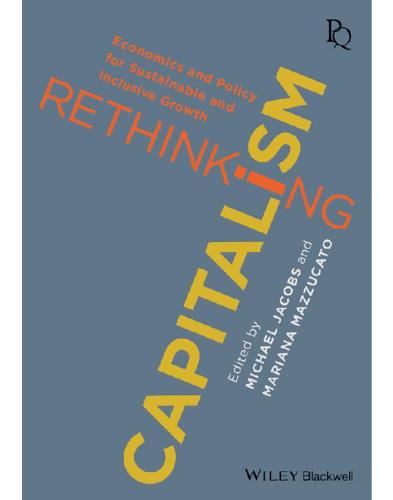
Rethinking Capitalism: Economics and Policy for Sustainable and Inclusive Growth
by
Michael Jacobs
and
Mariana Mazzucato
Published 31 Jul 2016
Senior’s 1836 An Outline of the Science of Political Economy, London, Richard Griffin & Co. 21 For a recent application of this argument in defence of inequality, see N. G. Mankiw, ‘Defending the one percent’, Journal of Economic Perspectives, vol. 27, no. 3, Summer 2013, pp. 21–34. 22 I recognised this early in my own work on information asymmetries, in a major controversy with Steven N. S. Cheung over whether the institution of sharecropping (which I argued could be explained by information asymmetries) mattered (see J. E. Stiglitz, ‘Incentives and risk sharing in sharecropping’, The Review of Economic Studies, vol. 41, no. 2, 1974, pp. 219–55 and S. Cheung, ‘Transaction costs, risk aversion and the choice of contractual arrangements’, Journal of Law and Economics, vol. 19, no. 1, 1969).
…
The orthodox model understands that markets do not always work well. It therefore uses the concept of ‘market failure’ to explain why suboptimal outcomes occur and how they can be improved. Markets fail under various circumstances: when firms have monopolistic power which restricts competition; when there are information asymmetries between producers and consumers; when there are ‘externalities’ or impacts on third parties which are not properly reflected in market prices; and where public and common goods exist whose benefits cannot be captured by individual producers or consumers.36 The propensity of real-world markets to fail in these various ways means that ‘free’ markets do not maximise welfare.
…
Chief among these is that markets generally produce positive outcomes which increase welfare, and should therefore be allowed to operate without much interference wherever possible. A basic regulatory framework of employment, consumer and environmental protection is required to correct for clear externalities and information asymmetries; but governments should not seek to direct markets or shape the businesses which operate in them. The ‘invisible hand’ of the market knows best, generating the highest welfare-producing activities where firms seek to maximise value for their shareholders. Even where the market might seem to get it wrong, governments cannot presume to know better.
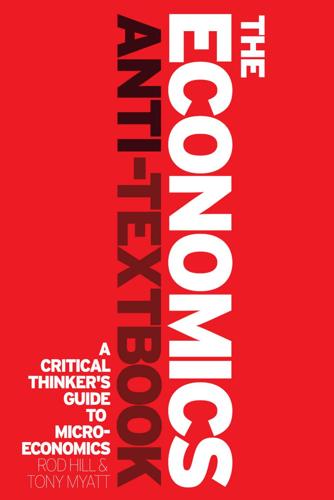
The Economics Anti-Textbook: A Critical Thinker's Guide to Microeconomics
by
Rod Hill
and
Anthony Myatt
Published 15 Mar 2010
We emphasized these points in Chapter 3 when explaining why minimum wage legislation may not cause unemployment because it may elicit more work effort from minimum wage workers, or may prevent a low-level equilibrium in the context of multiple possible equilibria. Credit markets are a particularly important type of market dealing in ‘relational contracts’, both because of their central role in a capitalist economy and because asymmetric information is intrinsic to these markets. (We will have more to say about credit markets, and how asymmetric information and limited rationality played major roles in the global financial meltdown of 2008/09, in the Postscript.) Asymmetric information gives rise to a cluster of well-known problems. First, it allows some people to benefit at the expense of those they are supposed to serve – the so-called ‘principal agent’ problem.
…
The editors of the International Breastfeeding Journal write that ‘the lack of a breastfeeding 82 Questions for your professor: How do we measure consumer surplus if advertising and marketing change people’s preferences? Does it matter if they buy things they would not want with perfect information? 2.2 Incomplete and asymmetric information The textbook economics story of consumer choice with its assumptions of informative advertising and perfect information leading to optimal choices is particularly misleading in situations where incomplete and asymmetric information is a central feature. This provides an opportunity for manipulative marketing by producers. Let’s consider a couple of examples. Example: marketing prescription drugs No one should have been too surprised when a recent study finally revealed that Prozac, the popular antidepressant taken by 40 million people, and three other drugs in its class are no more effective for most people than a placebo (a sugar pill that the patient believes is a drug).
…
The misallocation of resources parallels what we saw in the earlier example, where preferences were altered by advertising. The real default case: incomplete and asymmetric information Despite the pervasiveness of informational problems and the inefficiencies they give rise to, textbook economics focuses on the improbable assumptions of given tastes 85 4 | People as consumers (which we look at in the next chapter), the drug makers are regularly among the most profitable corporations in the world. and perfect information that helps make Adam Smith’s good-news story of the invisible hand work for consumers. But incomplete and asymmetric information – that is, buyers and sellers knowing different things – is a better description of reality for almost all goods.
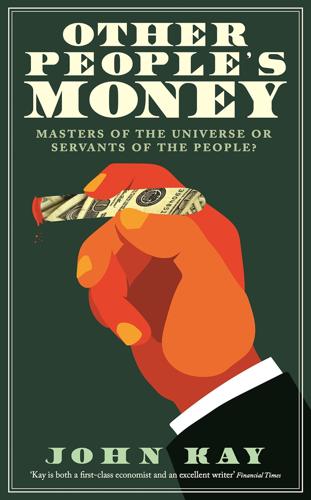
Other People's Money: Masters of the Universe or Servants of the People?
by
John Kay
Published 2 Sep 2015
Moral hazard in its application to the banking system is the well-founded concern that, if there is an expectation of government assistance for troubled financial businesses, the people who run and trade with these businesses will behave in ways that make the need for such assistance more likely. In Michel Albert’s Swiss village, community pressures handled the problems of information asymmetry, adverse selection and moral hazard. Information asymmetry was reduced, though not necessarily eliminated, by geographical proximity and personal ties. The obligation to participate was informed by the link between economic and social life, and for most it was no obligation at all. Some people were better guardians of their herds than others, some shirked their responsibilities, and others discharged them more than conscientiously, but these differences were ignored in the interests of maintaining a harmonious community.
…
The ‘Greenspan doctrine’ regards the exchange of risk as similar to the exchange of milk and coffee: the effect of the trade is to ‘allocate (risk) to those investors most able and willing to take it’.11 But three centuries after Colbert, a different strand of thought in modern economics revives the notion that trade is tricky by stressing ‘information asymmetry’ – people trade because they have different knowledge, or different perceptions of the same knowledge. These two approaches to thinking about trade in risk have a long history. Michel Albert, a French economist turned insurance company boss, offered an entertaining account of the development of the global insurance market in the eighteenth century.
…
Some people were better guardians of their herds than others, some shirked their responsibilities, and others discharged them more than conscientiously, but these differences were ignored in the interests of maintaining a harmonious community. Insurance markets exist for risks that involve a substantial degree of randomness – which reduces the problem of information asymmetry, and where the insured has limited influence over the incidence of risk – which reduces the effect of moral hazard. We can insure against car accidents, against our house burning down, against dying prematurely or against living too long. But these perils represent only a fraction of the risks that we face every day – and our ability to insure against even these is jeopardised by the everincreasing capacity to assemble and analyse large data sets which may enable us to predict illness and death from genetic and environmental information.

Don't Be Evil: How Big Tech Betrayed Its Founding Principles--And All of US
by
Rana Foroohar
Published 5 Nov 2019
Even Lawrence Lessig, the digital law expert who favors many of the policies that the platforms support, said that Google’s deal was the equivalent of a “digital bookstore, not a digital library.”23 What he means is that even as Google was presenting the entire project as being done for the benefit of users, Google itself would ultimately benefit the most. More content meant more opportunities to sell advertising. Why did the authors and publishers ever agree to this initial settlement? Because they didn’t know any better. As with the people who took subprime mortgages from big banks, there was a huge information asymmetry in the dealings of the publishers with Big Tech, which was holding pretty much all the important inside information about just how valuable the digital monetization of searching such content could be. Google understood the new digital world that it was, in fact, creating and dominating. The publishers did not, and were desperate in the short term to stop the Big Tech behemoth from eating their lunch.
…
If you have something that you don’t want anyone to know, maybe you shouldn’t be doing it in the first place.” Translation: Your privacy isn’t our problem. According to Nobel Prize–winning economist Paul Romer, much of our willingness to trade our right to privacy for the sleekest new iPhone model has to do with the fact that “there are tremendous information asymmetries in these markets. Do both parties understand enough to know whether the transaction taking place is in their mutual interest?” he asked, rhetorically. Romer (like me) would argue that they do not; he believes that the complexity of today’s data markets “means that notions like ‘consent’ [to long and complex disclosures about how your data might be used by platform companies] have become meaningless.”
…
Turner’s conclusion, which mirrors that of a growing number of economists, is that the gig economy reduces friction in labor markets, meaning it solves a real need and creates convenience, but it also creates fragmentation that tends to work better for employers, who can leverage superior technology and information, than for workers. The fact that all the data is owned by Uber, and not the driver, and that drivers can’t see any of it, also creates a huge information asymmetry between workers and the company, as a study done by another nonprofit group, the Data & Society Research Institute, found. Drivers risk “deactivation” for canceling unprofitable fares and absorb the risk of unknown fares, “even though Uber promotes the idea that they are entrepreneurs who are knowingly investing in such risk.”

Wall Street: How It Works And for Whom
by
Doug Henwood
Published 30 Aug 1998
This greatly complicates the mainstream notion of prices as a signaling mechanism for balancing supply and demand; there may be lots of noise mixed in with the signals. As they say on Wall Street, when something looks too good to be true, it probably is. Or as one of the major figures in the development of information asymmetry theory, Joseph Stiglitz, put it, "If it's such a good idea, why are you telling me, instead of investing your own money?" (quoted in Kane 1993). This is a remarkably blunt statement for Stiglitz, whose normal mode is the symbols of pure mathematized theory. Interest in "information asymmetry" is usually traced to George Akerlof s 1969 paper on the "lemons" problem — not the fruit, but bum autos. Would-be buyers of used cars have no way of knowing whether the vehicle they're contemplating is any good.
…
In contrast, Japanese executives ranked share price increases as the least important of the nine objectives." This is no mere cultural difference, but a reflection of the contrasting systems under which the two nations' managers operate. Stein's analysis is related to a branch of economics that sprouted during the 1980s from seeds planted in the 1970s — the study of information asymmetry. Since a party to a transaction can never know if the other is telling the truth, each has to be at least a little suspicious of the other. But protective actions resulting from such suspicions may leave both parties worse off than they would have been had both parties been honest and trusting.
…
While it's not clear whether that U.S. outperformance is a permanent thing or just a shorter-term cyclical affair, it can't be denied that the old Axis powers experienced extraordinary growth in investment and income during the first 45 years after Wodd War II's end. It may be that as capitalist economies mature, and liquid balances swell, they may tend toward a more fluid style of finance and ownership. irrational expectations Information asymmetry theorists generally assume that market participants are the rational self-maximizers of mainstream theory; they can just never be certain of the knowledge and motives of their counterparts. As Robert Gordon said of the closely related New Keynesian school, "any attempt to build a model based on irrational behavior or submaximizing behavior is viewed as cheating" (quoted in Dymski 1994).
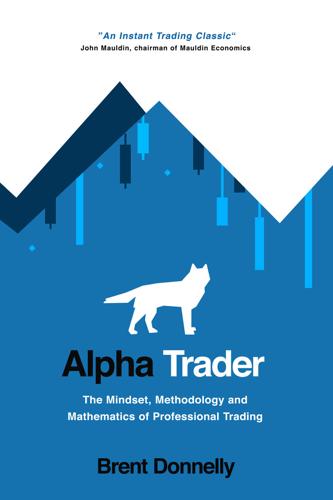
Alpha Trader
by
Brent Donnelly
Published 11 May 2021
See reassessment triggers activity bias, 241 adaptability, trader attribute of, 35, 75, 104, 106-107 See also adaptation, trader adaptation, trader, 439—451 to fast/crisis markets, 440—445 growth mindset and, 451 to major structural market changes, 450—451 to new trading methods, 449 to rangebound markets, 447—448 to trending markets, 448, 449 to volatile markets, 445—447 algorithms, 163, 164, 173 All-Weather portfolio, 87 alpha, definitions of, 21 alpha trader feeling uncomfortable and, 112 formula for success, 72, 75 grit and, 92 having plan, 126 as healthy skeptic, 104 intellectual humility, 184 numeracy, 248 as rational thinker, 34, 76 as risk-seeker, 32 See also trader attributes, positive cognitive; trader attributes, positive miscellaneous; trader attributes, positive non-cognitive “AM/FX” newsletter, 84, 96, 202, 220 Amazon (AMZN) stock, 231, 347, 412 analogs, idea generation and, 402—405 analytical skill, 69 anchoring bias, 67, 225—229, 480, 484 See also disposition effect; loss aversion Anderson, Irina, 69 apophenia, 64, 216—225 See also pattern recognition; Turnaround Tuesday Apple (AAPL) stock, 219, 241, 276, 277, 278, 289, 290, 291, 291, 442 Arcsine Law, 251—254 Art of Currency Trading, The (B. Donnelly), 172 Asch, Solomon, 82 Asch Conformity Experiment, 82, 82, 83 Asian Financial Crisis (1998), 441 “Aspen Trading” (newsletter), 492 asymmetrical information, 156, 160 Axelrod, Bobby, 102 backtesting, 81, 221 curiosity and, 89—90 Bank of America, 42 Global Fund Manager Survey, 345 Bank of Canada, 308 bank traders annual performance and pay, 354 free capital, 356 information asymmetry and, 156 simple indicators and, 166 success rate, 40 bankrupt company, common stock of idea generation and, 406 rallies, 406 typical path followed by, 238 Batnick, Michael, 67—68 Baumeister, Roy, 56—57, 95, 106, 491 Bayes Theorem, 80, 81 Bayesian thinking, 201 Bayesian updating, 80, 81, 84 Beane, Billy, 451, 460—461 beauty contest analogy (Keynes), 311, 325 behavioral bias, 66, 179—180, 198 See also specific types of bias', biased thinking Bernanke, Ben, 208 Bernstein, Jake, 234, 345 bet size, varying, 107, 379 bet sizing, 256 better-than-average effect, 182—183 bias idea generation and, 396 post-trade, 416 See also specific types of bias', apophenia; biased thinking; gambler’s fallacy; herding; hot hand biased thinking, 155 See also specific types of bias; behavioral bias; bias bid/offer spread, 276 finding data on, 278 Big Five Personality Traits, 46—49 agreeableness, 47, 49, 50 conscientiousness, 47—48, 49, 50, 51, 52, 56-58, 71 effect of IQ and on male earnings, 49, 50 extraversion, 47, 49, 50 financial success and, 49—50, 52 lifetime stability of, 48 neuroticism, 47, 49, 50, 51, 52, 58, 71 openness to experience, 47, 49 versus Myers-Briggs (MBTI), 47 See also grit; personality; self-control birthday paradox, 254—255, 255 bitcoin bubble (2017-2018), 185, 239, 370, 405 bleed, slow, 167—168 blogs, 77 “Cheap Convexity,” 492 “Exante,” 492 “Liberty Street Economics,” 280 “No Mercy, No Malice,” 492 Bloomberg, 65, 97, 162, 194, 218, 259, 290, 321, 371, 393, 399, 482 blowups, 117—118 bonds as safe haven, 262 stocks and, 260—261, 261 Borish, Peter, 87, 163 breakout traders, 106 breakout trading, 173 breakouts, 161, 289 Breath (J.
…
Langer & J. Roth), 140 health, trader, 459, 481 See also exercise; meditation; mindfulness; yoga hedge fund traders/PMs, 78, 96, 106, 111, 116, 117, 118, 152, 189, 190, 195, 211 annual stop loss, 356, 357 appropriate capital, 149—150 evaluation and compensation, 354 free capital, 356 information asymmetry and, 156 Kelly Criterion and, 375 liquidity and, 283 as poker players, 192 success or failure of, 360 success rate, 40 hedge funds, 40, 78, 114, 150, 273 currency futures and, 421 macro analysis and, 347 pod-based, 162 hedonic treadmill, 128 Hefti, Andreas, 68 Heinke, Steve, 68 herding, 229-240, 483 belief in good stories and, 231 bubbles and, 236—240 conformity and, 230 fear of missing out and, 231—232 how to detect and combat, 234—236 incentives and, 232—233 reasons for market participant, 230—233 versus creative thinking, 232 See also Asch Conformity Experiment Hermann Grid Illusion, 180 Heuer, Richards J., 85—86, 88, 410 hindsight bias, 242 history, trader personal, 462—465 blue collar upbringing, 462—463 money versus happiness curve, 465 perception of money and, 463—464 thinking about, 462—465 Hollins, Peter, 106, 491 hot hand, 245—247 Hour Between Dog and Wolf, The (J.
…
Duke), 81, 100, 140, 241, 491 Thoma, Volker, 69 Thorp, Edward O., 248, 349, 492 Tierney, John, 56—57, 106, 491 tight/aggressive trading style, 138, 197 time dilation, 189, 483 time of day/week/month bid/offer spread, 278 FX trades and, 312 as market catalyst, 310, 312 volume, 283—286, 288 Tolle, Eckhart, 128—129, 158, 491 Toronto Stock Exchange, 473 tracking, trade, 392, 423 trade, lifecycle of hypothetical, 392—424 execution, 392, 418—423 filtering, 392, 394, 407—411 grid showing, 392 idea generation, 392, 393—407 performance analysis, 392, 423—424 position sizing, 392, 417 tactics, 392, 412—416 tracking, 392, 423 trade, lifecycle of short EURUSD (Sept 2020), 425—435 EURUSD hourly chart Aug and Sept 2020 and, 429, 430 execution, 433—434 filtering, 431—432 idea generation, 431 overview, 425—431 position sizing, 432—433 as stale narrative trade, 431 tactics, 432 trade quotas, 113 trader attributes, positive cognitive, 75—104 confidence, calibrated, 75, 81 creative, 75, 86—89 curious, 75, 89—90 flexible and open-minded, 75, 83—86 future-oriented, 75 grit/perseverance/mental endurance, 75, 91—94 growth mindset, 75, 90—91 healthy skeptic, 103—104 independent thinker, 75, 82—83 intelligent/knowledgeable/informed, 75, 77—78 organized/meticulous, 75, 95—100 process-oriented, 75, 100—103 quantitative, 75, 78—81 rational, 75, 76 trader attributes, positive miscellaneous, 75, 143—154 appropriate capital, 75, 143, 148—150 experience, 75, 143, 146 healthy and supportive risk-taking environment, 75, 143, 148, 150-154 luck, 75, 143, 146-147 passion for trading, 75, 143, 144—146 raw trading instinct, 75, 143—144 trader attributes, positive non-cognitive, 75, 104—142 ability to manage stress, 75, 104, 131—135 adaptable, 75, 104, 106—107 courageous, 75, 104, 107—119 decisive, 119—121, 484 disciplined/self-control, 75, 104, 105—106 focused, 75, 104, 135—138, 484 locus of control understanding, 75, 104, 139—142 patient, 75, 104, 138—139 self-aware, 75, 104, 121—131 Trader Self-Assessment, 30—37 traders, evaluating, 101 See also specific types of traders traders, traits of excellent, 493 See also trader attributes, positive cognitive; trader attributes, positive miscellaneous; trader attributes, positive non-cognitive traders, traits of losing, 494 trades, evaluating, 101 trading gambling and, 191—192 information asymmetry, 156 as negative sum game, 39, 155, 156, 277 quitting, 145—146 rules, 101, 467 technology asymmetry, 156 See also trading costs; trading methods; strategy, trading; transaction costs trading costs, 155, 156 See also transaction costs trading history, personal, 461—462 trading instinct, raw as trader attribute, 75, 143—144 as x-factor, 143 trading journal, 99—100 building self-awareness with, 121—126 improving trading process with, 424 monthly review, 124 recording trade executions in, 392, 422 sample, 123 takeaway goals, 125 trading self-awareness and, 124 trading methods adapting to new, 449—451 varying, 467 See also strategy, trading transaction costs, 40, 70, 155, 276, 277—279, 418-422 bid/offer, 155 commissions, 155 day trader P&L before and after, 279 FX trader P&L before and after, 279 how to reduce, 418—422 slippage, 155 trend following, 159—160, 173 trend indicators moving averages, 337—338 trend reversal indicator, 312 trending markets, 448 identifying, 448, 449 Turek, Jon, 492 Turnaround Tuesday, 222, 223—225 anatomy of a sell-off, 223 total cumulative performance of Tuesdays in 2008, 225 Tuesday 1-day S&P 500 return, 224 Tversky, Amos, 198 TWAP order, 419, 420 Twitter, 78, 83, 98 bias, 235, 236 confirmation bias on, 198 information and analysis source, 156 finance experts on, 308 monitoring, 35 real-time news from, 230 sentiment, 267 sharing hypotheses on, 84 stock market crash speculation on, 264 USDJPY Hourly, April to July 2020, 221 May 3—7, 2010, 18, 485 vs.
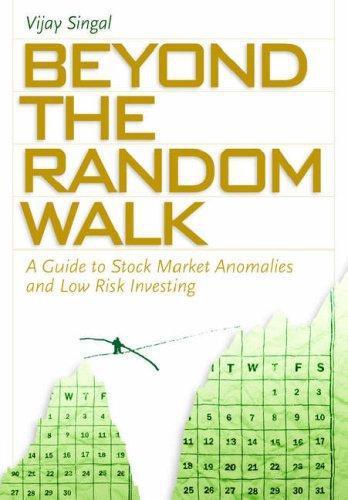
Beyond the Random Walk: A Guide to Stock Market Anomalies and Low Risk Investing
by
Vijay Singal
Published 15 Jun 2004
The third reason proceeds from investor recognition. An increase in investor awareness, for example, can affect the stock price in several ways. First, the firm’s operating performance may improve because of increased monitoring by investors and by enhanced access to capital markets. Second, the firm’s liquidity may improve due to less information asymmetry as a result of greater production of information by investors and analysts. IMPERFECT SUBSTITUTES The imperfect-substitutes argument relies on the concurrent growth in indexing and the price impact of changes to the S&P 500. There is a permanent price increase for firms added to the S&P 500 index (see Table 8.1).
…
Another explanation for the abnormal performance is a reduction in asymmetry of information between the management and investors. When a company operates in a single segment, external earnings and performance estimates are more accurate than when a company operates in multiple segments. A reduction in information asymmetry means that there is less risk and, therefore, the stock price is higher. 313 314 Beyond the Random Walk References for Further Reading Abarbanell, Jeffrey S., Brian J. Bushee, and Jana Smith Raedy. 2003. Institutional Investor Preferences and Price Pressure: The Case of Corporate Spin-offs.
…
Capital Structure in Corporate Spinoffs. Journal of Business, forthcoming. Johnson, Shane A., Daniel P. Klein, and Verne L. Thibodeaux. 1996. The Effects of Spin-Offs on Corporate Investment and Performance. Journal of Financial Research 19(2), 293–307. Krishnaswami, Sudha, and Venkat Subramanian. 1999. Information Asymmetry, Valuation, and the Corporate Spin-off Decision. Journal of Financial Economics 53, 73–112. Maxwell, William, and Ramesh P. Rao. 2003. Do Spin-offs Expropriate Wealth from Bondholders? Journal of Finance, forthcoming. McConnell, John, M. Ozbilgin, and Sunil Wahal. 2001. Spin-offs, Ex Ante.
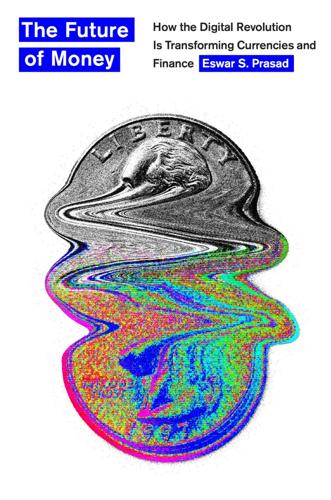
The Future of Money: How the Digital Revolution Is Transforming Currencies and Finance
by
Eswar S. Prasad
Published 27 Sep 2021
Whether the two key functions of banks, maturity transformation and mitigation of information asymmetries, can be accomplished through technology will determine whether commercial banks may be displaced or simply switch to alternative roles in an economy. The more data there are about individuals and firms, the more often financial transactions are executed through digital platforms, and the cheaper it is to mine these data using algorithms (the writing of which can also be automated), the easier it is for other intermediaries to take on the traditional roles of banks in ameliorating information asymmetries. This undercuts one of the key elements of the business model of banks, especially small and medium banks, that relies on knowledge about their customers obtained through various transactions, in addition to the formal and informal relationships maintained by bankers.
…
Unless there is a backstop, such as a government that can credibly commit to returning money to a failed bank’s depositors, such crises of confidence can spread quickly to other banks, bringing both the banking system and the economy to their knees. Another key function of banks is mitigating information asymmetries—the fact that borrowers know more about themselves than potential lenders do. Borrowers, for instance, know their full employment history, the state of their health, and less tangible elements such as their willingness to pay. Community bankers can develop networks of relationships in their towns, yielding valuable information about borrowers that can then be used in making lending decisions.
…
When the firm approaches the bank for a loan, either to increase its office space or to meet its payroll during a period of temporarily low sales, the bank has a better sense of the riskiness involved in such a loan. Thus, banks have an advantage over finance companies that would not have such relationships with prospective borrowers. Banks also try to mitigate the information asymmetry problem by requiring borrowers to post collateral, that is, pledge assets owned by the borrower that the bank can take possession of in case of default on the loan. Down payment requirements serve a similar function. Mortgage loans for house purchases in the United States typically cover 80 to 90 percent of the estimated value of the house, with the purchaser expected to put up a down payment for the remainder.

The New Division of Labor: How Computers Are Creating the Next Job Market
by
Frank Levy
and
Richard J. Murnane
Published 11 Apr 2004
However, since motivation is another attribute that employers cannot measure with pencil-and-paper tests, IBM and its competitors cannot reliably assess job applicants’ motivation. IBM’s reputation for high-quality management training attracts to the firm highly motivated individuals who welcome the challenge of improving their skills by participating in well-designed, rigorous training programs. Thus, because of information asymmetry and self-selection, IBM’s strong training programs help the firm to attract and retain skilled managers.6 The IBM and Cisco cases illustrate that large, successful companies believe they can teach the skills needed to excel at complex communication and expert thinking tasks. The cases also show that technology is 130 CHAPTER 7 not a substitute for face-to-face classroom interactions in some critical parts of the learning process.
…
This, however, can be only part of the answer since the expensive part of Basic Blue is the week in Armonk that focuses on improving participants’ skills in managing complex personal interactions. These skills are valued not only by IBM, but also by its competitors. Economic theorists have shown that the answer to this puzzle rests in part on asymmetric information. In the hiring process, it is difficult to identify people who are skilled at complex communication. Scores on pencil-and-paper tests don’t provide the needed information, which is why neither IBM nor its competitors can identify those job applicants who are skilled at complex communication.
…
.: National Academy Press, 2002), 127–57. 5. As discussed later, the community server also keeps track of students’ grades on chapter tests and the semester examination, eliminating the bookkeeping activities that consume a great deal of time for most teachers. 6. For rich discussions of the asymmetric information and self-selection ideas, see Daron Acemoglu and Jorn-Steffan Pischke, “Beyond Becker: Training in Imperfect Labour Markets,” Economic Journal 109, no. 453 (February 1999): F112–42; and David Autor, “Why Do Temporary Help Firms Provide Free General Skills Training?” Quarterly Journal of Economics 116, no. 4 (November 2001): 1409–48.
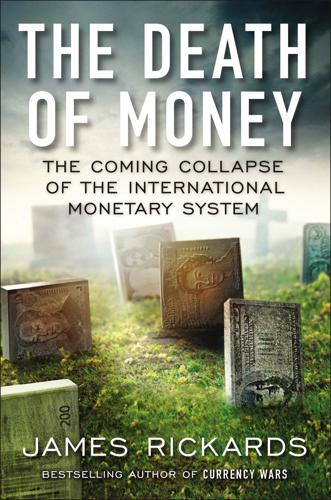
The Death of Money: The Coming Collapse of the International Monetary System
by
James Rickards
Published 7 Apr 2014
In an extreme case, there might be no market at all for used cars because buyers and sellers are too far apart on price, even though there would theoretically be a market-clearing price if both sides to the transaction knew all the facts. Used cars are just one illustration of the asymmetric information problem, which can apply to a vast array of goods and services, including financial transactions. Interestingly, gold does not suffer this problem because it has a uniform grade. Absent fraud, there are no “lemons” when it comes to gold bars. A touchstone for economists since 1970, Akerlof’s work has been applied to numerous problems. The implications of his analysis are profound. If communication can be improved, and information asymmetries reduced, markets become more efficient and perform their price discovery functions more smoothly, reducing costs to consumers.
…
This inquiry involves imperfect information or information asymmetry: a situation in which one party has superior information to another that induces suboptimal behavior by both parties. This field took flight with a 1970 paper by George Akerlof, “The Market for ‘Lemons,’” that chose used car sales as an example to make its point. Akerlof was awarded the Nobel Prize in Economics in 2001 in part for this work. The seller of a used car, he states, knows perfectly well whether the car runs smoothly or is of poor quality, a “lemon.” The buyer does not know; hence an information asymmetry arises between buyer and seller.
…
But uncertainty caused by the Fed’s policy flip-flops makes the discount rate difficult to ascertain and causes employers to reduce or delay hiring. In effect, the Fed’s efforts to stimulate the economy are actually retarding it. Free markets matter not because of ideology but because of efficiency; they are imperfect, yet they are better than the next best thing. Akerlof illustrates the costs of information asymmetry at one point in time, while Bernanke shows the costs of information uncertainty over time. Both are correct about these theoretical costs, but both ignore the full costs of trying to fix the problem with government intervention. Akerlof was at least humble about these limitations, while Bernanke exhibited a central planner’s hubris throughout his career.
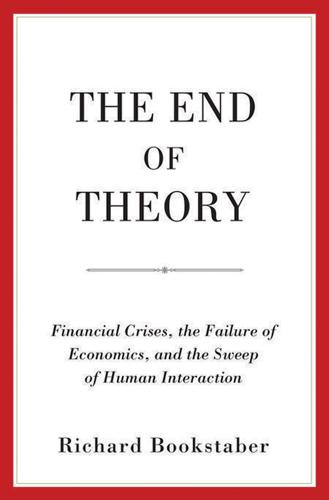
The End of Theory: Financial Crises, the Failure of Economics, and the Sweep of Human Interaction
by
Richard Bookstaber
Published 1 May 2017
If we are going to use the analogy of war in economics and finance, the battlefield where Boyd’s dictum most applies is the realm of information. One tactic in this battlefield is to create informational asymmetries. If the market is becoming efficient, if information is immediately accessible to everyone at the same time, then either create new private information or else speed up your access to the public information. Derivatives play a role in the first approach, with investment banks such as Goldman Sachs creating information asymmetries by constructing financial instruments such as credit default swaps that they understand better than the buyers. For the second approach, consider the news feeds that are pushed to high-frequency traders with millisecond response times.
…
See also MGonz Iceland, 11 IKB, 165 imperfect knowledge economics, 175. See also Frydman, Roman; Goldberg, Michael impossibility theorem, 53, 55–57 (see also Gödel, Kurt); implications for limits to knowledge, 51; proof of, 199 induction, 15, 180–184; and crises, 184 Industrial Revolution, 5–6, 188 informational asymmetries, 120 informational irreducibility, 109–111 Institute for New Economic Thinking, 89 insurance companies, 131 International Monetary Fund, 11 Jagger, Mick, 45 Jevons, William Stanley, 3, 91; and cryptography, 7; and the development of marginal utility, 7; The Principles of Science, 7; and the representative agent, 82; studies at University College, 6; and sunspots, 8–11; The Theory of Political Economy, 6–7; and the three-body problem, 28–29; and travels to Australia, 6 Kahneman, Daniel, 45–47 Kay, John, 3 Keynes, John Maynard, 38, 84–85, 173, 183 Knightian uncertainty, 50 Kuhn, Thomas; and crisis science, 91; and differing paradigms argument, 107; and normal science, 58, 91, 178 Kundera, Milan, 12, 116; and eternal recurrence, 41; and planet of inexperience, 60–61; The Unbearable Lightness of Being, 41, 60–61 (see also Unbearable Lightness of Being, The) Lakatos, Imre, 91 Laplace, Pierre-Simon, 56–57 Lee, Bruce, 120–121 Lehman Brothers, 11, 14 Leibniz, Gotfried Wilhelm, 109, 116 leverage, 15, 139–141, 143; and the financial crisis of 2008, 156 (see also financial crisis of 2008); and regulation, 156 Lewis, Michael, 185 Library of Babel, 61–63, 123; as Arrow-Debreu world, 63; and computational irreducibility, 62–64; and the Conway’s Game of Life, 123; and the limits of knowledge, 62–63 (see also limits of knowledge); map versus territory and, 64 (see also map versus territory); and radical uncertainty, 63, 123–125 limits of knowledge, 177; and complexity, 111; and fallibility, 123, 183; and use of heuristics, 86; and limits to modeling, 177; in self-referential systems, 51–56 liquidity, 48, 139–141, 143; and crisis dynamics, 151–154; and demand, 144–147, 151–155, 186; and dynamics, 144; and the financial crisis of 2008, 156 (see also financial crisis of 2008); and heterogenous decision cycles, 152–154; interaction with, 152–154; and leverage, 151–154; and margin calls, 151–153; and the market makers, 152–155; and regulation, 156; and supply, 144–147, 151–155, 186 Long-term Capital Management (LTCM), 112–113 Lucas, Robert, 3, 13, 89, 105; and ergodicity, 42 Lukmanier electric line, 133 Luria, Alexsander, 76–77 Lynch, Merrill, 162–163, 166 Madame Bovary, 116.
…
One feature of the agent-based modeling approach is that making such adjustments is integral to the fabric of the model. This stands in contrast to the deductive approach, where changes at a minimum need to rework the intricately balanced mathematical structure, and at worst require resetting the underlying axioms. Even economic models with asymmetric information or with the body English of behavioral assumptions do not accept the limits to knowledge that prevent us from laying out the model until it is run. Yet, people need to know the model, some model, and solve it for an optimization, perhaps constrained in some way, in order to determine how to act.9 Problems emerge for economics from the human characteristic of being the children of our experiences, both experiences in the past and the hazy prospects of future experiences.
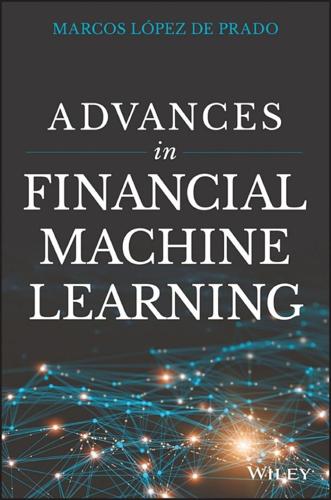
Advances in Financial Machine Learning
by
Marcos Lopez de Prado
Published 2 Feb 2018
CHAPTER 18 Entropy Features 18.1 Motivation Price series convey information about demand and supply forces. In perfect markets, prices are unpredictable, because each observation transmits everything that is known about a product or service. When markets are not perfect, prices are formed with partial information, and as some agents know more than others, they can exploit that informational asymmetry. It would be helpful to estimate the informational content of price series, and form features on which ML algorithms can learn the likely outcomes. For example, the ML algorithm may find that momentum bets are more profitable when prices carry little information, and that mean-reversion bets are more profitable when prices carry a lot of information.
…
Team members are data scientists with a deep knowledge of financial markets and the economy. Remember, the theory needs to explain a large collection of important features. In particular, a theory must identify the economic mechanism that causes an agent to lose money to us. Is it a behavioral bias? Asymmetric information? Regulatory constraints? Features may be discovered by a black box, but the strategy is developed in a white box. Gluing together a number of catalogued features does not constitute a theory. Once a strategy is finalized, the strategists will prepare code that utilizes the full algorithm and submit that prototype to the backtesting team described below.
…
Third, we define a tick imbalance bar (TIB) as a T*-contiguous subset of ticks such that the following condition is met: where the size of the expected imbalance is implied by |2P[bt = 1] − 1|. When θT is more imbalanced than expected, a low T will satisfy these conditions. Accordingly, TIBs are produced more frequently under the presence of informed trading (asymmetric information that triggers one-side trading). In fact, we can understand TIBs as buckets of trades containing equal amounts of information (regardless of the volumes, prices, or ticks traded). 2.3.2.2 Volume/Dollar Imbalance Bars The idea behind volume imbalance bars (VIBs) and dollar imbalance bars (DIBs) is to extend the concept of tick imbalance bars (TIBs).

State-Building: Governance and World Order in the 21st Century
by
Francis Fukuyama
Published 7 Apr 2004
The problem in Russia and other postcommunist countries was somewhat different. The privatization of state-owned enterprises is of course an appropriate goal of economic reform, but it requires a substantial degree of institutional capacity to implement properly. Privatization inevitably creates huge information asymmetries, and it is the job of governments to correct them. Assets and ownership rights have to be properly identified, valued, and transferred transparently; the rights of new minority shareholders have to be protected to prevent asset-stripping, tunneling, and other abuses. Thus, while privatization involves a reduction in the scope of state functions, it requires functioning markets and a high degree of state capacity to implement.
…
Open-ended employment contracts and authority relationships permitted more flexible adjustment to unforeseen future states of the world. In addition, market efficiency rests on the existence of a large number of market participants in competition with one another. But large numbers tend to turn into small numbers in many specialized contracting situations, allowing contractors to take advantage of asymmetric information. Again, the solution was to bring these activities within the boundaries of the hierarchy through vertical integration. Economics put its distinctive stamp on organizational theory, however, when it began to import its own individualistic behavioral assumptions inside the boundaries of the firm.
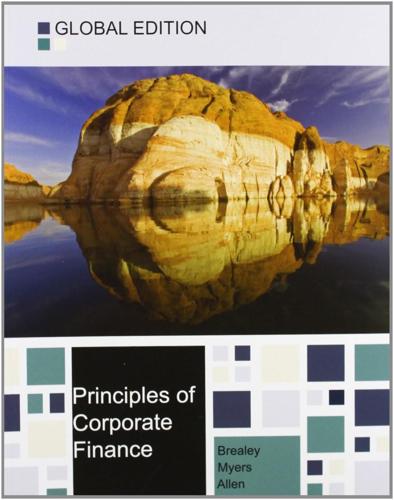
Principles of Corporate Finance
by
Richard A. Brealey
,
Stewart C. Myers
and
Franklin Allen
Published 15 Feb 2014
New equity issues are a last resort when the company runs out of debt capacity, that is, when the threat of costs of financial distress brings regular insomnia to existing creditors and to the financial manager. We will take a closer look at the pecking order in a moment. First, you must appreciate how asymmetric information can force the financial manager to issue debt rather than common stock. Debt and Equity Issues with Asymmetric Information To the outside world Smith & Company and Jones, Inc., our two example companies, are identical. Each runs a successful business with good growth opportunities. The two businesses are risky, however, and investors have learned from experience that current expectations are frequently bettered or disappointed.
…
A debt issue lets bad news come out later through other channels.) The story of Smith and Jones illustrates how asymmetric information favors debt issues over equity issues. If managers are better informed than investors and both groups are rational, then any company that can borrow will do so rather than issuing fresh equity. In other words, debt issues will be higher in the pecking order. Taken literally this reasoning seems to rule out any issue of equity. That’s not right, because asymmetric information is not always important and there are other forces at work. For example, if Smith had already borrowed heavily, and would risk financial distress by borrowing more, then it would have a good reason to issue common stock.
…
Other things being equal, A’s stockholders are better off if it is a stock offer rather than a cash offer. With a stock offer, the inevitable bad news about B’s value will fall partly on the shoulders of B’s stockholders. Asymmetric Information There is a second key difference between cash and stock financing for mergers. A’s managers will usually have access to information about A’s prospects that is not available to outsiders. Economists call this asymmetric information. Suppose A’s managers are more optimistic than outside investors. They may think that A’s shares will really be worth $215 after the merger, $7.45 higher than the $207.55 market price we just calculated.
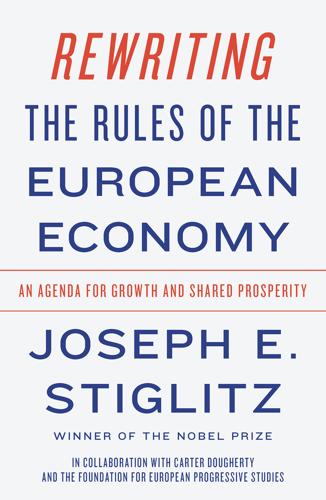
Rewriting the Rules of the European Economy: An Agenda for Growth and Shared Prosperity
by
Joseph E. Stiglitz
Published 28 Jan 2020
The intent is to leverage these funds enormously. †† A key malfunction of the financial markets is related to credit rationing: the inability of a borrower to get access to funds at any interest rate, even though similarly situated borrowers do get credit. It is caused in turn by imperfect information and information asymmetries. Such market failures are particularly pervasive in the provision of long-term credit. Another related market failure is the lack of a full set of risk (insurance) markets. By now, there exists an extensive literature explaining how government, even when it faces similar limitations, can improve societal welfare.
…
There are policies that can help Europe’s private sector work better, not only for itself in the long run, but for all of society. The chapters in Part II of this book describe some of the key ways in which this can be done. The worst manifestations of dysfunctional markets are those in which some entities make money by taking advantage of others, whether through market power or information asymmetries. Any new rulebook that does not address these instances of market failure will be incomplete, and no sector has failed to perform as it should so much as the financial sector. We devote Chapter 5 entirely to it. The efficiency of all sectors (including finance) and their ability to serve society depends on robust competition.
…
The ECB has resisted deep reform of the repo market because it long championed these transactions for improving the transmission of monetary policy in the Eurozone and accelerating financial integration. Similarly, the ECB, the Bank of England, and the European Commission together designed plans for simple, transparent, and standardized securitization. This plan would reduce the opacity, information asymmetries, conflicts of interest, and perverse incentives that made securitization the focal point of the global financial crisis. But these reforms do not adequately address the fundamental flaw of securitization, which is the separation of risk bearing from loan origination. Thus, it is worrying that many in Europe are actively encouraging the revival of securitization markets without adequately taking into account their risks and limitations.

The Measure of Progress: Counting What Really Matters
by
Diane Coyle
Published 15 Apr 2025
When useful information is more easily accessed, t here is less need for hierarchical decision-making with knowledge concentrated at the centre; more communication is needed when production is decentralised, but the costs of communication have fallen too (Garicano 2000, Bloom et al. 2014). The classic make-or-buy tensions when there is asymmetric information, so familiar from industrial organisation economics, have not vanished; they are manifest in the close attention firms like Apple or Dyson pay to their suppliers. But the scope of the information asymmetries is somewhat reduced or offset by other advantages. Rather than unbundling, or contracting out production activities, servitised manufacturers have done the opposite, adding to the range of tasks undertaken inside the boundaries of the firm.
…
For example, in professional s ervices such as accountancy and law, machine learning means routine tasks such as elements of audit or discovery can be automated and carried out much faster than previously. This is a process innovation enabling the firm to reduce costs; customers should get a better (faster) service, and perhaps pay less for it as well (although this may be hindered by information asymmetries and markups). There w ill be general equilibrium effects too, through accountancy and legal services as an intermediate input to other sectors, 68 Ch a pter T wo Table 2.2. A Time-Based Approach to Productivity Market production Home production Leisure/consumption Routine Routine manufacturing Cleaning, driving; Daily run, personal Routine services, e.g., domestic robots, care, eating (largely payroll processing, self-driving cars may non-automatable checkouts, tax preparation automate some because inalienable although some market purchases possible, e.g., nail bars, hairdryers) Non-routine Medicine, legal, consultancy; Cooking, gardening (may Cooking, gardening elements of these also be purchased in (inherently becoming routinised the market) enjoyable for some by technology Creative activities, e.g., people) Travel agency, banking; vlogs, open-source Creative activities, increasingly moving into software (some p eople e.g., vlogs, open- online home production will seek to monetise source software Non-routine manufacturing these) (done for Car repair, driving, plumbing, Car repair, driving, enjoyment) decorating; technology plumbing, decorating Theatre, concerts, automating some (may also be purchased sport, socialising, elements in the market) eating out Source: Author’s own.
…
The large and long-standing literatures in both economics and management on both the firm’s make-or-buy decision and the strategic choices facing multinationals are testament to this. However, coinciding with trade deals and reductions in shipping costs that made locations such as Mexico’s maquiladoras or Shenzhen in China viable as offshore manufacturing centres, digitisation and cheap, fast communications reduced co- ordination costs and information asymmetries. This altered the make- or-buy calculation and has made possible the fragmentation and reallocation of tasks within the sequence of production activities; Richard Baldwin has described these as “unbundlings” in trade patterns (Baldwin 2016b). There have also been new bundlings in the structural reorganisation of production.

After the Gig: How the Sharing Economy Got Hijacked and How to Win It Back
by
Juliet Schor
,
William Attwood-Charles
and
Mehmet Cansoy
Published 15 Mar 2020
They can also adapt their algorithms to induce behaviors they want. Ride-hail companies use gaming techniques to keep workers at the wheel longer,44 and they have learned that riders are more willing to pay surge prices when their phone batteries are low.45 Legal scholars and others have argued that this information asymmetry gives firms immense power and provides a strong rationale for regulation.46 Data transparency is one way to mitigate the asymmetry. Public availability of data is crucial for other reasons, too. Without it, it’s difficult to assess the extent of person-to-person discrimination. And if we want platforms to be held accountable for the carbon and other environmental impacts of their activities, access to data is imperative.
…
Uberland: How Algorithms Are Re-writing the Rules of Work. Berkeley: University of California Press. Rosenblat, Alex, Solon Barocas, Karen Levy, and Tim Hwang. 2016. “Discriminating Tastes: Customer Ratings as Vehicles for Bias.” Intelligence and Autonomy (October): 1–21. Rosenblat, Alex, and Luke Stark. 2016. “Algorithmic Labor and Information Asymmetries: A Case Study of Uber’s Drivers.” International Journal of Communication 10:3758–84. Rosenthal, Brian M. 2019. “ ‘They Were Conned’: How Reckless Loans Devastated a Generation of Taxi Drivers.” New York Times, May 19, 2019. Rowe, Pia C. M. 2017. “Beyond Uber and Airbnb: The Social Economy of Collaborative Consumption.”
…
Platform companies are using AI, or artificial intelligence, to do many functions that were previously done by management, such as performance evaluation, employment support, and even the initial sign-up. Algorithms are frequently a source of frustration for workers, owing to lack of transparency and asymmetric information.43 In ride-hail and delivery, platforms switched to “blinding” job destinations,44 which eliminated a key component of worker choice, supposedly one of the hallmarks of this kind of work. Couriers report not being sure how turning down jobs affects their position in the queue for new ones,45 and more generally, we found that they were confused about how jobs were allocated.
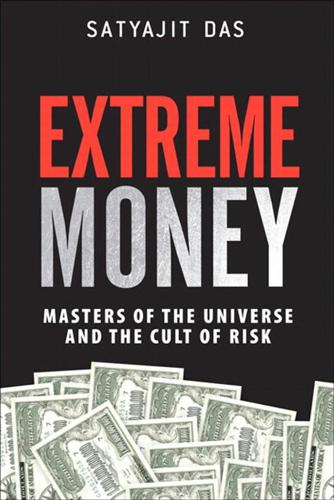
Extreme Money: Masters of the Universe and the Cult of Risk
by
Satyajit Das
Published 14 Oct 2011
Everybody now relied on someone else to do their risk analysis. William Heyman, former head of market regulation at the US SEC, observed: “In manufacturing, the market price is set by the smartest guy with the best, cheapest production process. In securities markets, the price is set by the dumbest guy with the most money to lose.”16 Figure 17.4. Information asymmetries in securitization Source: Adapted from BIS Committee on the Global Financial System. Paper Chains These risk chains relied on voluminous documents, which only lawyers read but without necessarily understanding what was going on. As became apparent later, the legal basis for some transactions was also flawed.
…
See also investment banks Iania, Leonardo, 126 IBM, 244 Icahn, Carl, 137, 146 Iceland, 279, 345 collapse of banking system, 275 stock market, 84 Ideal Husband, The, 53 IFIL Investments, 222 Ikebe, Yukiko, 40 illiquid markets, 287 Immelt, Jeffrey, 63, 344 imports from China, 85 income, annuities, 70 increase in borrowing levels, 265-268 incubators, 247, 254 independent contracting, 181 indexed gold put options (IGPOs), 216 India, 22 gold in, 27 rupees, 21-22 individual retirement accounts (IRAs), 48 industrialization, 38 inflation, 49, 145 after fall of the Berlin Wall, 101 effect on conglomerates, 60 hyperinflation, 22 in Zimbabwe, 22 information asymmetries in securitization, 271 determining from noise, 125-127 transparency, 283 infrastructure, 124 innovation, 77 innovative debt structures. See debt Inside Job, The, 316, 353 insolvency, 280 Institute of Theoretical Physics (Copenhagen, Denmark), 101 insurance bonds, 176 life, securitization of, 178 prices, 209.
…
Warburg, 57, 201 Sadek, David, 186 Sagan, Carl, 348 salaries, 323-324 Salomon Brothers, 80, 122, 170, 248, 292, 325 bonuses, 319 Michael Lewis, 308 municipal bonds, 211 Salomon North, 248 Saltarelli, Gerald, 140 Salter, Malcolm, 140 Samaras, Lucas, 36, 238 Samuelson, Paul, 119, 121 Sants, Hector, 302 Sarbanes, Paul, 154 Sarbanes–Oxley Act (2002), 81, 154 Sarkozy, Nicolas, 346, 355, 364 Saudi riyals, 21 Savage, Tom, 232 Saville Row, 44 saving, 266, 358 saving and loans associations (S&Ls), 145 scalability, 254 scales, ratings, 143 scams, 23 Schacter, Barry, 125 Schadenfreude, 343 Schäuble, Wolfgang, 353 Schiffrin, Anya, 312 Schjedahl, Peter, 131 Schneider, Ralph, 71 Scholes, Myron, 248 schools, 158 Schroder Ventures, 154 Schularick, Moritz, 87 Schultz, George, 342 Schumpeter, Joseph, 103 Schwarzman, Stephen, 154, 164, 318 Schwed, Jr., Fred, 243 Science Museum (London), 351 Scion Funds, 256 Scissors, Derek, 350 Seabright, Paul, 35 Seagram, 79 Second World War, 84, 102 Secret of FX, The, 40 Secret, The, 45 Secrets of Wealth, 96 Securities, exotic products, 73-74 Securities and Exchange Commission (SEC), 131 Securities Exchange Company, 34 Securities Industry and Financial Markets Association (Sifma), 213 securitization, 68, 169, 188, 207 adjusted rate mortgages (ARMs), 183-184 bonds, 173 central banks, 281-282 chain reaction in markets, 202-204 of debt, 188-192 failure of bonds, 204-205 housing market, 179-182 information asymmetries in, 271 of intellectual property rights, 168 of life insurance policies, 178 models, 177 rating agencies, 282 regulators understanding of, 282 risks, 170, 172 security, trading, 66 self-employment, 181 self-regulating markets, 102 selling, 311 senior debt, 148 senior management, knowledge of business operations, 292-293 senior tranches, 171 Sentamu, John, 346 seppuku, ritualized suicide, 200 September 11, 2001, 44 September, 2008 market crash, 341-343 sequential tranching, 178 Serin, Casey, 187 setsuyaku no tatsujin (master penny-pincher), 39 sewer bonds, 214.

Rethinking the Economics of Land and Housing
by
Josh Ryan-Collins
,
Toby Lloyd
and
Laurie Macfarlane
Published 28 Feb 2017
II). 4 Of course land prices can also fall as economies deteriorate and indeed when an economic shock hits land prices can fall more rapidly than economic growth – further explored in Chapter 5. 5 The classical economists were building on a long tradition: ancient civilisations taxed land and property for thousands of years before consumption, income or corporation taxes were invented (Blöchliger, 2015, p. 6). 6 Rent extraction may also overshoot and capture even more than the true change in land values because of information asymmetries and price stickiness. For example, there is evidence that landlords do not lower rents when economic growth declines or when their costs fall (for example with interest rate cuts that reduce their mortgage payments). However, when their costs increase (e.g. tax changes) they insist they have to pass on the cost to tenants. 7 See Orbanes (2007) for a detailed historical account of the game. 8 See Gaffney (1994, pp. 35–39) for a description of the legacy of Henry George. 9 Lloyd George’s ‘People’s Budget’ of 1909 proposed to introduce a 20% land tax (see Chapter 4, section 4.3). 10 For a detailed account of the development of neoclassical economics’ concept of capital from a pro-Georgist perspective, see Gaffney (1994b).
…
We hope that the arguments presented thus far will be enough to convince readers that a libertarian, free-market-orientated approach to the land problem makes little sense. Because legal frameworks are essential for land to become property at all, any analysis of the land problem that starts from the premise of minimising state involvement cannot succeed. There can never be an entirely free market in landed property. The complex drivers, time lags and information asymmetries inherent in the property market strongly suggest that there can be no self-correcting equilibrium in landownership or land values, as envisaged in neoclassical economic theory. This is supported by the historical record, which is one of consistent booms and busts, or financial cycles (Anderson, 2009; Borio, 2014; Kindleberger and Aliber, 2005).
…
Proponents of these so-called ‘dynamic stochastic general equilibrium’ models argued that, unlike an older generation of models, they were properly ‘micro-founded’ on optimising behaviour at the level of individual households and firms. To the book’s diagnosis of how this came about, I would add a failure to use correct micro-foundations that took into account the asymmetric information revolution initiated by George Akerlof, Michael Spence and Joseph Stiglitz, and the research of Angus Deaton and Christopher Carroll on how households behave when facing uncertainty and liquidity constraints.2 The global financial crisis has highlighted the mistake made by most of the macroeconomics profession and central banks in not incorporating asset prices, including property prices, credit and household balance sheets more generally in their models and their understanding.
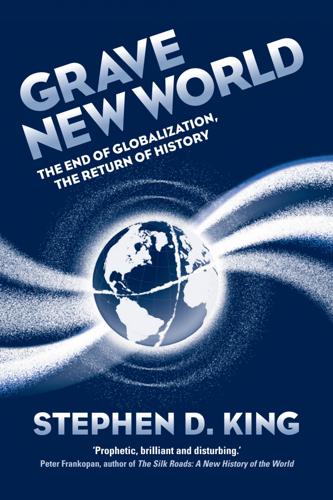
Grave New World: The End of Globalization, the Return of History
by
Stephen D. King
Published 22 May 2017
By reducing the cost of information – and by creating global online ‘hubs’ like Alibaba and Amazon, where buyers and sellers can ‘virtually’ meet one another – the global marketplace should expand, competition should intensify and pricing should become more transparent. All in all, the allocation of resources should improve, leaving output higher, prices lower and everyone – other than inefficient rent-seeking companies – happier. Yet this argument assumes that technology only works by reducing barriers to entry, limiting information asymmetries and encouraging price discovery. That’s much too narrow a view. Technology also fundamentally alters production techniques and hugely skews the distribution of income and wealth. In both cases, technology can be enormously damaging to globalization. The decision on where to locate production facilities ultimately depends on a trade-off between the forces of dispersion and agglomeration.
…
They weren’t outsiders looking in on a Minsky world: they were, collectively, very much part of that world.14 UNDERMINING THE NEW WISDOM The financial crisis was not, however, a story about euphoria alone. It stemmed from a combination of factors, each of which challenged what had become conventional thinking over the previous three decades. Markets themselves were failing, thanks in part to asymmetric information: the ultimate investors in US sub-prime mortgages were often blissfully unaware of the risks they were taking, largely because the underlying nature of their risky investments was typically camouflaged through the copious use of collateralized debt obligations and other innovative financial ‘disguises’.15 Incentives were badly skewed: those who made commission from selling risky products were typically able to pass the risk on to others – often thousands of miles away – using ‘pile ’em high and sell ’em cheap’ tactics.
…
King, The End of Alchemy: Money, banking and the future of the global economy, Little, Brown, London, 2016. 13.Sherman McCoy, the protagonist in Wolfe’s Bonfire of the Vanities, is a Wall Street trader whose life goes horribly wrong just when it seemed to be going so well: he was a self-styled Master of the Universe. 14.For a discussion of the effects of dysfunctional belief systems, see R. Hausmann, ‘Through the Venezuelan looking glass’, Project Syndicate, August 2016, available at: https://www.project-syndicate.org/commentary/venezuela-destructive-belief-systems-by-ricardo-hausmann-2016-08 15.The classic article on asymmetric information is George Akerlof, ‘The market for lemons: Quality, uncertainty and the market mechanism’, Quarterly Journal of Economics, 84:3 (1970), pp. 488–500. 16.See, for example, E. Passari and H. Rey, Financial Flows and the International Monetary System, National Bureau of Economic Research Working Paper No. 21172, Cambridge, MA, May 2015. 17.The pre-2000 figures come from M.

The Globalization Paradox: Democracy and the Future of the World Economy
by
Dani Rodrik
Published 23 Dec 2010
Stiglitz won a Nobel Prize in 2001 (along with George Akerlof and Mike Spence) for theoretical work showing how “asymmetric information” distorts incentives in a wide range of markets. If you know more than I do about the value of what you are selling me—whether it is your used car, your labor, or your debt—then we’re in for a troubled relationship. Prices in such transactions tend to provide the wrong signals. Many trades that should not happen do, while others that should happen don’t. Many of the pathologies of financial markets—boom-and-bust cycles, financial panics, lack of access to credit by otherwise creditworthy borrowers—can be explained by information asymmetries of this type (often interacting with other market distortions).
…
If the answer is not an unqualified yes to these and a multitude of other similar questions, financial markets will fail. Unfortunately, such failings are legion, which is why we have become so accustomed to the financial market pathologies they produce. Economists are not unaware of these problems. The economics literature is chockful of analyses of these failings, which go by names such as asymmetric information, limited liability, moral hazard, agency costs, multiple equilibria, systemic risk, implicit guarantees, information cascades, and so on. Each one of these phenomena has been studied to death with intricate mathematical reasoning and empirical illustrations. By now most economists also understand that these problems have not been adequately addressed in the global economy.
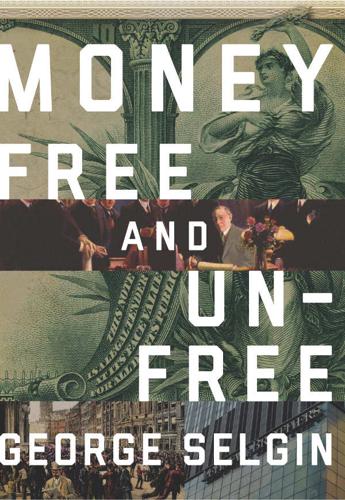
Money Free and Unfree
by
George A. Selgin
Published 14 Jun 2017
In particular, why have national governments almost universally taken over the business of issuing coins and paper currency, and replaced precious metals with fiat money as the base supporting bank-issued money? Why have they not (in developed countries, at least) also nationalized the production of checking accounts, choosing instead to tax and regulate private banks? Standard answers to these questions refer to market failures (natural monopolies, externalities, or information asymmetries) that might render unregulated private production of money inefficient or unstable or infeasible. Market-failure explanations assume that governments shape monetary institutions to serve money holders, by providing a more efficient and stable payments system than would exist under laissez faire.
…
Therefore, I think it worthwhile to consider some market-failure arguments that may have played a tacit role in the movement to suppress state bank notes. GRESHAM’S LAW Three possible causes of currency-market failure that might supply a rationale for the 10 percent tax are Gresham’s law, asymmetric information, and network externalities. Gresham’s law asserts that “bad money drives good money out of circulation.” Modern writers consider it applicable only where a single monetary unit is defined in terms of two intrinsically distinct mediums, implying an official “fixed” exchange rate between them.
…
State bank notes were, in fact, often accepted at a discount relative to legal tender—this was, indeed, one of the chief complaints lodged against them. The complaint meant that some other medium—gold or greenbacks—was the de facto unit of account. To the extent that nonpar exchange was not costless, Rolnick and Weber’s law should have favored national bank notes over state bank notes. ASYMMETRIC INFORMATION If some agents lack information concerning the intrinsic values of different currencies, something like Gresham’s law can occur even where nonpar exchange is costless. Suppose that there are two note-issuing banks, S and N, and that bank S maintains a riskier loan portfolio and a lower reserve ratio than bank N.
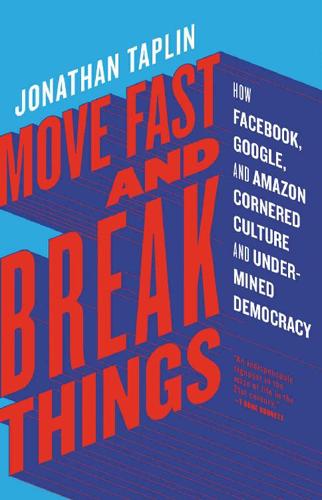
Move Fast and Break Things: How Facebook, Google, and Amazon Cornered Culture and Undermined Democracy
by
Jonathan Taplin
Published 17 Apr 2017
The false democracy that places art and random uploads side by side has, I believe, led too many to believe that art is easy to make and therefore not valuable. As James DeLong said, “Google can continue to do well even if it leaves providers of its [content] gasping like fish on a beach.” Once upon a time a critic such as Pauline Kael or Greil Marcus could help me navigate this information asymmetry, driving interest in work they deemed to be of quality. The hegemony of the blockbuster in music, books, and film allows marketers to bypass critics, rendering them almost irrelevant to the process. Do you think the producer of Michael Bay’s Transformers spends one minute worrying about critics?
…
Researcher Sara Kingsley at the University of Massachusetts found real problems with the crowdwork model. A direct and limitless supply of labor and tasks should produce a perfectly competitive market; however, data collected from our yearlong study of crowdwork suggests that the reverse is true. Rife with asymmetric information problems, crowdsourcing labor markets are arguably not just imperfect, but imperfect by design. Kingsley found that Amazon could constantly lower the piecework price it paid on Mechanical Turk and that it was continually opening up new low-labor-cost countries, such as India, to the platform.
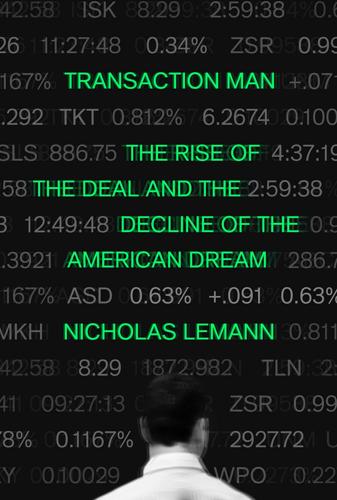
Transaction Man: The Rise of the Deal and the Decline of the American Dream
by
Nicholas Lemann
Published 9 Sep 2019
When Jensen left for Harvard, Meckling felt betrayed and broke off their friendship forever. When a challenge to financial economics—in particular to the efficient market hypothesis—began to emerge, roughly speaking from the left, within the profession, it had two major components. One was the idea of information asymmetry: markets could not price everything perfectly if all participants did not have equal access to accurate information. The other was behavioral economics, which focused on the many ways the human mind was naturally prone to misperceive reality and how that would affect people’s interactions with economic markets.
…
Ron Hubler, Howie Huffington, Arianna Hyde Park Iacocca, Lee IBM Icahn, Carl identity politics Illinois legislature immigrants, undocumented index funds, invention of India individualism; end of Industrial Revolution; corporate revolution compared to inequality: economic, see wealth, concentration of; racial, see racism inflation; interest rates and; wages and information asymmetry Inner-City Muslim Action Network Instagram institutions: individualism vs.; loss of faith in; as mature groups; as necessary for pluralism; transaction-based order vs.; see also corporations; federal government; Organization Man insurance companies Intel Interest Equalization Tax interest groups; desire to eliminate; successes of; types of interest rates; deregulation and; Greenspan and; inflation and; on mortgages Internal Revenue Service International Nickel International Typographical Union Internet; bubble of 2000; early conceptions of; financial industry on; as predicted in fiction; regulation of; see also networks; Silicon Valley interstate banking Interstate Commerce Commission Investing in US investment banking; academic paradigm shift in; antitrust suit against; changes to in 1970s; commercial banking vs.; computerization of; deregulation of, see deregulation; diversified portfolios in; Glass-Steagall Act and, see Glass-Steagall Act; SEC and, see Securities and Exchange Commission; shifting clients of; see also Morgan Stanley; specific financial instruments Irish Americans Italian Americans Itô, Kiyosi ITT Jackson, Andrew Jackson, Jesse Jackson, Mahalia Jacobs, Irwin Japan; auto industry in Jdate Jefferson, Thomas Jensen, Michael; as advocate for free markets; background of; character of; corporations studied by; at Harvard; on integrity; in Landmark; mind shift of; at Rochester; at University of Chicago Jensen, Stephanie Jews; in finance Jhering, Rudolf von Jobs, Steve Johns Hopkins University Johnson, Earl Johnson, Jonathan Jones, Doug Journal of Applied Corporate Finance Journal of Financial Economics J.P.
…
As the Treasury was working on its report about Long-Term Capital Management, Yellen’s deputy, Doug Elmendorf, was working with her to try to figure out where she stood on derivatives regulation. Because it tracks so closely with what actually happened ten years later, one memo from Elmendorf to Yellen, from December 1998, is eerily prescient about the possibility for disaster that the new financial system had created. Elmendorf wrote: One specific effect of asymmetric information [meaning that in over-the-counter derivatives markets, no party to a transaction knew the underlying economic condition of the other parties] is to increase the risk of a general financial panic (“systemic risk”). Because market participants cannot judge the financial health of institutions they deal with, bad news about one institution has a contagion effect on other institutions, reducing their access to capital as well.

Finance and the Good Society
by
Robert J. Shiller
Published 1 Jan 2012
But, lacking the subsidy e ectively given by the U.S. government via Fannie Mae and Freddie Mac, mortgage securitization has not been common anywhere else.6 Before the crisis of 2007 nance theorists saw clear innovation in mortgage securitization. Securitized mortgages are, in the abstract, a way of solving an information asymmetry problem—more particularly the problem of “lemons.” This problem, rst given a theoretical explanation by George Akerlof, refers to the aversion many people have to buying anything on the used market, like a used car. They worry that they can’t judge whether the item has defects, and that they will get stuck with a lemon.
…
In much of the rest of the world, although there has been some limited attempt at mortgage securitization, investors have mostly held mortgages indirectly by owning shares in the mortgage originators. 7. Franco Modigliani and Merton Miller (1963) assumed that investors did not have to expend any resources to acquire information about the assets they invest in. George Akerlof shared the 2001 Nobel Prize in economics for a 1970 article that detailed how information asymmetry sometimes prevents markets from existing. 8. Akerlof (1970). 9. Hill (1997). 10. National Commission on the Causes of the Financial and Economic Crisis in the United States (2011): 196. 11. Shiller (2008). 12. Davis (2006) and Caplin et al. (1997). Chapter 6. Traders and Market Makers 1. Montesquieu (1773 [1748]): Volume II, Book XX, Chapter II, p. 2. 2.
…
Capital: A Critique of Political Economy. New York: Modern Library. Marx, Karl, and Friedrich Engels. 1906 [1848]. Manifesto of the Communist Party. Chicago: Charles H. Kerr & Co. Mayer, Colin. 1990. “Financial Systems, Corporate Finance, and Economic Development.” In R. Glenn Hubbard, ed., Asymmetric Information, Corporate Finance, and Investment, 307–32. Chicago: University of Chicago Press. Melamed, Leo. 2009. For Crying Out Loud: From Open Outcry to Electronic Screen. Hoboken, NJ: Wiley. Mian, Atif, and Amir Su . 2010. “Household Leverage and the Recession of 2007 to 2009.” IMF Economic Review 58:74–117.

The Missing Billionaires: A Guide to Better Financial Decisions
by
Victor Haghani
and
James White
Published 27 Aug 2023
However, we are skeptical that, from a purely financial perspective, ignoring the potential “YOLO” (You Only Live Once!) value of speculation, this activity improves individual investors' welfare. When investors trade in options on a single stock, they are likely engaging in two zero‐sum games at once—or more likely two negative‐sum games after trading costs, uncompensated risk, and information asymmetries.n Options markets are perhaps more markedly zero‐sum in that every buyer of an option must find a counterparty willing to short that option contract. This likely requires stronger conviction than convincing a counterparty to underweight a particular stock versus its index weight. Taken together, this seems like a pretty strong indictment of individuals buying or selling single stock options.
…
It seems investors fear severe stock market crashes quite a bit.4 The theory may be failing to incorporate important features of real‐world markets, such as transaction costs (particularly for the first half of the twentieth century), subsistence consumption levels, habit formation,5 heterogeneous and uninsurable idiosyncratic shocks,6 separation between risk‐aversion and intertemporal substitution,7 market segmentation, and information asymmetry. Connecting the Dots The ERP puzzle remains an unresolved question in economics, and research is actively underway exploring each one of these potential explanations. It's one of our favorite economics puzzles because of how it makes the connections among risk‐aversion, interest rates, and equity risk premia and also because—possibly—it helps explain why the equity markets play such an important role in modern economies.
…
Does the Expected Utility framework support such investing for individual investors, or is it at best only suitable for large and sophisticated financial institutions? A good starting point is to recall that when you don't want to buy something, it does not automatically follow that you should want to take the opposite position and short it. Risk, trading costs, and asymmetric information are three reasons why there should naturally be a range of prices for an asset over which you want to be neither a buyer nor a seller. If you believe that the expected return on equities tends to go up when equities fall in price, you may want to sell puts on the market to automate your rebalancing intentions.

Skin in the Game: Hidden Asymmetries in Daily Life
by
Nassim Nicholas Taleb
Published 20 Feb 2018
I hence view Sharia as a museum of the history of ideas on symmetry in transactions. Sharia establishes the interdict of gharar, drastic enough to be totally banned in any form of transaction. It is an extremely sophisticated term in decision theory that does not exist in English; it means both uncertainty and deception—my personal take is that it means something beyond informational asymmetry between agents: inequality of uncertainty. Simply, as the aim is for both parties in a transaction to have the same uncertainty facing random outcomes, an asymmetry becomes equivalent to theft. Or more robustly: No person in a transaction should have certainty about the outcome while the other one has uncertainty.
…
The question “Is it ethical to sell something to someone knowing the price will eventually drop?” is an ancient one—but its solution is no less straightforward. The debate goes back to a disagreement between two stoic philosophers, Diogenes of Babylon and his student Antipater of Tarsus, who took the higher moral ground on asymmetric information and seems to match the ethics endorsed by this author. Not a piece from both authors is extant, but we know quite a bit from secondary sources, or, in the case of Cicero, tertiary. The question was presented as follows, retailed by Cicero in De Officiis. Assume a man brought a large shipment of corn from Alexandria to Rhodes, at a time when corn was expensive in Rhodes because of shortage and famine.

The Euro and the Battle of Ideas
by
Markus K. Brunnermeier
,
Harold James
and
Jean-Pierre Landau
Published 3 Aug 2016
The answer is that banks are in general better at lending than individual savers for a number of reasons. First, banks identify more easily projects that are worth funding and pursuing. Underlying these arguments is what economists refer to as asymmetric information: Borrowers know more about their projects than any individual lender, but dedicated lenders, such as banks, can at least mitigate information asymmetries. Second, owing to their expertise, banks can more easily enforce repayment than an individual lender. Third, banks can lend to many different borrowers, making it easier to diversify idiosyncratic risks. Modern Banking and Capital Markets The Initial Blaming of Anglo-American Banking Modern banks have moved beyond this traditional model of banking.
…
Another simple form of attracting new capital is to force banks to issue new equity. On their own, individual firms would be reluctant to do so because of the associated stigma, but centrally enforced, coordinated actions are of course free of such considerations. Thorough and publically communicated asset quality reviews could have a similar effect: they would reduce asymmetric information, reduce the stigma, and encourage the issuance of additional equity. The issuance of “contingent convertible bond,” so called CoCos, was pushed as a “cheaper” alternative. Cocos is a hybrid fixed-income security that counts toward capital requirements as it can be converted into equity in case a pre-specified trigger is reached.
…
Index Abe, Shinzo, 285 Ackermann, Joseph (“Joe”), 166, 330 Adam, Konrad, 65 Adenauer, Konrad, 40, 47–48 AEG (firm), 49 Agenzia per la Promozione dello Sviluppo ne Mezzogiorno (Italian organization), 240 Agreement on Net Financial Assets (ANFA), 325 AIG (firm), 314 aircraft industry, 71 Allais, Maurice, 68, 71 Alternative für Deutschland (German party), 65 Andrieux, François, 44 Anglo-American economic perspective, 249–51 Anglo-Irish Bank, 303–4, 338 Anglo-Saxon financial capitalism, 162 anti-Semitism, 55, 61 Argentina, 126, 295, 330 Aron, Raymond, 65 Asia Infrastructure Investment Bank, 275 Asian economic crisis, 22, 157, 165; IMF and, 290, 293; US and, 262 Asian Monetary Fund (proposed), 22 Asmussen, Jörg, 199, 264, 337–38, 350, 355 asset-based securities, 360; alternatives to, 367 assets: asset quality reviews, 202; collateral policy on, 192–93; ESBies (European safe bonds), 113–14; government guarantees for, 194–95; held by US banks, 255; mark-to-market assets, 163–64; purchased by China, 280–81; purchased by Russia, 283–84; ring-fencng of, 213–14; safe assets, 182–83, 222–26 asymmetric information, 162 austerity, 380; debate over stimulus versus, 148–54; in Italy, 335 Bagehot, Walter, 131, 193, 332 Balcerowicz, Leszek, 147 Balladur, Edouard, 80–81 Balogh, Thomas, 258 Banca d’Italia, 242, 325 Banco d’España (Spanish central bank), 323 Banco Espirito Sancto (Portuguese bank), 201–2 bank debts, 303–4 Bank Deutscher Länder, 344 Bankia (Spanish bank), 189, 192 banking, 157–59; bail-ins of, 197–203; bank failures, 201–2; capital markets and, 162–66; collateral policy for, 192–93; in currency unions, 90, 211–22; direct recapitalization of, 195–97; ECB’s supervision of, 368–72; Eurosystem, 321–25; exposure limits in, 185; in France and Germany, 46–48; during global financial crisis, 173–74; interaction of banks with states, 182–83; interbank market in, 166–72; as issue for troika, 302; money creation in, 160–61; recapitalization of banks, 357; traditional, 159–62; in UK, following Lehman collapse, 269; zombie and vampire banks, 189 banking unions, 211–12 Bank of Cyprus, 199 Bank of England, 89, 157, 319 bankruptcies, 256–59 Banque de France, 325 Barber, Tony, 272 Barre, Raymond, 72 Barroso, José Manuel, 19, 113, 230, 301 Basel II regulations, 208 Bastiat, Fréderic, 57, 69–70 Bayerische Hypotheken- und Wechsel-Bank (Germany), 171 Bear Stearns (firm), 264 Beck, Ulrich, 27 Belgium: on currency unions, 210; Dexia bank bailed out by, 217; on UK’s threat to leave EU, 277; universal banking in, 159 Belka, Marek, 302 BELLs (Bulgaria, Estonia, Latvia, and Lithuania), 147 Berlusconi, Silvio, 94, 116–17, 243, 247, 335; on euro, 248; meets with Merkel and Sarkozy, 246, 336; Putin and, 285 Bernanke, Ben, 314 Biagi, Marco, 244 Bismarck, Otto von, 58 Blair, Tony, 268–69 Blanchard, Olivier, 143, 301 blue Eurobonds, 112 Böhm, Franz, 62 Bossi, Umberto, 335–36 Bowe, John, 304 Brady Plan, 291 Brazil, 330 Bresciani-Turroni, Costantino, 238 Bretton Woods system, 77–79; alternatives to, 312; gold standard and, 90; IMF created by, 288 Bridge of Spies (film, Spielberg), 45 Britain.
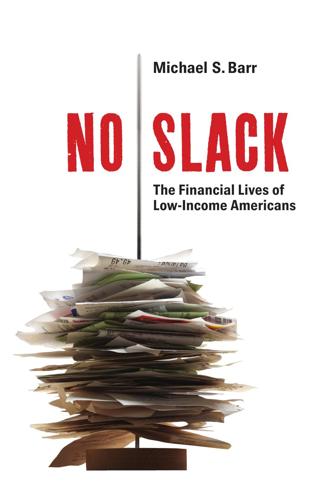
No Slack: The Financial Lives of Low-Income Americans
by
Michael S. Barr
Published 20 Mar 2012
Of course, revealing such information would also reduce broker and creditor profit margins. But as the classic market competition model relies on full information and assumes rational behavior based on understanding, this proposal attempts to remove market frictions from information failures and to move market competition more toward its ideal. De-biasing consumers would reduce information asymmetry and lead to better competitive outcomes. Improving Truth in Lending Optimal disclosure will not occur in all markets through competition alone because in some contexts firms have incentives to hide information about products or prices and consumers may not insist on competition based on transparency because they misforecast their own behavior.
…
In reality, the government does not regulate as the borrower believes, and the lender does not necessarily behave as the borrower hopes. Instead, information is hidden from the borrower, information that, if available, would improve market competition and the borrower’s outcomes. Given the consumer’s probably false background assumptions and the reality of asymmetric information favoring the lender and broker, we suggest that creditors be required to reveal useful information to the borrower at the time of the mortgage loan offer, including disclosure of the borrower’s credit score and the borrower’s qualifications for the lender’s mortgage products and rates. Creditors could be required to offer information regarding the typical repayment histories for borrowers of this type with this mortgage product.
…
Many borrowers may be unable to compare complex loan products and act optimally for themselves based on such an understanding (see, for example, Ausubel 1991). We thus deploy an opt-out strategy to make it easier for borrowers to choose a standard product and harder for borrowers to choose a product that they are less likely to understand. At the same time, lenders may seek to extract surplus from borrowers because of asymmetric information about future income or default probabilities (see Bond, Musto, and Yilmaz 2005), and, in the short term, lenders and brokers may benefit from selling borrowers loans they cannot afford. Thus a pure default would be undermined by firms, and regulation needs to take account of this market pressure by pushing back.

How Markets Fail: The Logic of Economic Calamities
by
John Cassidy
Published 10 Nov 2009
But the modern theory of the invisible hand that Friedman and others promoted explains too much with too little. At its core, it says simply: self-interest plus competition equals nirvana. There is no mention in this equation of the institutions of modern capitalism, such as multinational corporations, derivatives markets, universal banks, and mutual funds. Information asymmetries, uncertainty, copycat behavior, network effects, and disaster myopia—the invisible hand metaphor abstracts from all of these awkward features of reality, too. Don’t worry, its defenders say, the market will take care of things. Just make sure that competition reigns, prevent the emergence of monopolies, and a good outcome is guaranteed.
…
He expressed his thoughts in clear English, used equations sparingly, and made little attempt to keep up with intellectual fashion. But what Minsky lacked in modernity, he more than made up for in insight. Although he rarely made explicit reference to concepts such as the prisoner’s dilemma, asymmetric information, or disaster myopia, his analysis displayed an acute awareness of the various sources of market failure. A keen student of Keynes’s Treatise on Probability as well as The General Theory, he had never accepted that financial markets aggregated economic data efficiently, or that decisions involving the future could be represented as a process of taking mathematical expectations of known probabilities.
…
American International Group (AIG) America Online (AOL) Ameriquest Mortgage Company Amherst College AMRESCO Amtrak “Anatomy of Market Failure, The” (Bator) Anderson, Martin anti-Semitism antitrust laws Apostles Apple Army, U.S. Air Corps Corps of Engineers ARPANET Arrow, Kenneth Arthur, W. Brian Arthur Andersen Asch, Solomon asset-backed securities (ABSs) Associates First Capital asymmetric information AT&T Atomic Energy Commission, U.S. Attlee, Clement Australia Axelrod, Robert Aylwin, Patricio Bachelier, Louis Bagehot, Walter Baker, James Bank of America Bank of England Monetary Policy Committee Bankers’ Panic (1907) Bankers Trust Bank for International Settlements Baran, Paul Barclays Bank Barings Bank Barone, Enrico Barro, Robert Barron’s Bartlett, Bruce Bator, Francis Baumol, William Bayh-Dole Act (1984) B&C lending Bear Stearns Beatles Beauty Contest theory Bebchuk, Lucian Becker, Gary behavioral economics Bell Laboratories Beneficial Finance Bennett, Alan Bentham, Jeremy Berkshire Hathaway Inc.

People, Power, and Profits: Progressive Capitalism for an Age of Discontent
by
Joseph E. Stiglitz
Published 22 Apr 2019
See, e.g., Stiglitz, “Monopoly, Non-Linear Pricing and Imperfect Information: The Insurance Market,” Review of Economic Studies 44, no. 3 (1977): 407–30. Reprinted in Selected Works of Joseph E. Stiglitz, Volume I: Information and Economic Analysis (Oxford: Oxford University Press, 2009), 168–92. AI also results in information asymmetries. Some firms know more than others, and the Big Tech firms know more than consumers. Markets are only efficient in the absence of distortionary asymmetries in information, whether those were natural or created by the market. Big Data is increasing these asymmetries, and thereby potentially making resource allocations less efficient. 19.Jennifer Valentino-DeVries, Jeremy Singer-Vine, and Ashkan Soltani, “Websites Vary Prices, Deals Based on Users’ Information,” Wall Street Journal, Dec. 24, 2012. 20.To use the colorful language of Nobel Prize winners George Akerlof and Robert Shiller, to “phish for phools.”
…
In all economies, large banks and other financial institutions can exert disproportionate power. 87.Vincent Larivière, Stefanie Haustein, and Philippe Mongeon, “The Oligopoly of Academic Publishers in the Digital Era,” PLoS ONE 10, no. 6 (2015): e0127502, https://doi.org/10.1371/journal.pone.0127502. 88.Research over the past half century has identified a large number of “market failures,” circumstances in which markets fail to produce efficient outcomes, including the absence of perfect risk and capital markets and imperfect and asymmetric information. This chapter (and more broadly this book) has focused on one market failure—lack of competition—because I believe it is central to the maladies facing the economy. 89.CEO compensation in the US has increased enormously over the past four decades, and is much larger than in other advanced countries.
…
Sampson, Great American City: Chicago and the Enduring Neighborhood Effect (Chicago: University of Chicago Press, 2011). 14.More generally, the spatial allocation of economic activity is not efficient because of strong congestion and other location-specific externalities (externalities, recall, arise whenever the full consequences of an individual’s decisions are not reflected in the costs he has to bear; and whenever there are externalities, markets are not efficient.) 15.The role played was partially inadvertent, a by-product of World War II, as government helped move people from the rural to the urban sector for war production and as it helped ensure that those returning from the war had the skills necessary for success in the new industrial economy, through the GI Bill. For a greater elaboration of this point, see the studies cited in chapter 6, note 7. 16.Modern economic theory (based on asymmetric information) has explained why this is so, and why the problems are inherent. 17.This idea has been elaborated in Joseph E. Stiglitz and Jungyoll Yun, “Integration of Unemployment Insurance with Retirement Insurance,” Journal of Public Economics, 89, no. 11–12 (2005): 2037–67; and “Optimal Provision of Loans and Insurance Against Unemployment From A Lifetime Perspective” (NBER Working Paper No. 19064, 2013). 18.I am indebted to Alan Krueger for discussions on these issues.

Democratizing innovation
by
Eric von Hippel
Published 1 Apr 2005
But what about manufacturers that specialize in custom products? Isn’t it their business to respond to special requests? To understand which way the innovate-or-buy choice will go, one must consider both transaction costs and information asymmetries specific to users and manufacturers. I will talk mainly about transaction costs in this chapter and mainly about information asymmetries in chapter 5. I begin this chapter by discussing four specific and significant transaction costs that affect users’ innovate-or-buy decisions. Next I review a case study that illustrates these. Then, I use a simple quantitative model to further explore when user firms will find it more cost-effective to develop a solution—a new product or service—for themselves rather than hiring a manufacturer to solve the problem for them.
…
That is, the color of the circuit boards in the user factory became an item the problem solvers needed to know only when engineers, in the course of their development of the component placer, decided to use a vision system in the component-placing machine they were designing, and the fact that the boards were yellow became relevant only when the engineers chose a video camera and lighting that could not distinguish the metalized patterns on the board against a yellow background. Clearly, it can be costly to transfer the many items of information that a product or service developer might require—even if each individual item has low stickiness—from one site to another. How Information Asymmetries Affect User Innovation vs. Manufacturer Innovation An important consequence of information stickiness is that it results in information asymmetries that cannot be erased easily or cheaply. Different users and manufacturers will have different stocks of information, and may find it costly to acquire information they need but do not have. As a result, each innovator will tend to develop innovations that draw on the sticky information it already has, because that is the cheapest course of action (Arora and Gambardella 1994; von Hippel 1994).
…
Conversely he found that increased stickiness of technology-related information was associated in a significant reduction in the amount of technology design done by the user (Kendall correlation coefficients = 0.4789, P < 0.05). In other words, need-intensive tasks within product-development projects will tend to be done by users, while solutionintensive ones will tend to be done by manufacturers. Low-Cost Innovation Niches Just as there are information asymmetries between users and manufacturers as classes, there are also information asymmetries among individual user firms and individuals, and among individual manufacturers as well. A study of mountain biking by Lüthje, Herstatt, and von Hippel (2002) shows that information held locally by individual user-innovators strongly affects the type of innovations they develop.

Money: 5,000 Years of Debt and Power
by
Michel Aglietta
Published 23 Oct 2018
However, doing the job of a financial intermediary involves a lot more than arranging networks to connect different actors, however effective these may be. It also requires specialised information and a specific expertise for selecting assets and distinguishing good projects from bad.2 That is to say, the informational asymmetries that result from the act of credit cannot be eliminated by transfer technologies. This is why the Internet giants will very likely be uninterested in becoming financial intermediaries. If they were to become such, what would define them as banks would be the combination of a capacity for intermediation and a payments network.
…
From this we can deduce a certain reticence towards providing liquidity in stress situations, above all in over-the-counter markets without clearing mechanisms and without a central settlements agent. Abundant macroeconomic liquidity can thus coexist with insufficient market liquidity, on account of informational asymmetries and counterparty risks. Banking crises are the most serious crises because they strike at the heart of the monetary system’s functioning. They show how insufficient the law of reflux is in ensuring this system’s stability. Contagion leads to three categories of banking crises. The original crises are panics produced by the conversion of deposits into cash.
…
These characteristics mean that the law of reflux is fulfilled in the centralisation of the relations between interbanking correspondents within multilateral clearing systems.47 Banks are institutions that offer non-tradable credits combined with the provision of payment services. They invest in specific information whose quality cannot be evaluated by depositors. This asymmetric information structure, linked to network effects in the payment system, implies that the most effective relationship is for deposits to be valued at par in units of account, and hence convertible at par into the base currency. This relationship expanded greatly in the second half of the nineteenth century, when deposits became transferable via cheques.
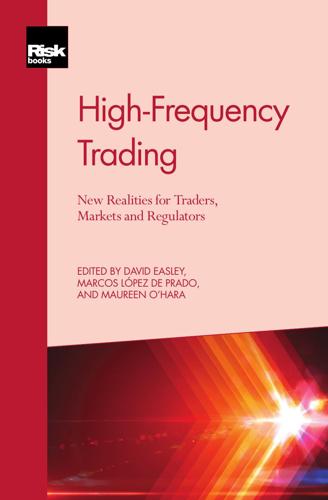
High-Frequency Trading
by
David Easley
,
Marcos López de Prado
and
Maureen O'Hara
Published 28 Sep 2013
Being closer to actual normality and independence of observations (Figure 1.2) allows the application of standard statistical techniques, which means faster calculations, shorter cycles and thus faster reaction. The upshot of this new paradigm is clear: even if connectivity speed ceased to be a significant edge, HFT would still exist. MORE THAN SPEED Easley et al (1996) linked liquidity to informational asymmetry by identifying how market makers adjust their bid–ask spreads to the probability of informed trading (PIN). Because informed traders monetise their superior knowledge of a security’s future price by adversely selecting uninformed traders, market makers must update their quoted levels and sizes in real time in a manner that reflects their estimate of PIN.
…
This allows HF traders to place numerous independent bets every day on the same instrument or portfolio, thus 2 i i i i i i “Easley” — 2013/10/8 — 11:31 — page 3 — #23 i i THE VOLUME CLOCK: INSIGHTS INTO THE HIGH-FREQUENCY PARADIGM taking advantage of the multiplicative effect postulated by the “fundamental law of active management”, ie, that a tiny predictive power on a sufficiently large number of independent bets yields a high information ratio and thus a profit (Grinold 1989). The goal is to exploit the inefficiencies derived from the market’s microstructure, such as rigidities in price adjustment within and across markets, agents’ idiosyncratic behaviour and asymmetric information. As a consequence of this higher frequency, the identification of opportunities, risk control, execution and other investment management activities must be automated. Not all algorithmic trading occurs at high frequency, but all high-frequency trading requires algorithms. It is useful to contrast the divergent worlds of the low-frequency (LF) traders and the HF traders.

Alchemy: The Dark Art and Curious Science of Creating Magic in Brands, Business, and Life
by
Rory Sutherland
Published 6 May 2019
Noticeably, brands such as Juul and Vype are starting to emerge in the similarly haphazard vaping market. In many ways, expensive advertising and brands arise as a solution to a problem identified by George Akerlof in his 1970 paper ‘The Market for Lemons’ in the Quarterly Journal of Economics. The problem is known as ‘information asymmetry’, whereby the seller knows more about what he is selling than the buyer knows about what he is buying. This lesson was learned the hard way in Eastern Bloc countries under communism; brands were considered un-Marxist, so bread was simply labelled ‘bread’. Customers had no idea who had made it or whom to blame if it arrived full of maggots, and couldn’t avoid that make in future if it did, because all bread packaging looked the same.
…
We often forget that, without this assurance of quality, there simply isn’t enough trust for markets to function at all, which means that perfectly good ideas can fail. Branding isn’t just something to add to great products – it’s essential to their existence. Evolution solved the problem of asymmetric information and trust for flowers and bees back when our ancestors were still living in trees. Bees have been around for at least 20 million years, floral plants a good deal longer. My analogy between signalling in the biological world and advertising in the commercial world may explain something I have noticed for years: if you talk to economists, they tend to hate advertising and barely understand it at all, while if you talk to biologists they understand it perfectly.

Platform Revolution: How Networked Markets Are Transforming the Economy--And How to Make Them Work for You
by
Sangeet Paul Choudary
,
Marshall W. van Alstyne
and
Geoffrey G. Parker
Published 27 Mar 2016
If you can’t find an item you want on eBay, then a good interaction has failed to occur. If you did find an item you wanted but got cheated, abused, or deceived, then a bad interaction has occurred. In general, there are four main causes of market failures: information asymmetry, externalities, monopoly power, and risk. Information asymmetry arises whenever one party to an interaction knows facts that other parties don’t and uses that knowledge for personal advantage. Consider the problem of counterfeit goods, when the seller knows that the goods are fake but does not inform the buyer. Fakes account for Skullcandy headphones with lousy sound quality, Gucci handbags with broken stitching, Duracell batteries that don’t hold a charge, OtterBox mobile phone cases that are not drop-proof, and Viagra that provides no lift.
…
The single most heavily cited article on corporate governance is a literature survey that considers only “the ways in which suppliers of finance to corporations assure themselves of getting a return on their investment.”17 The focus here is on the information asymmetry arising from the separation of ownership and control—a critical element of governance design, but far from sufficient.18 Information asymmetry between the community of users and the firm also matters, and their interests too must be aligned. Additionally, platform governance rules must pay special heed to externalities. These are endemic in network markets, since, as we’ve seen when examining network effects, the spillover benefits users generate are a source of platform value.
…
Many platform managers choose governance principles that favor themselves over their users. Yet platforms that respect their users more can expect more from their users—with benefits ultimately accruing to all. Governance will always be imperfect. Whatever the rules, partners will find new forms of private advantage. There will always be information asymmetries and externalities. Interactions lead to complications, which lead to interventions, which lead to new complications. Indeed, if good governance allows third parties to innovate, then, as they create new sources of value, they will simultaneously create new struggles to control that value.

Reinventing Capitalism in the Age of Big Data
by
Viktor Mayer-Schönberger
and
Thomas Ramge
Published 27 Feb 2018
Moreover, market participants may not want to reveal all their preferences to the market. This and similar behavior leads to the information asymmetries we mentioned earlier. Data-rich markets do not eliminate such asymmetries; but because more preference information on data-rich markets generally leads to better matches, there is less of an incentive to keep information from others: vastly improved matching aims to identify the transaction partner that gets the most value out of a transaction, the partner who is thus willing to pay the highest price, arguably outweighing some of the advantages in negotiations that many information asymmetries may offer. In data-rich markets, each exchange between potential partners reveals more information, even if not leading to a transaction, and thus betters the outcome.
…
They’re the first people to identify a new market, patent an invention, launch an efficient means of production, or introduce some other “new combination”—a way to coordinate human activity—before anyone else is aware of it. For Schumpeter and his acolytes, the resulting information asymmetry creates an economic incentive. Even though the market becomes less efficient, that is the price we pay for innovation. Hence, information imbalances aren’t necessarily bad—up to a point. The incentives created by information asymmetries are essential to innovation, but the reward for innovation cannot be permanent without harming the market. Asymmetries must be fleeting and temporal lest market predators exploit their information monopoly forever, creating a vacuum, a black hole in which information is trapped.
…
This may sound like a sensible strategy for an individual, but if it is widespread, it hurts everyone by making it difficult for others to process the information being shared. Moreover, if market participants have to assume that others are not transparent, they must factor this into their decision-making. In his classic example of information asymmetry, George Akerlof cites the market for used cars. Because it’s difficult to inspect the condition of every component of a car without disassembling it, buyers cannot really ascertain if a car they are considering purchasing is a “peach” or a “lemon” at the time of the transaction. As every used car in the market could potentially be a lemon, buyers are less inclined to pay extra for a purported peach, while sellers who actually have a car in great condition must absorb the market’s informational inefficiencies, and in most cases they either decide not to sell their cars or to sell them for less than they feel they’re worth.

Secrets of Sand Hill Road: Venture Capital and How to Get It
by
Scott Kupor
Published 3 Jun 2019
Because of this imbalance, specifically regarding investment decisions, information asymmetry can come into play (often at the expense of the founder). The VCs are repeat players and thus have the benefit of lots of years of developing their understanding of the various mechanics (especially when negotiating term sheets), whereas founders have been through the process only a handful of times, at most. What I hope to lay out for founders is a better understanding of and appreciation for the interplay between VCs and founders in order to level the playing field. Information asymmetry should not pollute the foundation of a marriage that could last ten years or more.
…
CHAPTER 9 The Alphabet Soup of Term Sheets: Part One (Economics) Now, let’s assume your startup story is compelling enough that you receive a term sheet from a VC. This is an exciting moment for many founders . . . and then their eyes start to cross. What do all those terms mean? How do you evaluate them? What’s standard, what’s not; what’s a good deal versus a bad deal? As I mentioned at the beginning of this book, the term sheet is where information asymmetry between VCs and founders comes into play the most, and often at the expense of the founder. This is because VCs have been through this process many times and have negotiated hundreds of term sheets. By contrast, founders only get a few shots on goal in a lifetime and likely can count the number of term sheets they have negotiated on one hand.
…
Here’s What I Believe about Good VCs Good VCs help entrepreneurs achieve their business goals by providing guidance, support, a network of relationships, and coaching. Good VCs recognize the limitations of what they can do as board members and outside advisors as a result of the informational asymmetry they have with respect to founders and other executives who live and breathe the company every day. Good VCs give advice in areas in which they have demonstrated expertise, and have the wisdom to avoid opining on topics for which they are not the appropriate experts. Good VCs appropriately balance their duties to the common shareholders with those they owe to their limited partners.

The Road to Ruin: The Global Elites' Secret Plan for the Next Financial Crisis
by
James Rickards
Published 15 Nov 2016
Economists have spent decades identifying imperfections in the free market model. Price signals are moved by market manipulation. Monopoly power is used to restrict supply and peg prices. Information asymmetries allow sellers to deprive buyers through hidden defects. This and more are freely admitted without ruffling the general equilibrium. Instead elites propose public policy remedies. Monopolies are addressed by antitrust enforcement. Asymmetric information is addressed by warranties. Such remedies are legion. Remedial costs and benefits are hotly debated. Yet the general equilibrium goes unquestioned. The root of general equilibrium is rational behavior.
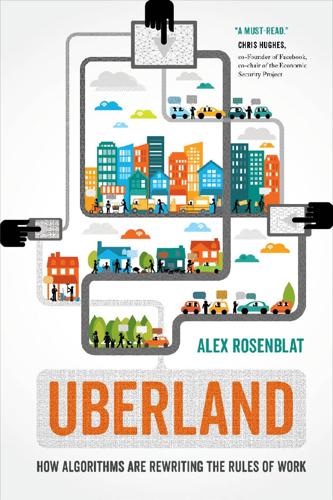
Uberland: How Algorithms Are Rewriting the Rules of Work
by
Alex Rosenblat
Published 22 Oct 2018
Chapter 3 then examines the storytelling that Uber relies upon to expand its empire. Entrepreneurship has a noble heritage in the United States, a fact that Uber makes use of when recruiting its drivers. Despite the company’s grandiose promises, however, the experience that Uber delivers to its drivers is a far cry from actual entrepreneurship. Uber’s pay structure, information asymmetries, and management controls are indicators that ridehail work is not the entrepreneurial endeavor the company makes it out to be. A lingering question—can we trust Uber to be a fair and honest broker?—is the subject of chapter 4. When we think about tech-mediated transactions, the technology part sounds pretty neutral—it’s just an engine that works behind the scenes.
…
See, e.g., Min Kyung Lee, Daniel Kusbit, Evan Metsky, and Laura Dabbish, “Working with Machines: The Impact of Algorithmic and Data-Driven Management on Human Workers,” in Proceedings of the 33rd Annual ACM SIGCHI Conference, Seoul, South Korea, April 2015 (New York: ACM, 2015), 1603–1612, https://dl.acm.org/citation.cfm?id=2702548. 7. Uber Help, “Insurance,” February 14, 2018, https://help.uber.com/h/a4afb2ed-75af-4db6–8fdb-dccecfcc3fd7?state=x31lXMTG_n8G9rQNXx_5L3qgzdIE8–7bHzhAoksAf1g%3D&_csid=KofAFMlupm3NY9go3S0D_A#_. 8. Alex Rosenblat and Luke Stark, “Algorithmic Labor and Information Asymmetries: A Case Study of Uber’s Drivers,” International Journal of Communication 10, no. 27 (2016), http://ijoc.org/index.php/ijoc/article/view/4892. 9. Douglas O’Connor, Thomas Colopy, Matthew Manahan, and Elie Gurfinkel v. Uber Technologies, Inc., August 16, 2013, http://uberlawsuit.com/Complaint.pdf. 10.
…
Lobel, “The Law of the Platform”; Calo and Rosenblat, “The Taking Economy.” 71. Tressie McMillan Cottom, “Credentials, Jobs and the New Economy,” Inside Higher Ed, March 2, 2017, www.insidehighered.com/views/2017/03/02/impact-new-economy-profit-colleges-and-their-students-essay. 72. Alex Rosenblat and Luke Stark, “Algorithmic Labor and Information Asymmetries: A Case Study of Uber’s Drivers,” International Journal of Communication 10, no. 27 (2016): 3762, http://ijoc.org/index.php/ijoc/article/view/4892. 73. A portion of my fieldwork cited here and at different points throughout this book has also been used in a joint research project and related publications.

Smart Money: How High-Stakes Financial Innovation Is Reshaping Our WorldÑFor the Better
by
Andrew Palmer
Published 13 Apr 2015
You might think you are backing a high-earning computer programmer, but it turns out that your money is funding a low-earning chemistry teacher. The information asymmetry that all markets must grapple with is particularly great when it comes to investing in people: no investor can hope to understand the aspirations, integrity, and self-discipline of a young person like the young person himself. With a traditional loan, the asymmetry still exists, but the obligation to repay at least offers greater protection to the interests of the investor. Information asymmetry goes hand in hand with a problem known as “adverse selection.” Imagine that the year is 2003, and an investor decides to put her money into a promising young Harvard undergraduate named Mark Zuckerberg.
…
“Part of what went wrong over the long term was two things: computing power and the Greenspan consensus [named for Alan Greenspan, a former chairman of the Federal Reserve] that markets worked,” says the former employee. “The finance industry could slice, dice, and analyze information in ways they couldn’t before. Information was available, which meant markets could function properly. People thought information asymmetry was the problem, and now that problem was solved. Everyone thought they could price risk. That was an illusion: you have to know what you are looking at.” What the agencies—and the industry as a whole—should have been looking at was the probability of a national downturn in American housing prices.
…
A farmer might lock in a price for his crop via the futures market, hedging himself against a sharp fall in market prices. High-frequency trading: A trading strategy that is characterized by extreme speed. High-frequency traders pursue a variety of investment approaches, from following short-term price trends to making markets. Information asymmetry: When one party knows more about a transaction than the other. Companies with very short track records or people seeking health-insurance coverage will, for example, usually be better informed about their circumstances than a potential equity investor or an insurance provider. Leverage: The amount of debt that a borrower carries relative to equity.
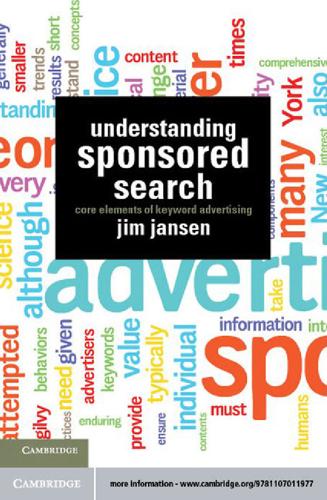
Understanding Sponsored Search: Core Elements of Keyword Advertising
by
Jim Jansen
Published 25 Jul 2011
Our answer lies with the signaling theory and, when focusing specifically on search engine results, a concept known as information foraging theory. Signaling theory Research into consumer searching on the Web characteristically has an inherent assumption of information asymmetry. In other words, we are making the assumption that consumers search to even out an information imbalance. Otherwise, why would someone search (other than for entertainment) if not to correct an information imbalance? Information asymmetry is a characteristic in decision-making situations and transactions where one of the participants has more and/or better information than others engaged in the transaction.
…
Note that this was based on data from a particular search engine and set of sponsored-search efforts, so click potential for a given sponsored-search effort may vary. 78 Understanding Sponsored Search Table 4.3.╇ Changes in conversion potential by ad rank Rank 1 2 3 4 5 6 7 8 9 10 Click potential (%) Conversion rate (%) Conversion potential (%) Change in conversion potential (%) 100.0 59.8 47.5 39.0 34.8 31.3 24.0 20.0 15.3 13.9 100.0 91.1 75.1 72.4 69.3 71.9 67.6 64.9 72.3 87.7 100.0 54.5 35.7 28.2 24.1 22.5 16.2 13.0 11.1 12.2 – −46 −34 −21 −15 −7 −28 −20 −15 10 Perception Choice Set Ad Selection –The searcher must attend to the choice sets – Choices must rise above noise level – The number of choices affects the searcher’s selection time – Information scent is used for selection User Motivation and Awareness – Addressing information asymmetry – Reducing uncertainty Ad attributes – Signals are contained within the ad itself – Where the ad appears on the SERP is also a signal Ad – Ad is a guide post to take the potential consumer to the landing page – Searchers selects ads that reduce information asymmetry – Ads must contain relevant signals and placed where searchers notice them Figure 4.5.╇ Interactive process of searcher/potential customer and advertisement.
…
The first exposure is to gain consumers’ awareness. The second exposure is to show the relevance of the product. The third exposure is to show the benefits of the product. This is also related to wear-in and wear-out aspects of advertisements. Signaling theory states that in situations where there is information asymmetry, a signal credibly relays information about a product or service to the consumer. The basis of signaling theory comes from biology and economics, but it also can be applied to understand human communication. The more difficult it is for consumers to assess aspects of a product prior to purchase, the more likely they are to rely on more costly signals to form expectations about the suitability of a product [5].

Why Stock Markets Crash: Critical Events in Complex Financial Systems
by
Didier Sornette
Published 18 Nov 2002
The phenomenon of “herding,” discussed at length in the remainder of this chapter, can also be considered an example of market failure, as it leads to important deviations from “fundamental” or “equilibrium” prices. This research has fertilized many novel approaches that are working out ways in which rational behavior could lead to less-than-optimal market outcomes. Another important step has been the introduction of so-called “information asymmetry,” which describes situations in which different parties to a transaction possess different amounts of information. Such “asymmetric information,” the fact that people are not equal with respect to the quality and quantity of information they use to make decisions, blossomed in the seventies as a way to explain the behavior of financial markets, which are indeed extremely susceptible to information difficulties.
…
This leads to a specific power law acceleration of the market price, providing our first predictive precursory pattern anticipating a crash. The imitation between agents leading to an accelerating crash hazard rate may result, for instance, from a progressive shift in the belief of investors about market liquidity, without invoking asymmetric information, and independently of the price behavior and its deviation from its fundamental value [132]. THE PRICE-DRIVEN MODEL The price-driven model inverts the logic of the previous risk-driven model: here, again as a result of the action of rational investors, the price is driving the crash hazard rate rather than the reverse.

The End of Accounting and the Path Forward for Investors and Managers (Wiley Finance)
by
Feng Gu
Published 26 Jun 2016
One study (Arthur Kraft, Huai Zhang, and Renhui Fu, 2012, “Financial Reporting Frequency, Information Asymmetry, and the Cost of Equity,” Journal of Accounting and Economics, 54: 132–149) reports that quarterly statements enhance corporate transparency (investors’ information), but the main findings of this study come from comparing quarterly to annual reports. Our suggestion maintains semiannual reports. On the other hand, a research on Singaporean companies found: “ . . . mandatory quarterly reporting does not reduce information asymmetry . . . ” (Peter Kajüter, Florian Klassman, and Martin Nienhaus, Causal Effects of Quarterly Reporting—An Analysis of Benefits and Costs, working paper (University of Muenster, Abstract, 2015).)
…
Managers are privy, for example, to recent sales and cost trends, the progress of drugs or software products under development, customer defection rate (churn), new contracts signed, and emerging markets penetration rate, among many other important business developments. No information vendor, Internet chat room, or even a sophisticated analyst can provide investors such “inside” information. No advances in information technology and investors’ processing capacity (Edgar, XBRL) can overcome the fundamental information asymmetry—managers know more than THE BOOK IN A NUTSHELL xv investors—inherent to capital markets. You might not like it, but that’s how it is and will be. In fact, in subsequent chapters we provide empirical evidence suggesting that the quality of the overall information used by investors continuously deteriorates and share prices reveal less of companies’ value and future prospects.
…
Data must be organized (not originally collected; any well-run company has all the information we prescribe) and investors’ questions answered. It would be helpful, therefore, if these managerial efforts were rewarded; and, indeed, they are. The reward to managers and companies lies in the removal of the detrimental effects on companies of inadequate disclosure and lack of transparency—information asymmetry, in the economics jargon. Simply put, the fast-diminishing usefulness of financial information we documented isn’t good for companies and their managers, because it increases investors’ uncertainty about companies’ growth prospects, as we have shown in Chapter 6, and increased uncertainty translates directly into lower share prices and higher cost of capital.12 Indeed, extensive evidence links investors’ information uncertainty to share price decline and volatility increase, particularly for medium and small companies (thin institutional holdings, low analysts following), for which investors’ information is generally constrained.13 So, it’s obviously in managers’ best interest to responsibly enhance disclosure to arrest the diminishing usefulness of financial information.
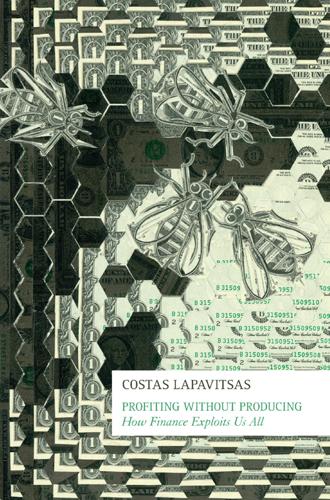
Profiting Without Producing: How Finance Exploits Us All
by
Costas Lapavitsas
Published 14 Aug 2013
The outcome of moral hazard and adverse selection could be the rationing of credit actually provided by lenders, and hence the failure of credit markets to clear.9 In this light, banks and other financial institutions are providers of services that presumably improve the efficiency of the interaction between borrowers and lenders. It is evident that information asymmetry among borrowers and lenders reduces efficiency since it forces the lender to carry the costs of monitoring. Banks are institutions that specialize in collecting information and monitoring borrowers; these tasks can be undertaken cheaply due to the size of banks but also because of the peculiar nature of banks as businesses.
…
The second point is even more important as it relates directly to contemporary banking theory. The goldsmiths view lies at the foundations of the conventional fractional reserve approach to banking; it also provides underpinnings for contemporary microeconomics of banking which seeks to explain the emergence of banks in terms of information asymmetries between borrower and lender, as was seen in earlier sections of this chapter. Banks are treated as fundamentally passive financial intermediaries that acquire reserves by collecting loanable funds thus creating a basis on which to engage in lending. In contrast, the bills view is the foundation of the alternative and far more fruitful contemporary approach to banking that is associated with post-Keynesianism.
…
Townsend, ‘Optimal Contracts and Competitive Markets with Costly State Verification’, Journal of Economic Theory 22, 1979. 9 See, for instance, Joseph Stiglitz and Andrew Weiss, ‘Credit Rationing in Markets with Imperfect Information’, American Economic Review 71:3, 1981, pp. 393–410; Nobuhiro Kiyotaki and John Moore, ‘Credit Cycles’, Journal of Political Economy 105:2, 1997. 10 Once again, the literature is very broad; see, very selectively, Hayne Leland and David H. Pyle, ‘Informational Asymmetries, Financial Structure and Financial Intermediation’, The Journal of Finance 32, 1977; John Bryant, ‘A Model of Reserves, Bank Runs, and Deposit Insurance’, Journal of Banking and Finance 4, 1980; Douglas Diamond and Philip Dybvig, ‘Bank Runs, Deposit Insurance and Liquidity’, Journal of Political Economy 91, 1983; Douglas Diamond, ‘Financial Intermediation and Delegated Monitoring’, Review of Economic Studies 51, 1984; John H.
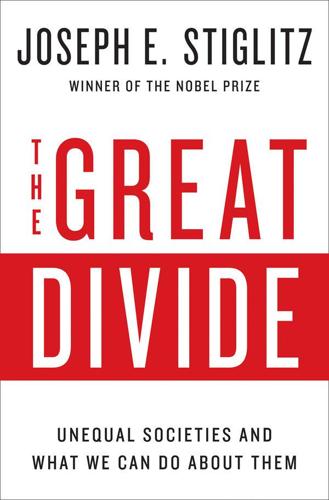
The Great Divide: Unequal Societies and What We Can Do About Them
by
Joseph E. Stiglitz
Published 15 Mar 2015
The stock options that they used to pay some of their senior executives, moreover, provided incentives for bad accounting, including incentives to engage in extensive off-balance-sheet accounting. The bankers seemingly didn’t understand the risks that were being created by securitization—including those arising from information asymmetries: The originators of the mortgages did not end up holding on to them, so the originators didn’t bear the consequences of any failure at due diligence. The bankers also misestimated the extent of correlation among default rates in different parts of the country—not realizing that a rise in the interest rate or an increase in unemployment might have adverse effects in many parts of the country—and they underestimated the risk of real estate price declines.
…
CREDENTIALED ACCOMPLICES There is one other set of accomplices—the economists who provided the arguments that those in the financial markets found so convenient and self-serving. These economists provided models—based on unrealistic assumptions of perfect information, perfect competition, and perfect markets—in which regulation was unnecessary. Modern economic theories, particularly those focusing on imperfect and asymmetric information and on systematic irrationalities, especially with respect to risk judgments, had explained how flawed those earlier “neoclassical” models were. They had shown that those models were not robust—even slight deviations from the extreme assumptions destroyed the conclusions. But these insights were simply ignored.

Augmented: Life in the Smart Lane
by
Brett King
Published 5 May 2016
Especially when it becomes very clear that there is little or no representation in government for the largest generation of voters, or where interests of incumbent industries and lobby groups resist technology change, especially in countries like the United States. Advice in health care, financial services and technical areas, along with principles of government, have been predicated for the last 100 years on the concept of information asymmetry—the fact that the government or “adviser” knows something you don’t know. Increasingly that information asymmetry simply doesn’t exist, and so it is getting harder and harder for governments to claim that they are acting in the best interests of the public when the influence of lobby or special interest groups is blatantly obvious. One thing is certain.
…
Whether it is the latest industry data, the latest research or just information about the last stocks or symptoms you looked up on the web, machines will have more data, more immediate access and the ability to have instant recall at anytime day or night. Simply put, for the last 200 years, advisers have worked on the principle of information asymmetry, where they have had better information than their clients. Today, we are at the point where machine intelligence has information asymmetry over advisers, and that’s only going to get more acute and more asymmetrical as time goes on. The only possible hope for human advisers is that they co-opt machine intelligence into their process. The Best Advice Is Real Time At best, an adviser is “just a phone call away”, but at worst is only available by appointment, dependent on availability.
…
The Best Advice Is Real Time At best, an adviser is “just a phone call away”, but at worst is only available by appointment, dependent on availability. Advice, however, no longer needs to be hinged on access to the adviser as a precursor to whether you can get access to certain information. The first concept we need to challenge is simply that you need to “go to an adviser” to get advice. Advisers have used their information asymmetry previously to insist that unless you come to them, you won’t get the right advice, or they have used asymmetry to price in a premium into the service or product. So if you wanted the right advice, not only did you have to jump through their hoops, go to their branch, office or clinic, but you also had to pay a premium for the best advice, maybe waiting days or even weeks to get to see the best advisers.

Collaborative Society
by
Dariusz Jemielniak
and
Aleksandra Przegalinska
Published 18 Feb 2020
This process characterizes what is often (and more accurately) called a gig economy: an entirely contingent workforce, available on-demand, and—thanks to advanced IT systems—ready to fulfill the “just-in-time” philosophy of workflow and inventory.29 (See figure 1 for a comparison of interest shown in the terms gig economy and sharing economy.) A contingent workforce, by the way, operates with radical information asymmetry: in this context specifically, workers are at a disadvantage because they deal with corporations that create an extensive system of gamification and psychological trickery to coerce “contractors” into working longer hours.30,31 A contingent workforce also faces an unprecedented power asymmetry that allows corporations to intercept most of the value generated by independent workers.32 Moreover, that exploitation is highly gendered and racialized.33 Silicon Valley is using technology to build a new global underclass, forced to perform what Mary L.
…
Free/Libre open source software (F/L/OSS) A term coined to avoid taking sides in the heated debate on whether the term “free software” or “open-source software” is preferable when referring to code that is freely licensed to any user and available to use, copy, study, modify, and reshare. Gig economy A phenomenon of increasing the number of occupations that rely on contingent, short-term demand, operating in radical informational asymmetry, and often enabled by intermediating online platforms. Hacktivism A set of online activities, with roots in hacker culture, which use technology to promote a social or political change. Heterarchy A form of organizing, typically used for open collaboration and peer production projects, in which the structure is nonhierarchical and any unit can be governed by others.
…
Peer production A method of cooperating in large, self-organized communities, to produce goods or services and result in a commons-based shared outcome, often enabled by online platforms. Platform capitalism An economic drive within the capital market to harness the power of cutting-edge technologies so as to connect different users and turn them into workers and customers, and to arbitrate the pricing thanks to informational asymmetry. Platform cooperativism Using technology to connect users and allow them to exchange goods and services in a nonexploitative way. Produsage The process that blurs the roles of creators (active producers) and users (passive users), typically occurring in online media, F/L/OSS, or blogs.

Competition Overdose: How Free Market Mythology Transformed Us From Citizen Kings to Market Servants
by
Maurice E. Stucke
and
Ariel Ezrachi
Published 14 May 2020
“Fear of Flying Justified: Airlines, Like Judicious Parents, Keep Secrets for a Reason: What You Don’t Know Can’t Scare You,” Metro, November 11, 2010, https://www.metro.us/news/fear-of-flying-justified/tmWjkj-7fetFPjRZjwWY. 61.Wilsher et al., “How Virgin Flight from Florida Ran Low”; Perry, “Spain Probes Ryanair”; Massey, “Ryanair Ordered to ‘Review’ Fuel Policy”; Perry, “Airline Pilots Reveal”; Smith, “Confessions.” 62.Emma Glanfield, “Eleven Planes Forced to Make Mayday Landings at British Airports Last Year Because They Were Running Out of Fuel,” Daily Mail (London), February 24, 2015, http://www.dailymail.co.uk/news/article-2947077/. 63.Glanfield, “Eleven Planes.” 64.The UK’s competition authority observed that: Buyers may not know, for example, how quality varies across brands. Markets where customers may be unsure about quality include those for professional services, used goods and complex mechanical or electronic products. When, as a result of information asymmetries, customers are unable to form an accurate assessment of product quality (e.g. if they consistently underestimate the probability of product failure), a market may operate inefficiently. Imperfect information about quality can be a particularly severe problem for infrequently purchased goods or goods the quality of which cannot be verified even after purchase—so-called credence goods.
…
McGregor, “Police Forced to Waste Millions of Taxpayer’s Money Bailing Out Collapsed Private Forensics Firm,” Evolve Politics, February 1, 2018, https://evolvepolitics.com/police-forced-to-waste-millions-of-taxpayers-money-bailing-out-collapsed-private-forensics-firm/. 64.Forensic Science Regulator Annual Report for the period November 2017 –November 2018 (published on March 15, 2019), page 3, https://assets.publishing.service.gov.uk/government/uploads/system/uploads/attachment_data/file/786137/FSRAnnual_Report_2018_v1.0.pdf. 65.House of Lords Science and Technology Committee, “Forensic Science Inquiry,” https://www.parliament.uk/business/committees/committees-a-z/lords-select/science-and-technology-committee/inquiries/parliament-2017/forensic-science; Science and Technology Select Committee, Forensic Science and the Criminal Justice System: A Blueprint for Change, 3rd Report of Session 2017–19, published May 1, 2019, HL Paper 333, https://publications.parliament.uk/pa/ld201719/ldselect/ldsctech/333/33302.htm. 66.Tom McTague, “George Osborne on Course to Privatise More Public Assets Than Any Chancellor since 1979,” Independent, December 26, 2015, https://www.independent.co.uk/news/uk/politics/george-osborne-on-course-to-sell-off-more-public-assets-than-any-chancellor-for-more-than-30-years-a6786926.html. 67.International Monetary Fund, Fiscal Monitor: Managing Public Wealth (October 2018), 5, https://www.imf.org/en/Publications/FM/Issues/2018/10/04/fiscal-monitor-october-2018. 68.IMF, Fiscal Monitor. 69.Most notable are asymmetric information, uncertainty as to outcome of treatment, and the fact that many social services may be viewed as “uneconomic” or “unquantifiable.” 70.See, for example, “The Mandate: A Mandate from the Government to NHS England,” https://www.gov.uk/government/publications/nhs-mandate-2017-to-2018. 71.In fact, large sums of money allocated for the NHS have actually been spent on private care providers.
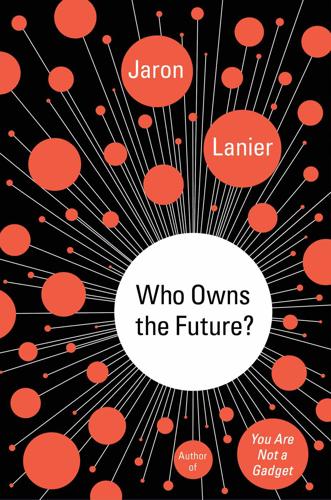
Who Owns the Future?
by
Jaron Lanier
Published 6 May 2013
Even if differential pricing turns out to be rare, the key point is that it’s hard for ordinary people who interact with Siren Servers to get enough context to make the best decisions. If not differential pricing, then some other scheme will appear in order to take advantage of information asymmetry. After all, that is what information asymmetry is for. Waiting for Robin Hood You might expect a compensatory server to always magically appear on cue. Such a server might, for instance, perform cost comparisons so as to alert consumers to differential pricing or other hazards. Sometimes the Internet will indeed produce a service that does really help.
…
The more influential digital networks become, the more potential moral hazard we’ll see, unless we change the architecture. A First Pass at a Definition A Siren Server, as I will refer to such a thing, is an elite computer, or coordinated collection of computers, on a network. It is characterized by narcissism, hyperamplified risk aversion, and extreme information asymmetry. It is the winner of an all-or-nothing contest, and it inflicts smaller all-or-nothing contests on those who interact with it. Siren Servers gather data from the network, often without having to pay for it. The data is analyzed using the most powerful available computers, run by the very best available technical people.
…
The problem in question is known as the “Market for Lemons,” after the title of the famous paper, which helped earn its author, George Akerlof, a Nobel Prize13 in Economics. The lemons in the paper were not from the lemonade stand we encountered earlier, but were instead crummy used cars for sale. The paper detailed how a prevalence of bad used cars distorted markets through the mechanism of information asymmetry. Buyers worried that sellers knew more about a used car’s problems than they were letting on, which put a pervasive burden on the market, stunted it, and made it less efficient. A truly transparent form of digital market might perhaps offer a reduced occurrence of this sort of degradation.

The Market for Force: The Consequences of Privatizing Security
by
Deborah D. Avant
Published 17 Oct 2010
Furthermore, being part of an organization can Private security and the control of force 47 use and oversee force is delegated, which mediate problems of common agency.23 Williamson adds that internal organizations are more likely to make allowances for quasi-moral involvement.24 He builds on this quasi-moral involvement in his analysis of public versus private provision of sovereign transactions.25 Sovereign transactions (foreign affairs, the military, foreign intelligence, managing the money supply and, possibly, the judiciary) are characterized by particular “contractual hazards” – asset specificity and probity.26 Transactions that are long term, highly incomplete, and require loyalty (to leadership and mission) and integrity are best provided by public bureaucracies.27 Like all relationships of delegation, public bureaucracies are subject to agency slippage, and many have documented the loss of flexibility and bureaucratic disabilities that sometimes arise.28 Market-based solutions may ameliorate these but, so long as the environmental conditions favor hierarchies, at a cost – either opportunistic incentives will increase, convergent expectations will erode, adaptations will not be appropriate, or cost will rise. Studies on privatization in the US have yielded a large body of literature consistent with Williamson’s claims.29 In a widely acclaimed 23 24 25 26 27 28 29 promote convergent expectations, mediate information asymmetry (and the strategic use of it), and has advantages for settling disputes. Ibid., pp. 29, 40. Common agency refers to the situation where principals must solve collective action problems among themselves even as they try to minimize agency slippage. This problem can take the form of multiple principles – where two or more organizationally distinct principals delegate to an agent – or common agency – where a principal is made up of more than one actor.
…
State contracts for private force How should state contracts with PSCs affect the control over force? A key variable will be the quality of the state and state forces to begin with. As indicated in the previous discussion, economic analyses assume appropriate institutions and focus on expected difficulties with monitoring and information asymmetry that should make the private delivery of sovereign tasks problematic.61 Not all states, though, have such institutions in the first place. Williamson’s description of the necessary circumstances for assuming that states best provide sovereign services corresponds to the environment in what Joel Migdal has called “strong” states – states that are coherent, capable and legitimate.62 60 61 62 See, for instance, Paul Pierson, “When Effect Becomes Cause: Policy Feedback and Political Change,” World Politics 45 (July 1993): 595–628; Paul Pierson, “Increasing Returns, Path Dependence, and the Study of Politics,” American Political Science Review Vol. 94, No. 2 (June 2000): 251–67; Douglass North, Institutions, Institutional Change and Economic Performance (Cambridge: Cambridge University Press, 1990); Robert L.
…
Given the trade-off between their ability to direct the bureaucracy to respond and their ability to only select from contractors, strong states risk paying more for private military services or losing some of their capacity to monitor and oversee the provision of these services. Depending on the level of competition and the degree to which the government specifies the details of security services, states may pay more for contractors to supply sovereign services than they would for their militaries, or be more likely to suffer problems in monitoring and information asymmetry that should increase the slippage between government goals and policy on the ground – in other words, privatizing sovereign services in strong states is likely to lead to some functional loss.64 When new threats arise and/or PSCs offer services that the state’s military is not set up to deliver, PSCs may offer short run benefits.
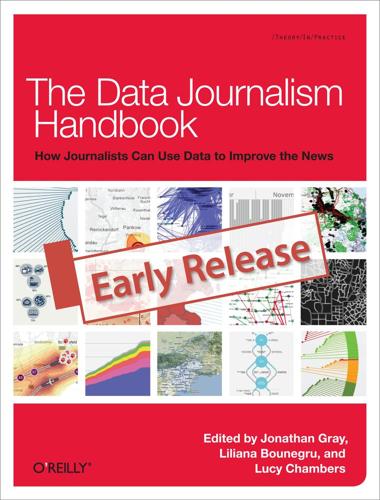
The Data Journalism Handbook
by
Jonathan Gray
,
Lucy Chambers
and
Liliana Bounegru
Published 9 May 2012
Because local newspapers have this direct impact in their neighborhood and sources become digitalized, a journalist must know how to find, analyze and visualize a story from data. — Jerry Vermanen, NU.nl A Remedy for Information Asymmetry Information asymmetry—not the lack of information, but the inability to take in and process it with the speed and volume that it comes to us—is one of the most significant problems that citizens face in making choices about how to live their lives. Information taken in from print, visual, and audio media influence citizens’ choices and actions. Good data journalism helps to combat information asymmetry. — Tom Fries, Bertelsmann Foundation An Answer to Data-Driven PR The availability of measurement tools and their decreasing prices—in a self-sustaining combination with a focus on performance and efficiency in all aspects of society—have led decision-makers to quantify the progresses of their policies, monitor trends, and identify opportunities.

Information: A Very Short Introduction
by
Luciano Floridi
Published 25 Feb 2010
Many games are based on incomplete information, with at least one player lacking information about at least one of the features (a)-(c). An interesting class of incomplete information games is based on the concept of asymmetric information. Asymmetric information Suppose we treat the interactions between John and his insurer, called Mark, as a game. We know that John is very absent-minded (he tends to forget to switch off the lights of his car) and not entirely trustworthy (he tends to lie and likes to blame his wife for his mistakes). Mark, however, does not have all this information about John. So this is a case of asymmetric information: one player has relevant information that the other player misses. Mark is underinformed, and this can lead to two well-known types of problems: moral hazard and adverse selection.
…
In Chapter 1, we saw how human society has come to depend, for its proper functioning and growth, on the management and exploitation of information processes. Unsurprisingly, in recent years the scientific study of economic information has bloomed. In 2001, George Akerlof (born 1940), Michael Spence (born 1943), and Joseph E. Stiglitz (born 1943) were awarded what is known as the Nobel Prize in Economics `for their analyses of markets with asymmetric information'. Indeed, information-theoretical approaches to economic topics have become so popular and pervasive that one may be forgiven for mistaking economics for a branch of information science. In the rest of this chapter, we will look at some essential ways in which economic information is used.
…
Mark will ask a higher premium from every customer because some of them will be like John. There arises a need for `good' players to inform the underinformed players about themselves (indicate their `types') and thus counterbalance the asymmetric relation. We have already encountered Spence and Stiglitz. Each of them developed an influential analysis of how asymmetric information might be overcome: signalling and screening, respectively. Signalling may be described in terms of derivative information (see Chapter 2): the informed player provides reliable information which derivatively indicates the player's type to the underinformed player. Since signalling has been hugely influential in the literature on contract theory, here is the textbook example, slightly adapted.
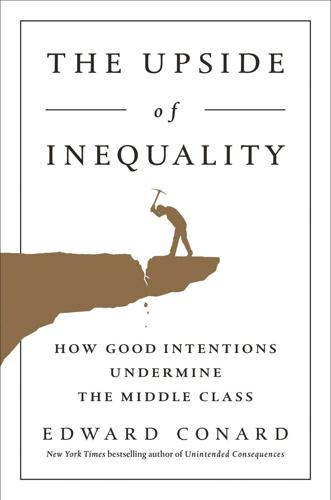
The Upside of Inequality
by
Edward Conard
Published 1 Sep 2016
Given the vast quantities of information Google and the Internet provide to the public, it is hard to believe that the asymmetrical informational advantages of sellers over buyers are growing rather than declining. Today customers are able to use the Internet to second-guess doctors, car salesmen, auto mechanics, real estate brokers, and lenders—the transactions where the middle and working classes have traditionally faced significant asymmetrical informational disadvantages. The Internet allows us to check the fair price of nearly everything. That’s not to deny the existence of isolated cases of oligopolistic pricing power, asymmetrical informational disadvantages, or even monopsony.
…
CEOs may raise their pay by engaging in faux negotiations with their cronies on their boards of directors. Competitors may cooperate in oligopolies to increase profits by reducing competition in order to raise prices or lower employee pay, which would be impossible if competitors truly competed with one another. Companies may use asymmetrical information to sell unsuspecting customers products they don’t need, increasing the companies’ returns. Hedge fund managers may use inside information to fleece naive investors. Political contributors may use the government to gain unfair legal advantages. Regardless of the means, when companies or workers increase their pay without serving customers more effectively than their competitors, we can redistribute their increased pay without detrimental consequences to the rest of the economy.
…
Unfairly reduced competition chiefly occurs for three reasons: Companies can form oligopolies by cooperating with one another to raise prices. In some cases, where a company is the only employer in a town, it may have monopsony power over labor that allows it to hold down wages. Or it may be able to use asymmetrical information in a negotiation to gain an advantage. For example, an auto mechanic may charge you for unneeded repairs. In each case, such a producer would have an ability to earn profits by controlling prices and wages beyond what competitive markets would otherwise allow. The case for significantly rising oligarchical pricing power in the case of any company other than Google is slim.

Investment: A History
by
Norton Reamer
and
Jesse Downing
Published 19 Feb 2016
Contrary to common conception, this was not passed out of a desire for reform; rather, it was passed prior to the collapse of the firm and was meant to aid and insulate the South Sea Company from competition for investors’ funds by preventing other smaller entities from marketing shares, as they did not possess the required charter.9 Nonetheless, the Bubble Act came to be used to regulate these early companies and made them less likely to do widespread harm. Ultimately, the South Sea Bubble reminded investors of exploitable information asymmetries between the body of shareholders and management, and it drove many to approach the task of allocating money with greater scrutiny and diligence. In the end, of course, the fraudulent activities of Enron and Bernie Madoff are echoes of this forerunner some three centuries earlier. Adam Smith, the oft-cited “father of modern economics,” took an entirely adversarial view of the structure of the joint-stock companies The Democratization of Investment 69 and the notion of investment management more broadly.
…
So, they worked together to get to the bottom of it, only to find that much of the earlier work was rife with inconsistencies and ambiguity.12 They determined that new work was required, and that was precisely what they produced, publishing their results in the American Economic Review in 1958 with a paper entitled “The Cost of Capital, Corporation Finance and the Theory of Investment.”13 The result was the Modigliani-Miller theorem, which was among the work for which Merton Miller would win the Nobel Prize in Economics in 1990 and would help Modigliani win the 1985 prize (along with his work on the life-cycle hypothesis).14 The Modigliani-Miller theorem first established several conditions under which their results would hold: no taxes or bankruptcy costs, no asymmetric information, a random walk pricing process, and an efficient market. If these conditions hold, the value of a firm should be unaffected by the capital structure it adopts. In other words, the sum of the value of the debt and the value of the equity should remain constant regardless of how 234 Investment: A History that sum is distributed across debt and equity individually.

The Patient Will See You Now: The Future of Medicine Is in Your Hands
by
Eric Topol
Published 6 Jan 2015
Still, however, the majority of biomedical publications are inaccessible without a subscription, and purchase of a single article is ridiculously expensive (often $30–$50). We’ll come back to this issue and the need for open access later, but at least for now an abstract, or summary, of each article is usually available. There is a common thread about Goodsell and the Lepps that is fundamental—information asymmetry. Doctors have all the data, information, and knowledge. Patients can remain passive or ignorant of their medical information, or, if they choose to be active, they typically have to call repeatedly or beg to get their data, such as the results of laboratory tests or a scan. Before it can change, we have to deal with some entrenched clinical terms and practices that exemplify the problem.
…
The typical response from the medical profession for this anomaly is that patients cannot understand the information or will get terribly confused and anxious without proper context and knowledge. Only with spoon-feeding by doctors and health care professionals will these concerns be eschewed. There is also the more self-serving fear that data access might facilitate or even stimulate malpractice litigation. This deep-seated defense of information asymmetry, a patent outgrowth of profound paternalism, will ultimately prove to be untenable.3,4 The digitization of medical information, and the way it will naturally flow to individuals, will drive information parity and apposite ownership in the future. That certainly isn’t how it works now. Ironically, when you’re alive, the medical community owns your records, lab tests, scans, and biopsy and tissue specimens.
…
identity theft stemming from, 226 importance of knowing, 149–152 lab tests, 150–151 of modern health care, 139–141 opacity of the market, 141–142 open access to biomedical publications, 209–211 outsourcing health care, 147–149 remote monitoring versus hospitalization, 192 smartphone information spread improving, 51 smartphones and diagnostic apps, 8 Theranos blood tests, 106–107 transparency, 151–158 waste in health care expenditures, 142–147 Couric, Katie, 61 Coursera, 197 Court Ventures, 224 The Creative Destruction of Medicine (Topol), 13 Creativity, 45, 51–53 Crowdsourcing, 153, 206, 212–213, 269 Cures for disease, 238 Cystic fibrosis, 203, 205 Cytomegalovirus (CMV), 262 Daschle, Tom, 169 Data analysis via smartphone, 6–7 Data brokers, 223–225, 243 Data collection and management access and ownership, 22, 125–127, 281–282 clinical trials, 214–215 DNA database, 71–72 Global Burden of Disease, 257–258 information asymmetry, 26–27 interoperability and fragmentation of data, 136–138 mapping malaria spread data, 262 medical device hacking, 230–231 medications information, 132–134 MOOMs, 204–207 ownership of your body’s data, 281–282 patient-generated data, 135–136 physicians transferring responsibilities to patients, 178–179 predictive analysis, 240–246 security and privacy concerns, 220–235 supercomputer manipulation, 248–249 See also Records, medical Data mining, 214, 239, 243 Data pooling, 4–6, 205 Datacoup, 200 DataDonors, 200 Davis, Ernest, 241 Dawson, Nick, 137 De novo mutations, 85 Death cancer, 268 Global Burden of Disease, 258(fig.)

The Undercover Economist: Exposing Why the Rich Are Rich, the Poor Are Poor, and Why You Can Never Buy a Decent Used Car
by
Tim Harford
Published 15 Mar 2006
If buyers and sellers were both ignorant about whether a car was a lemon or a peach there would be no problem: buyers would be willing to pay up to $2,500 for a car that had a 50/50 chance of being a peach; sellers, equally ignorant, would be willing to accept any offer over $2,000. Of course they will strike a deal. It’s only when one negotiator knows too much and the other too little that agreement becomes impossible. Because the problem is caused by an uneven grasp on the facts, economists tend to call it “asymmetric information.” Ripping the “world of truth” apart, this imbalance in information can completely destroy perfect markets. Inside information and health insurance Akerlof ’s “lemons” problem would be troublesome enough if it applied only to secondhand cars, furnished accommodations, and dubious restaurants in the world’s beauty spots.
…
Jerome, I suspect myself to be a lemon, I’d be well • 113 • T H E U N D E R C O V E R E C O N O M I S T advised to buy all the medical insurance going. On the other hand, if you feel fine and all your ancestors lived to be a hundred, then perhaps you will buy medical insurance only if it is extremely cheap. After all, you hardly expect to need it. Thanks to Akerlof ’s proof that markets whose players have asymmetric information are doomed, we know that the insurance market may disappear just as the market for good-quality used cars did. You, whose body is a succulent peach, will not find the typical insurance package a good deal; while Mr. Jerome and I, whose bodies are bitter little lemons, will embrace the typical insurance package with open arms.
…
To return to Akerlof ’s original example of the market for secondhand cars, both buyers and sellers have an incentive to try to fix the problem: sellers want to get a decent price for their peaches, and buyers want to buy peaches. If inside information is wrecking the chance of a mutually beneficial deal, both sides will want to find a way to bridge the information gap. Akerlof won the Nobel Prize in 2001 for his work on the problem of asymmetric information; he shared it with two economists who proposed partial solutions. Michael Spence argued that the person with the information might be able to communicate it in a way that the person without the information could trust. Joe Stiglitz looked at the problem in reverse and explored ways in which the person without the information might uncover it.
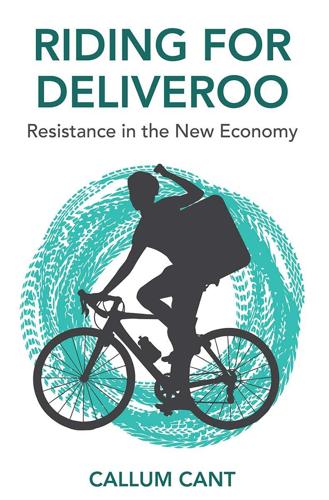
Riding for Deliveroo: Resistance in the New Economy
by
Callum Cant
Published 11 Nov 2019
Brophy (2006) System error: labour precarity and collective organizing at Microsoft. Canadian Journal of Communication 31. 18. R. Edwards (1979) Contested terrain: the transformation of the workplace in the twentieth century. Heinemann. 19. A. Rosenblat, and L. Stark (2016) Algorithmic labor and information asymmetries: a case study of Uber’s drivers. International Journal of Communication 10. 20. D. Feenan, (2018) The birth of the strike. Jacobin. http://jacobinmag.com/2018/05/strikes-history-london-sailors-coal-heavers. 21. Marx, Capital, volume 1, p. 712. 22. W. Benbow (1832) Grand national holiday and congress of the productive classes.
…
Taylor (2014) The principles of scientific management. Martino Publishing. 3. H. Braverman (1975) Labor and monopoly capital: the degradation of work in the twentieth century. Monthly Review Press. 4. K. Marx (1967) Capital, volume I, 4th edn. International Publishers, p. 313. 5. A. Rosenblat, and L. Stark (2016) Algorithmic labor and information asymmetries: a case study of Uber’s drivers. International Journal of Communication 10. 6. H. Garlick (2017) Dark kitchens: is this the future of takeaway? Financial Times. www.ft.com/content/d23c44fe-4b0b-11e7-919a-1e14ce4af89b. 7. S. Usborne (2018) What is the true human cost of your £5 hand car wash?
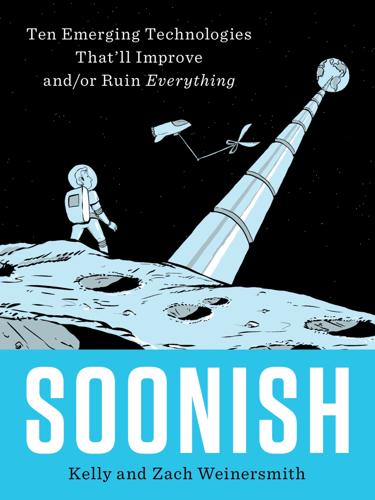
Soonish: Ten Emerging Technologies That'll Improve And/or Ruin Everything
by
Kelly Weinersmith
and
Zach Weinersmith
Published 16 Oct 2017
By now, we’re all used to the idea that so-and-so remembers your birthday because Facebook told her to, but what if it’s more than just birthdays? There’s something off-putting about a world where a lot of someone’s working knowledge of you is externalized and projected onto a heads-up display. And if you don’t have AR glasses, there’s a tremendous information asymmetry between you and the people who do have them. Since information asymmetry is a serious matter in warfare (especially so in modern warfare), one idea is to give this sort of software to peacekeepers. Imagine if a soldier’s job is to police a village. It’d help if he had glasses that could recognize faces and display stats on his heads-up display.
…
P., 331 Harvard Medical School, 204, 242 Harvard-Smithsonian Center for Astrophysics, 65 Harvard University, 129–30, 150, 203, 208, 247 Hausbaumaschine, 135 Hayabusa, 65 Hayabusa 2, 65 health care costs, 231 health insurance, 250 hearing, restoring of, 307 heart disease, 246–48 “heat,” 5 Heath, Robert, 310 “heavy water,” 81 hedgehog grease, 229 Heilig, Morton, 168 helium, 4, 5, 74–75, 76, 91 “High Flight” (Magee), 13 hippocampal prosthesis, 307–8 Hiroshima, 67 Hobbit, The (films), 82 Holocaust, 183 Holocaust Museum, 183 Homeland Security Department, U.S., 81 homosexuality, 310 house-building factory, 135 houses: programmable, 126 reconfigurable, 109–11 housing, 134–37, 157 complexity of, 137 inspection of, 145–46 Howard Hughes Medical Institute, 212 Hull, Richard, 80, 82, 84, 92 human genome, 214, 234–35 Human Genome Project, 220 Human Metabolome Database, 244 Huntington’s disease, 196n, 237 Hussein, Saddam, 48, 49 hydraulic fracturing (“fracking”), 99 “Hydrocolloid Printing: A Novel Platform for Customized Food Production” (2009 paper), 162 hydrogen, 4, 73–76, 78, 79, 94, 208–9 hydrogen bombs, 98, 100 hydrogen sulfide, 327 HygroScope, 104 hypertension, 246 hypocholesterolemia, 246 hypothalamus, 189 Hypurin, 198n Ice Age, 223 iGEM (International Genetically Engineered Machine), 216 IKEA, 129, 137 Illinois, University of: at Urbana-Champaign, 182 Veterinary School at, 184 Illusio, 185 immune system, 207, 238, 241–42 organ transplants and, 258–59 immunosuppressive drugs, 258–59, 275 immunotherapy, 242 income distribution, 154 Industrial Revolution, 154 inertial confinement fusion, 86–87 infinite universes, 329, 330 information asymmetry, 181 Innovega, 176 Instagram, 247, 250 Institute of Advanced Architecture of Catalonia, 151 insulin, 198, 207 insurance, 250 Interactive Robogami, 108 international arms trade, 48 International Space Station, 15–16, 41, 42–43 Internet, 109, 122, 216, 262, 269 intracortical neural recording, 295–99 Iowa State University, 179 iPhone, 216 Iraq, 48, 49–50 iron, 54 irritable bowel syndrome, 206 isopropanol, 208–9 isotopes, 73–74 ITER (International Thermonuclear Experimental Reactor), 88–89, 91–94 ivacaftor, 236, 248 Japan, 136 JAXA (Japan Aerospace Exploration Agency), 65 J.

WTF?: What's the Future and Why It's Up to Us
by
Tim O'Reilly
Published 9 Oct 2017
But if the seller of a good can learn the buyer’s willingness-to-pay, he can make the buyer a take-it-or-leave it offer that will extract all of his surplus.” If the growing complaints of Uber drivers about lower fares, too many competing drivers, and longer wait times between pickups are any indication, Uber is optimizing for passengers and for its own profitability by extracting surplus from drivers. Despite the information asymmetry in favor of the platforms, I suspect that, over time, driver wages will need to increase at some rate that is independent of the simple supply and demand curves that characterize Uber and Lyft’s algorithms today. Even if there are enough drivers, the quality of drivers deeply influences the customer experience.
…
Drivers must show up to work with much less perfect knowledge of that demand and the potential income they can derive from it. Michael Spence, George Akerlof, and Joseph Stiglitz received the Nobel Memorial Prize in Economics in 2001 precisely for their analysis in the 1970s of the ways that the efficient market hypothesis, so central to much economic thinking, breaks down in the face of asymmetric information. Algorithmically derived knowledge is a new source of asymmetric market power. Hal Varian noted this problem in 1995, writing in a paper called “Economic Mechanism Design for Computerized Agents” that “to function effectively, a computerized agent has to know a lot about its owner’s preferences: e.g., his maximum willingness-to-pay for a good.
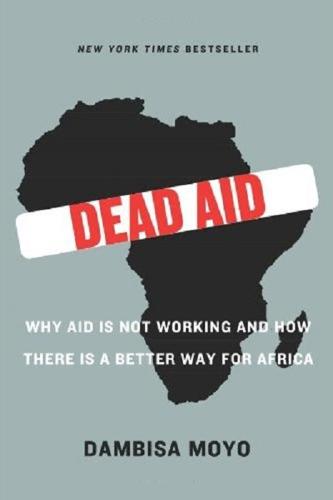
Dead Aid: Why Aid Is Not Working and How There Is a Better Way for Africa
by
Dambisa Moyo
Published 17 Mar 2009
In Zambia, as in other African countries where micro-finance has started to blossom, the risk of lending to the most risky is often reduced through joint liability – the notion that members of a group of borrowers are all liable for any loans that a micro-finance lender makes to them. Consider again a group of borrowers in a small rural village, where the lender has virtually no information on the individual borrowers. Joint liability gets around this information asymmetry in a number of ways. When forming their groups, borrowers have an incentive at the onset to match themselves with other good borrowers, and exclude those known to be high-risk. Naturally, this self-selection mechanism helps the lender screen the borrowers and reduce the risk of default. Joint liability also addresses the moral hazard lenders typically face – that is, the risk that once a loan is made, once the borrower has secured the cash, she defaults.
…
However, with ever-increasing numbers of micro-lenders, and growing participation in this type of lending, the interest rates charged inevitably become lower and, in this sense, more competitive. As to the Ponzi scheme criticism, the objection merely points to the need for more information concerning borrowers – who’s good and who’s bad (which, by the way, is exactly the information asymmetry that the Grameen model mitigates). And on the issue of consumption versus investment, this applies to any loan, any time, anywhere. The important point, not to be overlooked, is that the previously unbankable and excluded poor are now part of a functioning financial dynamic. With this comes a culture of borrowing and repayment crucial for financial development in a well-oiled successful economy.
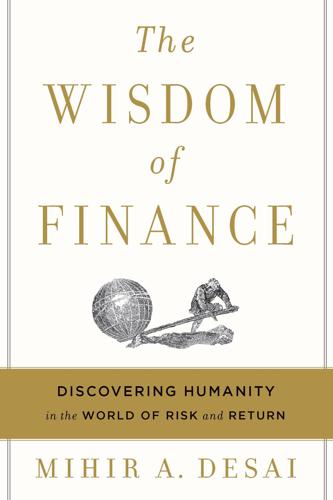
The Wisdom of Finance: Discovering Humanity in the World of Risk and Return
by
Mihir Desai
Published 22 May 2017
Or, who owns that MRI center?). Now imagine that same problem on a much larger scale, with the trillions of dollars invested in companies. In all these companies, shareholders can’t monitor managers, and managers know much more about what is going on than shareholders ever could—that’s called informational asymmetry. How do you know if Tim Cook has the right strategy? How do you know how hard Tim Cook is working? There simply isn’t any way to know those things definitively. And managers aren’t evil, but they sometimes have their own personal agendas, which may not be coincident with those of the owners.
…
See also annuities aggregate outcomes, 21, 25, 30–31 chance and randomness, 21–22 contract of bottomry, 23 deductibles, 29 disorder and chaos, 34 families and, 29–30 history of, 22–24 Independent Order of Odd Fellows, 24 mandate, 29 modern image of, 22 risk aversion and diminishing marginal utility of wealth, 166–67 Roman burial societies, 23–24 “rules of jettison” or law of general average, 23 witchcraft and, 24–25 investors CEO deaths, reaction to, 78, 80 diffuse ownership, 78, 81, 82 informational asymmetry, 79 pension and endowment funds, 82 Ishiguro, Kazuo, 9, 133 J James, William 15 Jefferson, Thomas, 139–40 Jensen, Michael, 137–38 Johnson, Samuel, 7, 59, 74 “On the Death of Dr. Robert Levet,” 68–69 Journal of Law and Economics, 115 Joyce, James, 91–92, 161 Jura, 128 K Kafka, Franz, 47 Kant, Immanuel, 154–55 Keynes, John Maynard, 51 Kirshner, Julius, 103 Klein, Francesca, 101 Koestler, Arthur, 128 Koons, Jeff, xi, 8, 127, 129–31, 137, 140–41 Celebration series, 140 effective use of leverage, 140–41 Play-Doh, 129 Popeye, 141 L Laplace, Pierre-Simon, 20 LeFevre, Gregg, 174 Lehman Brothers insolvency, 147–48 Let’s Make a Deal (TV show), 16 leverage, 8 benefits and drawbacks, 123–26, 135 Bentham and Smith conflict on, 121–22 “bonus” of leverage, 137–38 debt overhang, 132–35 definition, 123–24 leveraged buyout, 127 risk and return, 125–27 static trade-off theory, 126 leverage, personal and artistic, 127–30 commitment device, 131, 137–40 connection to debt overhang, 132–35 degree of leverage, 130–32 effective use, 138–39 failure and rebirth, 149–50 life-cycle hypothesis, 135–36 role of reputation, 139–40 Levin, Jerry, 108–11 Levine, Joseph, 93–94 Little Feat, 99 Luna, Elle, 90–91 M Macfarlane, Alan, 24 Mad Max (film), 54–55 Maltese Falcon, The (Hammett), 11 Mann, Bruce, 143, 145, 147 Mao Zedong, 67 Marcus, Steven, 11 Mars, Kenneth, 93 Mariani, Paul, 33 McNamee, Roger, 108 Melville, Herman, 46–49 Merchant of Venice, The (Shakespeare), 8, 120 (illus.), 122–23 mergers, 8 AOL–Time Warner merger mistakes, 109–12 asymmetric mergers (bolt-on acquisitions), 111 Ford Motor and Firestone Tire partnership, 117–18 General Motors and Fisher Body merger, 113–17 Hewlett Packard and Autonomy acquisition, 109 integration planning, 110 mergers of equals, 111 serial acquirers, 111 synergies, 109–10 Merton, Robert, 40 Miller, Alice, 95 Milton, John, xi, 7, 59, 68–69, 74 “When I Consider How My Light Is Spent,” 70–71 Miracle Worker, The (film, play), 96 Miranda, Lin-Manuel, 75 Molho, Anthony, 103 Monte Dei Paschi di Siena, 100 Monte delle doti, 101–4 “Monty Hall” problem, 16 moral hazard, 28–30 Morris, Robert, 142 career, 143–45 financier of the revolution, 143 relative to J.

Click Here to Kill Everybody: Security and Survival in a Hyper-Connected World
by
Bruce Schneier
Published 3 Sep 2018
Perhaps it would be more accurate to use a health-insurance model: sickness is inevitable, and contagions can spread widely, so insurers should focus on risk prevention and incident response rather than straight reimbursement. Insurance companies are starting to figure out how to price premiums for cybersecurity insurance, though—in some cases scoring companies according to their security practices. More will happen once we better clarify liabilities. CORRECT INFORMATION ASYMMETRIES Recently, I had occasion to research baby monitors. They’re surveillance devices by design, and can pick up a lot more than a baby’s cries. Of course, I had a lot of security questions. How is the audio and video transmission secured? What’s the encryption algorithm? How are encryption keys generated, and who has copies of them?
…
, 136 Electronic Privacy Information Center, 223 e-mail, 153 encryption, 109, 114, 169, 170–72 bypassing, 171, 193 by default, 197 end-to-end, 167, 170–71, 175 limiting, 197–99 as munition, 197 ubiquitous, 171–72, 199 warrant-proof, 194–95 end-to-end principle, 119 end users, 23, 130 Enron, 127, 128 EPA, formation of, 183 Equifax, 37, 79, 106, 124, 125, 128, 130, 180, 187 espionage: cyberespionage and cyberattack, 72, 81 international, 66–68, 71, 171–72 Estonia, national ID card of, 31, 48 ETERNALBLUE, 164–65 EU, regulations in, 184–88 European Safety and Security Engineering Agency, 149 Evans, Lord John, 196 FAA: database of near misses, 177 jurisdiction of, 145–46 Facebook, 190 censorship by, 60 controls exerted by, 61, 62 and EU regulation, 185, 186 identification systems in, 199 surveillance via, 57, 58, 169, 196 Fair Credit Billing Act (1974), 100 Fancy Bear (Russian intelligence unit), 46 Farook, Syed Rizwan, 174 FBI: backdoors demanded by, 172, 174, 193–97, 198, 220 and hacking back, 204 IMSI-catchers used by, 168–70 and law enforcement, 173–76 Microsoft vs., 190 wiretapping by, 168 FDA, 137, 145, 151 Federal Communications Commission (FCC), 149 FedRAMP, 123 Felten, Ed, 223 financial crisis (2008), 125–26 FinFisher, 64–65 FireEye, 42 flash crash, 85 Ford Foundation, 224 Fort Hood shooting (2009), 202 Freeh, Louis, 193 FTC, 148, 154 Gamma Group, 30, 65 Gartner tech analyst firm, 101 GDPR (General Data Protection Regulation) [EU], 151, 184–88 Geer, Dan, 163, 217 George, Richard, 170 Gerasimov Doctrine, 71 Germany, BSI and BND in, 173 GGE (Group of Governmental Experts), UN, 158 Gmail, 153 Goldsmith, Jack, 163 Google: Advanced Protection Program, 47 censorship by, 60 controls exerted by, 61, 62 and EU regulations, 185 identification systems in, 199 lobbying by, 154 state investigation of, 187 surveillance via, 58–59, 169, 196 governments, 144–59 asymmetry between, 91–92 censorship by, 60 and defense over offense, 160–79 functions of, 10 and industry, 176–79 information sharing by, 176 and infrastructure, 117 insecurity favored by, 57 international cooperation, 156–59 international espionage, 171–72 jurisdictional arbitrage, 156 and liability law, 128–33 lobbying of, 154–55 mistrust of, 208, 220 policy challenges in, 99, 100–101, 192–206 regulatory bodies, 121, 144, 150–52, 156–59, 192 and security standards, 167 supply-chain attacks on, 87–89 surveillance by, 64–68, 172, 195, 208 vulnerability disclosure by, 163 Greer, John, 126 GTT Communications, 115 Gutenberg, Johannes, 24 hacking: catastrophic, 9, 16, 217 class breaks, 33, 95 contests in, 85 costs of, 102–3 cyberweapons in, 73 increasing threat of, 79 international havens of, 156 through fish tank, 29 hacking back, 203–4 HackingTeam, 30, 45, 65 HAMAS, 93 Hancock Health, 74 harm, legal definition of, 130 Harris Corporation, 168 Hathaway, Melissa, 114 Hayden, Michael, 170 Healey, Jason, 158, 160 Heartbleed, 21, 114–15 Hello Barbie (doll), 106 Hilton Hotels, 185 Hizballah, 93 Honan, Mat, 29 Hotmail, 153 HP printers, 62 Huawai (Chinese company), 87 Human Rights Watch, 223 humans, as system component, 7 IBM, 33 iCloud, 7 hacking of, 78 and privacy, 190 quality standards for, 111, 123, 135 Idaho National Laboratory, 79, 90 identification, 51–55, 199–200 attribution, 52–55 breeder documents for, 51 impersonation of, 51, 75 identity, 44 identity theft, 50–51, 74–76, 106, 171 Ilves, Toomas Hendrik, 221 iMessage, 170 impersonation, 51, 75 IMSI (international mobile subscriber identity), 168–70 industry lobbying groups, 183 information asymmetries, 133–38 information security, 78 infrastructure: critical, use of term, 116 security of, 116–18 Inglis, Chris, 28 innovation, 155 insecurity, 56–77 cost of, 126 criminals’ benefit from, 74–77 and cyberwar, 68–74 insurance industry, 132–33 integrity, attacks on, 78–82 intellectual property theft, 66, 72–73, 75 interconnections, vulnerabilities in, 28–30, 90 International Organization for Standardization (ISO), 140 Internet: advertising model of, 57, 60 changing concepts of, 5, 218 connectivity of, 5, 91, 105–6 demilitarization of, 212–15 dependence on, 89–90 development phase of, 22–23, 157 explosive growth of, 5, 146 global, 7, 16, 161 governance model of, 157 government regulation of, 152–55 horizontal growth of, 146 industry standards for, 23, 122–23 lack of encryption on, 170–72 maintenance and upkeep of, 143 nonlinear system of, 211 private ownership of infrastructure, 126 resilience of, 210–12 as social equalizer, 214, 217 surveillance and control via, 64–68 viral dissident content on, 158 Internet+: authentication in, 49–51 coining of term, 8 cybersecurity safety board for, 177 risks and dangers of, 217–18 simultaneous vulnerabilities in, 94 Internet+ security: closing the skills gap, 141–42 correcting information asymmetries in, 133–38 correcting misaligned incentives in, 124–28 current state of, 9 defense in, see attack vs. defense enforcement of, 121 funding maintenance and upkeep in, 143 incentives and policy solutions for, 100–103, 120–43 increasing research in, 142–43 liabilities clarified for, 128–33 litigation for, 121 meanings of, 15–17 and privacy, 9 public education about, 138–41 public policies for, 120–21 standards for, 122–23, 140–41, 157–59 as wicked problem, 11, 99 Internet Engineering Task Force (IETF), 23, 167 Internet of Things (IoT), 5 as computerization of everything, 7 Cybersecurity Improvement Act, 180 in developmental stage, 8 patching of, 37–38 smartphone as controller hub for, 48 Internet Policy Research Initiative, MIT, 224 Investigatory Powers Act (UK), 195 iPhones, 3–4 encryption on, 174, 197 new versions of, 42–43 IPsec, 167 Iran: cyberattack by, 71, 116, 178 hackers in, 45 Stuxnet attack on, 79 Iraq, 212 ISIS, 69, 93 ISPs: connections via, 113–14 Tier 1 type, 115 ISS World (“Wiretappers’ Ball”), 65 jobs, in cybersecurity, 141–42 John Deere, 59–60, 62, 63 Joyce, Rob, 45, 53, 54, 164, 166 Kaplan, Fred, 73 Kaspersky Lab, 29, 74, 87 Kello, Lucas, 71 Kelly, John, 66 Keurig coffee makers, 62 key escrow, 194 KICTANet, Kenya, 214 labeling requirements, 134–35 LabMD, unfair practices of, 130–31 Landau, Susan, 175, 176, 223 Las Vegas shooting (2017), 202 Ledgett, Rick, 163–64, 166 lemons market, 134 Lenovo, 187 letters of marque, 204 Level 3 ISP, 115 liability law, 125, 128–33 Liars and Outliers (Schneier), 101, 209 Library of Congress, 42 license plate scanners, 201 linear systems, 210 Lloyd’s of London, 90 Lynn, William, 198 machine learning, 7, 82–87 adversarial, 84 algorithms beyond human comprehension, 111–12 autonomous, 82–83, 85 Maersk, 71, 94 malware, 26, 30, 196 man-in-the-middle attacks, 49, 169 market economics, and competition, 6 mass shootings, 202 May, Theresa, 197 McConnell, Mike, 198 McVeigh, Timothy, 202 medical devices: bugs in, 41 and government regulations, 151 hacking, 16 and privacy, 151 Meltdown vulnerability, 21 Merkel, Angela, 66 metadata, 174 Microsoft, 57, 190 Microsoft Office, new versions of, 42, 43 military systems, autonomous, 86 Minecraft video game, 94 miniaturization, 7 Mirai botnet, 29, 37, 77, 94, 130 money laundering, 183 monocultures, vulnerabilities in, 31 Moonlight Maze, 66 “movie-plot threats,” 96 Mozilla, 163 Munich Security Conference, 70 My Friend Cayla (doll), 106 Nader, Ralph, Unsafe at Any Speed, 182 National Cyber Office (NCO), 146–50 National Cyber Security Centre (UK), 173 National Cybersecurity Safety Board (proposed), 177 National Institute of Standards and Technology (NIST), Cybersecurity Framework of, 123, 147 National Intelligence Council, 211–12 National Science Foundation (NSF), 147 National Security Council, 163 National Security Strategy, 117 National Transportation Safety Board, 177 Netflix, 148 net neutrality, 61, 119 network effect, 60 networks: “air gapped,” 118 collective action required of, 23–24 end-to-end model of, 23 firewalls for, 102 iCloud, 111 secure connections in, 113–14, 125 and spam, 100 telephone, 119 New America, 223 New York Cyber Task Force, 213 NOBUS (nobody but us), 164–65, 169, 170 norms, 157–59 North Korea: cyberattack by, 71 cybercrimes by, 76, 157 hacking by, 54, 71, 78 threats by, 70, 72 Norwegian Consumer Council, 105–6 NotPetya malware, 71, 77, 89, 94 NSA: attribution in, 53–55 BULLRUN program, 167–68 credential stealing by, 45 cyberattack tools of, 165–67 on cybersecurity, 86 cyberweapons stolen from, 73 disclosing and fixing vulnerabilities, 162–67 encryption circumvented by, 171, 193 intelligence-gathering hacks by, 116, 118 missions of, 160–61, 172 mistrust of, 208 reorganization (2016) in, 173 and security standards, 167–70 splitting into three organizations, 172–73 supply-chain attacks by, 87 surveillance by, 65, 66–67, 190, 202 NSO Group, 65 Nye, Joseph, 157 Obama, Barack, 66, 69, 92, 117, 163, 180, 208 Ochoa, Higinio O.
…
, 136 Electronic Privacy Information Center, 223 e-mail, 153 encryption, 109, 114, 169, 170–72 bypassing, 171, 193 by default, 197 end-to-end, 167, 170–71, 175 limiting, 197–99 as munition, 197 ubiquitous, 171–72, 199 warrant-proof, 194–95 end-to-end principle, 119 end users, 23, 130 Enron, 127, 128 EPA, formation of, 183 Equifax, 37, 79, 106, 124, 125, 128, 130, 180, 187 espionage: cyberespionage and cyberattack, 72, 81 international, 66–68, 71, 171–72 Estonia, national ID card of, 31, 48 ETERNALBLUE, 164–65 EU, regulations in, 184–88 European Safety and Security Engineering Agency, 149 Evans, Lord John, 196 FAA: database of near misses, 177 jurisdiction of, 145–46 Facebook, 190 censorship by, 60 controls exerted by, 61, 62 and EU regulation, 185, 186 identification systems in, 199 surveillance via, 57, 58, 169, 196 Fair Credit Billing Act (1974), 100 Fancy Bear (Russian intelligence unit), 46 Farook, Syed Rizwan, 174 FBI: backdoors demanded by, 172, 174, 193–97, 198, 220 and hacking back, 204 IMSI-catchers used by, 168–70 and law enforcement, 173–76 Microsoft vs., 190 wiretapping by, 168 FDA, 137, 145, 151 Federal Communications Commission (FCC), 149 FedRAMP, 123 Felten, Ed, 223 financial crisis (2008), 125–26 FinFisher, 64–65 FireEye, 42 flash crash, 85 Ford Foundation, 224 Fort Hood shooting (2009), 202 Freeh, Louis, 193 FTC, 148, 154 Gamma Group, 30, 65 Gartner tech analyst firm, 101 GDPR (General Data Protection Regulation) [EU], 151, 184–88 Geer, Dan, 163, 217 George, Richard, 170 Gerasimov Doctrine, 71 Germany, BSI and BND in, 173 GGE (Group of Governmental Experts), UN, 158 Gmail, 153 Goldsmith, Jack, 163 Google: Advanced Protection Program, 47 censorship by, 60 controls exerted by, 61, 62 and EU regulations, 185 identification systems in, 199 lobbying by, 154 state investigation of, 187 surveillance via, 58–59, 169, 196 governments, 144–59 asymmetry between, 91–92 censorship by, 60 and defense over offense, 160–79 functions of, 10 and industry, 176–79 information sharing by, 176 and infrastructure, 117 insecurity favored by, 57 international cooperation, 156–59 international espionage, 171–72 jurisdictional arbitrage, 156 and liability law, 128–33 lobbying of, 154–55 mistrust of, 208, 220 policy challenges in, 99, 100–101, 192–206 regulatory bodies, 121, 144, 150–52, 156–59, 192 and security standards, 167 supply-chain attacks on, 87–89 surveillance by, 64–68, 172, 195, 208 vulnerability disclosure by, 163 Greer, John, 126 GTT Communications, 115 Gutenberg, Johannes, 24 hacking: catastrophic, 9, 16, 217 class breaks, 33, 95 contests in, 85 costs of, 102–3 cyberweapons in, 73 increasing threat of, 79 international havens of, 156 through fish tank, 29 hacking back, 203–4 HackingTeam, 30, 45, 65 HAMAS, 93 Hancock Health, 74 harm, legal definition of, 130 Harris Corporation, 168 Hathaway, Melissa, 114 Hayden, Michael, 170 Healey, Jason, 158, 160 Heartbleed, 21, 114–15 Hello Barbie (doll), 106 Hilton Hotels, 185 Hizballah, 93 Honan, Mat, 29 Hotmail, 153 HP printers, 62 Huawai (Chinese company), 87 Human Rights Watch, 223 humans, as system component, 7 IBM, 33 iCloud, 7 hacking of, 78 and privacy, 190 quality standards for, 111, 123, 135 Idaho National Laboratory, 79, 90 identification, 51–55, 199–200 attribution, 52–55 breeder documents for, 51 impersonation of, 51, 75 identity, 44 identity theft, 50–51, 74–76, 106, 171 Ilves, Toomas Hendrik, 221 iMessage, 170 impersonation, 51, 75 IMSI (international mobile subscriber identity), 168–70 industry lobbying groups, 183 information asymmetries, 133–38 information security, 78 infrastructure: critical, use of term, 116 security of, 116–18 Inglis, Chris, 28 innovation, 155 insecurity, 56–77 cost of, 126 criminals’ benefit from, 74–77 and cyberwar, 68–74 insurance industry, 132–33 integrity, attacks on, 78–82 intellectual property theft, 66, 72–73, 75 interconnections, vulnerabilities in, 28–30, 90 International Organization for Standardization (ISO), 140 Internet: advertising model of, 57, 60 changing concepts of, 5, 218 connectivity of, 5, 91, 105–6 demilitarization of, 212–15 dependence on, 89–90 development phase of, 22–23, 157 explosive growth of, 5, 146 global, 7, 16, 161 governance model of, 157 government regulation of, 152–55 horizontal growth of, 146 industry standards for, 23, 122–23 lack of encryption on, 170–72 maintenance and upkeep of, 143 nonlinear system of, 211 private ownership of infrastructure, 126 resilience of, 210–12 as social equalizer, 214, 217 surveillance and control via, 64–68 viral dissident content on, 158 Internet+: authentication in, 49–51 coining of term, 8 cybersecurity safety board for, 177 risks and dangers of, 217–18 simultaneous vulnerabilities in, 94 Internet+ security: closing the skills gap, 141–42 correcting information asymmetries in, 133–38 correcting misaligned incentives in, 124–28 current state of, 9 defense in, see attack vs. defense enforcement of, 121 funding maintenance and upkeep in, 143 incentives and policy solutions for, 100–103, 120–43 increasing research in, 142–43 liabilities clarified for, 128–33 litigation for, 121 meanings of, 15–17 and privacy, 9 public education about, 138–41 public policies for, 120–21 standards for, 122–23, 140–41, 157–59 as wicked problem, 11, 99 Internet Engineering Task Force (IETF), 23, 167 Internet of Things (IoT), 5 as computerization of everything, 7 Cybersecurity Improvement Act, 180 in developmental stage, 8 patching of, 37–38 smartphone as controller hub for, 48 Internet Policy Research Initiative, MIT, 224 Investigatory Powers Act (UK), 195 iPhones, 3–4 encryption on, 174, 197 new versions of, 42–43 IPsec, 167 Iran: cyberattack by, 71, 116, 178 hackers in, 45 Stuxnet attack on, 79 Iraq, 212 ISIS, 69, 93 ISPs: connections via, 113–14 Tier 1 type, 115 ISS World (“Wiretappers’ Ball”), 65 jobs, in cybersecurity, 141–42 John Deere, 59–60, 62, 63 Joyce, Rob, 45, 53, 54, 164, 166 Kaplan, Fred, 73 Kaspersky Lab, 29, 74, 87 Kello, Lucas, 71 Kelly, John, 66 Keurig coffee makers, 62 key escrow, 194 KICTANet, Kenya, 214 labeling requirements, 134–35 LabMD, unfair practices of, 130–31 Landau, Susan, 175, 176, 223 Las Vegas shooting (2017), 202 Ledgett, Rick, 163–64, 166 lemons market, 134 Lenovo, 187 letters of marque, 204 Level 3 ISP, 115 liability law, 125, 128–33 Liars and Outliers (Schneier), 101, 209 Library of Congress, 42 license plate scanners, 201 linear systems, 210 Lloyd’s of London, 90 Lynn, William, 198 machine learning, 7, 82–87 adversarial, 84 algorithms beyond human comprehension, 111–12 autonomous, 82–83, 85 Maersk, 71, 94 malware, 26, 30, 196 man-in-the-middle attacks, 49, 169 market economics, and competition, 6 mass shootings, 202 May, Theresa, 197 McConnell, Mike, 198 McVeigh, Timothy, 202 medical devices: bugs in, 41 and government regulations, 151 hacking, 16 and privacy, 151 Meltdown vulnerability, 21 Merkel, Angela, 66 metadata, 174 Microsoft, 57, 190 Microsoft Office, new versions of, 42, 43 military systems, autonomous, 86 Minecraft video game, 94 miniaturization, 7 Mirai botnet, 29, 37, 77, 94, 130 money laundering, 183 monocultures, vulnerabilities in, 31 Moonlight Maze, 66 “movie-plot threats,” 96 Mozilla, 163 Munich Security Conference, 70 My Friend Cayla (doll), 106 Nader, Ralph, Unsafe at Any Speed, 182 National Cyber Office (NCO), 146–50 National Cyber Security Centre (UK), 173 National Cybersecurity Safety Board (proposed), 177 National Institute of Standards and Technology (NIST), Cybersecurity Framework of, 123, 147 National Intelligence Council, 211–12 National Science Foundation (NSF), 147 National Security Council, 163 National Security Strategy, 117 National Transportation Safety Board, 177 Netflix, 148 net neutrality, 61, 119 network effect, 60 networks: “air gapped,” 118 collective action required of, 23–24 end-to-end model of, 23 firewalls for, 102 iCloud, 111 secure connections in, 113–14, 125 and spam, 100 telephone, 119 New America, 223 New York Cyber Task Force, 213 NOBUS (nobody but us), 164–65, 169, 170 norms, 157–59 North Korea: cyberattack by, 71 cybercrimes by, 76, 157 hacking by, 54, 71, 78 threats by, 70, 72 Norwegian Consumer Council, 105–6 NotPetya malware, 71, 77, 89, 94 NSA: attribution in, 53–55 BULLRUN program, 167–68 credential stealing by, 45 cyberattack tools of, 165–67 on cybersecurity, 86 cyberweapons stolen from, 73 disclosing and fixing vulnerabilities, 162–67 encryption circumvented by, 171, 193 intelligence-gathering hacks by, 116, 118 missions of, 160–61, 172 mistrust of, 208 reorganization (2016) in, 173 and security standards, 167–70 splitting into three organizations, 172–73 supply-chain attacks by, 87 surveillance by, 65, 66–67, 190, 202 NSO Group, 65 Nye, Joseph, 157 Obama, Barack, 66, 69, 92, 117, 163, 180, 208 Ochoa, Higinio O.

Global Governance and Financial Crises
by
Meghnad Desai
and
Yahia Said
Published 12 Nov 2003
(2000) “Bubbles and crises,” Economic Journal, 110: 236–255. Allen, F. and Gorton, G. (1993) “Churning bubbles,” Review of Economic Studies, 60: 813–836. 42 Franklin Allen and Douglas Gale Allen, F., Morris, S. and Postlewaite, A. (1993) “Finite bubbles with short sale constraints and asymmetric information,” Journal of Economic Theory, 61: 206–229. Calomiris, C. and Gorton, G. (1991) “The origins of banking panics, models, facts, and bank regulation,” in G. Hubbard (ed.), Financial Markets and Financial Crises, University of Chicago Press, Chicago, IL. Calomiris, C. and Kahn, C. (1991) “The role of demandable debt in structuring optimal banking arrangements,” American Economic Review, 81: 497–513.
…
The sources of these crises starting in Latin America, Asia, Russia, were very different from the sovereign debt crises of the 1980s. They originated in capital markets with predominant role of private debtors as well as creditors. They implied fundamentals of a microeconomic variety due to financial fragility: gross undervaluation of credit risk, overindebtedness, acute asymmetric information. They developed in interaction between the sharp deterioration of creditworthiness, the breakup of pegged exchange rate regimes and the surge of volatility and correlation in asset prices. The Fund’s apparatus was hardly fit to meet the challenge of emerging market crises. The Mexican crisis in 1994 –95 was a harbinger from which proper lessons were not drawn.
…
Did this particular combination produce incentives that led to the failure of this maximisation-cum-equilibrium process because it created a situation characterised by factors such as excess liquidity (through a massive growth in inflows), and increased financial fragility (via augmenting the weight of ‘speculative’ and ‘Ponzi’ finance)? Did this particular combination also make significantly worse other common economic problems, such as asymmetric information by, for example, liberalisation being so sudden that it led to the interaction, on one side, of international financial institutions with very little knowledge of the institutional dynamics of emerging markets and, on the other, of still inexperienced domestic financial players?2 This chapter attempts to answer these questions regarding the above-mentioned financial crises.
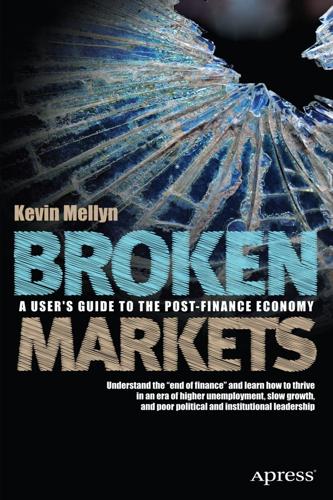
Broken Markets: A User's Guide to the Post-Finance Economy
by
Kevin Mellyn
Published 18 Jun 2012
eBook <www.wowebook.com> Trust In Financial Market Meltdown, I explain how a bank account has always been a one-sided contract in which the bank knows a lot about what the depositor is doing with his or her money, but the depositor has no clue about what the bank is doing with it. This is called information asymmetry and is a key source of profit for financial services companies. Financial firms always know a great deal more about market conditions, especially the price of money, than their customers. However, post-crisis, they have to regain the trust they have forfeited. This will require them to become much more—at the risk of using a hackneyed term—transparent.
…
w 163 I Index A C Anglo-Saxon capitalism, 84 Card Act, 68, 70 Anglo-Saxon-type banking systems, 156 CHIPS.See Clearing House Interbank Payment System Asset securitization, 66 Association of Community Organizers for Reform Now (ACORN), 65 Austerity definition, 98 Euro, real unification, 99 Germany, 99–101 B BankAmericard, 29 Bankcard association/card scheme, 29 Bank-centric system, 110 Bank for International Settlements (BIS), 108 Basel III process, 50–51 Basel process, 27–28 Basel standards, 61 Bipartisan government policy, 72 Boom optimistic entrepreneurs, 77 Bretton Woods system, 26, 111 Bureaucracies, 21 Civilization, 64 Clearing House Interbank Payment System (CHIPS), 106, 107 Committee of Payment and Settlement Systems (CPSS), 108 Community Reinvestment Act (CRA), 65–66 Consumer banking BankAmericard, 29 bankcard association/card scheme, 29 branch-based customer relationship, 29 credit card industry, 30 Depression-era Glass-Steagall Act, 33 “diseconomies of scale”, 35 FDIC, 34 four-party model, 29 institutional investors, 34 “market-centric” financial system, 33 merchant/customer relationship, 29 Pac-Man banking, 34 risky business, 31–33 RTC, 31 SEC, 33 S&L industry, 28, 30 1 166 Index Consumer banking (continued) statistical analysis, 30 US “flow-of-funds” data, 28 usury laws, 30 Consumer Finance Protection Bureau (CFPB), 68 Continuous Linked Settlement (CLS), 108 Creative destruction, 85 Credit-driven economy, 76–77 Crony capitalism, 85 Cross-Pacific economy, 97 D Debtor Nation, 64 Dirigisme, 83 Dollar-centric financial system, 112 Durbin Amendment, 70 E ECB.See European Central Bank Economic consequences, financial regulation, 55 bank P & Ls and balance sheets bureaucratic regulation, 59 capital allocation, 57 capitalism, 57 clearinghouse/transaction switch, 58 contradictory rules, 59 creative destruction, 63 free-market capitalism, 57 full-blown panic leading, 57 lender-of-last-resort function, 58 payments system, 58–59 private-sector banks, 58 consumer protection vs. access, 67–68 financial access restriction brick-and-mortar branches, 66 civilization, 64 clearinghouse, 63 CRA, 65–66 credit judgments, 65 economic enfranchisement, 64 government paternalism, 65 joint-stock banks, 63 loan securitization, 66 mass-market retail banking, 66 national and multilateral development agencies, 65 non-credit worthy segments, 66 ownership society, 66 paychecks, 64 premium/reward cards, 66 individual banker accountability, 55 interest reduction, 56 predatory lending, 56 product differentiation, 68–69 public utility, 55, 56 regulatory, capital, and litigation costs, 56 regulatory compliance and fraud losses, 56 savers and investors, 71–73 shell game asset-securitization process, 61 commercial and industrial loans, 62 credible assessment, 62 Dodd-Frank Act, 63 Federal Reserve Bank, 63 free-market creative destruction, 63 globalization, 62–63 Great Depression, 61 Great Moderation, 61 least-regulated jurisdictions, 61 regulatory arbitrage, 61 relationship banking, 62 retail banking revolution, 63 return-on-equity business, 62 rules-based regulation, 61 securitization and market-based funding, 63 supervision vs. rule making, 59–60 unbanking, 70–71 utility-style banking, 56 European Central Bank (ECB), 6, 99, 102–103 F Federal Deposit Insurance Corporation (FDIC), 34 Index Federal Reserve, 101 Finance consumers, 117 American Revolutionary War song, 118 bondholders and money market funds, 138 Bureau of Labor Statistics, 126 business-to-business commerce, 119 consumerism, 118 credit score, 120–121 debt free, 138–139 “dot-com” bubble, 1264 employment and consumer credit, 121–122 Gallup polling organization, 127 Great Society, 126 house prices, 133 “infrastructure”, 119 innovation and education, America advantage, 129 American living standards, 129 global success, 128 high-stakes examinations, 130 industrial policy, 128 student loans, 131 mass-market pottery, 119 money saving, 136–137 New Class, new elite educated caste, 132–133 non-tradable private sector, 127 one’s station in life, 118 overseas trade, 119 pent-up demand, 119 private-sector employment, 125 property taxes, 127 “self-liquidating”, definition, 119 shelter asset bubbles and distorts markets, 133 electoral process, 134 Japanese economy, 135–136 retirement plans and financial advisors, 134 Travellers Club, 133 wealth effect, 133 short-term insurance scheme, unemployment assistance, 127 stock market, 137–138 structural unemployment American economy, 123–125 labor force participation rate, 123 labor markets, Europe, 122 solidarity, 123 three-tiered system, 122 subsidy-based industries, 125 super-safe government debt, 125 technological creativity and economic progress, 117 unionized public-service employees, 125 US job growth, 126 “welfare to work” requirements, 126 You, Inc., 139 Finance-driven economy, 1, 72 anti-capitalism, 2 capitalism, 1 chronic debt crisis, 22 corporate America, 20 current movie artificial bank earnings, 7 asset prices, 6 banking implosions, 6 borrowers and investors connection, 10 borrowing demand, 7 catastrophic financial bubble, 10 civilization, 10 corporatism, 9 democratic crony capitalism, 9 Dodd-Frank act, 8 economic growth and social stability, 10 financial repression, 9 Glass-Steagall Act, 8 human ingenuity, 10 interbank funding markets, 6 low interest rates and easy money, 6 market collapse, 10 money market, 6 overexuberence, 6 overinvestment and speculation, 6 pre-crisis conditions, 8 printing money, 7 private capital, 7 167 168 Index Finance-driven economy (continued) profitability, 7 quantitative easing, 8 recovery, 8 regulation, 8 regulatory capital rules, 8 resources and tools, 9 shell-shocked enterprises and households, 8 end of employment, 21–22 financial leverage magic and poison CEO class, 14–15 consumer debt, 15–16 disconnection problem, 11–12 market bargain, 10 real economy, 10 wealth financialization, 13–14 working capital, 11 global financial crisis, 2 Great Moderation, 16–18 Great Panic, 18–19 household sector agony, 19–20 investor class, 22 Marx, Karl asset bubble, 5 cash nexus, 4 dot-com bubble, 5 economic revolution, 3 First World War, 4 free markets, 3 French Revolution, 3 globalization, 3 Great Depression, 5 liberalism, 3 normalcy, 4 overproduction and speculation, 3 Wall Street, 4, 5 revolutionary socialism, 2 sovereign debt, 8, 22 Finance reconstruction, 142 bank bashing, 146 “bankers”, 142 business model, challenges, 145 Citigroup, 145 cyclical businesses, 143 government management, 142 legitimacy bonus culture, 148–150 privileged opportunity, longestablished bank, 146 short-term share-price manipulation, 148 state and legal systems, 147 stock price, 147 mark-to-market price, 144 “producers”, 143 profession, definition, 163 prudence, 145, 161–163 root-and-branch transformation, 145 talent pool, 144 “the race for talent”, 143 trust cash management, 160 Financial Market Meltdown, 159 FSA, 159 hackneyed term, 159 information asymmetry, 159 non-bank financial service provider, 161 oversold/up-sold products, 159 utility Anglo-Saxon-type banking systems, 156 big data tools, 158 bills-of-exchange market, 150 branch and payment services, 157 clearinghouse creation, 158 core banking, 154 economic value transmission, 150 exchange of claims, 151 fee-income growth, 155 fiat money system, 151 financial intermediation, 150 financial transactions, 157 flexible contractor/subcontractor relationship, 158 information technology, 156 “liquidity premium”, 152 multidivisional/M-form organization, 153 non-interest income, 155 old-media companies, 157 Index overhead value analysis, 154 “privileged opportunity”, 152 quill pen–era practice, 158 sheer utility value, 155 silos, product business, 153 transaction accounts, 152 venture capital industry, 142 “War for Talent”, 143 Financial crises, 23 affordable housing, 24 banking “transmission” mechanism, 43 Basel III process, 50–51 basel process, 27–28 consumer banking(see Consumer banking) Dodd-Frank, 49–50 domestic banking system, 38 European Union, 51–53 FDIC, 40 finance-driven economy’s leverage machine, 43 Financial Market Meltdown, 25 GDP, 38 Government Policy and Central Banks, market meltdown(see Regulation process) government policy failure, 45 “government-sponsored” public companies, 24 Great Depression, 44 GSEs, 24 legal missteps, 47–48 New Deal, 43 panic-stricken markets, 40 political missteps, 45–47 Ponzi scheme, 42 postwar financial order, 25–27 printing money, 38 private profits and socialized losses, 40 private-sector demand, 43 public-sector demand, 42 quantitative approach, 25 TARP, 39 too-big-to-fail institutions, 41 Triple A bonds, 41 US Federal Reserve System, 38 Financial liberalization, 89 Financial Market Meltdown, 25, 61, 89, 109, 159 Financial repression, 9, 78, 111 Financial Services Authority (FSA), 60, 159 Food and Drug Administration (FDA), 69 Fordism, 68 Free-market capitalism, 89 Free markets, 3 French Revolution, 3 Front-end trading systems, 107 FSA.See Financial Services Authority G GDP, 11 “Giro” payments systems, 151 Global imbalance, 96 Globalization, 3 Global whirlwinds, 93 Asia, finance movement cultural differences, 110–111 Financial Market Meltdown, 109 Interest Equalization Tax, 109 language, law, and business culture, 109 primacy, 109 austerity(see Austerity) British Empire, 30 Chimerica, 97 China and United States cross-Pacific economy, 97 foreign interference and aggression, 98 headline growth rates, 97 repression revolution and series, 97–98 Second World War, 98 Smoot-Hawley Tariff, 98 surpluse trade, 97 sustainable development, 98 Chinese ascendancy, 113 clearing and settlement bottleneck, 106–107 Dynastic China, 112 169 Download from Wow!
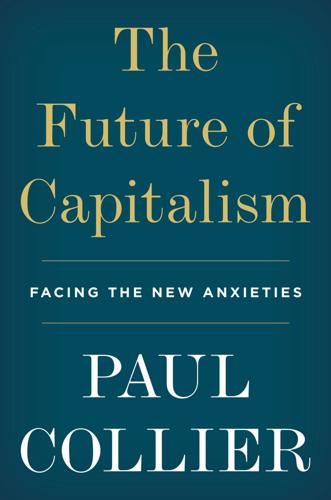
The Future of Capitalism: Facing the New Anxieties
by
Paul Collier
Published 4 Dec 2018
Breaking up monopolies forces competition into the sector, but since the technological scale economies continue to push towards monopoly, policy intervention has to be sustained. Even then, by blocking the scale economies, policy imposes inefficiency. Price controls aim to restrain the company from exploiting the scale economies for its own benefit, forcing it to pass the gains on to consumers. Its limitation we have already encountered in a different context – asymmetric information. In its previous incarnation, it was about the gap between what the management of a firm knows, and what fund managers can find out. Now it is about the gap between what the management of a firm knows and what the regulator knows. The most spectacular asymmetries have been in financial markets, between the regulators and the banks, but the problem is endemic.
…
To locate a specific entry, please use your ebook reader’s search tools. 3G mobile phone network, 88 Abedi, Salman, 212, 213 abortion, 99, 102 AfD (Alternative for Germany), 5 Africa, 8, 110–11, 192, 193 capital flight, 208 HIV sufferers in, 120–21 need for modern firms, 37 and World Bank/IMF, 118† youth’s hope of escape to Europe, 121 African Americans, 13 Akerlof, George, 18, 34, 35, 50–51 Amazon, 87, 91, 146, 147 anger management programmes, 160 Apple, 148 asymmetric information, 88, 90, 185 auction theory, 146–7, 148 Bank of England, 39 Bear Stearns, 71, 75, 86 belief systems and belonging, 34, 40–41, 42, 53–6, 165, 211–15 CEO compensation committees, 77–8 Clark’s ‘family culture’, 107–8 the ethical family, 97–8, 99–105, 108, 109, 210 formation through narratives, 34, 40–41, 42, 53–6, 165, 211–15 GM-Toyota comparisons, 72–4 and ISIS, 42 Johnson & Johnson’s Credo, 39–40, 40*, 41, 72, 74*, 79 and leadership, 41–2, 43, 95 of personal fulfilment, 28, 99, 100–101, 102, 103, 108–9, 213 polarization within polities, 38, 63, 202–5 and schools, 165 Theory of Signalling, 41, 43, 53, 63, 95 and trust, 27, 29*, 48, 53–4, 55–6, 59, 63, 73–4, 79, 94–5, 210 see also belonging, narrative of; reciprocity value-based echo-chambers, 38, 61–2, 64–5, 212, 215 see also nationalism belonging, narrative of absent from Utilitarian discourse, 16, 59, 66–7, 210–11 avoided by politicians, 66–7, 68, 211, 215 as a basic drive, 27, 31, 42–3, 65, 66 and belief systems, 34, 40–41, 42, 53–6, 211–15 in Bhutan, 37† civil society networks/groups, 180–81 and ‘common knowledge’, 32–3, 34, 54, 55, 66, 212 families as natural units for, 32, 97–8, 104 heyday of the ethical state, 49, 68, 114 and home ownership, 68, 181–2, 184 and ISIS, 42, 212, 213 and language, 32, 33, 54, 57 and mutual regard/reciprocity, 25, 40–41, 49, 53–6, 67, 68, 98, 181, 182, 210–11, 212–13 place-based identity, 51–6, 65–8, 211–14, 215 and purposive action, 68, 98, 114, 211, 212, 213 and salient identity, 51–6 Bennett, Alan, The History Boys, 7* Bentham, Jeremy, 9–10, 12, 13 Berlusconi, Silvio, 14 Besley, Tim, 18–19, 35 Betts, Alex, 27 BHS, 80, 172 Bhutan, 37†, 63 Biafra, 58 Bitcoin, 37–8, 193 Blackpool, 4 Bonhoeffer, Dietrich, Letters and Papers from Prison, 108 The Bottom Billion (Collier), 27 Brazil, 58 Brexit vote (June 2016), 5, 125, 131, 196, 215 British Academy, 7 British Motor Corporation, 74 Brooks, David, The Road to Character, 108 Buiter, Willem, 186 Bush, George W., 120–21 business zones, 150 ‘Butskellism’, 49* Cadbury, 77 Cameron, David, 205 Canada, 22 capitalism competition, 21, 25, 56, 85, 86 ‘creative destruction’ concept, 21 current failings of, 4–5, 17, 25, 42, 45–6, 48, 201, 212–13 and decline of social trust, 5, 45–6, 48, 55, 59, 69 as essential for prosperity, 4–5, 18, 20, 25, 201 and families, 37 first mover advantage, 148 and greed, 10, 19, 25–7, 28, 31, 42, 58, 69, 70†, 81, 95 and Marx’s alienation, 17–18 and oppositional identities, 56, 74 vested interests, 85, 86, 135–6, 207 see also firms Catalan secession movement, 58 causality, narrative of, 33, 34 CDC Group, 122, 149* Chaucer, Geoffrey, The Canterbury Tales, 129 Chicago, University of, 166 childhood adoption, 110–11 children in ‘care’, 104, 105, 110, 111, 157 children ‘reared by wolves’, 31–2 cognitive development, 105–6, 170, 175–6 fostering, 104, 105, 111 identity acquisition, 32 impact of parental unemployment, 160–61 learning of norms, 33, 35, 107–8 non-cognitive development, 105, 163, 169–70, 171–3, 174, 175–6 ‘rights of the child’ concept, 103–4 in single-parent families, 101, 102, 104–5, 155, 160 trusted mentors, 169–70 see also family China, 118–19, 149, 203 Chira, Susan, 52–3 Chirac, Jacques, 14, 120–21 Christian Democratic parties, 5, 14 Citigroup, 186 Clark, Gregory, The Son Also Rises, 106–8 Clarke, Ken, 206 class divide assortative mating among new elite, 99–100, 154, 188–9 author’s proposed policies, 19–20, 21, 183–4, 187–8, 190, 207–8 and breadth of social networks, 169 and Brexit vote, 5, 196 and cognitive development, 105–6 divergence dynamic, 7, 18, 48, 98–108, 154–61, 170–71, 172–80, 181–90 ‘elite’ attitudes to less-well educated, 4, 5, 12, 16, 53, 59, 60–61, 63 and family life, 20, 98, 99–106, 157–62 and fracture to skill-based identities, 3–5, 51–6, 78 and home ownership, 68, 181, 182–3 need for socially mixed schools, 164–5 and non-cognitive development, 105, 163, 169–70, 171–3, 174, 175–6 and parental hothousing, 100, 101, 105–6 post-school skills development, 170–76 pre-emptive support for stressed families, 20, 155, 157–60, 161–3, 208 and reading in pre-teens, 167–9 and recent populist insurgencies, 5 retirement insecurities, 179–80 and two-parent families, 155–6, 157 unravelling of shared identity, 15, 50, 51–6, 57*, 58–61, 63, 215 see also white working class climate change, 44, 67, 119 Clinton, Hillary, 5, 9, 203–4 coalition government, UK (2010–15), 206 cognitive behavioral therapy, 160 Cold War, 113, 114, 116 end of, 5–6, 115, 203 Colombia, 120 communism, 32, 36–7, 85–6 communitarian values care, 9, 11, 12, 16, 29, 31, 42, 116 fairness, 11, 12, 14, 16, 29, 31, 34, 43, 116, 132–3 hierarchy, 11, 12, 16, 38–9, 43, 99–100 left’s abandonment of, 16, 214* liberty, 11, 12, 16, 42 loyalty, 11, 12, 16, 29, 31, 34, 42–3, 116 new vanguard’s abandonment of, 9, 11–13, 14–15, 16, 17, 49–50, 113, 116–18, 121, 214 post-war settlement, 8–9, 49, 113–16, 122 and reciprocal obligations, 8–9, 11–12, 13, 14, 19, 33, 34, 40–41, 48–9, 201, 212–15 roots in nineteenth-century co-operatives, 8, 13, 14, 201 sanctity, 11, 16, 42–3 Smith and Hume, 21–2† values and reason, 29–30, 43–4 see also belonging, narrative of; obligation, narrative of; reciprocity; social democracy Companies Act, UK, 82 comparative advantage, 20, 120, 192, 194 Confederation of British Industry (CBI), 79 conservatism, 30, 36 Conservative Party, 14, 49, 205, 206 contraception, 98–9, 102 co-operative movement, 8, 13, 14, 201 Corbyn, Jeremy, 202, 204–5 Crosland, Anthony, The Future of Socialism, 17, 18, 19 Cuban Missile Crisis (1962), 114 debutante balls, 188 Denmark, 63, 178, 214* Descartes, Rene, 31 Detroit, 128, 129, 144 Deutsche Bank, 78, 185 development banks, 149–50 Development Corporations Act (1981), 150 Dickens, Charles, Bleak House, 108 digital networks detachment of narratives from place, 38, 61–2 economies of scale, 86–7 global e-utilities, 37, 38, 86–7, 89–90, 91 social media, 27, 61, 87, 173, 207, 215 value-based echo-chambers, 38, 61–2, 64–5, 212, 215 Draghi, Mario, 153 Dundee Project, 161–2 Dutch Antilles, 193 East Asia, 147, 192 eBay, 87 economic man, 10, 19, 25, 26–7, 31, 34–5, 196, 209, 210, 215 economic rent theory, 19, 91, 133–9, 140–44, 186–8, 192, 195, 207 education and collapse of social democracy, 50, 52, 53, 54, 55, 59, 63 and empathy, 12 and European identity, 57* expansion of universities, 99–100, 127 and growth of the middle class, 100 inequality in spending per pupil, 167 mis-ranking of cognitive and non-cognitive training, 174–6 need for socially mixed schools, 164–5 post-school skills development, 170–76 pre-school, 105–6, 163–4 quality of teaching, 165–6 reading in pre-teens, 167–9 and shocks to norms of ethical family, 98, 99–105 symbols of cognitive privilege, 175 teaching methods, 166–7 vocational education, 171–6 zero-sum aspects of success, 189 electoral systems, 206 Emerging Market economies, 129, 130–31 empires, age of, 113 The Enigma of Reason (Mercier and Sperber), 29 enlightened self-interest, 33, 40*, 97–8, 101, 109, 112, 113, 114, 117, 184, 213 Enron, 80 ethnicity, 3, 20, 56, 62, 64, 65, 211 Europe Christian Democrats in, 5, 14 class divides, 3, 4, 5, 125 decline in social trust, 45 and knowledge industries, 192 metropolitan-provincial divides, 3, 4, 125 and migration, 121, 197 and shared identity, 57–8, 64, 66, 125 social democracy in, 8–9, 49, 50 European Central Bank, 153 European Commission, 57 European Investment Bank, 149 European Union (EU, formerly EEC), 66, 67, 114, 115, 116, 117 Brexit vote (June 2016), 5, 125, 131, 196, 215 Eurozone crisis, 153 public policy as predominantly national, 212 universities in, 170 evolutionary theory, 31, 33†, 35–6, 66 externalities, 145–6 Facebook, 87 Fairbairn, Carolyn, 79 fake news, 33–4 family, 19 African norms, 110–11 benefits for single parents, 160 Clark’s ‘family culture’, 107–8 entitled individual vs family obligation, 99–103, 104–6, 108–9, 210 equality within, 39, 154 erosion of mutual obligations, 101–2, 210 identity acquisition, 32 ideologies hostile to, 36–7 impact of unemployment/poverty, 4, 7, 160–61 importance of, 36, 37 and increased longevity, 110, 161 in-kind support for parenting, 161 nuclear dynastic family, 102, 110, 154 one-parent families, 101, 102, 104–5, 155, 160 parental hothousing, 100, 101, 105–6 post-1945 ethical family, 97–8, 99–105, 108, 210 pressures on young parents, 159–60, 161–3 and public policy, 21, 154–5, 157–70, 171–3, 177, 209 and reciprocity, 97–8, 101, 102 shocks to post-1945 norms, 98–105 shrinking of extended family, 101–2, 109–10, 161 social maternalism concept, 154–5, 157–8, 190 two-parent families as preferable, 155–6, 157 see also childhood; marriage Farage, Nigel, 202 fascism, 6, 13*, 47, 113 Federalist papers, 82 feminism, 13, 99 Fillon, François, 204 financial crisis, global (2008–9), 4, 34, 71, 160 no bankers sent to gaol for, 95–6 financial sector, 77–9, 80–81, 83–5 asymmetric information, 88, 185 co-ordination role, 145–6 economies of scale, 87 localized past of, 84, 146 toxic rivalries in, 189 trading in financial assets, 78–9, 84, 184–5, 186, 187 Finland, 63 firms, 19, 21, 69 CEO pay, 77–8, 79, 80–81 competition, 21, 25, 56, 85, 86 control/accountability of, 75–81, 82–5 cultures of good corporate behaviour, 94–5 demutualization in UK, 83, 84 deteriorating behaviour of, 18, 69, 78, 80–81 economies of scale, 17–18, 37, 86–7, 88–91, 126–7, 144–5, 146–7 ethical, 70–71, 172, 209–10 and ethical citizens, 93–4, 95, 96 failure/bankruptcy of, 70, 71, 72, 74, 75–6 flattening of hierarchies in, 39 Friedman’s profit nostrum, 69–70, 71, 76, 78–9, 210 global e-utilities, 37, 38, 86–7, 89–90, 91 ideologies hostile to, 37, 81 low productivity-low cost business model, 173–4 ‘maximising of shareholder value’, 69–70, 76, 79, 82–3 ‘mutuals’, 83 need for bankslaughter crime, 95–6 new network features, 86–7 policing the public interest, 93–4 public dislike of, 69, 95–6 public interest representation on boards, 92–3 regulation of, 87–90, 174 reward linked to short-term performance, 77, 78–81 sense of purpose, 39–40, 41, 70–75, 80–81, 93–4, 96 shareholder control of, 76–7, 79, 80, 82–3 societal role of, 81–2, 92–3, 96, 209–10 utility services, 86, 89, 90 worker interests on boards, 83, 84–5 Fisher, Stephen, 196* Five Star, 125 Ford, 70, 71 France, 7, 63, 67, 114 écoles maternelles in, 164 labour market in, 176, 189 pensions policy, 180 presidential election (2017), 5, 9, 204 universities in, 170 working week reduced in, 189 Frederiksen, Mette, 214* Friedman, Milton, 15, 69–70, 71, 76 The Full Monty (film), 7, 129 G20 group, 118 G7 group, 118 G8 group, 194 Ganesh, Janan, 125 Geldof, Bob, 169 General Agreement on Tariffs and Trade (GATT), 114, 115, 116–17 General Motors (GM), 72, 73–4, 75, 86, 172 geographic divide, 3, 16, 18, 19, 215 author’s proposed policies, 19, 207 and Brexit vote, 125, 196 broken cities, 4, 7, 19, 48, 125, 129–30, 147–9 business zones, 150 co-ordination problem over new clusters, 145–50, 207 decline of provincial cities, 4, 7, 19, 48, 125, 129–30, 131, 144–5 economic forces driving, 126–30 and education spending, 167 first mover disadvantage, 148–9 ideological responses, 130–32 investment promotion agencies, 150–51 and local universities, 151–2 and metropolitan disdain, 125 need for political commitment, 153 as recent and reversible, 152–3 regenerating provincial cities, 19, 142, 144–50 and spending per school pupil, 167 widening of since 1980, 125 George, Henry, 133–6, 141 Germany 2017 election, 5, 205 local banks in, 146 Nazi era, 57 and oppositional identities, 56–7 oversight of firms in, 76 post-war industrial relations policy, 94–5 and post-war settlement, 114 re-emergence of far right, 5 rights of refugees in, 14 ‘social market economy’, 49 TVET in, 171–2, 174, 175 vereine (civil society groups), 181 worker interests on boards, 84–5 global divide, 7–8, 20, 59–60, 191–8, 208 globalization, 4, 18, 20, 126–7, 128, 129, 130–31, 191–8 Goldman Sachs, 70†, 83–4, 94 Google, 87 Great Depression (1930s), 114 Green, Sir Philip, 80 Grillo, Beppe, 202 ‘Grimm and Co’, Rotherham, 168–9 Gunning, Jan Willem, 165 Haidt, Jonathan, 11–12, 14, 16, 28, 29, 132–3 Haiti, 208 Halifax Building Society, 8, 84 Hamon, Benoît, 9, 204 Harvard-MIT, 7, 152 Hershey, 77 HIV sufferers in poor countries, 120–21 Hofer, Norbert, 202 Hollande, Francois, 9, 204 Hoover, 148 housing market, 181–4 buy-to-let, 182, 183, 184 and lawyers, 187 mortgages, 84, 176, 182, 183–4 proposed stock transfer from landlords to tenants, 184 Hume, David, 14, 21, 21–2†, 29 Huxley, Aldous, Brave New World (1932), 5 Iceland, 63 Identity Economics, 50–56, 65–7 ideologies based on hatred of ‘other’ part of society, 43, 56, 213, 214 ‘end of history’ triumphalism, 6, 43–4 hostile to families, 36–7 hostile to firms, 37, 81 hostile to the state, 37–8 and housing policy, 183 and migration, 198 New Right, 14–15, 26, 81, 129 norms of care and equality, 116, 132–3 polarization of politics, 38, 63, 202–5 pragmatic eschewal of, 17, 18, 21, 22, 29–30 and principle of reason, 9, 13, 14, 15, 21, 43 Rawlsian vanguard, 13–14, 30, 49–50, 53, 67, 112, 113, 201, 202, 203, 214 return of left-right confrontation, 5, 6, 81, 202–5 and rights, 12–14, 44, 112 seduction of, 6 and twentieth century’s catastrophes, 5–6, 22 views on an ethical world, 112 see also Marxism; rights ideology; Utilitarianism IFC (International Finance Corporation), 122 Imperial Chemical Industries (ICI), 69–70, 75 India, 118–19 individualism entitled individual vs family obligation, 99–103, 104–6, 108–9, 210 fulfilment through personal achievement, 28, 99, 100–101, 102, 103, 108–9, 213 New Right embrace of, 14–15, 53, 81, 214–15 as rampant in recent decades, 19, 214–15 reciprocity contrasted with, 44–5 and withering of spatial community, 61–2 industrial revolution, 8, 126 inequality and assortative mating among new elite, 99–100, 154, 188–9 and divergence dynamic, 7, 18, 48, 98–108, 154–61, 170–71, 172–80, 181–90 and financial sector, 185 and geographic divide, 3, 7–8, 20, 125 global divide, 7–8, 20, 59–60, 191–8, 208 persistence of, 106–8 Rawls’ disadvantaged groups, 3–4, 13–14, 16, 50, 53, 121, 203–4, 214 and revolt against social democracy, 15–16 rising levels of, 3–5, 106, 125, 181, 190 and Utilitarian calculus, 132 innovation, 185–6, 208 International Monetary Fund (IMF), 114, 117 international relations achievement of post-WW2 leaders, 113–16, 122 building of shared identity, 114–16 core concepts of ethical world, 112, 113–14 erosion of ethical world, 116–18 expansion of post-war ‘clubs’, 116–18, 210 new, multipurpose club needed, 118–19, 122 and patriotism narrative, 67 situation in 1945, 112–13, 122 investment promotion agencies, 150–51 Irish Investment Authority, 151 Islamist terrorism, 42, 212, 213 Italy, 4, 58, 160 James, William, 29* Janesville (US study), 178 Japan, 72–3, 94, 101, 149, 192 John Lewis Partnership, 83, 172 Johnson, Robert Wood, 39–40, 72 Johnson & Johnson, 39–40, 41, 72, 74*, 79 Jolie, Angelina, 112 JP Morgan, 71* Juppé, Alain, 204 Kagame, Paul, 22 Kay, John, 82*, 84, 211 Keynes, John Maynard, 115 General Theory (1936), 47 kindergartens, 163 Knausgård, Karl Ove, 173 knowledge revolution, 126, 127–8 Kranton, Rachel, 35, 50–51 Krueger, Anne, 141 Krugman, Paul, 47 labour market flexicurity concept, 178 function of, 176–7 and globalization, 192, 194–6 and immigration, 194, 195, 196 investment in skills, 176–7 job security, 176, 177 and low productivity-low cost business model, 173–4 minimum wage strategies, 147, 174, 176, 180 need for reductions in working hours, 189 need for renewed purpose in work, 190 regulation of, 174, 189 and robotics revolution, 178–9 role of state, 177–8, 189 see also unemployment Labour Party, 49, 206 Marxist take-over of, 9, 204–5 language, 31, 32, 33, 39–40, 54, 57 Larkin, Philip, 99, 156 lawyers, 13–14, 45 Buiter’s three types, 186 and shell companies, 193, 194 surfeit of, 186–7 taxation of private litigation proposal, 187–8 Le Pen, Marine, 5, 63, 125, 202, 204 leadership and belief systems, 41–2, 43, 95 building of shared identity, 39–42, 49, 68, 114–16 changing role of, 39 and flattening of hierarchies, 39 and ISIS, 42 political achievements in post-war period, 113–16, 122 and pragmatist philosophy, 22 and shared purpose in firms, 39–40, 41, 71–5 strategic use of morality, 39–40, 41 transformation of power into authority, 39, 41–2, 57 League of Nations, 116 Lee Kwan Yew, 22, 147 Lehman Brothers, 71*, 76 liberalism, 30 libertarianism, 12–13, 15 New Right failures, 16, 21 Silicon Valley, 37–8 lobbying, 85, 141 local government, 182, 183 London, 3, 125, 127–8, 165–6, 193 impact of Brexit on, 131, 196 migration to, 195–6 Macron, Emmanuel, 67, 204 Manchester terror attack (2017), 212, 213 market economy, 19, 20, 21, 25, 48 and collapse of clusters, 129–30, 144–5 failure over pensions, 180 failure over skill-formation, 173–4 mutual benefit from exchange, 28 market fundamentalists, 147, 150 marriage assortative mating, 35, 99–100, 154, 188–9 cohabitation prior to, 99, 100 as ‘commitment technology’, 109, 155–6 divorce rates, 98, 99, 100–101, 102, 103 and female oppression, 156 religious associations, 109, 156 and rent-seeking, 141 ‘shotgun weddings’, 103 and unemployment, 103 Marxism, 13*, 26, 30, 43, 47, 113, 203, 214 alienation concept, 17–18 and the family, 36–7 late capitalism concept, 6 takeover of Labour Party, 9, 204–5 and ‘useful idiots’, 205* view of the state, 37 Maxwell, Robert, 80 May, Theresa, 205 Mayer, Colin, 18, 70 media celebrities, 6, 112, 204 Mélenchon, Jean-Luc, 5, 202, 204 mental health, 157, 158–9, 162 Mercier, Hugo, 29 meritocratic elites, 3–4, 5, 12–17, 20 Rawlsian vanguard, 13–14, 30, 49–50, 53, 67, 112, 113, 201, 202, 203, 214 Utilitarian vanguard, 9–10, 11–13, 15–16, 18, 52, 53, 59, 66–7, 209 see also Utilitarianism WEIRD (Western, Educated, Industrial, Rich and Developed), 3–4, 12, 14, 16, 17, 20, 116, 121, 133, 214* and white working class, 5, 16 Merkel, Angela, 14, 205 metropolitan areas, 3, 4, 7, 16, 19, 48, 125 co-ordination problem over new clusters, 145–50, 207 economies of agglomeration, 18, 19, 129, 131, 133–44, 195, 196, 207 gains from public goods, 134–5, 138–9 migration to, 195–6 political responses to dominance of, 131–2 scale and specialization in, 126–8, 130, 144–5 and taxation, 131, 132–43, 187, 207 Middle East, 192 Middleton, Kate, 188–9 migration, 121, 194–8, 203 as driven by absolute advantage, 20, 194–5, 208–9 and housing market, 182, 183 Mill, John Stuart, 9–10 minimum wage strategies, 147, 174, 176, 180 Mitchell, Andrew, 188 Mitchell, Edson, 78 modernist architecture, 12 Monarch Airlines, 75 monopolies, natural, 86–7, 88 and asymmetric information, 88, 90 auctioning of rights, 88–9 taxation of, 91–2 utility services, 86, 89, 90 ‘moral hazard’, 179 morality and ethics deriving from values not reason, 27, 28–9, 42–3 and economic man, 10, 19, 25, 26–7, 31, 34–5 and empathy, 12, 27 evolution of ethical norms, 35–6 Haidt’s fundamental values, 11–12, 14, 16, 29, 42–3, 132–3 and market economy, 21, 25, 28, 48 and modern capitalism, 25–6 and new elites, 3–4, 20–21 Adam Smith’s theories, 26–8 use for strategic purposes, 39–40, 41 and Utilitarianism, 9–10, 11, 14, 16, 55, 66–7, 209, 214 motivated reasoning, 28–9, 36, 86, 144, 150, 167 Museveni, President, 121 narratives and childhood mentors, 169–70 and consistency, 41, 67, 81, 96 conveyed by language, 31, 33, 57 detachment from place by e-networks, 38, 61–2 and heyday of social democracy, 49 and identity formation, 32 mis-ranking of cognitive and non-cognitive training, 174–6 moral norms generated from, 33, 97–8 and purposive action, 33–4, 40–41, 42, 68 and schools, 165 of shared identity, 53–6, 81 use of by leaders, 39–42, 43, 49, 80–81 see also belonging, narrative of; obligation, narrative of; purposive action National Health Service (NHS), 49, 159 national identity and citizens-of-the-world agenda, 59–61, 63, 65 contempt of the educated for, 53, 59, 60–61, 63 and distinctive common culture, 37†, 63 established in childhood, 32 esteem from, 51–3 fracture to skill-based identities, 3–5, 51–6, 78 legacy of Second World War, 15, 16 methods of rebuilding, 64, 65–8, 211–15 and new nationalists, 62–3, 67, 203, 204, 205 patriotism narrative, 21, 63, 67, 215 place-based identity, 51–6, 65–8, 211–14, 215 and polarization of society, 54–5 and secession movements, 58 unravelling of shared identity, 15, 50, 51–6, 57*, 58–61, 63, 215 and value identity, 64–5 National Review, 16 nationalism, 34 based on ethnicity or religion, 62–3 capture of national identity notion by, 62, 67, 215 and narratives of hatred, 56, 57, 58–9 and oppositional identities, 56–7, 58–9, 62–3, 68, 215 traditional form of, 62 natural rights concept, 12, 13 Nestlé, 70, 71 Netherlands, 206 networked groups as arena for exchanging obligations, 28 and ‘common knowledge’, 32–3, 34, 54, 55, 66, 212 decline of civil society networks/ groups, 180–81 and early man, 31 evolution of ethical norms, 35–6 exclusion of disruptive narratives, 34 families as, 97–8 leadership’s use of narratives, 39–42, 49 narratives detached from place, 38, 61–2 value-based echo-chambers, 38, 61–2, 64–5, 212, 215 see also family; firms Neustadt, Richard, 39* New York City, 5, 125, 128, 143–4, 193 NGOs, 71, 118, 157–8 ‘niche construction’, 35*, 36* Nigeria, 58 Noble, Diana, 149* Norman, Jesse, 21–2† North Atlantic Treaty Organization (NATO), 114, 115, 116, 117 North Korea, 85 Northern League, Italy, 58 Norway, 63, 206, 208–9 Nozick, Robert, 14–15 obligation, narrative of, 11, 12–13, 16, 19, 29, 33 and collapse of social democracy, 53–6, 210 entitled individual vs family obligation, 99–103, 104–6, 108–9, 210 in ethical world, 112, 113–22 and expansion of post-war ‘clubs’, 117–18, 210 fairness and loyalty instilled by, 34 heyday of the ethical state, 48–9, 68, 196–7 and immigration, 196–7 and leadership, 39, 40–41, 49 ‘oughts’ and ‘wants’, 27, 28, 33, 43 and secession movements, 58 and Adam Smith, 27, 28 see also reciprocity; rescue, duty of oil industry, 192 Organization for Economic Co-operation and Development (OECD), 114–15, 125 Orwell, George, Nineteen Eighty-Four (1949), 5 Oxford university, 7, 70, 100 Paris, 5, 7, 125, 128, 174, 179 patriotism, 21, 63, 67, 215 Pause (NGO), 157–8 pension funds, 76–7, 79–81, 179–80, 185 Pew Research Center, 169 Pinker, Steven, 12* Plato, The Republic, 9, 11, 12, 15, 43 Playboy magazine, 99 political power and holders of economic rent, 135–6, 144 leadership selection systems in UK, 204–5, 206 minimum age for voting, 203 need to restore the centre, 205–7 polarization within polities, 38, 63, 202–5 polities as spatial, 38, 61–2, 65, 68, 211–13 and shared identity, 8, 57–61, 65, 114–16, 211–15 transformation into authority, 41–2, 57–8 trust in government, 4, 5, 48, 59, 210, 211–12 populism, political, 6, 22, 43, 58–9, 202 and geographic divide, 130–31 headless-heart, 30, 60, 112, 119, 121, 122 media celebrities, 6, 112, 204 pragmatism as opposed to, 30 and US presidential election (2016), 5, 203–4 pragmatist philosophy, 6, 9, 19, 21, 21–2†, 46, 201 author’s proposed policies, 19–20, 21, 207–15 limitations of, 30 and Macron in France, 204 and migration, 198 and post-war settlement, 113, 116, 122 and social democracy, 18, 201–2 successful leaders, 22 and taxation, 132, 207 and teaching methods, 166–7 values and reason, 29–30, 43–4 proportional representation, 206 protectionism, 113, 114, 130–31 psychology, social, 16, 54 co-ordination problems, 32–3 esteem’s trumping of money, 174 Haidt’s fundamental values, 11–12, 14, 16, 29, 42–3, 132–3 narratives, 31, 32, 33–4, 38, 39–42, 49, 53–6 norms, 33, 35–6, 39, 42–3, 44, 97–8, 107–8 ‘oughts’ and ‘wants’, 27, 28, 33, 43 personal achievement vs family obligation, 99–103, 104–6, 108–9, 210 ‘theory of mind’, 27, 55 Public Choice Theory, 15–16 public goods, 134–5, 138–9, 186, 202, 213 public ownership, 90 Puigdemont, Carles, 202 purposive action, 18, 21, 25, 26, 34, 40*, 53–4, 68, 112, 211–13 autonomy and responsibility, 38–9 and belonging narrative, 68, 98, 114, 211, 212, 213 in Bhutan, 37† decline in ethical purpose across society, 48 and heyday of social democracy, 47, 49, 114 and narratives, 33–4, 40–41, 42, 68 in workplace, 190 Putnam, Robert, 45–6, 106 Bowling Alone, 181 ‘quality circles’, 72–3 Rajan, Raghuram, 178 Rand, Ayn, 32 rational social woman, 31, 50–51, 196 Rawls, John, 13–14 Reagan, Ronald, 15, 26 Reback, Gary, 90 reciprocity, 9, 19, 31, 212–15 and belonging, 25, 40–41, 49, 53–6, 67, 68, 98, 181, 182, 210–11, 212–13 and collapse of social democracy, 11, 14, 53–6, 58–61, 201, 210 and corporate behaviour, 95 in ethical world, 112, 113–15, 116 and expansion of post-war ‘clubs’, 117–18, 210 fairness and loyalty as supporting, 29, 31, 34 and the family, 97–8, 101, 102 and geographic divide, 125 heyday of the ethical state, 48–9, 68, 96, 196–7, 201 and ISIS, 42 Macron’s patriotism narrative, 67 nineteenth-century co-operatives, 8 rights matched to obligations, 44–5 and three types of narrative, 33, 34, 40–41 transformation of power into authority, 39, 41–2, 57–8 Refuge (Betts and Collier), 27 refugees, 14, 27, 115, 119–20, 213 regulation, 87–90 and globalization, 193–4 of labour market, 174 religion, 56–7, 62–3, 109, 156 religious fundamentalism, 6, 30, 36–7, 212, 213, 215 rent-seeking concept, 140–41, 150, 186, 187–8, 195 rescue, duty of, 40, 54, 119–21, 210, 213 as instrument for ethical imperialism, 117–18, 210 as not matched by rights, 44, 45, 117 and post-war settlement, 113, 115–16 restoring and augmenting autonomy, 121–2 and stressed young families, 163 term defined, 27, 112 value of care as underpinning, 29 retirement pensions, 179–80 rights ideology and corresponding obligations, 44–5 emergence in 1970s, 12–14 human rights lobby, 112, 118, 118* individualism as rampant in recent decades, 19, 214–15 and lawyers, 13–14, 45 Libertarian use of, 12–13, 14–15 natural rights concept, 12, 13 and New Right, 12–13, 14–15, 53 Rawls’ disadvantaged groups, 3–4, 13–14, 16, 50, 53, 112, 121, 203–4, 214 ‘rights of the child’ concept, 103–4 and Utilitarian atate, 12–14 see also individualism Romania, communist, 32, 36 Rotherham, ‘Grimm and Co’, 168–9 rule of law, 138–9, 186 Rwanda, 22 Salmond, Alex, 202 Sandel, Michael, 105 Sanders, Bernie, 9, 64, 202, 203 Sarkozy, Nicolas, 204 Schultz, Martin, 14 Schumpeter, Joseph, 21* Scotland, 58 Seligman, Martin, 108–9 sexual behaviour birth-control pill, 98–9, 102 and class divide, 99, 102, 155–6 concept of sin, 156 and HIV, 121 and stigma, 156–8 sexual orientation, 3, 45 Sheffield, 7, 8, 126, 128–9, 131, 151, 168, 192 shell companies, 193, 194 Shiller, Robert, 34 Sidgwick, Henry, 55 Signalling, Theory of, 41, 43, 53, 63, 95 Silicon Valley, 37–8, 62, 145, 152, 164 Singapore, 22, 147 Slovenia, 58 Smith, Adam, 14, 21, 21–2†, 174 and mutual benefit from exchange, 28 and pursuit of self- interest, 26–7, 40 on reason, 29 The Theory of Moral Sentiments (1759), 27, 28, 174 Wealth of Nations (1776), 26, 28, 174 Smith, Vernon, 28 social democracy ‘Butskellism’, 49* collapse of, 9, 11, 50, 51–6, 116–18, 201–2, 210 communitarian roots, 8–9, 11, 13, 14, 17, 48–9, 201 and group identities, 3–4, 13–14, 51–6 heyday of, 8–9, 15, 17, 47, 48–9, 68, 96, 196–7, 201, 210 and housing, 181–2 influence of Utilitarianism, 9, 10, 14, 16, 18, 49–50, 201, 203, 214 Libertarian challenge, 12–13, 14–15 New Right abandonment of, 14–15, 16, 26, 53 and Public Choice Theory, 15–16 replaced by social paternalism, 11–13, 49–50, 209–10 and rights ideology, 12–14 and secession movements, 58 shared identity harnessed by, 15, 196–7 unravelling of shared identity, 15, 50, 51–6, 57*, 58–61, 63, 215 and Utilitarianism, 214 social maternalism concept, 21, 154–5, 190 free pre-school education, 163–4 mentoring for children, 169–70, 208 support for stressed families, 20, 155, 157–60, 161–3, 208 social media, 27, 61, 87, 173, 207, 215 social paternalism backlash against, 11–13, 15–16 as cavalier about globalization, 20 and child-rearing/family, 105, 110, 154–5, 157, 158, 159, 160, 190, 209 replaces social democracy, 11–13, 49–50, 209–10 ‘rights of the child’ concept, 103–4 and Utilitarian vanguard, 9–10, 11–13, 15–16, 18, 66–7, 209 social services, 159 scrutiny role, 162 Solow, Robert, 141 Soros, George, 15* South Africa, 85 South Asia, 192 South Korea, 129, 130–31 South Sudan, 192 Soviet Union, 114, 115, 116, 203 Spain, 58, 160 specialization, 17–18, 36, 126–8, 130, 144–5, 192 Spence, Michael, 41, 53, 95 Sperber, Dan, 29 St Andrews University, 189 Stanford University, 145, 152 Starbucks, 193 the state, 19 ethical capacities of, 11, 20–21, 48–9 failures in 1930s, 47, 48 ideologies hostile to, 37–8 and pre-school education, 163–4 and prosperity, 37 public policy and job shocks, 177–8 public policy on the family, 21, 154–5, 157–70, 171–3, 177, 209 public-sector and co-ordination problem, 147–8 social maternalism policies, 21, 157, 190 Utilitarian takeover of public policy, 10–12, 13–14, 15–17, 18, 49–50, 113, 201 Stiglitz, Joseph, 56 Stoke-on-Trent, 129 Stonehenge, 64 Sudan, 8 Summers, Larry, 187 Sure Start programme, 164 Sutton, John, 151* Sweden, 178 Switzerland, 175, 206 Tanzania, 193 taxation and corporate globalization, 193, 194 of economic rents, 91–2, 187–8 ethics and efficiency, 132–43 on financial transactions, 187 generational differences in attitudes, 59 Henry George’s Theorem, 133–6, 141 heyday of the ethical state, 49 issues of desert, 132–3, 134–9 and the metropolis, 131, 132–43, 187, 207 and migration, 197 of natural monopolies, 91–2 ‘optimal’, 10 of private litigation in courts, 187–8 and reciprocity, 54, 55, 59 redesign of needed, 19 redistributive, 10, 11, 14, 49, 54, 55, 60, 197 of rents of agglomeration, 19, 132–44, 207 social maternalism policies, 21, 157 substantial decline in top rates, 55 tax havens, 62 Venables-Collier theory, 136–9 Teach First programme, 165–6 technical vocational education and training (TVET), 171–6 technological change, 4 robotics revolution, 178–9 and withering of spatial community, 61–2 see also digital networks telomeres, 155–6 Tepperman, Jonathan, The Fix, 22 Thatcher, Margaret, 15, 26 Thirty Years War, 56–7 Tirole, Jean, 177, 178 Toyota, 72–3, 74, 94, 172 trade unions, 173, 174, 176 Troubled Families Programme (TFP), 162 Trudeau, Pierre, 22 Trump, Donald, 5, 9, 63, 64, 86, 125, 136, 202, 204, 206, 215 Uber, 87 unemployment in 1930s, 47 and collapse of industry, 7, 103, 129, 192 impact on children, 160–61 older workers, 4, 103, 213 retraining schemes, 178 in USA, 160 young people, 4 Unilever, 70, 71 United Kingdom collapse of heavy industry, 7, 103, 129, 192 extreme politics in, 5 and falling life expectancy, 4 financial sector, 80, 83, 84–5 IMF bail-out (1976), 115 local banks in past, 146 northern England, 3, 7, 8, 84, 126, 128–9, 131, 151, 168, 192 shareholder control of firms, 76–7, 79, 80, 82–3 statistics on firms in, 37 universities in, 170, 172, 175* vocational education in, 172, 175† widening of geographic divide, 125 United Nations, 65, 112 ‘Club of 77’, 116 Security Council, 116 UNHCR, 115 United States breakdown of ethical family, 104–5 broken cities in, 129, 130 extreme politics in, 5, 63 and falling life expectancy, 4 financial sector, 83–4, 186 and global e-utilities, 89–90 growth in inequality since 1980, 125 heyday of the ethical state, 49 and knowledge industries, 192 labour market in, 176, 178 local banks in past, 146 oversight of firms in, 76 pessimism in, 5, 45–6 presidential election (2016), 5, 9, 203–4 Public Interest Companies, 93 public policy as predominantly national, 212 ‘rights of the child’ concept in, 103–4 Roosevelt’s New Deal, 47 statistics on firms in, 37 taxation in, 143–4, 144* unemployment in, 160 universities in, 170, 172, 173 weakening of NATO commitment, 117 universities in broken cities, 151–2 in EU countries, 170 expansion of, 99–100, 127 knowledge clusters at, 127, 151–2 low quality vocational courses, 172–3 in UK, 170, 172, 175* in US, 170, 172, 173 urban planning, post-war, 11–12 Utilitarianism, 19, 30, 49–50, 55, 108, 112, 121, 210–11 backlash against, 11–13, 201, 202 belonging as absent from discourse, 16, 59, 66–7, 210–11 care as key value, 12 and consumption, 10, 11, 16, 19–20, 209 equality as key value, 12, 13, 14, 15, 116, 132–3, 214 incorporated into economics, 10–11, 13–14, 16 influence on social democrats, 9, 10, 14, 16, 18, 49–50, 201, 203, 214 origins of, 9–10 paternalistic guardians, 9–10, 11–13, 66–7, 210 takeover of public policy, 10–12, 13–14, 15–17, 18, 49–50, 113, 201 and taxation, 10, 132*, 133 vanguard’s switch of identity salience, 52, 53, 59 Valls, Manuel, 204 Venables, Tony, 18, 136, 191* Venezuela, 120, 214 vested interests, 85–6, 135–6, 165, 166, 207 Volkswagen, 74–5 Walmart, 87 Warsi, Baroness Sayeeda, 65 Wedgwood, Josiah, 129 welfare state, 9, 48–9 unlinked from contributions, 14 well-being and happiness belonging and esteem, 16, 25, 27, 29, 31–3, 34, 42, 51–6, 97–8, 174 entitled individual vs family obligation, 108–9 and financial success, 26, 94 ‘ladder of life’, 25* poverty in Africa, 37 reciprocity as decisive for, 31 Westminster, Duke of, 136 white working class ‘elite’ attitudes to, 4, 5, 16 falling life expectancy, 4, 16 pessimism of, 5 William, Prince, 188–9 Williams, Bernard, 55* Wittgenstein, 62, 63 Wolf, Alison, 52–3, 155 World Bank, 115, 117, 118, 118*, 122 World Food Programme, 115 World Health Organization, 115 World Trade Organization (WTO), 116–17 Yugoslavia, 58 Zingales, Luigi, 178 Zuma, Jacob, 85 Copyright THE FUTURE OF CAPITALISM.
…
To locate a specific entry, please use your ebook reader’s search tools. 3G mobile phone network, 88 Abedi, Salman, 212, 213 abortion, 99, 102 AfD (Alternative for Germany), 5 Africa, 8, 110–11, 192, 193 capital flight, 208 HIV sufferers in, 120–21 need for modern firms, 37 and World Bank/IMF, 118† youth’s hope of escape to Europe, 121 African Americans, 13 Akerlof, George, 18, 34, 35, 50–51 Amazon, 87, 91, 146, 147 anger management programmes, 160 Apple, 148 asymmetric information, 88, 90, 185 auction theory, 146–7, 148 Bank of England, 39 Bear Stearns, 71, 75, 86 belief systems and belonging, 34, 40–41, 42, 53–6, 165, 211–15 CEO compensation committees, 77–8 Clark’s ‘family culture’, 107–8 the ethical family, 97–8, 99–105, 108, 109, 210 formation through narratives, 34, 40–41, 42, 53–6, 165, 211–15 GM-Toyota comparisons, 72–4 and ISIS, 42 Johnson & Johnson’s Credo, 39–40, 40*, 41, 72, 74*, 79 and leadership, 41–2, 43, 95 of personal fulfilment, 28, 99, 100–101, 102, 103, 108–9, 213 polarization within polities, 38, 63, 202–5 and schools, 165 Theory of Signalling, 41, 43, 53, 63, 95 and trust, 27, 29*, 48, 53–4, 55–6, 59, 63, 73–4, 79, 94–5, 210 see also belonging, narrative of; reciprocity value-based echo-chambers, 38, 61–2, 64–5, 212, 215 see also nationalism belonging, narrative of absent from Utilitarian discourse, 16, 59, 66–7, 210–11 avoided by politicians, 66–7, 68, 211, 215 as a basic drive, 27, 31, 42–3, 65, 66 and belief systems, 34, 40–41, 42, 53–6, 211–15 in Bhutan, 37† civil society networks/groups, 180–81 and ‘common knowledge’, 32–3, 34, 54, 55, 66, 212 families as natural units for, 32, 97–8, 104 heyday of the ethical state, 49, 68, 114 and home ownership, 68, 181–2, 184 and ISIS, 42, 212, 213 and language, 32, 33, 54, 57 and mutual regard/reciprocity, 25, 40–41, 49, 53–6, 67, 68, 98, 181, 182, 210–11, 212–13 place-based identity, 51–6, 65–8, 211–14, 215 and purposive action, 68, 98, 114, 211, 212, 213 and salient identity, 51–6 Bennett, Alan, The History Boys, 7* Bentham, Jeremy, 9–10, 12, 13 Berlusconi, Silvio, 14 Besley, Tim, 18–19, 35 Betts, Alex, 27 BHS, 80, 172 Bhutan, 37†, 63 Biafra, 58 Bitcoin, 37–8, 193 Blackpool, 4 Bonhoeffer, Dietrich, Letters and Papers from Prison, 108 The Bottom Billion (Collier), 27 Brazil, 58 Brexit vote (June 2016), 5, 125, 131, 196, 215 British Academy, 7 British Motor Corporation, 74 Brooks, David, The Road to Character, 108 Buiter, Willem, 186 Bush, George W., 120–21 business zones, 150 ‘Butskellism’, 49* Cadbury, 77 Cameron, David, 205 Canada, 22 capitalism competition, 21, 25, 56, 85, 86 ‘creative destruction’ concept, 21 current failings of, 4–5, 17, 25, 42, 45–6, 48, 201, 212–13 and decline of social trust, 5, 45–6, 48, 55, 59, 69 as essential for prosperity, 4–5, 18, 20, 25, 201 and families, 37 first mover advantage, 148 and greed, 10, 19, 25–7, 28, 31, 42, 58, 69, 70†, 81, 95 and Marx’s alienation, 17–18 and oppositional identities, 56, 74 vested interests, 85, 86, 135–6, 207 see also firms Catalan secession movement, 58 causality, narrative of, 33, 34 CDC Group, 122, 149* Chaucer, Geoffrey, The Canterbury Tales, 129 Chicago, University of, 166 childhood adoption, 110–11 children in ‘care’, 104, 105, 110, 111, 157 children ‘reared by wolves’, 31–2 cognitive development, 105–6, 170, 175–6 fostering, 104, 105, 111 identity acquisition, 32 impact of parental unemployment, 160–61 learning of norms, 33, 35, 107–8 non-cognitive development, 105, 163, 169–70, 171–3, 174, 175–6 ‘rights of the child’ concept, 103–4 in single-parent families, 101, 102, 104–5, 155, 160 trusted mentors, 169–70 see also family China, 118–19, 149, 203 Chira, Susan, 52–3 Chirac, Jacques, 14, 120–21 Christian Democratic parties, 5, 14 Citigroup, 186 Clark, Gregory, The Son Also Rises, 106–8 Clarke, Ken, 206 class divide assortative mating among new elite, 99–100, 154, 188–9 author’s proposed policies, 19–20, 21, 183–4, 187–8, 190, 207–8 and breadth of social networks, 169 and Brexit vote, 5, 196 and cognitive development, 105–6 divergence dynamic, 7, 18, 48, 98–108, 154–61, 170–71, 172–80, 181–90 ‘elite’ attitudes to less-well educated, 4, 5, 12, 16, 53, 59, 60–61, 63 and family life, 20, 98, 99–106, 157–62 and fracture to skill-based identities, 3–5, 51–6, 78 and home ownership, 68, 181, 182–3 need for socially mixed schools, 164–5 and non-cognitive development, 105, 163, 169–70, 171–3, 174, 175–6 and parental hothousing, 100, 101, 105–6 post-school skills development, 170–76 pre-emptive support for stressed families, 20, 155, 157–60, 161–3, 208 and reading in pre-teens, 167–9 and recent populist insurgencies, 5 retirement insecurities, 179–80 and two-parent families, 155–6, 157 unravelling of shared identity, 15, 50, 51–6, 57*, 58–61, 63, 215 see also white working class climate change, 44, 67, 119 Clinton, Hillary, 5, 9, 203–4 coalition government, UK (2010–15), 206 cognitive behavioral therapy, 160 Cold War, 113, 114, 116 end of, 5–6, 115, 203 Colombia, 120 communism, 32, 36–7, 85–6 communitarian values care, 9, 11, 12, 16, 29, 31, 42, 116 fairness, 11, 12, 14, 16, 29, 31, 34, 43, 116, 132–3 hierarchy, 11, 12, 16, 38–9, 43, 99–100 left’s abandonment of, 16, 214* liberty, 11, 12, 16, 42 loyalty, 11, 12, 16, 29, 31, 34, 42–3, 116 new vanguard’s abandonment of, 9, 11–13, 14–15, 16, 17, 49–50, 113, 116–18, 121, 214 post-war settlement, 8–9, 49, 113–16, 122 and reciprocal obligations, 8–9, 11–12, 13, 14, 19, 33, 34, 40–41, 48–9, 201, 212–15 roots in nineteenth-century co-operatives, 8, 13, 14, 201 sanctity, 11, 16, 42–3 Smith and Hume, 21–2† values and reason, 29–30, 43–4 see also belonging, narrative of; obligation, narrative of; reciprocity; social democracy Companies Act, UK, 82 comparative advantage, 20, 120, 192, 194 Confederation of British Industry (CBI), 79 conservatism, 30, 36 Conservative Party, 14, 49, 205, 206 contraception, 98–9, 102 co-operative movement, 8, 13, 14, 201 Corbyn, Jeremy, 202, 204–5 Crosland, Anthony, The Future of Socialism, 17, 18, 19 Cuban Missile Crisis (1962), 114 debutante balls, 188 Denmark, 63, 178, 214* Descartes, Rene, 31 Detroit, 128, 129, 144 Deutsche Bank, 78, 185 development banks, 149–50 Development Corporations Act (1981), 150 Dickens, Charles, Bleak House, 108 digital networks detachment of narratives from place, 38, 61–2 economies of scale, 86–7 global e-utilities, 37, 38, 86–7, 89–90, 91 social media, 27, 61, 87, 173, 207, 215 value-based echo-chambers, 38, 61–2, 64–5, 212, 215 Draghi, Mario, 153 Dundee Project, 161–2 Dutch Antilles, 193 East Asia, 147, 192 eBay, 87 economic man, 10, 19, 25, 26–7, 31, 34–5, 196, 209, 210, 215 economic rent theory, 19, 91, 133–9, 140–44, 186–8, 192, 195, 207 education and collapse of social democracy, 50, 52, 53, 54, 55, 59, 63 and empathy, 12 and European identity, 57* expansion of universities, 99–100, 127 and growth of the middle class, 100 inequality in spending per pupil, 167 mis-ranking of cognitive and non-cognitive training, 174–6 need for socially mixed schools, 164–5 post-school skills development, 170–76 pre-school, 105–6, 163–4 quality of teaching, 165–6 reading in pre-teens, 167–9 and shocks to norms of ethical family, 98, 99–105 symbols of cognitive privilege, 175 teaching methods, 166–7 vocational education, 171–6 zero-sum aspects of success, 189 electoral systems, 206 Emerging Market economies, 129, 130–31 empires, age of, 113 The Enigma of Reason (Mercier and Sperber), 29 enlightened self-interest, 33, 40*, 97–8, 101, 109, 112, 113, 114, 117, 184, 213 Enron, 80 ethnicity, 3, 20, 56, 62, 64, 65, 211 Europe Christian Democrats in, 5, 14 class divides, 3, 4, 5, 125 decline in social trust, 45 and knowledge industries, 192 metropolitan-provincial divides, 3, 4, 125 and migration, 121, 197 and shared identity, 57–8, 64, 66, 125 social democracy in, 8–9, 49, 50 European Central Bank, 153 European Commission, 57 European Investment Bank, 149 European Union (EU, formerly EEC), 66, 67, 114, 115, 116, 117 Brexit vote (June 2016), 5, 125, 131, 196, 215 Eurozone crisis, 153 public policy as predominantly national, 212 universities in, 170 evolutionary theory, 31, 33†, 35–6, 66 externalities, 145–6 Facebook, 87 Fairbairn, Carolyn, 79 fake news, 33–4 family, 19 African norms, 110–11 benefits for single parents, 160 Clark’s ‘family culture’, 107–8 entitled individual vs family obligation, 99–103, 104–6, 108–9, 210 equality within, 39, 154 erosion of mutual obligations, 101–2, 210 identity acquisition, 32 ideologies hostile to, 36–7 impact of unemployment/poverty, 4, 7, 160–61 importance of, 36, 37 and increased longevity, 110, 161 in-kind support for parenting, 161 nuclear dynastic family, 102, 110, 154 one-parent families, 101, 102, 104–5, 155, 160 parental hothousing, 100, 101, 105–6 post-1945 ethical family, 97–8, 99–105, 108, 210 pressures on young parents, 159–60, 161–3 and public policy, 21, 154–5, 157–70, 171–3, 177, 209 and reciprocity, 97–8, 101, 102 shocks to post-1945 norms, 98–105 shrinking of extended family, 101–2, 109–10, 161 social maternalism concept, 154–5, 157–8, 190 two-parent families as preferable, 155–6, 157 see also childhood; marriage Farage, Nigel, 202 fascism, 6, 13*, 47, 113 Federalist papers, 82 feminism, 13, 99 Fillon, François, 204 financial crisis, global (2008–9), 4, 34, 71, 160 no bankers sent to gaol for, 95–6 financial sector, 77–9, 80–81, 83–5 asymmetric information, 88, 185 co-ordination role, 145–6 economies of scale, 87 localized past of, 84, 146 toxic rivalries in, 189 trading in financial assets, 78–9, 84, 184–5, 186, 187 Finland, 63 firms, 19, 21, 69 CEO pay, 77–8, 79, 80–81 competition, 21, 25, 56, 85, 86 control/accountability of, 75–81, 82–5 cultures of good corporate behaviour, 94–5 demutualization in UK, 83, 84 deteriorating behaviour of, 18, 69, 78, 80–81 economies of scale, 17–18, 37, 86–7, 88–91, 126–7, 144–5, 146–7 ethical, 70–71, 172, 209–10 and ethical citizens, 93–4, 95, 96 failure/bankruptcy of, 70, 71, 72, 74, 75–6 flattening of hierarchies in, 39 Friedman’s profit nostrum, 69–70, 71, 76, 78–9, 210 global e-utilities, 37, 38, 86–7, 89–90, 91 ideologies hostile to, 37, 81 low productivity-low cost business model, 173–4 ‘maximising of shareholder value’, 69–70, 76, 79, 82–3 ‘mutuals’, 83 need for bankslaughter crime, 95–6 new network features, 86–7 policing the public interest, 93–4 public dislike of, 69, 95–6 public interest representation on boards, 92–3 regulation of, 87–90, 174 reward linked to short-term performance, 77, 78–81 sense of purpose, 39–40, 41, 70–75, 80–81, 93–4, 96 shareholder control of, 76–7, 79, 80, 82–3 societal role of, 81–2, 92–3, 96, 209–10 utility services, 86, 89, 90 worker interests on boards, 83, 84–5 Fisher, Stephen, 196* Five Star, 125 Ford, 70, 71 France, 7, 63, 67, 114 écoles maternelles in, 164 labour market in, 176, 189 pensions policy, 180 presidential election (2017), 5, 9, 204 universities in, 170 working week reduced in, 189 Frederiksen, Mette, 214* Friedman, Milton, 15, 69–70, 71, 76 The Full Monty (film), 7, 129 G20 group, 118 G7 group, 118 G8 group, 194 Ganesh, Janan, 125 Geldof, Bob, 169 General Agreement on Tariffs and Trade (GATT), 114, 115, 116–17 General Motors (GM), 72, 73–4, 75, 86, 172 geographic divide, 3, 16, 18, 19, 215 author’s proposed policies, 19, 207 and Brexit vote, 125, 196 broken cities, 4, 7, 19, 48, 125, 129–30, 147–9 business zones, 150 co-ordination problem over new clusters, 145–50, 207 decline of provincial cities, 4, 7, 19, 48, 125, 129–30, 131, 144–5 economic forces driving, 126–30 and education spending, 167 first mover disadvantage, 148–9 ideological responses, 130–32 investment promotion agencies, 150–51 and local universities, 151–2 and metropolitan disdain, 125 need for political commitment, 153 as recent and reversible, 152–3 regenerating provincial cities, 19, 142, 144–50 and spending per school pupil, 167 widening of since 1980, 125 George, Henry, 133–6, 141 Germany 2017 election, 5, 205 local banks in, 146 Nazi era, 57 and oppositional identities, 56–7 oversight of firms in, 76 post-war industrial relations policy, 94–5 and post-war settlement, 114 re-emergence of far right, 5 rights of refugees in, 14 ‘social market economy’, 49 TVET in, 171–2, 174, 175 vereine (civil society groups), 181 worker interests on boards, 84–5 global divide, 7–8, 20, 59–60, 191–8, 208 globalization, 4, 18, 20, 126–7, 128, 129, 130–31, 191–8 Goldman Sachs, 70†, 83–4, 94 Google, 87 Great Depression (1930s), 114 Green, Sir Philip, 80 Grillo, Beppe, 202 ‘Grimm and Co’, Rotherham, 168–9 Gunning, Jan Willem, 165 Haidt, Jonathan, 11–12, 14, 16, 28, 29, 132–3 Haiti, 208 Halifax Building Society, 8, 84 Hamon, Benoît, 9, 204 Harvard-MIT, 7, 152 Hershey, 77 HIV sufferers in poor countries, 120–21 Hofer, Norbert, 202 Hollande, Francois, 9, 204 Hoover, 148 housing market, 181–4 buy-to-let, 182, 183, 184 and lawyers, 187 mortgages, 84, 176, 182, 183–4 proposed stock transfer from landlords to tenants, 184 Hume, David, 14, 21, 21–2†, 29 Huxley, Aldous, Brave New World (1932), 5 Iceland, 63 Identity Economics, 50–56, 65–7 ideologies based on hatred of ‘other’ part of society, 43, 56, 213, 214 ‘end of history’ triumphalism, 6, 43–4 hostile to families, 36–7 hostile to firms, 37, 81 hostile to the state, 37–8 and housing policy, 183 and migration, 198 New Right, 14–15, 26, 81, 129 norms of care and equality, 116, 132–3 polarization of politics, 38, 63, 202–5 pragmatic eschewal of, 17, 18, 21, 22, 29–30 and principle of reason, 9, 13, 14, 15, 21, 43 Rawlsian vanguard, 13–14, 30, 49–50, 53, 67, 112, 113, 201, 202, 203, 214 return of left-right confrontation, 5, 6, 81, 202–5 and rights, 12–14, 44, 112 seduction of, 6 and twentieth century’s catastrophes, 5–6, 22 views on an ethical world, 112 see also Marxism; rights ideology; Utilitarianism IFC (International Finance Corporation), 122 Imperial Chemical Industries (ICI), 69–70, 75 India, 118–19 individualism entitled individual vs family obligation, 99–103, 104–6, 108–9, 210 fulfilment through personal achievement, 28, 99, 100–101, 102, 103, 108–9, 213 New Right embrace of, 14–15, 53, 81, 214–15 as rampant in recent decades, 19, 214–15 reciprocity contrasted with, 44–5 and withering of spatial community, 61–2 industrial revolution, 8, 126 inequality and assortative mating among new elite, 99–100, 154, 188–9 and divergence dynamic, 7, 18, 48, 98–108, 154–61, 170–71, 172–80, 181–90 and financial sector, 185 and geographic divide, 3, 7–8, 20, 125 global divide, 7–8, 20, 59–60, 191–8, 208 persistence of, 106–8 Rawls’ disadvantaged groups, 3–4, 13–14, 16, 50, 53, 121, 203–4, 214 and revolt against social democracy, 15–16 rising levels of, 3–5, 106, 125, 181, 190 and Utilitarian calculus, 132 innovation, 185–6, 208 International Monetary Fund (IMF), 114, 117 international relations achievement of post-WW2 leaders, 113–16, 122 building of shared identity, 114–16 core concepts of ethical world, 112, 113–14 erosion of ethical world, 116–18 expansion of post-war ‘clubs’, 116–18, 210 new, multipurpose club needed, 118–19, 122 and patriotism narrative, 67 situation in 1945, 112–13, 122 investment promotion agencies, 150–51 Irish Investment Authority, 151 Islamist terrorism, 42, 212, 213 Italy, 4, 58, 160 James, William, 29* Janesville (US study), 178 Japan, 72–3, 94, 101, 149, 192 John Lewis Partnership, 83, 172 Johnson, Robert Wood, 39–40, 72 Johnson & Johnson, 39–40, 41, 72, 74*, 79 Jolie, Angelina, 112 JP Morgan, 71* Juppé, Alain, 204 Kagame, Paul, 22 Kay, John, 82*, 84, 211 Keynes, John Maynard, 115 General Theory (1936), 47 kindergartens, 163 Knausgård, Karl Ove, 173 knowledge revolution, 126, 127–8 Kranton, Rachel, 35, 50–51 Krueger, Anne, 141 Krugman, Paul, 47 labour market flexicurity concept, 178 function of, 176–7 and globalization, 192, 194–6 and immigration, 194, 195, 196 investment in skills, 176–7 job security, 176, 177 and low productivity-low cost business model, 173–4 minimum wage strategies, 147, 174, 176, 180 need for reductions in working hours, 189 need for renewed purpose in work, 190 regulation of, 174, 189 and robotics revolution, 178–9 role of state, 177–8, 189 see also unemployment Labour Party, 49, 206 Marxist take-over of, 9, 204–5 language, 31, 32, 33, 39–40, 54, 57 Larkin, Philip, 99, 156 lawyers, 13–14, 45 Buiter’s three types, 186 and shell companies, 193, 194 surfeit of, 186–7 taxation of private litigation proposal, 187–8 Le Pen, Marine, 5, 63, 125, 202, 204 leadership and belief systems, 41–2, 43, 95 building of shared identity, 39–42, 49, 68, 114–16 changing role of, 39 and flattening of hierarchies, 39 and ISIS, 42 political achievements in post-war period, 113–16, 122 and pragmatist philosophy, 22 and shared purpose in firms, 39–40, 41, 71–5 strategic use of morality, 39–40, 41 transformation of power into authority, 39, 41–2, 57 League of Nations, 116 Lee Kwan Yew, 22, 147 Lehman Brothers, 71*, 76 liberalism, 30 libertarianism, 12–13, 15 New Right failures, 16, 21 Silicon Valley, 37–8 lobbying, 85, 141 local government, 182, 183 London, 3, 125, 127–8, 165–6, 193 impact of Brexit on, 131, 196 migration to, 195–6 Macron, Emmanuel, 67, 204 Manchester terror attack (2017), 212, 213 market economy, 19, 20, 21, 25, 48 and collapse of clusters, 129–30, 144–5 failure over pensions, 180 failure over skill-formation, 173–4 mutual benefit from exchange, 28 market fundamentalists, 147, 150 marriage assortative mating, 35, 99–100, 154, 188–9 cohabitation prior to, 99, 100 as ‘commitment technology’, 109, 155–6 divorce rates, 98, 99, 100–101, 102, 103 and female oppression, 156 religious associations, 109, 156 and rent-seeking, 141 ‘shotgun weddings’, 103 and unemployment, 103 Marxism, 13*, 26, 30, 43, 47, 113, 203, 214 alienation concept, 17–18 and the family, 36–7 late capitalism concept, 6 takeover of Labour Party, 9, 204–5 and ‘useful idiots’, 205* view of the state, 37 Maxwell, Robert, 80 May, Theresa, 205 Mayer, Colin, 18, 70 media celebrities, 6, 112, 204 Mélenchon, Jean-Luc, 5, 202, 204 mental health, 157, 158–9, 162 Mercier, Hugo, 29 meritocratic elites, 3–4, 5, 12–17, 20 Rawlsian vanguard, 13–14, 30, 49–50, 53, 67, 112, 113, 201, 202, 203, 214 Utilitarian vanguard, 9–10, 11–13, 15–16, 18, 52, 53, 59, 66–7, 209 see also Utilitarianism WEIRD (Western, Educated, Industrial, Rich and Developed), 3–4, 12, 14, 16, 17, 20, 116, 121, 133, 214* and white working class, 5, 16 Merkel, Angela, 14, 205 metropolitan areas, 3, 4, 7, 16, 19, 48, 125 co-ordination problem over new clusters, 145–50, 207 economies of agglomeration, 18, 19, 129, 131, 133–44, 195, 196, 207 gains from public goods, 134–5, 138–9 migration to, 195–6 political responses to dominance of, 131–2 scale and specialization in, 126–8, 130, 144–5 and taxation, 131, 132–43, 187, 207 Middle East, 192 Middleton, Kate, 188–9 migration, 121, 194–8, 203 as driven by absolute advantage, 20, 194–5, 208–9 and housing market, 182, 183 Mill, John Stuart, 9–10 minimum wage strategies, 147, 174, 176, 180 Mitchell, Andrew, 188 Mitchell, Edson, 78 modernist architecture, 12 Monarch Airlines, 75 monopolies, natural, 86–7, 88 and asymmetric information, 88, 90 auctioning of rights, 88–9 taxation of, 91–2 utility services, 86, 89, 90 ‘moral hazard’, 179 morality and ethics deriving from values not reason, 27, 28–9, 42–3 and economic man, 10, 19, 25, 26–7, 31, 34–5 and empathy, 12, 27 evolution of ethical norms, 35–6 Haidt’s fundamental values, 11–12, 14, 16, 29, 42–3, 132–3 and market economy, 21, 25, 28, 48 and modern capitalism, 25–6 and new elites, 3–4, 20–21 Adam Smith’s theories, 26–8 use for strategic purposes, 39–40, 41 and Utilitarianism, 9–10, 11, 14, 16, 55, 66–7, 209, 214 motivated reasoning, 28–9, 36, 86, 144, 150, 167 Museveni, President, 121 narratives and childhood mentors, 169–70 and consistency, 41, 67, 81, 96 conveyed by language, 31, 33, 57 detachment from place by e-networks, 38, 61–2 and heyday of social democracy, 49 and identity formation, 32 mis-ranking of cognitive and non-cognitive training, 174–6 moral norms generated from, 33, 97–8 and purposive action, 33–4, 40–41, 42, 68 and schools, 165 of shared identity, 53–6, 81 use of by leaders, 39–42, 43, 49, 80–81 see also belonging, narrative of; obligation, narrative of; purposive action National Health Service (NHS), 49, 159 national identity and citizens-of-the-world agenda, 59–61, 63, 65 contempt of the educated for, 53, 59, 60–61, 63 and distinctive common culture, 37†, 63 established in childhood, 32 esteem from, 51–3 fracture to skill-based identities, 3–5, 51–6, 78 legacy of Second World War, 15, 16 methods of rebuilding, 64, 65–8, 211–15 and new nationalists, 62–3, 67, 203, 204, 205 patriotism narrative, 21, 63, 67, 215 place-based identity, 51–6, 65–8, 211–14, 215 and polarization of society, 54–5 and secession movements, 58 unravelling of shared identity, 15, 50, 51–6, 57*, 58–61, 63, 215 and value identity, 64–5 National Review, 16 nationalism, 34 based on ethnicity or religion, 62–3 capture of national identity notion by, 62, 67, 215 and narratives of hatred, 56, 57, 58–9 and oppositional identities, 56–7, 58–9, 62–3, 68, 215 traditional form of, 62 natural rights concept, 12, 13 Nestlé, 70, 71 Netherlands, 206 networked groups as arena for exchanging obligations, 28 and ‘common knowledge’, 32–3, 34, 54, 55, 66, 212 decline of civil society networks/ groups, 180–81 and early man, 31 evolution of ethical norms, 35–6 exclusion of disruptive narratives, 34 families as, 97–8 leadership’s use of narratives, 39–42, 49 narratives detached from place, 38, 61–2 value-based echo-chambers, 38, 61–2, 64–5, 212, 215 see also family; firms Neustadt, Richard, 39* New York City, 5, 125, 128, 143–4, 193 NGOs, 71, 118, 157–8 ‘niche construction’, 35*, 36* Nigeria, 58 Noble, Diana, 149* Norman, Jesse, 21–2† North Atlantic Treaty Organization (NATO), 114, 115, 116, 117 North Korea, 85 Northern League, Italy, 58 Norway, 63, 206, 208–9 Nozick, Robert, 14–15 obligation, narrative of, 11, 12–13, 16, 19, 29, 33 and collapse of social democracy, 53–6, 210 entitled individual vs family obligation, 99–103, 104–6, 108–9, 210 in ethical world, 112, 113–22 and expansion of post-war ‘clubs’, 117–18, 210 fairness and loyalty instilled by, 34 heyday of the ethical state, 48–9, 68, 196–7 and immigration, 196–7 and leadership, 39, 40–41, 49 ‘oughts’ and ‘wants’, 27, 28, 33, 43 and secession movements, 58 and Adam Smith, 27, 28 see also reciprocity; rescue, duty of oil industry, 192 Organization for Economic Co-operation and Development (OECD), 114–15, 125 Orwell, George, Nineteen Eighty-Four (1949), 5 Oxford university, 7, 70, 100 Paris, 5, 7, 125, 128, 174, 179 patriotism, 21, 63, 67, 215 Pause (NGO), 157–8 pension funds, 76–7, 79–81, 179–80, 185 Pew Research Center, 169 Pinker, Steven, 12* Plato, The Republic, 9, 11, 12, 15, 43 Playboy magazine, 99 political power and holders of economic rent, 135–6, 144 leadership selection systems in UK, 204–5, 206 minimum age for voting, 203 need to restore the centre, 205–7 polarization within polities, 38, 63, 202–5 polities as spatial, 38, 61–2, 65, 68, 211–13 and shared identity, 8, 57–61, 65, 114–16, 211–15 transformation into authority, 41–2, 57–8 trust in government, 4, 5, 48, 59, 210, 211–12 populism, political, 6, 22, 43, 58–9, 202 and geographic divide, 130–31 headless-heart, 30, 60, 112, 119, 121, 122 media celebrities, 6, 112, 204 pragmatism as opposed to, 30 and US presidential election (2016), 5, 203–4 pragmatist philosophy, 6, 9, 19, 21, 21–2†, 46, 201 author’s proposed policies, 19–20, 21, 207–15 limitations of, 30 and Macron in France, 204 and migration, 198 and post-war settlement, 113, 116, 122 and social democracy, 18, 201–2 successful leaders, 22 and taxation, 132, 207 and teaching methods, 166–7 values and reason, 29–30, 43–4 proportional representation, 206 protectionism, 113, 114, 130–31 psychology, social, 16, 54 co-ordination problems, 32–3 esteem’s trumping of money, 174 Haidt’s fundamental values, 11–12, 14, 16, 29, 42–3, 132–3 narratives, 31, 32, 33–4, 38, 39–42, 49, 53–6 norms, 33, 35–6, 39, 42–3, 44, 97–8, 107–8 ‘oughts’ and ‘wants’, 27, 28, 33, 43 personal achievement vs family obligation, 99–103, 104–6, 108–9, 210 ‘theory of mind’, 27, 55 Public Choice Theory, 15–16 public goods, 134–5, 138–9, 186, 202, 213 public ownership, 90 Puigdemont, Carles, 202 purposive action, 18, 21, 25, 26, 34, 40*, 53–4, 68, 112, 211–13 autonomy and responsibility, 38–9 and belonging narrative, 68, 98, 114, 211, 212, 213 in Bhutan, 37† decline in ethical purpose across society, 48 and heyday of social democracy, 47, 49, 114 and narratives, 33–4, 40–41, 42, 68 in workplace, 190 Putnam, Robert, 45–6, 106 Bowling Alone, 181 ‘quality circles’, 72–3 Rajan, Raghuram, 178 Rand, Ayn, 32 rational social woman, 31, 50–51, 196 Rawls, John, 13–14 Reagan, Ronald, 15, 26 Reback, Gary, 90 reciprocity, 9, 19, 31, 212–15 and belonging, 25, 40–41, 49, 53–6, 67, 68, 98, 181, 182, 210–11, 212–13 and collapse of social democracy, 11, 14, 53–6, 58–61, 201, 210 and corporate behaviour, 95 in ethical world, 112, 113–15, 116 and expansion of post-war ‘clubs’, 117–18, 210 fairness and loyalty as supporting, 29, 31, 34 and the family, 97–8, 101, 102 and geographic divide, 125 heyday of the ethical state, 48–9, 68, 96, 196–7, 201 and ISIS, 42 Macron’s patriotism narrative, 67 nineteenth-century co-operatives, 8 rights matched to obligations, 44–5 and three types of narrative, 33, 34, 40–41 transformation of power into authority, 39, 41–2, 57–8 Refuge (Betts and Collier), 27 refugees, 14, 27, 115, 119–20, 213 regulation, 87–90 and globalization, 193–4 of labour market, 174 religion, 56–7, 62–3, 109, 156 religious fundamentalism, 6, 30, 36–7, 212, 213, 215 rent-seeking concept, 140–41, 150, 186, 187–8, 195 rescue, duty of, 40, 54, 119–21, 210, 213 as instrument for ethical imperialism, 117–18, 210 as not matched by rights, 44, 45, 117 and post-war settlement, 113, 115–16 restoring and augmenting autonomy, 121–2 and stressed young families, 163 term defined, 27, 112 value of care as underpinning, 29 retirement pensions, 179–80 rights ideology and corresponding obligations, 44–5 emergence in 1970s, 12–14 human rights lobby, 112, 118, 118* individualism as rampant in recent decades, 19, 214–15 and lawyers, 13–14, 45 Libertarian use of, 12–13, 14–15 natural rights concept, 12, 13 and New Right, 12–13, 14–15, 53 Rawls’ disadvantaged groups, 3–4, 13–14, 16, 50, 53, 112, 121, 203–4, 214 ‘rights of the child’ concept, 103–4 and Utilitarian atate, 12–14 see also individualism Romania, communist, 32, 36 Rotherham, ‘Grimm and Co’, 168–9 rule of law, 138–9, 186 Rwanda, 22 Salmond, Alex, 202 Sandel, Michael, 105 Sanders, Bernie, 9, 64, 202, 203 Sarkozy, Nicolas, 204 Schultz, Martin, 14 Schumpeter, Joseph, 21* Scotland, 58 Seligman, Martin, 108–9 sexual behaviour birth-control pill, 98–9, 102 and class divide, 99, 102, 155–6 concept of sin, 156 and HIV, 121 and stigma, 156–8 sexual orientation, 3, 45 Sheffield, 7, 8, 126, 128–9, 131, 151, 168, 192 shell companies, 193, 194 Shiller, Robert, 34 Sidgwick, Henry, 55 Signalling, Theory of, 41, 43, 53, 63, 95 Silicon Valley, 37–8, 62, 145, 152, 164 Singapore, 22, 147 Slovenia, 58 Smith, Adam, 14, 21, 21–2†, 174 and mutual benefit from exchange, 28 and pursuit of self- interest, 26–7, 40 on reason, 29 The Theory of Moral Sentiments (1759), 27, 28, 174 Wealth of Nations (1776), 26, 28, 174 Smith, Vernon, 28 social democracy ‘Butskellism’, 49* collapse of, 9, 11, 50, 51–6, 116–18, 201–2, 210 communitarian roots, 8–9, 11, 13, 14, 17, 48–9, 201 and group identities, 3–4, 13–14, 51–6 heyday of, 8–9, 15, 17, 47, 48–9, 68, 96, 196–7, 201, 210 and housing, 181–2 influence of Utilitarianism, 9, 10, 14, 16, 18, 49–50, 201, 203, 214 Libertarian challenge, 12–13, 14–15 New Right abandonment of, 14–15, 16, 26, 53 and Public Choice Theory, 15–16 replaced by social paternalism, 11–13, 49–50, 209–10 and rights ideology, 12–14 and secession movements, 58 shared identity harnessed by, 15, 196–7 unravelling of shared identity, 15, 50, 51–6, 57*, 58–61, 63, 215 and Utilitarianism, 214 social maternalism concept, 21, 154–5, 190 free pre-school education, 163–4 mentoring for children, 169–70, 208 support for stressed families, 20, 155, 157–60, 161–3, 208 social media, 27, 61, 87, 173, 207, 215 social paternalism backlash against, 11–13, 15–16 as cavalier about globalization, 20 and child-rearing/family, 105, 110, 154–5, 157, 158, 159, 160, 190, 209 replaces social democracy, 11–13, 49–50, 209–10 ‘rights of the child’ concept, 103–4 and Utilitarian vanguard, 9–10, 11–13, 15–16, 18, 66–7, 209 social services, 159 scrutiny role, 162 Solow, Robert, 141 Soros, George, 15* South Africa, 85 South Asia, 192 South Korea, 129, 130–31 South Sudan, 192 Soviet Union, 114, 115, 116, 203 Spain, 58, 160 specialization, 17–18, 36, 126–8, 130, 144–5, 192 Spence, Michael, 41, 53, 95 Sperber, Dan, 29 St Andrews University, 189 Stanford University, 145, 152 Starbucks, 193 the state, 19 ethical capacities of, 11, 20–21, 48–9 failures in 1930s, 47, 48 ideologies hostile to, 37–8 and pre-school education, 163–4 and prosperity, 37 public policy and job shocks, 177–8 public policy on the family, 21, 154–5, 157–70, 171–3, 177, 209 public-sector and co-ordination problem, 147–8 social maternalism policies, 21, 157, 190 Utilitarian takeover of public policy, 10–12, 13–14, 15–17, 18, 49–50, 113, 201 Stiglitz, Joseph, 56 Stoke-on-Trent, 129 Stonehenge, 64 Sudan, 8 Summers, Larry, 187 Sure Start programme, 164 Sutton, John, 151* Sweden, 178 Switzerland, 175, 206 Tanzania, 193 taxation and corporate globalization, 193, 194 of economic rents, 91–2, 187–8 ethics and efficiency, 132–43 on financial transactions, 187 generational differences in attitudes, 59 Henry George’s Theorem, 133–6, 141 heyday of the ethical state, 49 issues of desert, 132–3, 134–9 and the metropolis, 131, 132–43, 187, 207 and migration, 197 of natural monopolies, 91–2 ‘optimal’, 10 of private litigation in courts, 187–8 and reciprocity, 54, 55, 59 redesign of needed, 19 redistributive, 10, 11, 14, 49, 54, 55, 60, 197 of rents of agglomeration, 19, 132–44, 207 social maternalism policies, 21, 157 substantial decline in top rates, 55 tax havens, 62 Venables-Collier theory, 136–9 Teach First programme, 165–6 technical vocational education and training (TVET), 171–6 technological change, 4 robotics revolution, 178–9 and withering of spatial community, 61–2 see also digital networks telomeres, 155–6 Tepperman, Jonathan, The Fix, 22 Thatcher, Margaret, 15, 26 Thirty Years War, 56–7 Tirole, Jean, 177, 178 Toyota, 72–3, 74, 94, 172 trade unions, 173, 174, 176 Troubled Families Programme (TFP), 162 Trudeau, Pierre, 22 Trump, Donald, 5, 9, 63, 64, 86, 125, 136, 202, 204, 206, 215 Uber, 87 unemployment in 1930s, 47 and collapse of industry, 7, 103, 129, 192 impact on children, 160–61 older workers, 4, 103, 213 retraining schemes, 178 in USA, 160 young people, 4 Unilever, 70, 71 United Kingdom collapse of heavy industry, 7, 103, 129, 192 extreme politics in, 5 and falling life expectancy, 4 financial sector, 80, 83, 84–5 IMF bail-out (1976), 115 local banks in past, 146 northern England, 3, 7, 8, 84, 126, 128–9, 131, 151, 168, 192 shareholder control of firms, 76–7, 79, 80, 82–3 statistics on firms in, 37 universities in, 170, 172, 175* vocational education in, 172, 175† widening of geographic divide, 125 United Nations, 65, 112 ‘Club of 77’, 116 Security Council, 116 UNHCR, 115 United States breakdown of ethical family, 104–5 broken cities in, 129, 130 extreme politics in, 5, 63 and falling life expectancy, 4 financial sector, 83–4, 186 and global e-utilities, 89–90 growth in inequality since 1980, 125 heyday of the ethical state, 49 and knowledge industries, 192 labour market in, 176, 178 local banks in past, 146 oversight of firms in, 76 pessimism in, 5, 45–6 presidential election (2016), 5, 9, 203–4 Public Interest Companies, 93 public policy as predominantly national, 212 ‘rights of the child’ concept in, 103–4 Roosevelt’s New Deal, 47 statistics on firms in, 37 taxation in, 143–4, 144* unemployment in, 160 universities in, 170, 172, 173 weakening of NATO commitment, 117 universities in broken cities, 151–2 in EU countries, 170 expansion of, 99–100, 127 knowledge clusters at, 127, 151–2 low quality vocational courses, 172–3 in UK, 170, 172, 175* in US, 170, 172, 173 urban planning, post-war, 11–12 Utilitarianism, 19, 30, 49–50, 55, 108, 112, 121, 210–11 backlash against, 11–13, 201, 202 belonging as absent from discourse, 16, 59, 66–7, 210–11 care as key value, 12 and consumption, 10, 11, 16, 19–20, 209 equality as key value, 12, 13, 14, 15, 116, 132–3, 214 incorporated into economics, 10–11, 13–14, 16 influence on social democrats, 9, 10, 14, 16, 18, 49–50, 201, 203, 214 origins of, 9–10 paternalistic guardians, 9–10, 11–13, 66–7, 210 takeover of public policy, 10–12, 13–14, 15–17, 18, 49–50, 113, 201 and taxation, 10, 132*, 133 vanguard’s switch of identity salience, 52, 53, 59 Valls, Manuel, 204 Venables, Tony, 18, 136, 191* Venezuela, 120, 214 vested interests, 85–6, 135–6, 165, 166, 207 Volkswagen, 74–5 Walmart, 87 Warsi, Baroness Sayeeda, 65 Wedgwood, Josiah, 129 welfare state, 9, 48–9 unlinked from contributions, 14 well-being and happiness belonging and esteem, 16, 25, 27, 29, 31–3, 34, 42, 51–6, 97–8, 174 entitled individual vs family obligation, 108–9 and financial success, 26, 94 ‘ladder of life’, 25* poverty in Africa, 37 reciprocity as decisive for, 31 Westminster, Duke of, 136 white working class ‘elite’ attitudes to, 4, 5, 16 falling life expectancy, 4, 16 pessimism of, 5 William, Prince, 188–9 Williams, Bernard, 55* Wittgenstein, 62, 63 Wolf, Alison, 52–3, 155 World Bank, 115, 117, 118, 118*, 122 World Food Programme, 115 World Health Organization, 115 World Trade Organization (WTO), 116–17 Yugoslavia, 58 Zingales, Luigi, 178 Zuma, Jacob, 85 Copyright THE FUTURE OF CAPITALISM.
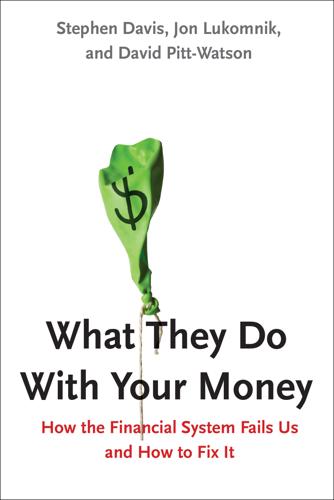
What They Do With Your Money: How the Financial System Fails Us, and How to Fix It
by
Stephen Davis
,
Jon Lukomnik
and
David Pitt-Watson
Published 30 Apr 2016
The IEX is backed by mutual fund companies and other longer-term investors, and the hope is that it will attract enough investors frustrated with the advantages given to high-frequency traders to provide adequate liquidity.65 It may or may not work, but the basic idea, to find a venue where longer-term investors can be treated fairly, will no doubt be a driving force in other innovations. REGULATE HIGH-FREQUENCY TRADERS APPROPRIATELY Some academics make a strong case that when a high-frequency trader can get information before the general market, it functions as something of a “market maker,” a legal term that carries with it a requirement to not take advantage of that information asymmetry. Recent work has suggested that math and physics can create a standard for who is a market maker, thereby ensuring a fair trading system for all.66 USE COLLECTIVE ACTION TO ALLOW MONEY MANAGERS TO FOCUS ON BENEFITS FOR ALL As we have seen, citizen investors benefit when asset managers address big systemic issues, even if no individual asset manager gains a competitive advantage.
…
Stephen Davis, Jon Lukomnik, and David Pitt-Watson, “Active Shareowner Stewardship: A New Paradigm for Capitalism,” Rotman International Journal of Pension Management 2, no. 2 (Fall 2009), http://papers.ssrn.com/sol3/papers.cfm?abstract_id=1493279. 23. The industry’s argument against applying fiduciary standards to brokers are two-fold. The first argument is that they are just selling financial products. But that ignores the information asymmetry between brokers and their clients. The second is that the added cost of complying with a fiduciary standard in a litigious society such as the United States will mean that some brokers will refuse to provide advice. That may well be true, but the question is, what type of advice is now being provided, and what will be provided in the future?

When to Rob a Bank: ...And 131 More Warped Suggestions and Well-Intended Rants
by
Steven D. Levitt
and
Stephen J. Dubner
Published 4 May 2015
Why on earth, I asked Wolf, would anyone pay $100 extra—probably every month—to fill a prescription at Walgreens instead of Costco? His answer: if a retiree is used to filling his prescriptions at Walgreens, that’s where he fills his prescriptions, and he assumes that the price of a generic drug (or, perhaps, any drug) is pretty much the same at any pharmacy. Talk about information asymmetry; talk about price discrimination! I had meant to write about this, and had collected a few relevant links: a TV news report in Houston about Wolf’s discovery; an extensive price comparison compiled by a TV news reporter in Detroit; a Consumer Reports survey; and a research report on the subject from Senator Dianne Feinstein.
…
I’ll have to remember that the next time my kids catch me trying to buy a two-dollar toy when I’d promised one for twenty. The New-Car Mating Dance (SDL) My car is ten years old, so I went out to buy a new one this weekend. In Freakonomics and SuperFreakonomics, we write a lot about how the Internet has changed markets in which there are information asymmetries. Buying a new car gave me the chance to see firsthand these forces at work in the new car market. I was not disappointed. I already knew what kind of car I wanted. Within fifteen minutes and at no cost, using sites like TrueCar and Edmunds, I not only had a good idea of a fair price to pay for the car, but also was able to notify some local car dealerships that I was interested in quotes.

Radicalized
by
Cory Doctorow
Published 19 Mar 2019
He’d be the first one to build a guillotine, and because he was Martin, it would be an awesome guillotine, so absolutely badass and overengineered, with a turbocharger and a self-sharpening blade. Because that was Martin, all the way. It’s why Fort Doom was the incredible place it was. It was all about information asymmetries. Markets corrected them. If knowing a secret could make a stupid, unworthy person rich, then sooner or later, smart, superior people would find that secret out and clear out the misallocated wealth of all those dimbulbs. Markets were awesome at this. Back when everyone lived in shithole mud-street villages, the superior people had no choice but to breed with whoever was in the vicinity.
…
Even a one-in-ten-million, six-sigma genius would end up hitched for life to some cow-eyed milkmaid, diluting the incredible genes he’d been handed by nature’s Powerball lotto. But little by little, humans got smarter, as the geniuses found smarter milkmaids, until they could build markets and then the information systems that markets thrived on, and then the information asymmetry started to collapse, slowly at first, then all at once, like a cliff that had been undermined by the inexorable tide of millions of human actions harnessed to the common goal of improving the species and its dominion over the earth. Once the information about where the best people were hanging out became public knowledge, then anyone who fluked into good genes and a high sigma knew exactly where they belonged.
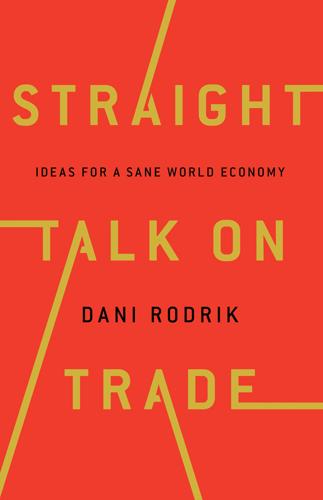
Straight Talk on Trade: Ideas for a Sane World Economy
by
Dani Rodrik
Published 8 Oct 2017
What, for example, is the link between China’s decision to accumulate large amounts of foreign reserves and a mortgage lender in California taking excessive risks? It is impossible to decipher such interrelationships without relying on elements from behavioral economics, agency theory, information economics, and international economics. The academic literature is chock-full of models of financial bubbles, asymmetric information, incentive distortions, self-fulfilling crises, and systemic risk. Pretty much everything needed to explain the crisis and its aftermath was in the research journals! But in the years leading up to the crisis, many economists downplayed these models’ lessons in favor of models of efficient and self-correcting markets, which resulted in inadequate government oversight over financial markets.
…
Let the government simply enforce property rights and contracts, and—presto!—markets can work their magic. In fact, the kind of markets that modern economies need are not self-creating, self-regulating, self-stabilizing, or self-legitimizing. Governments must invest in transport and communication networks; counteract asymmetric information, externalities, and unequal bargaining power; moderate financial panics and recessions; and respond to popular demands for safety nets and social insurance. Markets are the essence of a market economy in the same sense that lemons are the essence of lemonade. Pure lemon juice is barely drinkable.
…
First, there are errors of omission—cases in which blind spots in the consensus prevent economists from being able to see troubles looming ahead. A prominent example was the failure of economists to grasp the dangerous confluence of circumstances that produced the global financial crisis. As I argued earlier, the oversight was not due to the lack of models of bubbles, asymmetric information, distorted incentives, or bank runs. It was due to the fact that such models were neglected in favor of models that stressed efficient markets. Then there are the errors of commission—cases in which economists’ fixation on one particular model of the world makes them complicit in the administration of policies whose failure could have been predicted ahead of time.

Chaos Monkeys: Obscene Fortune and Random Failure in Silicon Valley
by
Antonio Garcia Martinez
Published 27 Jun 2016
Like any large company, Facebook would always aim to create monopoly pricing power and maintain information asymmetry, rather than drive true innovation. If Facebook played with the outside world, it always played with loaded dice. Recall the depths of the credit crash at Goldman back in 2008. Goldman could have pushed for the obvious technical step of trading credit derivatives on exchanges, which would have resulted in greater volume and greater transparency, and taken the regulatory heat off. But would Goldman cede its information asymmetry in the form of the trading flows that it, and only it, saw? Would it cede the ability to more or less arbitrarily set prices for credit risk, alongside a tightly knit network of brokers, effectively manipulating the market to its own benefit, rather than offering an open one?
…
The internal chatter on the desk was that the government would exploit the crisis to regulate our Wild West market. Goldman (briefly) considered taking the initiative and self-regulating into exchange-traded markets instead. It decided against doing so, with reasoning I’d see again at Facebook: an incumbent in a market dominated by a few, with total information asymmetry, and the ability to make prices on the market rather than just take them, has little incentive to increase transparency. The bid-ask spread—that is, Goldman’s difference in price when buying or selling the same thing—was huge on credit derivatives. Goldman made fortunes simply passing a piece of paper from its left hand to its right, from seller of risk to buyer of it.

Economists and the Powerful
by
Norbert Haring
,
Norbert H. Ring
and
Niall Douglas
Published 30 Sep 2012
These models feature perfect competition, efficient financial markets, full information and eternal equilibrium. People are modeled as being perfectly substitutable for one another, which stands in stark contrast to the championing of the individual that has long been a mainstay of mainstream economics. In particular, defining away imperfect and asymmetric information – and not talking about it – goes a long way in tacitly taking power out of economics. Power has been made taboo and thus acquired a negative connotation. However, most firms and corporations would not function without it. Without functioning corporations, there would be no basis for the high wages that they pay.
…
If they negotiate with an employer organization over standards for the whole industry, this will also take care of the adverse selection problem for companies who are willing to satisfy union demands. The downside of collective negotiations is, of course, that individual preference differences around the average cannot be taken into account. Failure to deal adequately with the issue of asymmetric information might well explain why Americans have so much less vacation time and longer workweeks than Europeans. The US labor market is much closer to the neoclassical ideal of free contract. In most of Europe there are long minimum vacation times and extensive restrictions on the length of the workweek imposed by governments or unions.
…
Schmitz, James A. Jr. 2005. “What Determines Productivity? Lessons from the Dramatic Recovery of the U.S. and Canadian Iron Ore Industries Following Their Early 1980s Crisis.” Journal of Political Economy 113: 582–625. Schmitz, Patrick. 2004. “Job Protection Laws and Agency Problems under Asymmetric Information.” European Economic Review 48: 1027–46. Schularick, Moritz and Alan M. Taylor. 2009. “Credit Booms Gone Bust: Monetary Policy, Leverage Cycles and Financial Crises, 1870–2008.” NBER Working Paper 15512. Schumpeter, Joseph. 1943/2003. Capitalism, Socialism and Democracy. London: George Allen and Unwin.

How to Own the World: A Plain English Guide to Thinking Globally and Investing Wisely
by
Andrew Craig
Published 6 Sep 2015
I would simply hope to strengthen my contention that it is entirely possible for you to be a “professional sprinter” among investors by giving you a couple of brief examples. Hopefully, these will make sense to you whether you have a financial background or not. Asymmetric information The main reason that the EMH doesn’t work in reality (and why you can hope to make great returns on your money) has to do with human nature and the existence of what is called “asymmetric information”. The key point here is that people involved in markets demonstrably do not have perfect information about the things they are investing in, as the EMH would have you believe. Some people have far more information than others – that is to say, information is “asymmetric”.
…
People who are informed investors, therefore, tend to leave these companies alone, given there are thousands of others for which a sensible analysis can be made and an informed decision reached. We will look in some detail at how to do this in chapter 11. EXAMPLE 2: THE SUB-PRIME CRISIS The sub-prime crisis shows us how asymmetric information can lead to one group of people making a killing and another group losing their shirts. Probably the bestselling book about the sub-prime crisis – and well worth a read – is The Big Short by Michael Lewis. It tells the story of a group of smart investors whose detailed research gave them better information about certain financial products (mortgage-backed securities) in the sub-prime market.
…
Their research told them that these products were completely the wrong price. As a result they were able to make thousands of per cent on their money in less than a year –in some cases making literally billions of dollars betting against these financial assets. This is another glaring example of market inefficiency and asymmetric information, and of the EMH simply not holding true. It is also worth noting that wealth is arguably never destroyed, merely transferred to the smart money from the “less smart money” (to put it politely). I could fill a book with examples of why the EMH, while an elegant theory, simply doesn’t hold up in the real world of investment but hopefully this will suffice for now.

The Irrational Economist: Making Decisions in a Dangerous World
by
Erwann Michel-Kerjan
and
Paul Slovic
Published 5 Jan 2010
That the contingent contracts in the real world depend in major part on variables endogenous to the economic system has been especially emphasized by Mordecai Kurz (1974 and 1996, among other papers). LIMITED INFORMATION OF ECONOMIC AGENTS Probably the most important innovation in economic theory in the last fifty years has been the emphasis on what has been called asymmetric information. The term information is properly and appropriately used in the sense given by mathematical statistics or communication theory: an observation on one random variable that changes the probability distribution of some random variables relevant to decision making. It is clear and reasonable that different individuals have access to different information; they have varying life experiences and varying opportunities to make observations.
…
Hence, if there are enough markets for contingent contracts depending on economic events (standard securities or those derived from them, such as options), one could infer what the value of insurance policies on states of nature would be. But this inference would depend on knowing the entire system of general equilibrium relations, and this knowledge is not available to individual agents. The more standard problems raised by asymmetric information are also relevant here. A contingent market can exist only if the contingency can be verified by all parties, and this condition will frequently not hold. This is probably the most basic reason why the full set of markets called for in the theory of general equilibrium under uncertainty does not exist.
…
As a result, a risky investment that is socially unprofitable (a negative expected value or a positive expected value insufficient to compensate for the market-determined risk level) may be privately rational for the decision maker, because the latter will not bear all the negative consequences he or she imposed on others.5 This incentive problem is intrinsic to the nature of modern capitalism. It is built into the concept of limited liability. Obviously, one aim of this policy is to increase the ability to take risks. The only question is whether, in a world of imperfect and asymmetric information, it does not lead to excessive risk-bearing. These are problems that need to be addressed. RECOMMENDED READING Arrow, K. J. (1953). “Le role des valeurs boursières pour la repartition la meilleure des risques.” In Économetrie, Colloques Internationaux du Centre National de la Recherche Scientifique, Vol. 11, pp. 41-47.

A Pelican Introduction Economics: A User's Guide
by
Ha-Joon Chang
Published 26 May 2014
The government may not be able to correct for market failures, even if it wants to, due to asymmetric information and resource constraints In addition to questioning the motives of the government – or, rather, of those who control the government – the government failure argument questions whether it is even capable of correcting for market failures, even in the unlikely case of it genuinely wanting to improve social welfare. Government policies may fail due to asymmetric information. Asymmetric information, to remind you, means that a party in an interaction may know more about the activity that it is engaged in than does the other party.
…
The current state of affairs in which the predominant majority of Neoclassical economists are of free-market leaning is actually due more to the shift in political ideology since the 1980s than to the absence or the poor quality of theories within Neoclassical economics identifying the limits of the free market. If anything, the arsenal for Neoclassical economists who reject free-market policies has been expanded since the 1980s by the development of information economics, led by Joseph Stiglitz, George Akerlof and Michael Spence. Information economics explains why asymmetric information – the situation in which one party to a market exchange knows something that the other does not – makes markets malfunction or even cease to exist.7 However, since the 1980s, many Neoclassical economists have also developed theories that go so far as to deny the possibility of market failures, such as the ‘rational expectation’ theory in macroeconomics or the ‘efficient market hypothesis’ in financial economics, basically arguing that people know what they are doing and therefore the government should leave them alone – or, in technical terms, economic agents are rational and therefore market outcomes efficient.

Never Let a Serious Crisis Go to Waste: How Neoliberalism Survived the Financial Meltdown
by
Philip Mirowski
Published 24 Jun 2013
The notion economists pushed—that markets are efficient and self-adjusting—gave comfort to regulators like Alan Greenspan, who didn’t believe in regulation in the first place . . . We should be clear about this: economic theory never provided much support for these free market views. Theories of imperfect and asymmetric information in markets had undermined every one of the “efficient market” doctrines, even before they became fashionable in the Reagan-Thatcher era.58 Pace Stiglitz, each blow just seemed to leave it a little stronger. One of the characteristics of the EMH that rendered it impervious to refutation was the fact that both proponents and critics were sometimes extremely cavalier about the meaning and referent of the adjective “efficient.”
…
Appelbaum, Binyamin. “Politicians Can’t Agree on Debt? Well, Neither Can Economists,” New York Times, July 17, 2011. Ariely, Daniel. Predictably Irrational, rev. ed. (New York: HarperCollins, 2010). Armantier, Olivier, Charles Holt, and Charles Plott. “A Procurement Auction for Toxic Assets with Asymmetric Information,” CalTech Social Science Working Paper 1330R, 2011. Arnsperger, Christian. Critical Political Economy (London: Routledge, 2008). Arnsperger, Christian, and Yanis Varoufakis. “What Is Neoclassical Economics?” Post-Autistic Economics Review 38 (2006): 2–12. Arrow, Kenneth. “Gifts and Exchanges,” Philosophy and Public Affairs 1 (1972): 343–62.
…
See this meme repeated by Stephen Schwartzman, CEO of Blackstone Group, in Lofgren, “Revolt of the Rich”; and also Weigel, “Republicans for Tax Hikes,” for how this entire echo chamber meme was concocted by one of the outer layers of the neoliberal Russian doll, the so-called Tax Foundation. 73 Rivlin, Broke, USA, pp. 27, 30. 74 Rivlin, Broke, USA. 75 Diamond, “The Return of Debtor’s Prisons.” 76 Konings, The Great Credit Crash. 77 Ibid., pp. 120–21. 78 Ehrenreich, “Turning Poverty into an American Crime.” 79 See www.indybay.org/newsitems/2010/02/05/18637084.php. 80 Knight, “Gary Lures Hollywood with a Bounty of Decay.” 81 Lieber, “Last Plea on Student Loans.” 82 Hacker and Dreifus, “The Debt Crisis at American Colleges.” 83 One must acknowledge that there have been various “epicycles” proposed to the neoclassical model to supposedly cover these phenomena, from “search costs” to ‘“asymmetric information” to “lemon models” and beyond; but two observations render them moot. First, they really are epicycles, and have never been incorporated into the core microeconomic model. One reason may be that there is no consensus technique to correctly incorporate “information” into the model of the economic agent (Mirowski, “Why There Is (as Yet) No Such Thing as an Economics of Knowledge”).

The End of Ownership: Personal Property in the Digital Economy
by
Aaron Perzanowski
and
Jason Schultz
Published 4 Nov 2016
So despite the fact that buyers would pay a premium for high-quality cars, the market fails to supply them.10 For the same reasons, most EULAs are lemons. Licensors have lots of information about what their licenses say. They drafted them after all. But the average person has very little information. This information asymmetry breeds disengagement and distrust. And if companies don’t gain any advantage in the marketplace from more consumer-friendly licenses, that only serves to further entrench unfavorable terms. Once license terms are adopted, they have a way of spreading. In part, their viral nature is about saving time.
…
The failure to account for them shows that Easterbrook is keenly concerned with transaction costs when they harm software makers, but remarkably insensitive to those costs when they are imposed on individuals. Next, Easterbrook gestures toward competition as a check on abusive license terms. If people are unhappy with a term that restricts how they can use a product, he speculates, surely competitors will offer more attractive terms to win them over. But the information asymmetry between users and license drafters makes it unlikely that the market will reflect consumer preferences. For the average user, the costs of researching license terms far outweigh the value of the goods at issue. The same is not true for the seller, who has the power to make certain that its license reflects its own best interests and has very strong incentives to do so.
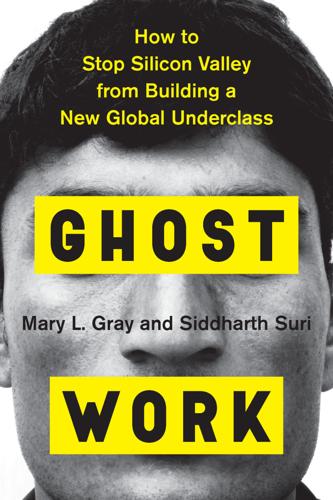
Ghost Work: How to Stop Silicon Valley From Building a New Global Underclass
by
Mary L. Gray
and
Siddharth Suri
Published 6 May 2019
Roediger, David R. The Wages of Whiteness: Race and the Making of the American Working Class. London: Verso, 1999. Rosenblat, Alex. Uberland: How Algorithms Are Rewriting the Rules of Work. Oakland: University of California Press, 2018. Rosenblat, Alex, and Luke Stark. “Algorithmic Labor and Information Asymmetries: A Case Study of Uber’s Drivers.” International Journal of Communication 10 (July 27, 2016): 27. Ross, Alex. The Industries of the Future. New York: Simon and Schuster, 2016. Rustrum, Chelsea. “Q&A with Felix Weth of Fairmondo, the Platform Co-Op That’s Taking on eBay.” Shareable. Accessed June 21, 2018. https://www.shareable.net/blog/qa-with-felix-weth-of-fairmondo-the-platform-co-op-thats-taking-on-ebay.
…
See Mike Isaac and Noam Scheiber, “Uber Settles Cases with Concessions, but Drivers Stay Freelancers,” New York Times, April 21, 2016, http://www.nytimes.com/2016/04/22/technology/uber-settles-cases-with-concessions-but-drivers-stay-freelancers.html; Alex Rosenblat and Luke Stark, “Algorithmic Labor and Information Asymmetries: A Case Study of Uber’s Drivers,” International Journal of Communication 10 (July 27, 2016): 27. [back] 6. Alex Rosenblat, Uberland: How Algorithms Are Rewriting the Rules of Work (Oakland: University of California Press, 2018). [back] 7. Wikipedia, s.v. “Corporate Social Responsibility,” accessed June 20, 2018, https://en.wikipedia.org/wiki/Corporate_social_responsibility.

Mindf*ck: Cambridge Analytica and the Plot to Break America
by
Christopher Wylie
Published 8 Oct 2019
Among the stated goals of past DARPA-run programs—with names like Narrative Networks and Social Media in Strategic Communications—has been to “attempt to track ideas and concepts to analyze patterns and cultural narratives” and “develop quantitative analytic tools to study narratives and their effects on human behavior in security contexts.” The U.S. military also ran a program called the Human Social Culture Behavior Modeling Program, which aimed to create “tools for sociocultural analysis and forecasting to users in the field.” In other words, the point of many of these programs is to gain total informational asymmetry against threats—to have so much data that we would be able to completely overwhelm and dominate the information space surrounding our targets. This was the lucrative niche Nix had his eye on to win new contracts for SCL. * * * — NIX INITIALLY OFFERED ME a three-month contract to do, essentially, whatever I wanted.
…
But in this next iteration of capitalism, the raw materials are no longer oil or minerals but rather commodified attention and behavior. In this new economy of surveillance capitalism, we are the raw materials. What this means is that there is a new economic incentive to create substantial informational asymmetries between platforms and users. In order to be able to convert user behavior into profit, platforms need to know everything about their users’ behavior, while their users know nothing of the platform’s behavior. As Cambridge Analytica discovered, this becomes the perfect environment to incubate propaganda.
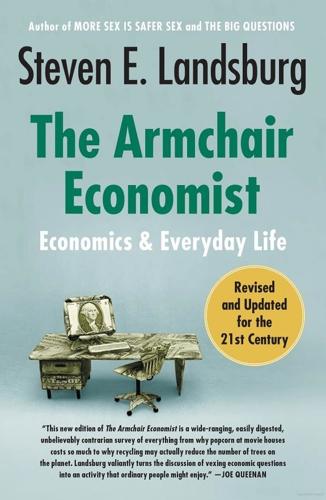
The Armchair Economist: Economics and Everyday Life
by
Steven E. Landsburg
Published 1 May 2012
Insurance markets are odd, because the buyer almost invariably has better information than the seller. If you wire your den with extension cords and cover them with paneling, you know exactly what you've done, but your insurance agent does not. He is left to wonder why you suddenly want to triple your fire insurance. Asymmetric information typically yields surprising outcomes, driven by one party's efforts to guess what the other party knows. In some cases, asymmetric information threatens to drive insurance markets entirely out of existence. Rank policyholders' risk levels from 1 to 10, with 5 being the average. If the insurance company sets rates that reflect that average risk level, the Is, 2s, and 3s might feel overcharged and drop out of the market. 22 WHAT LIFE IS ALL ABOUT Now the average risk level is no longer 5 but 7.
…
INDEX Abortion, 58 Agriculture and the Invisible Hand, 77-80 scattering in, 16-17 subsidies to, 36-37 as technology for auto production, 197 AIDS, 91-92 Air pollution and markets, 81 Airports, privatization of, 122-123 Alchian, Armen, 5 Allen, Woody, 32 Ames, Bruce, 226 Animals, response to incentives, 9 Antitrust legislation, 147 Arrow, Kenneth, 53 Artists' royalties, 123 Asymmetric information, 21-23 Auctions, types of, 176 Automobile safety, 3-5 Automobiles, quality of American, 139-141 Baby on Board signs, 5-6 Bacon, Francis, 204 Barge teams, 173 Barro, Robert, 111 Becker, Gary, 234 Bils, Mark, viii, 131, 234 Bipartisanship, 146-147 Birth control, 6-7 Bond, Eric, 233 Boyd, John H.
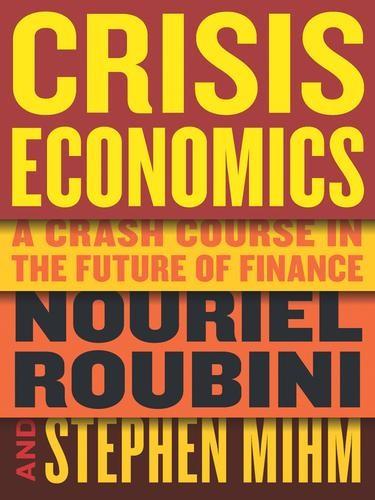
Crisis Economics: A Crash Course in the Future of Finance
by
Nouriel Roubini
and
Stephen Mihm
Published 10 May 2010
This is a very basic example of the principal-agent problem. It’s obviously in the interest of the store owner to have employees behave honestly and not line their own pockets. But the store owner is not omniscient; he can’t see everything that’s going on beneath him. He suffers from what economists call the asymmetric information problem, in which the principal (the store owner) knows less than the agent (the cashier). The store owner needs to make his employees serve his interests, and that’s no easy task. Now imagine this problem multiplied many times, with many layers of employees or agents, all of whom have the ability to pursue their own interests at the expense of the “principals” who oversee them.
…
This, more or less, is the structure of a typical financial firm, and the dangers of this arrangement became increasingly evident over the course of the recent financial crisis. The collapse of AIG may be the most extreme example of the dangers of moral hazard, principal-agent problems, and asymmetric information. There, the actions of a small group of employees based in London brought the entire company to its knees, along with the global financial system. In theory, shareholders should be able to prevent such disasters: they are the last link in the chain, the ultimate owners of the financial firm.
…
It’s difficult for outside shareholders or a board of directors to know what’s going on in one of these little cells; it’s utterly impossible to know what’s going on in several thousand of them, as in a large bank or financial firm. This predicament is known in corporate governance circles as the “asymmetric information problem,” also discussed in chapter 3. Translation: one side knows more than the other. Add to this problem what could be called “double agency conflict.” In many financial firms, the shareholders (the principals) are themselves enmeshed in a principal-agent problem: they own shares via large institutional investors, such as pension funds.
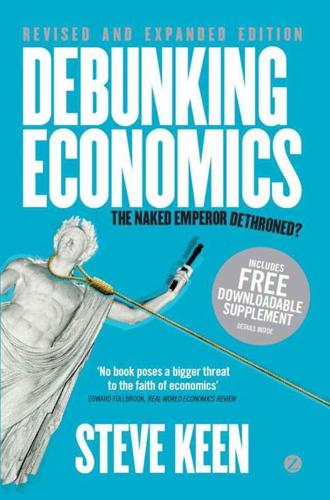
Debunking Economics - Revised, Expanded and Integrated Edition: The Naked Emperor Dethroned?
by
Steve Keen
Published 21 Sep 2011
Beta itself is a measure of the ratio of the variability of a given share’s return to the variability of the market index, and the degree of correlation between the share’s return and the market index return. 14 There are three variations on this, known as the weak, semi-strong and strong forms of the EMH. 15 As I have explained, however, to Fisher’s credit, his failure led to an epiphany that resulted in him renouncing neoclassical thinking, and making a major contribution to the alternative approach to economics that Minsky later developed into the Financial Instability Hypothesis. Chapter 12 1 Bernanke went on to rephrase debt deflation using several concepts from neoclassical microeconomics – including information asymmetry, the impairment of banks’ role as adjudicators of the quality of debtors, and so on. He also ultimately developed a cumbersome neoclassical explanation for nominal wage rigidity which gave debt a role, arguing that ‘nonindexation of financial contracts, and the associated debt-deflation, might in some way have been a source of the slow adjustment of wages and other prices’ (Bernanke 2000: 32–3).
…
(Blanchard 2009: 214–15) The weaknesses in the model38 are addressed by adding yet more microeconomic imperfections. These include adding the reality that the labor market is not homogeneous to explain involuntary unemployment – ‘One striking (and unpleasant) characteristic of the basic NK model is that there is no unemployment!’ (ibid.: 216) – and using the concept of asymmetric information to explain problems in credit markets. This saltwater approach necessarily achieved a better fit to the data than the extreme neoclassical vision of the freshwater faction, but for reasons that are hardly exemplary, as Solow observed: The simpler sort of RBC model that I have been using for expository purposes has had little or no empirical success, even with a very undemanding notion of ‘empirical success.’
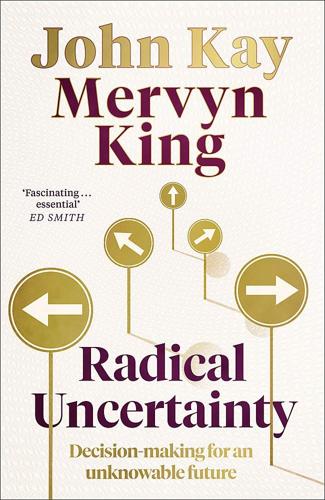
Radical Uncertainty: Decision-Making for an Unknowable Future
by
Mervyn King
and
John Kay
Published 5 Mar 2020
If goods remain unsold, then a fall in the price should stimulate demand and clear the market. But in some markets things don’t seem to work that way. One reason is that sellers may know far more about the quality of the goods they are selling than do the buyers, and buyers recognise that fact. In 1970, George Akerlof showed that in the presence of this ‘asymmetric information’ it may be difficult to find any price at which trade occurs. 5 Potential buyers of second-hand cars do not know whether a particular vehicle is of high or low quality. They are perhaps willing to pay a particular price for a car of average quality. But the only sellers who would accept such an offer are those who own cars of lower than average quality – ‘lemons’. 6 Realising that, potential buyers lower their offer price.
…
For many people, Arrow and Debreu provided the formal mathematical underpinning to Smith’s narrative of the ‘invisible hand’. 10 More than lemons Offensive though it may have been to the Retail Motor Federation, Akerlof’s work was followed by the development of many models, some useful, some not, of markets characterised by asymmetric information. Michael Spence explained how the prices of complex goods did not simply equate supply and demand, but were used to signal information about product characteristics. 11 Joseph Stiglitz emphasised the inherent contradiction in the efficient market hypothesis: if all information was ‘in the price’, why would anyone invest in obtaining information in the first place?
…
When the lease failed to sell at the lower price, he switched model; perhaps price acted as a signal as well as a mechanism for equating supply and demand. Returning the price to the original level, a small incentive persuaded an interested purchaser to take the lease off his hands. And Ricardo deployed his intellectual gifts to achieve practical success. His grasp of the importance of asymmetric information in financial markets was intuitive. He made a fortune in bond speculation, allegedly leading a group of traders who jettisoned bonds very quickly in order to promote market panic and then bought the bonds back at low prices in order to sell once the panic subsided. 13 In August 2004, a similar strategy, named Dr Evil, was adopted by Citibank traders.
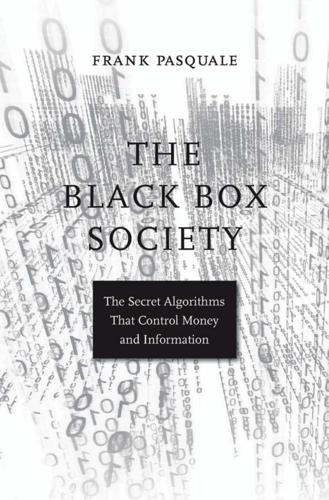
The Black Box Society: The Secret Algorithms That Control Money and Information
by
Frank Pasquale
Published 17 Nov 2014
It also extends an open invitation for quants or traders or managers to bully their way past gatekeepers, like rating agencies, accountants, and regulators.167 In so many situations leading up to the financial crisis, there was always some algorithmic wiggle room, some way for quants to tweak the numbers. As French sociologist Bruno Latour has observed, “The world is not a solid continent of facts sprinkled by a few lakes of uncertainties, but a vast ocean of uncertainties speckled by a few islands of calibrated and stabilized forms.”168 A fi nancial world built on exploiting information asymmetries amounts to an “ocean of uncertainties,” but at least in the decades between the New Deal and wholesale deregulation, “calibrated and stabilized forms” like rating agencies, insurance fi rms, and investment bank partnerships (whose owners had their own money on the line) kept some semblance of order.
…
Alan Greenspan, “Dodd-Frank Fails to Meet Test of Our Times,” Financial Times, March 29, 2011; Friedrich A. Hayek, “The Use of Knowledge in Society,” American Economics Review 35 (1945): 519–530. Of course, as Richard Bronk observes, “Hayek’s analysis falls short by ignoring the role of dominant narratives, analytical monocultures, self-reinforcing emotions, feedback loops, information asymmetries and market power in distorting the wisdom of prices.” Richard Bronk, “Hayek on the Wisdom of Prices: A Reassessment,” Erasmus Journal for Philosophy and Economics 6, no. 1 (2013): 82–107. 6. Lee H. Fang, “The Invisible Hand of Business in the 2012 Election,” The Nation, November 19, 2003, http://www.thenation .com /article /177252 /invisible-hand-business-2012-election. 7.
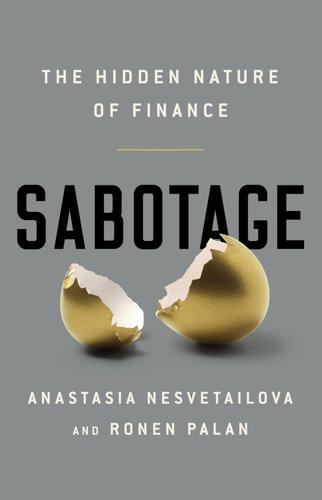
Sabotage: The Financial System's Nasty Business
by
Anastasia Nesvetailova
and
Ronen Palan
Published 28 Jan 2020
We will try to show that sabotage – or, to use Veblen’s terms, something in the way of retardation, restriction, withdrawal or harming of either the clients, competitors or governments – is most probably the main source of profitability in finance and the surest way to individual bonuses and corporate profits. We demonstrate that in each of the selected cases we study profitable transactions or ‘deals’ did not arise from a competitive edge in skills, capacity, expertise, hard work or superior knowledge (known as theory of asymmetrical information). Instead, they involved elements or attempts at controlling markets; that is, sabotaging the price mechanism, through either internal misrepresentation of information or facts, or predatory practices that are presently or potentially damaging to clients, competitors or the government, or a combination of all three.
…
One whistleblower told of employees writing in fake or inaccurate client information to boost their plan numbers towards deferred compensation as recently as 2016.9 Having admitted to the SEC to defrauding thousands of customers, Wells Fargo explained its vision on its website: We want to satisfy our customers’ financial needs and help them succeed financially… This unites us around a simple premise: Customers can be better served when they have a relationship with a trusted provider that knows them well, provides reliable guidance, and can serve their full range of financial needs.10 Sabotaging clients is common in the banking industry. So common, in fact, that scientific terms are usually invoked to explain why sabotage can occur. Asymmetric information about a product (like in the interest rate swaps of RBS); lack of financial literacy or sophistication (as in the Abacus affair); individuation of risk (in any transaction, where the risk is ultimately with the client); the principal-agent dilemma that explains the conflict of interest between the agent and the client.

Blockchain Revolution: How the Technology Behind Bitcoin Is Changing Money, Business, and the World
by
Don Tapscott
and
Alex Tapscott
Published 9 May 2016
He believes these “new tools allow regulators to use a lighter touch.”27 The blockchain’s public nature—its transparency, its searchability—plus its automated settlement and immutable time stamps, allow regulators to see what’s happening, even set up alerts so that they don’t miss anything. DR. FAUST’S BLOCKCHAIN BARGAIN Banks and transparency rarely go hand in hand. Most financial actors gain competitive advantage from information asymmetries and greater know-how than their counterparties. However, the bitcoin blockchain as constructed is a radically transparent system. For banks, this means opening the kimono, so to speak. So how do we reconcile an open platform with the closed-door policy of banks? Austin Hill called it Wall Street’s “Faustian bargain,” an onerous trade-off.28 “People love the idea of not having to wait three days to settle transactions but having them cleared within minutes and knowing that they’re final and that they’re true,” said Hill.
…
“Banks are traditionally secret keepers,” according to Kaminska of the Financial Times. She explained that banks make good judgments about whom to lend to and how to process payments when they have good access to private information, and they get that information by promising to keep the secret. The more secrets they hold, the greater the information asymmetry and the greater their advantages, but those advantages have harmful systemic implications.38 So what’s to prevent huge corporations or powerful nation-states from capturing blockchain technologies for their own narrow interests? “Any consensus mechanism that you have is going to be susceptible to marketing—where powerful interests spend money trying to convince people to do a certain thing,” said Pair of BitPay.39 To be clear, we are not suggesting that corporations and governments should leave this technology alone.

From Airline Reservations to Sonic the Hedgehog: A History of the Software Industry
by
Martin Campbell-Kelly
Published 15 Jan 2003
France was not a land of opportunity for the developer of a new spreadsheet program.5 While would-be producers of shrink-wrapped software outside the United States were waiting for their domestic markets to mature, an entire business and publishing culture sprang up around American productivity programs. For example, by 1985 there were more than 200 books on the use of spreadsheets in business, nearly every one of them tied to one of the top US products. Europe has never since been able to wrest the market for desktop productivity software from US firms. Information Asymmetry and Clustering Effects The clustering of firms was a major factor in the success of Silicon Valley. A cluster is a group of companies (usually small ones) that produce the subassemblies and components of a complex product (say, a personal computer or a network switch). The firms are coordinated entirely through market mechanisms.
…
Geographical proximity is crucial to the operation of a cluster. A complex network of social relationships, consolidated in professional meetings, bars, and health clubs, enables individuals working in different firms to know in what direction the market is moving and to develop the right product at the right time. This “information asymmetry” is what The Success of the US Software Industry 307 makes it so difficult for firms outside the network to compete. One has to be there to know what the market wants, and one has to be there to know what the hot new developments are. Another factor is the supply of labor. The firm cluster allows technical specialists to move from one firm to another with better prospects almost overnight without breaking up their social networks or uprooting their families.
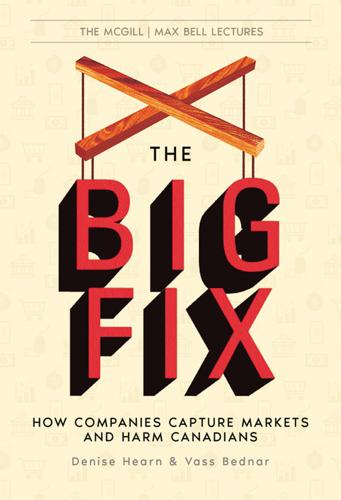
The Big Fix: How Companies Capture Markets and Harm Canadians
by
Denise Hearn
and
Vass Bednar
Published 14 Oct 2024
They’ve become normalized because our banks, longtime oligopolists, can mimic each other’s bogus fee structures without having to compete for customers’ business. These shifts and tricks by companies have forced us to become more vigilant and even defensive when shopping. Considered together, misleading marketing, counterfeit products, deceptive pricing architecture, and other tactics speak to the significant information asymmetry between consumers and companies. This power imbalance is made significantly worse by the absence of real competition. It takes traditional consumer vulnerability to a whole other level. When noticed, businesses have occasionally been shamed by consumer protection groups, viral Reddit threads, or vigilant individuals with a platform.
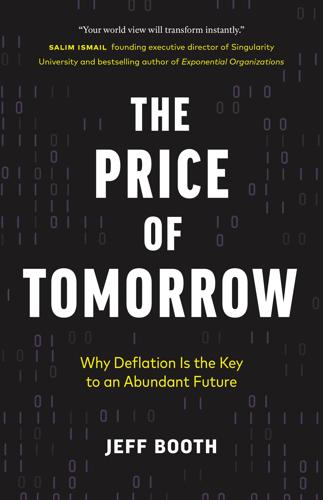
The Price of Tomorrow: Why Deflation Is the Key to an Abundant Future
by
Jeff Booth
Published 14 Jan 2020
Again, like free search on Google, the network effects and data advantage will provide benefits that are incredible for society. This will be great news for our health outcomes, cost of medicine, and a few select companies that are able to consolidate vast information. It will also, again, be bad news for jobs. Why? Look at how many jobs come from waste in the system caused by information asymmetry. Think of a case where you go to multiple doctors—family doctor, radiologist, gastroenterologist, other specialists—who each have their own staff and each only have a part of your information. As you are treated, repetitive trips, further specialization, and often misdiagnoses are all part of the overall health budget.

Why We Can't Afford the Rich
by
Andrew Sayer
Published 6 Nov 2014
As Marx put it, ‘interest-bearing capital generally is the mother of all crazy forms’.52 Once they had exhausted the market for mortgages among the middle classes, and then securitised the debt, US mortgage companies moved into the sub-prime market by luring low-income households with teaser rates that soon gave way to usurious rates of interest. Having pocketed the commission and fees, they securitised these high-risk, high-interest loans too. So the ability to lay off risk through securitisation induced highly irresponsible, predatory lending and short-term ‘investment’. Crucial in all this was what economists call ‘information asymmetry’. When most people take their car to the garage for a service, they know much less about what needs doing than do the mechanics, so they can easily be taken advantage of. And dodgy second-hand car dealers with cars that they suspect are developing a serious fault may be tempted to hide this from buyers and get rid of it as fast as possible.
…
Managers of funds on behalf of clients such as pension funds can take advantage of their superior market knowledge to corner a significant share of the gains for themselves and to charge high fees. Trading of customised financial products such as credit derivatives ‘over the counter’ – that is, one-to-one between buyer and seller rather than in a competitive market trading more transparent standardised products with many buyers and sellers – heightens the information asymmetry in favour of sellers and the opportunity for them to extract rents. Carrying out mergers and acquisitions is an especially lucrative line of business, with fees averaging 1.5% of deal value. Vodafone’s takeover of Mannesman yielded $640 million in fees for intermediaries.87 These fee revenues are typically concentrated at the top.

The Fissured Workplace
by
David Weil
Published 17 Feb 2014
Large employers have more robust information because of their size, sophistication, and economies of scale in acquiring it. Workers, however, face “search frictions” in the labor market because of limited information on employment options as well as family, social, and other geographic ties that restrict their willingness to move. Information asymmetries and search frictions create some degree of monopsony power, meaning that large employers set wages rather than simply accepting the going rate in the labor market. This gives them greater latitude in establishing compensation policies, although the employer’s policies still must reflect the supply of workers and their contribution to the production of the firm.7 Some level of monopsony control and discretion in setting wages underlies the compensation and human resource policies set by major companies across the economy.
…
See also Piece rates Income inequality, changes in, 19–20, 23, 280–281, 293n19, 296n26 372n40, 372n45; and fissuring, 92, 281–282; and politics, 208–209 Independent contracting, 10, 314n37, 314n39, 341n7; in the logistics industry, 161–162; as form of employment, 270 Independent Contractor Proper Classification Act of 2007, 205 Independent contractors, 21, 24, 186, 205, 212, 236; misclassification of workers as, 10; and cable installation, 119–121; FedEx drivers as, 161; and petrochemical industry, 186–188 Independent operating companies, in hospitality industry, 151–152 Information asymmetries, in employment, 80 Information technology, 8–9, 305n53; role of, in employment restructuring, 4; and outsourcing, 52, 54–55; development of, 60–61 Internal labor markets: development of, 37–39; and wage determination, 39–40, 80–81, 296n24; decline of, 40–41, 87–88; alternative theories of, 80–81, 296n25, 296n26, 297n31, 298n38 International Labour Organization, 263, 366n42 International monitoring, and global supply chains, 262–265 Inventory: minimizing of, 162; turns, 294n4 IRAs, growth of, 45 Island Creek Coal, 104–105 ITT Corporation, 36 J-1 visa program, 2, 113, 118 Jacobs, Jane, 243, 265–266 Jani-King International, 134, 198 Janitorial services industry: and outsourcing, 55–56; as vanguard of fissuring, 90–91; origin of, 132–133; business model for franchising, 134–136; financial viability of franchising, 136–139; franchising and labor standards, 139–142; evolution of employment structures in, 220; and independent contractors, 327n31; and branding, 327n31; Jan-Pro Franchising International, 133–134; franchising agreement, 134–136 Job polarization, 284–285 Jobs, Steve, 51, 175 Journatic, 277–279 Justice for Janitors campaign, 327n31 Kahneman, Daniel, 82 Kaufmann, Patrick J., 127, 363n28 Kelling, George, 243, 249 KFC, 129, 323n4 KKR and Company, 47, 53 Knutson, Ryan, 109, 111 Kodak, 39 Kohlberg Kravis and Roberts.
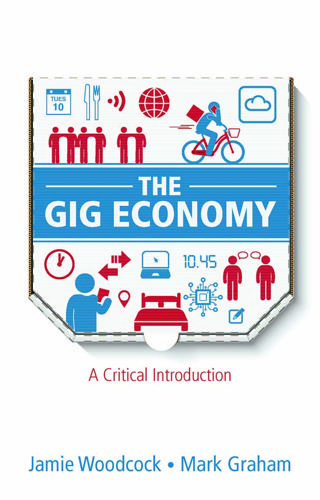
The Gig Economy: A Critical Introduction
by
Jamie Woodcock
and
Mark Graham
Published 17 Jan 2020
Noble and B. Tynes (eds.), The Intersectional Internet: Race, Sex, Class and Culture Online. New York: Peter Lang. Rosenblat, A. (2018) Uberland: How Algorithms are Rewriting the Rules of Work. Oakland, CA: University of California Press. Rosenblat, A. and Stark, L. (2016) Algorithmic labor and information asymmetries: A case study of Uber’s drivers. International Journal of Communication, 10: 3758–84. Ryan, B. (2005) Labour Migration and Employment Rights. Liverpool: Institute of Employment Rights. Salehi, N., Irani, L.C., Bernstein, M.S., Alkhatib, A., Ogbe, E., Milland, K. and Clickhappier (2015) We are Dynamo: Overcoming stalling and friction in collective action for crowd workers.
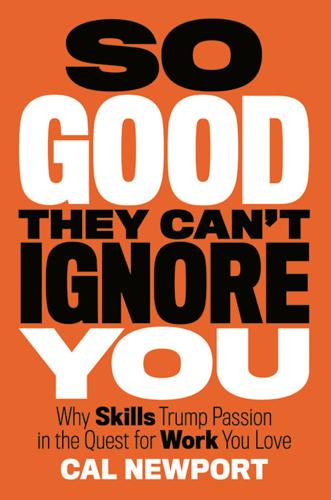
So Good They Can't Ignore You: Why Skills Trump Passion in the Quest for Work You Love
by
Cal Newport
Published 17 Sep 2012
Of the many valuable skills he picked up from the project, one in particular was a “deep understanding” of how the international carbon market works. As part of this expertise, he learned that the United States had an obscure exchange, known as the renewable energy credits market. “Almost no one understood these things; it was a really fractured market with huge information asymmetry,” he recalls. Being one of the few people who actually knew how this market worked, Mike decided to start a business. He called it Village Green. The idea was simple: You give money to Mike, he does complicated transactions that only he and a few other energy regulation wonks really understand, and then he offers you certification that you’ve purchased enough carbon offsets for your business to be deemed carbon neutral.

Blockchain Chicken Farm: And Other Stories of Tech in China's Countryside
by
Xiaowei Wang
Published 12 Oct 2020
Her worldview has a ruthless clarity while I am still waffling on the definition of the word “innovation.” I meet her at a yogurt place in Palo Alto. We sit, and I pick at my sad cup of handmade, oddly chunky yogurt. We end up talking about food. She gleefully tells me about her habit of buying ice cream from Taobao.com. For her, the information asymmetry of not knowing, as a consumer, the quality of the goods you’ll receive feels resolved by the purchasing of food on the internet. Justice is dealt to sellers through bad reviews. One hindrance to Chinese innovation has been the accusation that any technological advancement boils down to a government conspiracy to surveil its citizens.
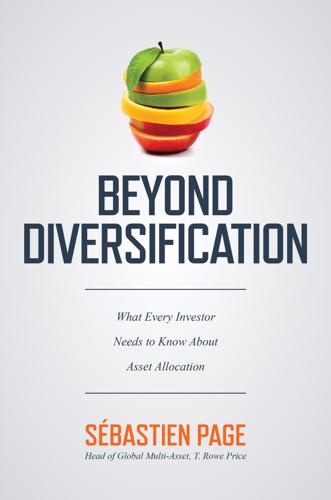
Beyond Diversification: What Every Investor Needs to Know About Asset Allocation
by
Sebastien Page
Published 4 Nov 2020
Edelen explains this effect from a theoretical perspective: The conventional analysis [which shows that mutual fund managers underperform passive benchmarks on average and have no market timing skill] gives no consideration to the fact that fund managers provide a great deal of liquidity to investors and thus engage in a material volume of uninformed, liquidity-motivated trading. . . . In an asymmetrically informed market with costly information production, equilibrium is attained only when liquidity-motivated traders sustain losses to informed traders. . . . Thus, any trader forced to engage in a material volume of liquidity-motivated trading in a financial market that is in informational equilibrium will be unable to avoid below-average performance, ceteris paribus. Academic theories that rely on assumptions of “an asymmetrically informed market with costly information production” and “informational equilibrium” may seem opaque to investors, but the idea is simple: if we believe in a zero-sum game, stock pickers who trade just to provide liquidity to their investors are at a disadvantage to those who trade based on information.
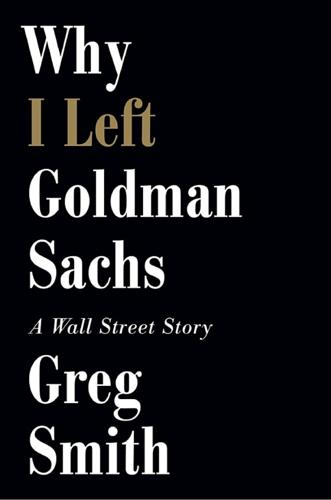
Why I Left Goldman Sachs: A Wall Street Story
by
Greg Smith
Published 21 Oct 2012
Think about this: There are certain quarters when a Wall Street bank makes money every single day of that quarter. Yes: ninety days in a row. One hundred percent of the time, it generates a profit. Bank of America recently pulled off this amazing feat. That is like batting a thousand. A perfect record. How is this even possible? Two words: asymmetric information. The playing field is not even. The bank can see what every client in the marketplace is doing and therefore knows more than everyone else. If the casino could always see your cards, and sometimes even decided what cards to give you, would you expect it ever to lose? Here’s how it happens: Because Wall Street is facilitating business for the smartest hedge funds, mutual funds, pension funds, sovereign wealth funds, and corporations in the world, it knows who is on every side of a trade.
…
As proof of this information advantage: Why do Goldman Sachs and JPMorgan Chase mutual funds—housed in their respective asset-management divisions on the other side of the Chinese wall—underperform their peers, as measured by Morningstar? Why do some hotshot traders from banks such as Goldman Sachs, Morgan Stanley, and JPMorgan go out on their own, start their own hedge funds, and flounder? Because they no longer have the advantage of being able to see everyone’s cards. No more asymmetric information, no more batting a thousand, when you are out on your own without unfair advantage. The reforms Wall Street is pushing back the hardest against are in the areas it knows are the most profitable: opaque derivatives and proprietary trading. But these also happen to be the areas that are most dangerous to the stability of the financial system.

Ours to Hack and to Own: The Rise of Platform Cooperativism, a New Vision for the Future of Work and a Fairer Internet
by
Trebor Scholz
and
Nathan Schneider
Published 14 Aug 2017
Why not use the specific skills hackers have to create the means of organizing information, but use it to create quite other ways of organizing labor? Cooperatives have a long history in the labor movement; indeed, in their origins, they looked back to forms of peasant self-organization of the commons. Why not re-imagine the cooperative on the basis of contemporary forms of information vector—but without the information asymmetries that are the basis of vectoralist class power? That seems like the thread of a political-economic project that both honors past struggles and also addresses the distinctive form of commodification in the age of the information vector as a private property relation. The vectoral political economy is in many ways worse than the capitalist one.
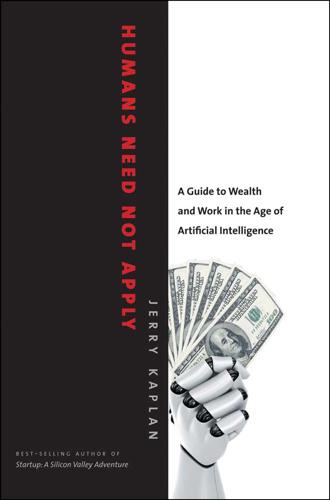
Humans Need Not Apply: A Guide to Wealth and Work in the Age of Artificial Intelligence
by
Jerry Kaplan
Published 3 Aug 2015
Persuading you to prepay for shipping not only discourages you from shopping elsewhere, it makes rational buying impossible. This is at least one motivation for Amazon’s commendable focus on customer satisfaction; as long as you’re happy with the company, there’s little reason to question its pricing practices or to comparison shop—even if you could. But the company has taken the doctrine of information asymmetry one step further. Amazon’s network of warehouses is so extensive, it has adopted the remarkable policy of permitting its competitors to list their own products on Amazon’s website and use Amazon’s own facilities for fulfillment. You might think this is an egalitarian act that serves to level the playing field by giving the “little guy” access to the same advantages that Amazon enjoys.

Swimming With Sharks: My Journey into the World of the Bankers
by
Joris Luyendijk
Published 14 Sep 2015
He believed that this is legitimate in business, provided clients have adequate information, adding that alongside this is ‘an important rule’ that clients ignore at their peril. ‘You have got to read the small print. You need to bring in a lawyer who explains it to you before you buy these things.’ Without a hint of irony he warned: ‘Otherwise there is information asymmetry.’ In the ‘real world’, of course, buyers are protected with numerous consumer rights laws. These allow purchasers the chance to return goods that are faulty or mis-sold, receive warranties on certain items or benefit from a cooling-off period on products bought through ‘distance selling’, for example.

Gigged: The End of the Job and the Future of Work
by
Sarah Kessler
Published 11 Jun 2018
March 29, 2016. https://www.fastcompany.com/3058299/why-a-new-generation-of-on-demand-businesses-rejected-the-uber-model. 6 Scheiber, Noam. How Uber Uses Psychological Tricks to Push Its Drivers’ Buttons. New York Times. April 2, 2017. https://www.nytimes.com/interactive/2017/04/02/technology/uber-drivers-psychological-tricks.html. 7 Rosenblat, Alex, and Luke Stark. Algorithmic Labor and Information Asymmetries: A Case Study of Uber’s Drivers. International Journal of Communication, vol. 10. July 2016. Page 27. http://ijoc.org/index.php/ijoc/article/view/4892/1739. 8 Alonzo, Austin. Uber Slashes Prices in KC, 47 Other Markets. Kansas City Business Journal. January 12, 2015. https://www.bizjournals.com/kansascity/news/2015/01/12/uber-slashes-prices.html. 9 Beating the Winter Slump: Price Cuts for Riders with Guaranteed Earnings for Drivers.

Internet for the People: The Fight for Our Digital Future
by
Ben Tarnoff
Published 13 Jun 2022
“Guys would run …”: Ibid., 30. 115, No company has fulfilled … Uber rates: uber.com/us/en/ride/. 115, Sometimes this direction … The app guides the driver: Thi Nguyen, “ETA Phone Home: How Uber Engineers an Efficient Route,” Uber Engineering, November 3, 2015. Surge pricing: Alex Rosenblat and Luke Stark, “Algorithmic Labor and Information Asymmetries: A Case Study of Uber’s Drivers,” International Journal of Communication 10 (2016): 3765–71. Messages that encourage drivers to keep driving: Ibid., 3767–69. Gamified design features: Sarah Mason, “Chasing the Pink,” Logic, January 1, 2019. 116, Such techniques would be impossible … Surveillance of drivers: Ibid. and Alex Rosenblat, Uberland: How Algorithms Are Rewriting the Rules of Work (Berkeley: University of California Press, 2018), 138–42. 116, Algorithmic management thus enables … “In the US …”: Veena Dubal, “A Brief History of the Gig,” Logic, May 4, 2020. 117, Precisely for this reason … “Fissured workplace”: David Weil, The Fissured Workplace: Why Work Became So Bad for So Many and What Can Be Done to Improve It (Cambridge, MA: Harvard University Press, 2014). 117, Networks are good … Joan Greenbaum, Windows on the Work-place: Technology, Jobs, and the Organization of Office Work, 2nd ed.

What Money Can't Buy: The Moral Limits of Markets
by
Michael Sandel
Published 26 Apr 2012
He begins by observing that “gift giving is a strange custom” but concedes that it’s generally a bad idea to give your boyfriend or girlfriend cash instead of a birthday present. But why? Mankiw’s explanation is that gift giving is a mode of “signaling,” an economist’s term for using markets to overcome “information asymmetries.” So, for example, a firm with a good product buys expensive advertising, not only to persuade customers directly but also to “signal” to them that it is confident enough in the quality of its product to undertake a costly advertising campaign. In a similar way, Mankiw suggests, gift giving serves a signaling function.
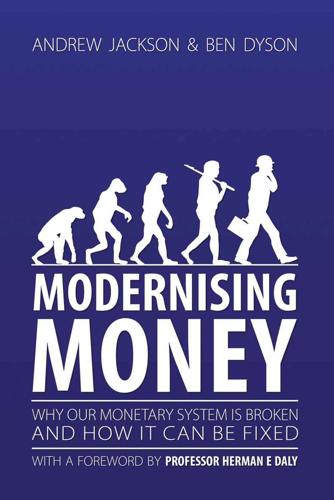
Modernising Money: Why Our Monetary System Is Broken and How It Can Be Fixed
by
Andrew Jackson (economist)
and
Ben Dyson (economist)
Published 15 Nov 2012
One method of doing so would be to simply borrow more from banks through pre-existing arrangements, such as credit cards and overdrafts, i.e. to increase the uptake of already available credit. However, increases in wealth may also increase the total amount of credit available to individuals (this is known as the financial accelerator; see Box 4.D for more details). To briefly sum up, because of asymmetric information between borrowers and lenders, financial markets suffer from moral hazard and adverse selection problems. As such lending to households is largely determined by the amount of collateral they can offer – increases in the price of housing (which can be used as collateral) increase the quantity of credit available and decrease its price (Goodhart & Hofmann, 2007).6 Furthermore, to the extent that a bank’s loans are secured on property, increases in house prices may lower the amount of capital banks feel it is prudential to hold against these types of loans, and so increase their lending capacity.
…
Imperfect information between borrowers and lenders (i.e. the borrower knows more than the lender as to their likelihood to repay) creates ‘agency costs’ for banks. Borrowing is accordingly more expensive than it would otherwise be. Because of their ability to post collateral, higher net worth borrowers have lower agency costs. This reduces asymmetric information and moral hazard problems, making the bank more willing to lend. When asset prices rise during a boom, agency costs fall for those that hold the assets. This is the ‘financial accelerator’ mechanism: higher net worth during booms (due to higher asset prices) leads to lower agency costs and therefore increased borrowing.
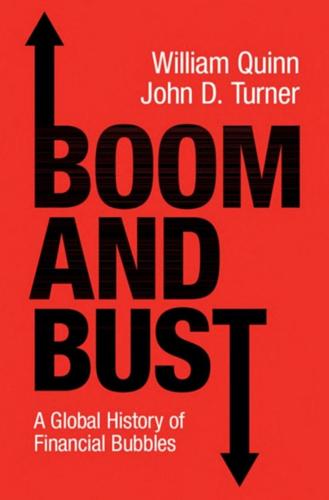
Boom and Bust: A Global History of Financial Bubbles
by
William Quinn
and
John D. Turner
Published 5 Aug 2020
Cassidy, Dot.Con, pp. 84–5. 10. Bransten and Jackson, ‘Netscape shares touch $75 in first-day trading’, Financial Times, 10 August 1995. 11. Cassidy, Dot.Con, p. 88. 12. Warrington College of Business IPO Data, ‘Initial public offerings: VC-backed’. 13. Karpoff, Lee and Masulis, ‘Contracting under asymmetric information’. 246 NOTES TO PAGES 155–62 14. Warrington College of Business IPO Data, ‘Initial public offerings: underpricing’. 15. Aggarwal, Krigman and Womack, ‘Strategic IPO underpricing’. 16. Ljungvist and Wilhelm, ‘IPO pricing’, 724. 17. Source: ‘Initial public offerings: Technology stock IPOs’.
…
The Practice before the Railway Commissioners under the Regulation of Railways Act 1873, London: Wildy and Sons, 1874. Kaldor, N. ‘Speculation and economic stability’, Review of Economic Studies, 7, 1–27, 1939. Kang, S.W. and Rockoff, H. ‘Capitalizing patriotism: the liberty loans of World War I’, Financial History Review, 22, 45–78, 2015. Karpoff, J. M., Lee, G. and Masulis, R. W. ‘Contracting under asymmetric information: evidence from lockup agreements in seasoned equity offerings’, Journal of Financial Economics, 110, 607–26, 2013. Kelley, A. C. ‘Demographic change and economic growth: Australia, 1861–1911’, Explorations in Entrepreneurial History, 5, 207–77, 1968. Kelly, L. W. and Boyle, R. ‘Business on television: continuity, change, and risk in the development of television’s business entertainment format’, Television & New Media, 12, 228–47, 2011.

The Practice of Cloud System Administration: DevOps and SRE Practices for Web Services, Volume 2
by
Thomas A. Limoncelli
,
Strata R. Chalup
and
Christina J. Hogan
Published 27 Aug 2014
As a result, operations is no longer put into the position of having to decide whether to permit a launch. Being in such a position makes them “the bad guys” every time they say no, and leads developers to think of them as “the enemy to be defeated.” More importantly, it is unfair to put operations in this position because of the information asymmetry inherent in this relationship. Developers know the code better than operations and therefore are in a better position to perform testing and judge the quality of the release. Operations staff, though they are unlikely to admit it, are not mind readers. 19.4.3 Everyone Benefits For developers, the Error Budget creates incentives to improve reliability by offering them something they value highly: the opportunity to do more releases.
…
Development for a given service is usually the result of many subteams. Each team wants to launch frequently. Yet one team can blow the budget for all teams if they are not careful. Nobody wants to be the last team to adopt a technology or framework that improves launch success. Also, there is less information asymmetry between developer teams. Therefore teams can set high standards for code reviews and other such processes. (Code reviews are discussed in Section 12.7.6.) This does not mean that Google considers it okay to be down for an hour each year. If you recall from Section 1.3, user-visible services are often composed of the output of many other services.

Delete: The Virtue of Forgetting in the Digital Age
by
Viktor Mayer-Schönberger
Published 1 Jan 2009
This is the promise of what Manuel Castells has termed the “flexible production economy.” See Castells, The Rise of the Network Society, 154; and HarrisInteractive, The Harris Poll #4. According to the Harris Poll, 59 percent of consumers are uncomfortable with web sites that tailor their content or ads based on a person’s preferences. 2. This rests on the view that where information asymmetries persist, markets could become inefficient. Buyers could end up with low-quality goods they paid too high a price for—an inefficient allocation of resources. And if buying again, they may choose a good with the lowest price, knowing they do not know quality (see Akerlof, “The Market for ‘Lemons’: Quality Uncertainty and the Market Mechanism,” 488–500).
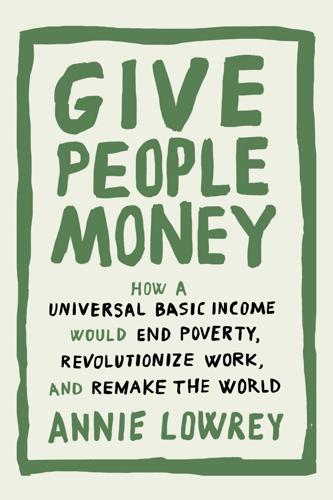
Give People Money
by
Annie Lowrey
Published 10 Jul 2018
A good outcome might be a table for a party of four at 8 p.m. on Tuesday, not an agreement to stop the enrichment of uranium in exchange for an easing of financial sanctions or a new contract with a different pay schedule, better retirement benefits, and fast-vesting shares. In those latter examples, as in much of life, negotiation is as much art as science. It requires evaluating how valuable certain things are, often when it is not obvious. It requires identifying and resolving conflicts and trying to sort out information asymmetries. It goes a lot better with a theory of mind, meaning an understanding that the guy on the other side of the table has different motivations and resources than you do. It is something at which computers are terrible and humans excel. A Facebook chatbot started off doing simple, formulaic negotiations, asking for two of a given item and agreeing to settle for one, for instance.
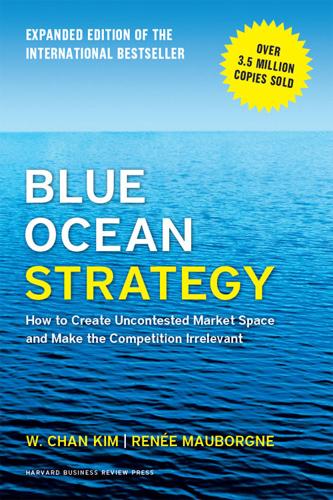
Blue Ocean Strategy, Expanded Edition: How to Create Uncontested Market Space and Make the Competition Irrelevant
by
W. Chan Kim
and
Renée A. Mauborgne
Published 20 Jan 2014
In fact, compared with internal stakeholders, the practice of fair process with external stakeholders could be said to play an even greater role in strategy execution as external stakeholders are outside of hierarchical control and often have diverging interests and understandings. While contracts and their enforceability with external partners are important, the information asymmetry that exists across organizations, coupled with the natural tendency for their interests and understandings to differ, make fair process central. Without external stakeholders’ commitment and cooperation, execution can easily become a slippery slope of missed deadlines, half-hearted alignment on quality, and cost overruns.
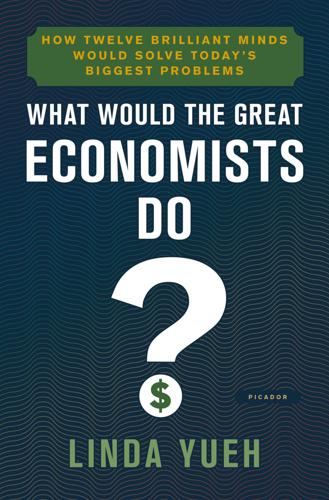
What Would the Great Economists Do?: How Twelve Brilliant Minds Would Solve Today's Biggest Problems
by
Linda Yueh
Published 4 Jun 2018
These collateral effects lessen the incentive for creditors to lend, resulting in a credit crunch, which then hits aggregate demand in the economy through a fall in consumption and investment. This idea goes to the heart of the ‘financial accelerator’ concept, which describes how financial conditions tend to propagate business cycles. It is predominately based on the idea of asymmetric information. Those wishing to borrow to invest have a much better understanding of the projects than the creditor. Therefore, debt contracts often require the posting of collateral, which is an asset that is pledged by the borrower to the project. For instance, a borrower may pledge his home as collateral for a loan.
…
But this also increased the risk to lenders as the average financial health of borrowers deteriorated, which impeded the flow of credit to the economy. The banking panics of the 1930s caused banks to shut their doors to avoid facing the risk of a run on their deposits. This, however, shut them off from their customers and increased the asymmetric information problems between borrowers and lenders, which further dampened normal lending activities to households and businesses. Fast forward seventy years and it is clear that financial accelerator effects played a key role in the run-up to, and the aftermath of, the 2008 global financial crisis.
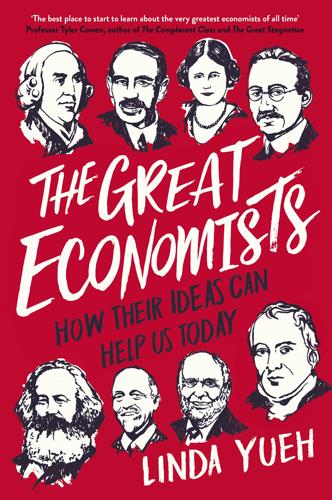
The Great Economists: How Their Ideas Can Help Us Today
by
Linda Yueh
Published 15 Mar 2018
These collateral effects lessen the incentive for creditors to lend, resulting in a credit crunch, which then hits aggregate demand in the economy through a fall in consumption and investment. This idea goes to the heart of the ‘financial accelerator’ concept, which describes how financial conditions tend to propagate business cycles. It is predominately based on the idea of asymmetric information. Those wishing to borrow to invest have a much better understanding of the projects than the creditor. Therefore, debt contracts often require the posting of collateral, which is an asset that is pledged by the borrower to the project. For instance, a borrower may pledge his home as collateral for a loan.
…
But this also increased the risk to lenders as the average financial health of borrowers deteriorated, which impeded the flow of credit to the economy. The banking panics of the 1930s caused banks to shut their doors to avoid facing the risk of a run on their deposits. This, however, shut them off from their customers and increased the asymmetric information problems between borrowers and lenders, which further dampened normal lending activities to households and businesses. Fast forward seventy years and it is clear that financial accelerator effects played a key role in the run-up to, and the aftermath of, the 2008 global financial crisis.
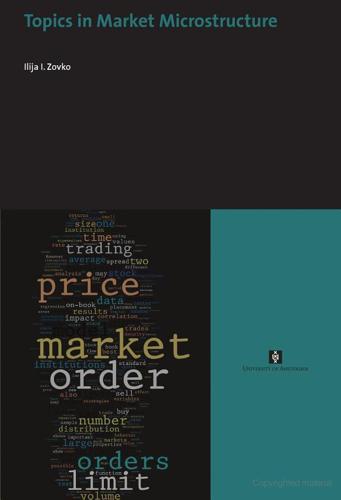
Topics in Market Microstructure
by
Ilija I. Zovko
Published 1 Nov 2008
Provided agents prefer a lower expected execution time, their model predicts a positive relationship between volatility and limit order placement. Copeland and Galai (1983); Glosten and Milgrom (1985); Easley and O’Hara (1987); Glosten (1995); Foucault (1999); Easley et al. (2001) examine asymmetric information effects on order placement. Andersen (1996) modifies the Glosten and Milgrom (1985) model with the stochastic volatility and information flow perspective. Other models of trading in limit order markets include Cohen et al. (1981); Angel (1994); Harris (1998); Chakravarty and Holden (1995); Seppi (1997); Rock (1990); Parlour and Seppi (2003); Parlour (1998); Foucault et al. (2001); Domowitz and Wang (1994).

The Ascent of Money: A Financial History of the World
by
Niall Ferguson
Published 13 Nov 2007
Distress: The insiders discern that expected profits cannot possibly justify the now exorbitant price of the shares and begin to take profits by selling. 5. Revulsion or discredit: As share prices fall, the outsiders all stampede for the exits, causing the bubble to burst altogether.3 Stock market bubbles have three other recurrent features. The first is the role of what is sometimes referred to as asymmetric information. Insiders - those concerned with the management of bubble companies - know much more than the outsiders, whom the insiders want to part from their money. Such asymmetries always exist in business, of course, but in a bubble the insiders exploit them fraudulently.4 The second theme is the role of cross-border capital flows.
…
advertising 196 Afghanistan 6 Africa: aid to 307 British investment in 293 China and 338-9 gold trade 25 slaves from 23 African-American people 249-50 ‘Africas within’ 13 age see pensions agriculture: East-West comparison 285 finance and 2 forward and future contracts 226 ‘improvements’ 235 and migration 110 rising and declining prices 53 and risk 184 Agtmael, Antoine van 288 Aguilera, Jaime Roldós 310-11 aid: conditions on 307 limited usefulness 307 and microfinance 279 to developing countries 274 Aldrich-Vreeland Act 301 Algeria 32 Allende, Salvador 212-13 Allison, Graham 223 All State insurance company 181-2 Al Qaeda 223 Alsace 144 Amboyna 130 American Civil War 91-7 American Dream Downpayment Act 267 American Home Mortgage 272 Americas, conquest of 285 Amsterdam 127 as financial centre 74-5 Amsterdam Exchange Bank (Wisselbank) 48-9 anarchists 17 Andersen (Arthur) 173 Andhra Pradesh 280 Angell, Norman 297 Angola 2 annuities 73-4 anthrax 223 anti-Darwinians 356 Antipodes 293 anti-Semitism 38 Antwerp 52 Applegarth, Adam 7 Arab: mathematics 32 oil 26 Arab-Israeli war 308 arbitrage 83 Argentina 98 British investment in 294 currencies 114 default crisis 110 Enron and 171 inflation 3 past prosperity 3 stock market 125 aristocracy 89 ARMs see mortgages, adjustable-rate arms/defence industry 298 . see also technological innovation art markets 6 Asia: aid and international investment 287 Asian crisis (1997-8) 10 and credit crunch 283 dependence on exports to US 10 dollar pegs 300 European trade 26 industrial growth and commodity prices 10 low-wage economies, production by 116 savings glut 336 sovereign wealth funds 9 asset-backed securities 6 and sub-prime mortgages 9 assets: asset markets 163 need for diversified portfolio 262 new types 353 asymmetric information 122 Atahuallpa 20 Australasia 52 Australia 233 Austria/Austro-Hungarian empire 90 bonds 86 currency collapses 107 and First World War 101 autarky 303 automobiles 160 Avignon 43 Babylonia see Mesopotamia Baer (Julius) bank 322 Bagehot, Walter 55 Baghdad 176 Bahamas see Lyford Cay Bailey, A.
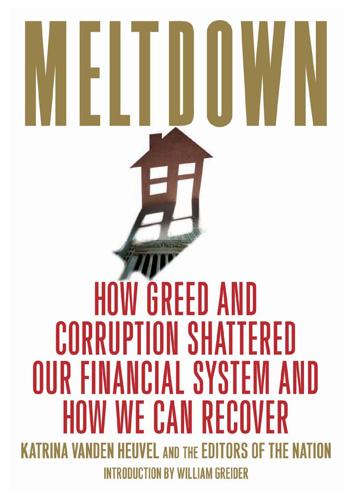
Meltdown: How Greed and Corruption Shattered Our Financial System and How We Can Recover
by
Katrina Vanden Heuvel
and
William Greider
Published 9 Jan 2009
No private firm was willing to buy these toxic mortgages at what the seller thought was a reasonable price; they finally had found a sucker who would take them off their hands—called the American taxpayer. The administration attempts to assure us that they will protect the American people by insisting on buying the mortgages at the lowest price at auction. Evidently, Paulson didn’t learn the lessons of the information asymmetry that played such a large role in getting us into this mess. The banks will pass on their lousiest mortgages. Paulson may try to assure us that we will hire the best and brightest of Wall Street to make sure that this doesn’t happen. (Wall Street firms are already licking their lips at the prospect of a new source of revenues: fees from the U.S.

Matchmakers: The New Economics of Multisided Platforms
by
David S. Evans
and
Richard Schmalensee
Published 23 May 2016
page=3 (data for 1998). 5. World Bank, “Mobile Cellular Subscriptions (Per 100 People),” http://data.worldbank.org/indicator/IT.CEL.SETS.P2?page=3 (data for 1998). 6. World Bank, “Rail Lines (Total Route-km),” http://data.worldbank.org/indicator/IS.RRS.TOTL.KM?page=3 (data for 1998). 7. Xue-Feng He and Li Yuan, “Information Asymmetry, Signaling Game, and Small and Medium-Sized Enterprises (SMEs) Financing in West China,” Eighth West Lake International Conference SMB, November 2006, http://www.seiofbluemountain.com/en/search/detail.php?id=3139. 8. World Bank, “GDP (Constant 2005 US$),” http://data.worldbank.org/indicator/NY.GDP.MKTP.KD?
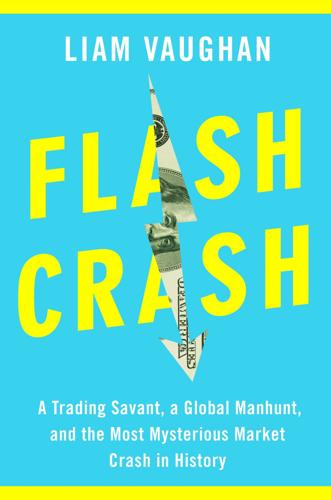
Flash Crash: A Trading Savant, a Global Manhunt, and the Most Mysterious Market Crash in History
by
Liam Vaughan
Published 11 May 2020
The opening paragraph was a call to arms: Over the past decade, the Chicago derivatives markets have engaged in agreements with certain high frequency trading firms to erode the integrity of the marketplace and manipulate prices. These exchanges, together with a sophisticated class of technology-driven entities known commonly as “high frequency traders” have provided and utilized information asymmetry along with clandestine incentive agreements and illegal trading practices to create a two-tiered marketplace that disadvantages the American public and all other futures marketplace participants, all the while continuing to represent to the public and their regulators that they continue to provide transparent and fair trading markets to the global market.
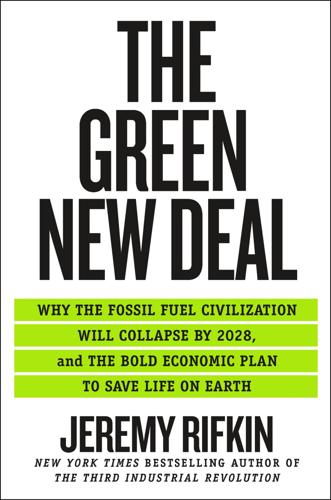
The Green New Deal: Why the Fossil Fuel Civilization Will Collapse by 2028, and the Bold Economic Plan to Save Life on Earth
by
Jeremy Rifkin
Published 9 Sep 2019
I remember my first day in marketing class at the Wharton School back in 1963. The marketing professor wrote on the blackboard the Latin phrase caveat emptor, “let the buyer beware,” and informed the students that if they learned nothing else in his class, they should remember this cardinal rule. The saying refers to what economists call “information asymmetry,” meaning that the seller never wants the buyer to know all the information he or she has on the product or service, including its real costs, actual performance, life cycle, and so on. This lack of transparency built into the system puts the buyer at a distinct disadvantage. Some of the asymmetry in the relationship is tempered by company warranties, but these inevitably fall short of protecting the buyer.
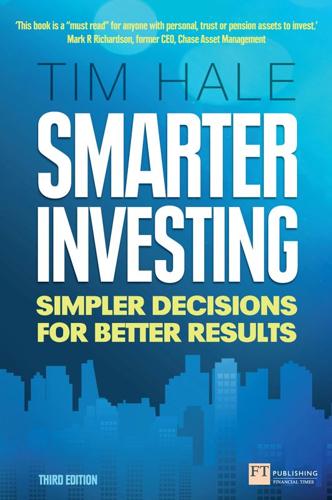
Smarter Investing
by
Tim Hale
Published 2 Sep 2014
The salutary lesson of the Japanese market that languished 60% below its peak almost twenty years later is one reason why you need to diversify globally. Why does ‘home bias’ occur? There are a number of suggested reasons why home bias occurs, such as avoiding non-domestic risks, the costs of investing overseas, information asymmetries – where investors know more about domestic stocks (or at least think they do), corporate governance differences and behavioural biases. It is likely that it is a mix of all of these to some extent, and will vary by investor. On the behavioural side of the equation, some investors appear to have a distaste for, or fear of, foreign stock (Huberman, 2001).
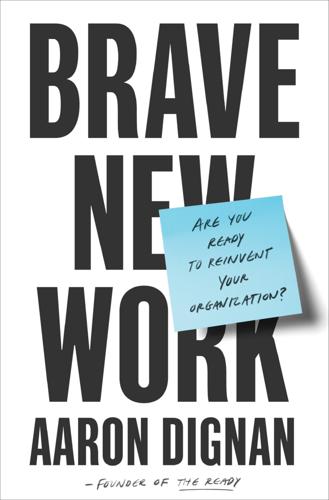
Brave New Work: Are You Ready to Reinvent Your Organization?
by
Aaron Dignan
Published 1 Feb 2019
At least in the Western world, we don’t talk about money—it’s actually considered distasteful. Talking openly about how much we make, either in public or within our teams, is less popular than talking about politics. Of course, this deference to polite society has real societal consequences. The main by-product of this secrecy is “information asymmetry,” which is what happens when one party in a negotiation has more information than the other. Whoever knows less is at a disadvantage. In this case, employers know a lot (such as what every single employee at your level is making), and employees know very little. This can result in a wide range of salaries for the same role, known as wage dispersion, both within firms and across industries.

Adam Smith: Father of Economics
by
Jesse Norman
Published 30 Jun 2018
Much of the analysis has probed what the implications are, not of insisting on perfect information, perfect rationality and perfect liquidity, but of relaxing these very strong assumptions in different ways, through models focusing on imperfect or asymmetric information, bounded rationality and the impact of transaction costs. The best of this work has been rewarded with a hatful of Nobel Prizes. The career of Kenneth Arrow is again a case in point. For one thing, Arrow himself did a great deal of work to explore and explain the negative effects of asymmetric information in the US healthcare insurance market, and how that market might be made to function better. But in 1953 he had also produced what was in effect an impossibility theorem for finance, by asking under what conditions the concept of general equilibrium could be extended to include financial markets.
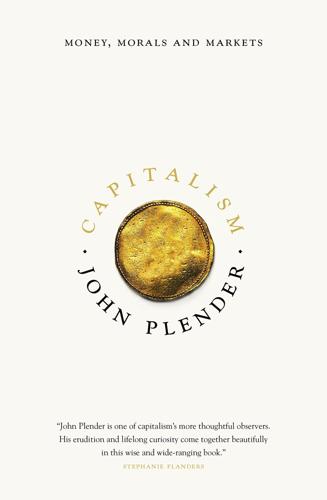
Capitalism: Money, Morals and Markets
by
John Plender
Published 27 Jul 2015
One reason is that share prices are not set by private investors – the ‘representative household’, in the economic jargon – but by fund managers to whom savers and pension fund trustees have delegated authority for managing their money. These fund managers, the agents, may have a very different agenda to that of savers and trustees, the principals. They also have more and better information about companies and markets. So there is, as the economists put it, both a principal–agent problem and an information asymmetry problem. These lead to conflicts of interest. The technology bubble in the second half of the 1990s provides a good example of how the conflict works. Dot.com stocks rose initially on the basis of a conviction that technology had fundamentally changed the way the economy worked, so that expectations of future profits spiralled while conventional methods of company valuation were abandoned.
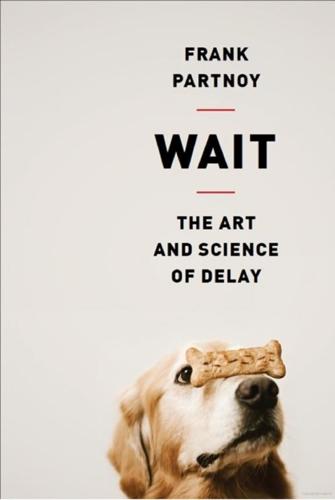
Wait: The Art and Science of Delay
by
Frank Partnoy
Published 15 Jan 2012
See “Tracy Morgan: I’m Going Back to Nashville to Apologize,” TMZ.com, June 13, 2011, http://www.tmz.com/2011/06/13/tracy-morgan-glaad-anti-gay-comedy-routine-homophobic-stab-son-homeless-ali-forney-center-new-york-tennessee. 14. Dave Itzkoff, “Comedian, Chastened, Gets Back to Laughs,” New York Times, June 27, 2011, p. 1. Chapter 10 1. Akerlof and Stiglitz shared the 2001 Nobel Memorial Prize in Economic Sciences with Michael Spence for their work on information asymmetry, the idea that markets do not efficiently allocate resources when there is a large gap between the information available to sellers and buyers. Akerlof’s most famous paper—one of the most frequently cited papers in the history of economics—is George A. Akerlof, “The Market for Lemons: Quality Uncertainty and the Market Mechanism,” Quarterly Journal of Economics 84(3, 1970): 488–500.

Barometer of Fear: An Insider's Account of Rogue Trading and the Greatest Banking Scandal in History
by
Alexis Stenfors
Published 14 May 2017
When we discuss these markets, or the industry behind these markets, it is impossible not to talk about a very small group of very large banks. In fact, it is impossible not to mention the LIBOR panel banks, which are completely dominant within this small group of banks. Banks are corporations, but the banking system is also different from other industries. For instance, information asymmetries where one party (the borrower) knows more than the other (the lender) are natural in banking. Banking assets can also be difficult to value, as it is impossible to assess the likelihood of default for every counterparty at every moment in time. Moreover, banks provide transaction and accounting systems.
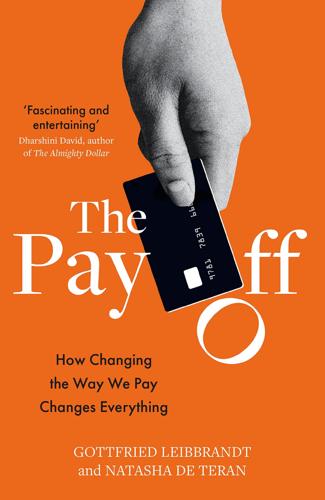
The Pay Off: How Changing the Way We Pay Changes Everything
by
Gottfried Leibbrandt
and
Natasha de Teran
Published 14 Jul 2021
Banks have a fair point when they moan that others use our data in ways they can’t. But they have a bigger problem to worry about where data is concerned: open banking. The concept of open banking stems from a 2015 investigation by the UK Competition and Markets Authority (CMA), which found that ‘information asymmetries’ gave incumbent banks an unfair advantage; consumers were losing out because competitors couldn’t get a look-in. In simple terms: your bank holds lots of information about you. By looking at your payments, for example, your bank might spot that you are likely to buy insurance or an investment product.
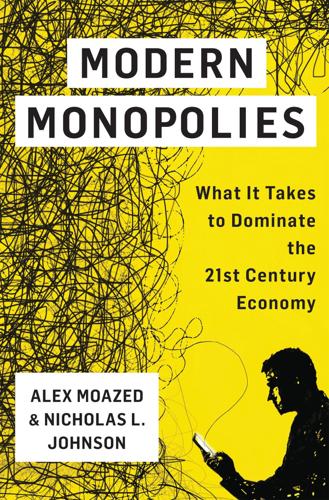
Modern Monopolies: What It Takes to Dominate the 21st Century Economy
by
Alex Moazed
and
Nicholas L. Johnson
Published 30 May 2016
This notion assumed that every participant had complete knowledge of all relevant factors in the market at all times. Producers understood all of the same production techniques as other producers, and both buyers and sellers knew all the prices being charged by other sellers. There could be no “information asymmetries” wherein one individual possessed market information that others did not. If this idea doesn’t sound remotely realistic, that’s because it isn’t. In the real economy, imperfect information is the norm. More surprisingly, it turns out that under the conditions of perfect information, there is no difference between the efficiency of markets and of central planning.

Barefoot Into Cyberspace: Adventures in Search of Techno-Utopia
by
Becky Hogge
,
Damien Morris
and
Christopher Scally
Published 26 Jul 2011
Lamo has admitted that he offered Manning journalist-source confidentiality before the young soldier confessed, an offer upon which Lamo evidently reneged. Both Lamo and Poulsen appear on lists of the top ten most famous hackers of all time. Clearly both still like making “interesting trouble”. Rumours that Lamo is now working on asymmetrical information warfare tactics on behalf of the United States National Security Agency remain unconfirmed. Most probably they always will. * * * After Collateral Murder, Julian Assange went into hiding. But just over a month after Bradley Manning’s story hit the headlines, at noon on 25 July, he appeared again, fronting a press conference at London’s Frontline Club for WikiLeaks’ second high-profile leak of the year: the Afghan War Logs, around 75,000 classified internal US field reports sent from the war in Afghanistan.

The fortune at the bottom of the pyramid
by
C. K. Prahalad
Published 15 Jan 2005
There was significant asymmetry in the access to information between the farmer, the traders in the mandi, small local processors, and the large processors such as ITC. By providing the farmer access to information about prices not only in his mandi but around the world, the e-Choupal system dramatically eliminates the asymmetric information that confines the subsistence farmer to a helpless bargaining position. The Ecosystem for Wealth Creation 71 Costs (Rs./ Metric Ton) 600 500 400 300 200 100 0 Farmer (Mandi) Commission 0 Handling and transit losses 50 Labor costs 50 Bagging and weighing 70 Transportation 100 ITC (Mandi) 100 10 70 75 250 Farmer (e-Choupal) 0 0 0 0 0 ITC (e-Choupal) 50 0 85 0 100 Figure 4.3 Savings for farmers compared to the traditional mandi system. 2.
…
The message is simple: For the BOP consumer, gaining access to modern technology and good products designed with their needs in mind enables them to take a huge step in improving their quality of life. Gaining Access to Knowledge We have already examined the benefits of access and transparency and how that impacts the asymmetric information that was (and is) the norm in most BOP markets. However, once BOP consumers get access to digital technologies, the pattern of access to knowledge changes. For example, in the EID Parry Agriline example used in the book, the farmers had a concern about the quality of a particular crop: betelnut.
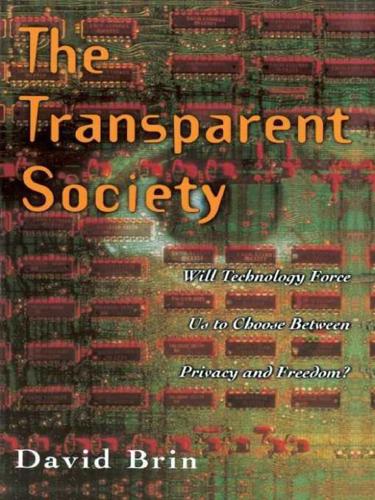
The Transparent Society: Will Technology Force Us to Choose Between Privacy and Freedom?
by
David Brin
Published 1 Jan 1998
If transparency is the requisite condition in science, democracy, and free markets, it should come as no surprise that economists—who work at the nexus of all three—find openness appealing. Many economists now lean toward attributing most kinds of injustice, bureaucracy, and societal inefficiency to asymmetric information flows—where one person or group knows something that others donʼt. Pick an institution, and these economists will talk about how the structure was chosen in response to some information-related problem. When they examine causes of “market failures” (things that make simple markets handle problems poorly) these experts list uneven knowledge right at the top.
…
All of these problems arise because of limited or restricted information flows. With improved knowledge on all sides, many governmental and nongovernmental organizations might lose their purpose, lose their constituencies, and possibly fade away. Caltech professor John O. Ledyard points out that “asymmetric information conveys a monopoly position on the holder of the information that markets cannot easily overcome.” Although they generally favor transparency, economists warn that information flows should be opened up evenly, lest one side or another gain unfair advantage during the transition—a gradualist approach that is supported throughout this book.

The Content Trap: A Strategist's Guide to Digital Change
by
Bharat Anand
Published 17 Oct 2016
Telecommunications, Cable & Satellite: The Dumb Pipe Paradox, Revisited.” Bernstein Research, June 11, 2009. Mortimer, Julie Holland, Chris Nosko, and Alan Sorensen. “Supply Responses to Digital Distribution: Recorded Music and Live Performances.” Information Economics and Policy 24, no. 1 (March 2012): 3–14. Moshkin, Nickolay, and Ron Shachar. “The Asymmetric Information Model of State Dependence.” Marketing Science 21, no. 4 (2002): 1–20. Mulligan, Mark. Awakening: The Music Industry in the Digital Age. CreateSpace Independent Publishing Platform, May 3, 2015. Nalebuff, Barry. “Bundling as an Entry Barrier.” Quarterly Journal of Economics 119, no. 1 (2004): 159–88.
…
This pattern of “sticking around” See, for example, Roland Rust and Mark Alpert, “An Audience Flow Model of Television Viewing Choice,” Marketing Science 3 (Spring 1984): 113–27; Ron Shachar and John Emerson, “Cast Demographics, Unobserved Segments, and Heterogeneous Switching Costs in a TV Viewing Choice Model,” Journal of Marketing Research 37 (May 2000): 173–86; Nickolay Moshkin and Ron Shachar, “The Asymmetric Information Model of State Dependence,” Marketing Science 21, no. 4 (2002): 1–20; Bharat Anand and Ron Shachar, “Advertising, The Matchmaker,” RAND Journal of Economics 42, no. 2 (Summer 2011): 205–45. at least four types of connections at work here Ron Shachar and Bharat Anand, “The Effectiveness and Targeting of Television Advertising,” Journal of Economics & Management Strategy 7, no. 3 (Fall 1998): 363–96; Bharat Anand and Ron Shachar, “Brands as Beacons: A New Source of Loyalty to Multiproduct Firms,” Journal of Marketing Research 41, no. 2 (May 2004): 135–50.

Political Order and Political Decay: From the Industrial Revolution to the Globalization of Democracy
by
Francis Fukuyama
Published 29 Sep 2014
An externality is a benefit or harm imposed on third parties, such as the benefit an employer gets when I have paid for my own education, or the pollution that fouls the drinking water of a community downstream from a factory. In other cases, economic transactions may involve information asymmetries; for example, the seller of a used car may know about defects not readily apparent to the buyer, while a drug maker may be aware of clinical studies that show its products are ineffective or even harmful, which are unavailable to potential patients. Governments have classically played a role in regulating externalities and information asymmetries. In the case of education and basic infrastructure such as roads, ports, and water, the positive externality associated with it is great enough that governments traditionally provide a basic level to citizens for free or else at highly subsidized prices.

On the Edge: The Art of Risking Everything
by
Nate Silver
Published 12 Aug 2024
Statistically—in part because a big share of the money that slots return comes in the form of large jackpots that are only hit occasionally—it takes a very long time for a player to estimate their expected value. And unlike in blackjack, you can’t just look up the odds—they aren’t listed anywhere! In fact, the same machine can have different payouts in different parts of the casino, without any outward sign to the customer.[*17] Given this information asymmetry, casinos were leaving money on the table. But this was soon to change. In 1997, the year before Loveman joined Caesars, slot machines on the Las Vegas Strip had an average hold percentage of 5.67 percent. By the time he left in 2015, it had jumped to 7.77 percent, right where those Atlantic City numbers had been.
…
Clark County includes these towns and is essentially coterminous with the Las Vegas metro area. *10 The original 1960 film, not the George Clooney remake. *11 This bears some resemblance to the economic concept known as the “market for lemons,” where there’s a market failure because of information asymmetries. It’s hard to tell if a used car is defective until you’ve bought it—a test drive usually won’t be enough to surface all problems and tell you whether it’s a lemon. Similarly, the small sample of play you get at a particular casino won’t be statistically sufficient to tell you whether you’ve been cheated.

Capitalism and Its Critics: A History: From the Industrial Revolution to AI
by
John Cassidy
Published 12 May 2025
In the economics world, Stiglitz was known as a brilliant theorist who had written influential papers on subjects ranging from finance to public economics to labor economics. A member of the “new-Keynesian” school, whose members sought to provide a rigorous microeconomic foundation for Keynesian macroeconomics, he was most renowned for his work on information asymmetries, in which one party to an economic transaction has certain information that another party lacks. (A classic example is that someone looking to buy auto insurance knows more about how likely they are to drive recklessly than the insurance company does.) Stiglitz viewed himself as a centrist, but he had a progressive streak.
…
Hobsbawm, Eric Hobson, Florence Edgar Hobson, John; antisemitism of; The Crisis of Liberalism; early life of; The Evolution of Modern Capitalism; on imperialism; Imperialism: A Study; on industrial capitalism; Lenin and; Mummery and; The Physiology of Industry; Problems of Poverty; socialism and; in South Africa; The War in South Africa Hodgskin, Thomas Hoechst Hofman, André Hollande, François Hollingsworth, Edward Homestead Act homogenization Hoover, Herbert Hopkins, Richard Horsfall, William Horthy, Miklós Hosiers’ Association housework housing Howard University Howell, David Howells, William Dean How Europe Underdeveloped Africa (Rodney) How the World Ran Out of Everything (Goodman) Hudson, George Hudson, Pat Hume, David Hume, Joseph Humphries, Jane Hungary Hunt, Tristram Hyder Ali Hyndman, Henry Mayers IBM If Women Counted (Waring) immigrants immiseration Imperial Bank of India imperialism; American; British, see British colonies; formal; Hobson on; Kautsky on; Lenin on; Luxemburg on; racism and; wealth distribution and; working classes and; World War I and; see also colonialism Imperialism (Hobson) Imperialism, the Highest Stage of Capitalism (Lenin) Implosion of Contemporary Capitalism, The (Amin) income; diminishing marginal utility of; Elephant Curve distribution of; equality of; household; imperialism and; inequality in, see inequality; redistribution of; universal basic; see also wages In Defence of Economic Growth (Beckerman) In Defense of Globalization (Bhagwati) indentured workers Independent Social Democratic Party India; agriculture in; AIVIA in; army of; Bengal; Congress Party in; cotton production in; debates about development of; economy of; environmental calamities in; famine in; federal budget of; Five-Year Plans in; global integration of; independence of; industrialization in; License Raj in; Mughal dynasty in; poverty in; railroads in; salt protests in; socialism and; village industries in; World War II and India, British rule in; Dutt on; end of; Gandhi and; Government of India Act and; Keynes on; Kumarappa on; Marx on; protests against; taxation in; see also East India Company Indigenous peoples; in Peru; in US individualism Indonesia industrial class, vs. business class Industrial Commission industrialists (captains of industry) industrialization and industrial capitalism; in advanced countries vs. poorer regions; birth of; Carlyle on; and competition within classes; Engels on; environment and; globalization and; Golden Age of; Hobson on; in India; Marx on; slavery and; in Soviet Union; state’s role in; in underdeveloped countries; in US; Veblen on; and women in the home; working-class living standards and Industrial Relations Act industrial revolution; second, third, and fourth inequality; Elephant Curve of; forces of convergence and; forces of divergence and; Gini coefficients for; globalization and; imperialism and; Kuznets on; Kuznets Curve of; in Latin America; Milanović on; Occupy movements and; Piketty on; politics affected by; rationalization of; in US inflation; in Britain; central banks and; in Chile; in Germany; and quantity theory of money; stagflation; unemployment’s relationship to; in US information asymmetries information technology Inikori, Joseph E. Inman, Mary Inniss, W. D. In Place of Strife report Inquiry into the Principles of Political Economy, An (Steuart) Inquiry into the Principles of the Distribution of Wealth Most Conducive to Human Happiness, An (Thompson) instability hypothesis Institute for Economic Affairs (IEA) Inter-American Development Bank interest rates International Feminist Collective International Institute for Democracy and Electoral Assistance International Monetary Fund (IMF) International Revolutionary Party Proletariat International Trade Organization International Wages for Housework internet investment; savings and invisible hand In Woman’s Defense (Inman) Iran Iraq Ireland Irish National Land League Irish World, The ISI (import substituting industrialization) Işıkara, Baki Güney Italy Jackson, Tim Jamaica James, C.
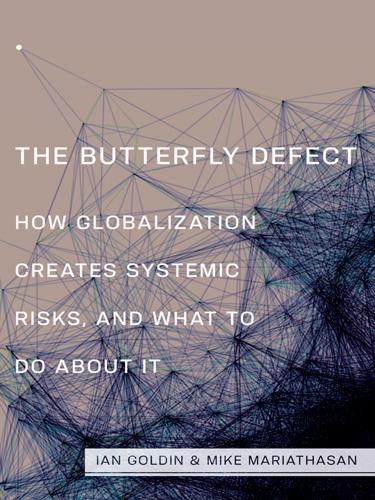
The Butterfly Defect: How Globalization Creates Systemic Risks, and What to Do About It
by
Ian Goldin
and
Mike Mariathasan
Published 15 Mar 2014
Simplicity will help ease the tension between international and subnational levels of financial governance. It has been observed that “in many ways, the subprime crisis occurred because the ‘global’ ignored the complexities of the ‘local.’”88 Poor coordination between local and global groups tasked with financial surveillance resulted in informational asymmetry. Traders developed models that calculated risk in a complex, poorly understood way that confused regulators by eschewing “local knowledge in favour of formula-based risk management on a global scale.”89 The failure of local and global institutions to coordinate was largely ignored because the system seemed profitable.
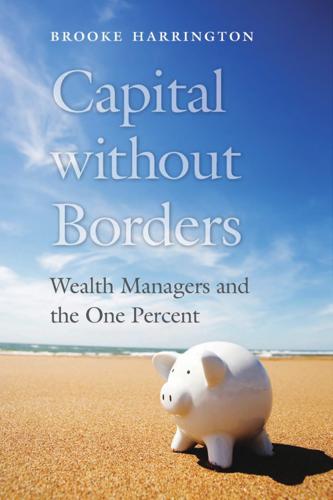
Capital Without Borders
by
Brooke Harrington
Published 11 Sep 2016
One study of the private banking industry found that the wealth managers were mocked as the “Business Prevention Unit” because of the concerns they voiced about staying on the right side of the law.93 Bankers aren’t fiduciaries in relation to their clients; wealth managers are. From that relational difference springs a host of consequences, including bankers’ ability to behave in an economically rational way—opportunistic and exploitative of informational asymmetries—at the expense of their clients. The absence of fiduciary duty frees many (if not most) in the financial services industry to make huge profits and earn proportionally huge salaries and bonuses. An extreme example of this can be found in the case of investment bank Goldman Sachs, whose traders bragged in emails about ripping off clients in mortgage-backed securities deals.94 When U.S. senator Susan Collins confronted Goldman executives in a subsequent congressional hearing with the question “Do you have a duty to act in the best interests of your clients?”
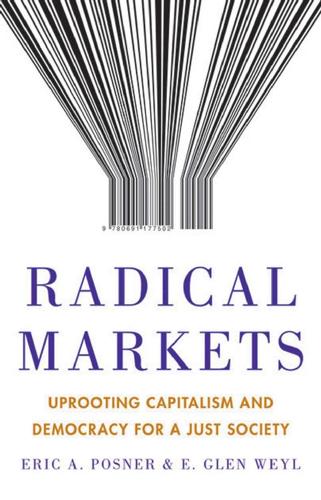
Radical Markets: Uprooting Capitalism and Democracy for a Just Society
by
Eric Posner
and
E. Weyl
Published 14 May 2018
Glen Weyl & Anthony Lee Zhang, Depreciating Licenses (2017), https://ssrn.com/abstract=2744810. 36. Demosthenes, Against Phaenippus (c. BCE 359), discussed in George C. Bitros & Anastasios D. Karayiannis, Creative Crisis in Democracy and Economy 20 (Springer, 2013). 37. Christopher D. Hall, Market Enforced Information Asymmetry: A Study of Claiming Races, 44 Economic Inquiry 271 (1986). 38. Antonio Cabrales, Antoni Calvó-Armengol, & Matthew O. Jackson, La Crema: A Case Study of Mutual Fire Insurance, 111 Journal of Political Economics 425 (2003). 39. Emerson Niou & Guofu Tan, An Analysis of Dr. Sun Yat-sen’s Self-Assessment Scheme for Land Taxation, 78 Public Choice 103 (1994). 40.
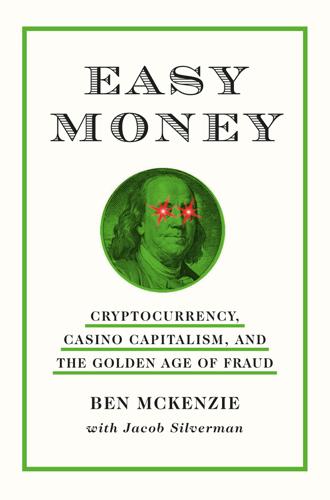
Easy Money: Cryptocurrency, Casino Capitalism, and the Golden Age of Fraud
by
Ben McKenzie
and
Jacob Silverman
Published 17 Jul 2023
He observed that the vast majority of commissions paid by MLM companies go to a tiny percentage of TOPPs (top-of-the-pyramid promoters) at the expense of a revolving door of recruits, 99 percent of whom lose money. In the case of crypto, the TOPPs are influencers, celebrities, VCs, crypto company executives, and other insiders. They are the industry’s 1 percent, and everyone else is overwhelmingly likely to lose, often through no fault of their own. The top 1 percent are the beneficiaries of the information asymmetries that abound in crypto—and the discounts sometimes offered to friends, family, and investors. How do you know if a certain coin is about to go “to the moon” or crash catastrophically? You need to be connected to the people controlling its supply (and its overhyped marketing). In this kind of arrangement, a large group of people, some of them financially desperate, are competing for limited, volatile, and risky rewards.
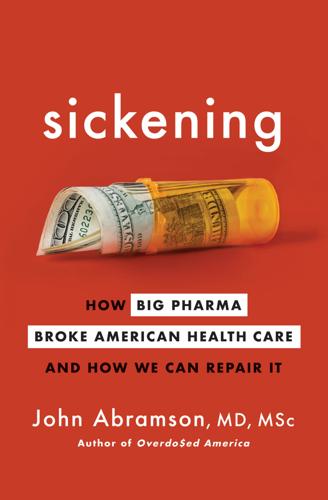
Sickening: How Big Pharma Broke American Health Care and How We Can Repair It
by
John Abramson
Published 15 Dec 2022
“novel drugs — innovative”: “Drug Industry: Profits, Research and Development Spending, and Merger and Acquisition Deals,” Report to Congressional Requesters, U.S. Government Accountability Office, November 2017, https://www.gao.gov/assets/690/688472.pdf. withholding or misrepresenting: Aidan R. Vining and David L. Weimer, “Information Asymmetry Favoring Sellers: A Policy Framework,” Policy Sciences 21, no. 4 (1988): 281–303. What I am calling a “credence good,” Vining and Weimer refer to as a “post-experience good.” in effect, mandates: Stephen Bainbridge, “A Duty to Shareholder Value,” New York Times, April 16, 2015. accepted as knowledge: Susan Haack, Evidence and Inquiry: Towards Reconstruction in Epistemology (Oxford: Wiley-Blackwell, 1995), 206.

The Alternative: How to Build a Just Economy
by
Nick Romeo
Published 15 Jan 2024
Anuradha Varanasi, “Is Organic Food Really Better for the Environment?,” State of the Planet, Columbia Climate School, Columbia University, October 22, 2019, https://news.climate.columbia.edu/2019/10/22/organic-food-better-environment/. 2. See, e.g., Campbell McConnell, Stanley Brue, and Sean Flynn, “Public Goods, Externalities, and Information Asymmetries,” chapter 16 in Microeconomics, 18th ed. (New York: McGraw-Hill, 2008); or Margaret Stevens, Samuel Bowles, and Rajiv Sethi, “Unit 12: Markets, Efficiency, and Public Policy,” in The Economy, CORE team course coordinated by Samuel Bowles, Wendy Carlin, and Margaret Stevens, 2017, https://www.core-econ.org/the-economy/book/text/12.html. 3.

The Man Who Knew: The Life and Times of Alan Greenspan
by
Sebastian Mallaby
Published 10 Oct 2016
For an exposition of the lessons learned from this error, see Ben Bernanke, “Credit in the Macroeconomy,” 50–70. 68. See Ben Bernanke, “Credit in the Macroeconomy.” Bernanke’s paper applied new research on asymmetric information to the field of monetary policy, pointing out that borrowers paid a premium to lenders that reflected lenders’ imperfect information. This premium increased when falling asset prices, higher interest rates, or a recession heightened doubts about creditworthiness. Although Greenspan would not have couched his arguments in terms of information asymmetries, he would certainly have recognized that stressed economic conditions could disrupt the credit channel. 69.

Think Twice: Harnessing the Power of Counterintuition
by
Michael J. Mauboussin
Published 6 Nov 2012
So if someone introduces a cue to you—a word, a smell, a symbol—your mind often starts down an associative path. And you can be sure the initial cue will color a decision that waits at the path’s end. All this happens outside of your perception.6 People around us also influence our decisions, often with good reason. Social influence arises for a couple of reasons. The first is asymmetric information, a fancy phrase meaning someone knows something you don’t. In those cases, imitation makes sense because the information upgrade allows you to make better decisions. Peer pressure, or the desire to be part of the in-group, is a second source of social influence. For good evolutionary reasons, humans like to be part of a group—a collection of interdependent individuals—and naturally spend a good deal of time assessing who is “in” and who is “out.”7 Experiments in social psychology have repeatedly confirmed this.

Manias, Panics and Crashes: A History of Financial Crises, Sixth Edition
by
Kindleberger, Charles P.
and
Robert Z., Aliber
Published 9 Aug 2011
More and more economic theorists are moving away from unswerving reliance on the assumption that market participants are uniformly intelligent, informed, and independent in thought, introducing such concepts as asymmetric information (different knowledge available to different participants), cognitive dissonance (unconscious suppression of information that fails to fit a priori views), herd behavior, procrastination that results in failure to act in timely fashion, and so on. Those interested should consult the work especially of George Akerlof and Richard Thaler. For relevant studies, see Frederic S. Miskin, ‘Asymmetric Information and Financial Crises: a Historical Perspective’, in R. Glenn Hubbard, ed., Financial Markets and Financial Crises (Chicago: University of Chicago Press, 1991), pp. 69–108; and Thomas Lux, ‘Herd Behavior, Bubbles and Crashes’, Economic Journal, vol. 105 (July 1995), pp. 881–96. 11.
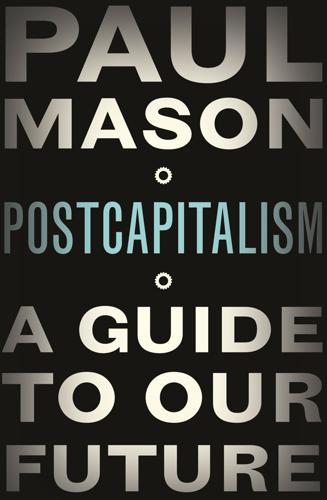
Postcapitalism: A Guide to Our Future
by
Paul Mason
Published 29 Jul 2015
To this end, a lot can be achieved by changing the relationship between power and information. Info-capitalism is based on asymmetry: the global corporations get their market power from knowing more – more than their customers, suppliers and small competitors. The simple principle behind postcapitalism should be that the pursuit of information asymmetry is wrong – except when it comes to privacy, anonymity and security issues. In addition, the aim should be to push information and automation into types of work where they are held back at present because cheap labour removes the need to innovate. In a modern car factory there is a production line, and there are still workers with spanners and drills.
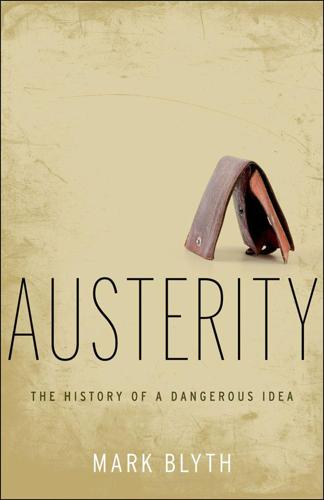
Austerity: The History of a Dangerous Idea
by
Mark Blyth
Published 24 Apr 2013
To the extent that the state has a role, it devolves to “doing nothing” since doing something will only produce price distortions that will upset market efficiency. Finance rather liked these ideas because they justified letting the financial system do whatever it liked, since apart from deliberate fraud and discounting the manipulation of informational asymmetries (where the bank knows more than you do, leading to insider trading), finance could, by definition, do no wrong. If you think markets work this way, the very notion of regulating finance becomes nonsense. Self-interested actors, whether individuals or financial firms, acting in an efficient market will make optimal trading decisions, and these outcomes will improve everyone’s welfare.

How Not to Network a Nation: The Uneasy History of the Soviet Internet (Information Policy)
by
Benjamin Peters
Published 2 Jun 2016
For the market to be the ideal organizational mode, some economists assume that rational actors will rank the order of their preferences linearly: if rational actors prefer option A over B as well as option B over C, they also will prefer option A over C. Yet this view of the market has been challenged in recent decades. Markets hide transaction costs and information asymmetries. Behavioral economists have demonstrated how under a number of conditions (such as fear, regret, the threat of loss, cognitive dissonance, or peer pressure) the rational homo economicus is a fiction: a person may prefer apples to bananas, bananas to cantaloupes, and cantaloupes to apples, and there is no guarantee that there exists a rational solution to voting systems or daily choices involving three or more actors.24 By contrast, the concept of hierarchy (from the Greek term ἱεραρχία, “rule by priests”) reaches back fifteen centuries to religious roots.
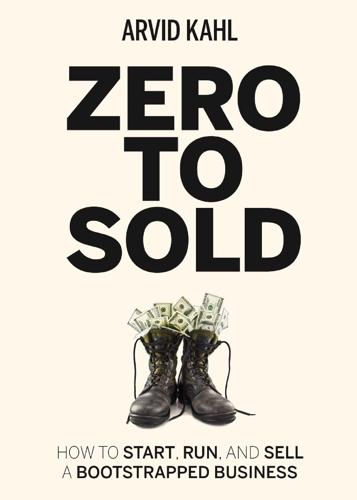
Zero to Sold: How to Start, Run, and Sell a Bootstrapped Business
by
Arvid Kahl
Published 24 Jun 2020
Red Flags Here are several things that should raise the alarm in your mind when doing your own due diligence on your potential acquirer: Red Flag 1: There Is No Public Information About the Acquirer It’s relatively easy to create a presence on the internet. If your acquirer does not have this, you should wonder why they would want to stay in the shadows. A company blog or at least a landing page should be present for any serious business. If there is none, this points at severe information asymmetry. In the end, that makes an interaction with such a potential acquirer very risky for someone like you: a founder who has to both run their business and research another one at the same time. Red Flag 2: You Ask for a Specific Reference, and They Ignore that Request or Try and Dissuade You If there is a person that someone does not want you to talk to, that should make you very wary.

Nobody's Fool: Why We Get Taken in and What We Can Do About It
by
Daniel Simons
and
Christopher Chabris
Published 10 Jul 2023
A retail salesperson likely won’t know the cost per page or the total amount a customer will spend over the lifetime of the printer. The same is true for fees charged by banks and mutual funds. Their disclosure is government mandated, but the companies’ customer service representatives sometimes don’t understand their fee structures well enough to explain them to customers.8 In some cases, such information asymmetries can undergird the profitability of entire business sectors. For example, the penny-auction industry, represented by websites like DealDash and Quibids, is entirely built on shrouding the source of its profits. Company advertisements feature video testimonials in which auction winners claim to have paid absurdly low prices for expensive merchandise—an iPad for $23.13, a mountain bike for $11, a Samsung TV for $7.48.

Limitarianism: The Case Against Extreme Wealth
by
Ingrid Robeyns
Published 16 Jan 2024
When risks are shared among an entire population—we are all at risk of ill-health, unemployment, and so on—then it is much better to pool them. And while insurance companies can facilitate this, their focus on profit-seeking means that they are unsuited to providing most of these goods. In the case of healthcare, the information asymmetry and power differences between a patient and a doctor lead to a type of care that is not the best but the most profit-maximizing, which costs lives. In the case of unemployment benefits, unregulated private insurance companies tend to develop a bias against those who are more likely to become unemployed, whereby they either charge higher rates for coverage or (if it is not illegal to do so) decline a “risky” application for insurance.

Why Information Grows: The Evolution of Order, From Atoms to Economies
by
Cesar Hidalgo
Published 1 Jun 2015
As Hayek wrote, “In a system in which the knowledge of the relevant facts is dispersed among many people, prices can act to coördinate the separate actions of different people.”4 The idea of information also helped economists understand some important market failures. George Akerlof became famous by showing that markets could fail to operate when people had asymmetric information about the quality of the goods they wanted to exchange.5 On a parallel front, Herbert Simon, a polymath who contributed to economics, organizational theory, and artificial intelligence, introduced the idea of bounded rationality, which focused on the behavior of economic actors who had limited information about the world.

New Laws of Robotics: Defending Human Expertise in the Age of AI
by
Frank Pasquale
Published 14 May 2020
Robertson, Holacracy: The New Management System for a Rapidly Changing World (New York: Holt, 2015). 98. Katherine Barr, “AI Is Getting Good Enough to Delegate the Work It Can’t Do,” Harvard Business Review, May 12, 2015, https://hbr.org/2015/05/ai-is-getting-good-enough-to-delegate-the-work-it-cant-do. 99. Alex Rosenblat and Luke Stark, “Algorithmic Labor and Information Asymmetries: A Case Study of Uber’s Drivers,” International Journal of Communication 10 (2016): 3758–3784; but see also Alison Griswold, “Uber Drivers Fired in New York Can Now Appeal Before a Panel of Their Peers,” Quartz, November 23, 2016, https://qz.com/843967/uber-drivers-fired-in-new-york-can-now-appeal-before-a-panel-of-their-peers/. 100.
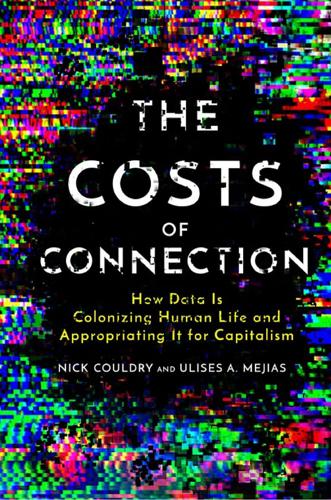
The Costs of Connection: How Data Is Colonizing Human Life and Appropriating It for Capitalism
by
Nick Couldry
and
Ulises A. Mejias
Published 19 Aug 2019
“Screen and Intervene: Governing Risky Brains.” History of the Human Sciences 23, no. 1 (2010): 79–105. Rosenblat, Alex, Tamara Kneese, and danah boyd. “Workplace Surveillance.” Social Science Research Network, December 14, 2014. https://papers.ssrn.com/abstract=2536605. Rosenblat, Alex, and Luke Stark. “Algorithmic Labor and Information Asymmetries: A Case Study of Uber’s Drivers.” International Journal of Communication 10 (2016): 3748–84. Rosenthal, Caitlin. “Slavery’s Scientific Management.” In Slavery’s Capitalism, edited by Sven Beckert and Seth Rockman, 62–86. Philadelphia: University of Pennsylvania Press, 2016. Rossiter, Ned.

Chokepoint Capitalism
by
Rebecca Giblin
and
Cory Doctorow
Published 26 Sep 2022
Labels and publishers are our ‘partners’ but we don’t always have the same interests.”13 The UK parliamentary inquiry into the economics of music streaming similarly blames the “systematic lack of transparency from both music companies and the streaming services” for “exacerbat[ing] the inequities of creator remuneration by creating information asymmetries and preventing them from undertaking their right to audit.”14 The lack of data stymies collective action too. If nobody knows how bad their deal is or their contracts ban them from sharing the details, it’s hard to organize to collectively demand better. It’s no coincidence that Susan May’s activist group took off only after the Audible glitch showed how badly indie writers were being exploited.

The Equality Machine: Harnessing Digital Technology for a Brighter, More Inclusive Future
by
Orly Lobel
Published 17 Oct 2022
Thanks to the widely publicized Sony Pictures email hack, Jennifer Lawrence, the highest-paid Hollywood actress in 2015 and 2016, discovered that she was paid 2 percent less for the 2013 film American Hustle than her male co-stars. The hack also revealed, among other things, that Sony’s female co-president was earning $1 million less than her male counterpart.7 Until that leak, the numbers were a closely guarded secret, like so many other workplace pay scales. If we want pay equity, we must correct for information asymmetry and move toward more transparency. Women and minorities can negotiate better salaries when they know where they stand relative to their co-workers. But employers are notorious for prohibiting their employees from discussing salaries, and increasingly so in recent decades. Sharing salary information is not merely discouraged by employers through non-disclosure agreements, policies, and corporate culture; it has long been taboo in American society.
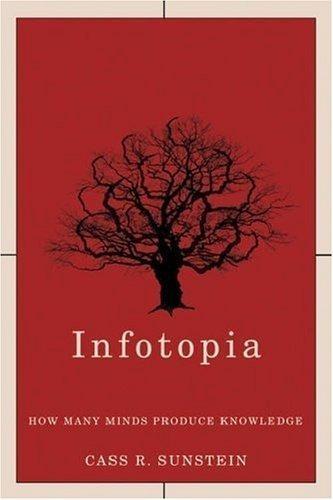
Infotopia: How Many Minds Produce Knowledge
by
Cass R. Sunstein
Published 23 Aug 2006
Some affirmative evidence can be found in J. Scott Armstrong, “Combining Forecasts,” in Principles of Forecasting, ed. J. Scott Armstrong (Boston: Kluwer Academic, 2001), 419–20, 427, 433–35. 11. See William P. Bottom et al., “Propagation of Individual Bias through Group Judgment: Error in the Treatment of Asymmetrically Informative Signals,” Journal of Risk and Uncertainty 25 (2002): 152–54. 12. For the arithmetic: Suppose that a group has N voters, and that they are choosing between two alternatives. Each voter has the same probability, p, of being right, with p being somewhere between 50 percent and 100 percent.
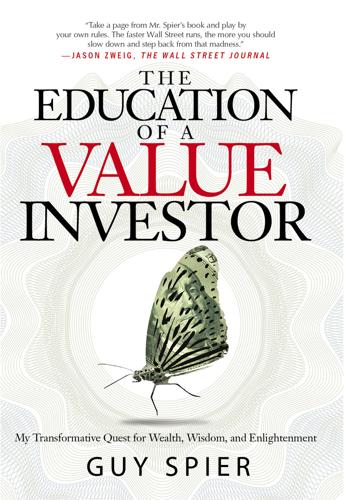
The Education of a Value Investor: My Transformative Quest for Wealth, Wisdom, and Enlightenment
by
Guy Spier
Published 8 Sep 2014
Richard Zeckhauser is a professor of political economy and a champion bridge player who chairs the Investment Decisions and Behavioral Finance Executive Program at Harvard. An expert on economic behavior in acutely uncertain situations, he has authored papers with titles like “Investing in the Unknown and Unknowable.” For investors, the beauty of bridge lies in the fact that it involves elements of chance, probabilistic thinking, and asymmetric information. When the cards are dealt, the only ones you can look at are your own. But as the cards are played, the probabilistic and asymmetric nature of the game becomes exquisite. For example, during the bidding, I might ask myself a question like this: “Given that the player to my right has bid two clubs, how does that update my probabilistic assessment of what cards he’s holding?”
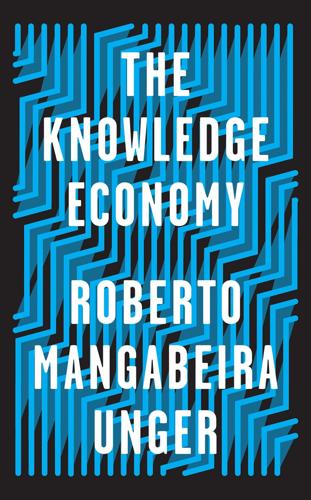
The Knowledge Economy
by
Roberto Mangabeira Unger
Published 19 Mar 2019
We can choose to build a different market economy. This thesis contradicts a characteristic assumption of much of practical economics and of thinking about economic policy. According to this assumption, economic failures result from localized flaws in market competition (such as the rigidity of the price of labor, or asymmetrical information, or a disturbance in the relation of agents to their principals) or in the regulatory response to such market failures. The conception of an institutional and legal reshaping of the market order contradicts a history of modern ideological controversy that is built around the contrast, or the balance to be struck, between market and state.

What's Wrong With Economics: A Primer for the Perplexed
by
Robert Skidelsky
Published 3 Mar 2020
Expectations about the future are simply probability distributions over a sequence of events. Uncertainty is reduced to probability, and can thus be labelled a special case of certainty. Economists like Nobel Laureates George Akerlof (b.1940) and Joseph Stiglitz (b.1943) have pointed to the existence of ‘asymmetric information’ – situations in which one party to a transaction has more information than another: a problem rife in insurance and second-hand car markets.8 But unless such inequalities of information are regarded as inherent, they will be overcome by computer-generated big data. Provided this is freely available, all persons will have near-perfect forecasting ability about any decision they need to make.

Dawn of the New Everything: Encounters With Reality and Virtual Reality
by
Jaron Lanier
Published 21 Nov 2017
Thomas Pynchon, who wrote that novel, never appeared in public. No one knew what he looked like. The guy behind me in line murmured, “That guy is such a dick.” Who, me? I turned and looked up at a military man. In uniform, nerd glasses, intense eyes, perfect blond trim, obviously smart. I managed “Um, wha?” “Pynchon! He doesn’t let us see him. Information asymmetry! He sees us, we don’t see him. He’s on a power trip.” How could he say something like that about such an amazing writer? “Novelists aren’t powerful, right?” I said. “I mean, he probably just doesn’t want to be bothered. It’s not like he’s got missiles.” “You really don’t get it. Amazing.”

Birth of the Euro
by
Otmar Issing
Published 20 Oct 2008
See, for example, the special issue ‘Transparency, communication and commitment’ (March 2007) of the International Journal of Central Banking with the contributions by C. E. Walsh, P. M. Geraats, A. H. Kara, M. Ehrmann and M. Fratzscher (available at www.ijcb.org/journal/ijcb07q1.htm). For an early treatment, see A. Cukierman and A. H. Meltzer, ‘A theory of ambiguity, credibility, and inflation under discretion and asymmetric information’, Econometrica, 54:5 (1986). 166 • The ECB – monetary policy for a stable euro only control the (very) short end of the interest rate spectrum. The influence of monetary policy on the long end depends very largely on the markets’ expectations of the central bank’s policy actions in the future and of future inflation.
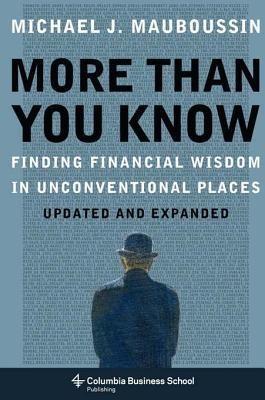
More Than You Know: Finding Financial Wisdom in Unconventional Places (Updated and Expanded)
by
Michael J. Mauboussin
Published 1 Jan 2006
Momentum investing, for example, assumes that a stock that is rising will continue to rise. If enough investors follow a momentum strategy, the prophecy of a high price becomes self-fulfilling. Most investors view pure imitation with some misgiving, belying their often-imitative actions. But imitation often has a rational basis. Consider the following cases, for example:6 Asymmetric information. Imitation can be very valuable when other investors know more about a particular investment than you do. We all routinely use imitation in our day-to-day decision making, allowing us to leverage the specialized knowledge of others. Agency costs. Many money-management firms must make trade-offs between maximizing the performance of the investment portfolio (long-term absolute returns) and maximizing the value of the money-management business (by collecting assets and fees).

Makers and Takers: The Rise of Finance and the Fall of American Business
by
Rana Foroohar
Published 16 May 2016
David Swensen, the chief investment officer at Yale University, who’s run its endowment since 1985 with stellar results, put it succinctly: “The fundamental market failure in the mutual fund industry involves the interaction between sophisticated, profit-seeking providers of financial services and naïve, return-seeking consumers of investment products. The drive for profits by Wall Street and the mutual fund industry overwhelms the concept of fiduciary responsibility, leading to an all too predictable outcome: …the powerful financial services industry exploits vulnerable individual investors.”49 Information asymmetry will always work in favor of Wall Street. But asset managers could be forced to take a fiduciary pledge, a kind of Socratic oath for bankers, just like the one medical professionals must take, which would bind them to serving their customers rather than primarily themselves. Those found to be in violation of such an oath could be subject to strict penalties and big fines.
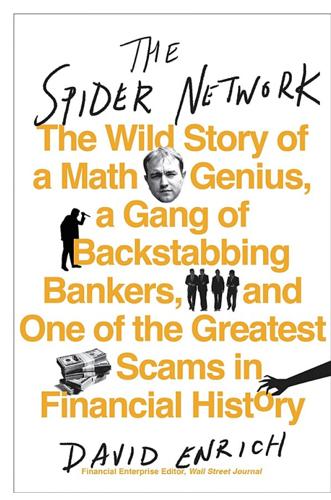
The Spider Network: The Wild Story of a Math Genius, a Gang of Backstabbing Bankers, and One of the Greatest Scams in Financial History
by
David Enrich
Published 21 Mar 2017
He’d been taught that properly functioning markets relied on all parties possessing similar levels of information—that was essential if market forces were going to achieve two of their signature goals: coming up with accurate prices and efficiently allocating capital. So in 1995 Peng set out to narrow the information asymmetry between banks and their clients: He wrote a book, The Structured Note Market: The Definitive Guide for Investors, Traders & Issuers, a four-hundred-page, decidedly nerdy volume. A decade later, Peng was still working on Wall Street, but no longer as a trader. He was now a researcher at Citigroup, writing detailed analytical pieces explaining the intricacies of the financial markets to the bank’s clients.
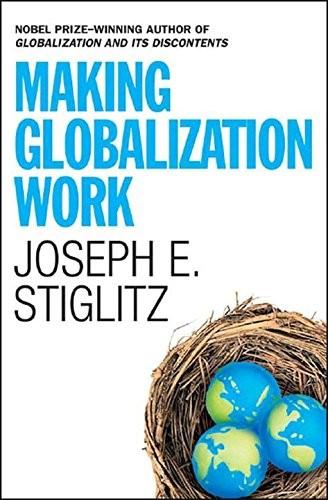
Making Globalization Work
by
Joseph E. Stiglitz
Published 16 Sep 2006
In this conservative view, economics is about efficiency, and issues of equity (which, like beauty, so often lies in the eyes of the beholder) should be left to politics. Today, the intellectual defense of market fundamentalism has largely disappeared.2 My research on the economics of information showed that whenever information is imperfect, in particular when there are information asymmetries—where some individuals know something that others do not (in other words, always)—the reason that the invisible hand seems invisible is that it is not there.3 Without appropriate government regulation and intervention, markets do not lead to economic efficiency.4 In recent years we have seen dramatic illustrations of these theoretical insights.
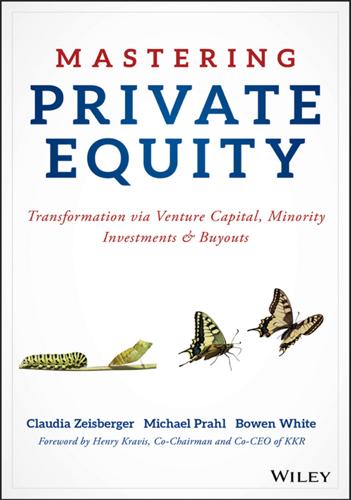
Mastering Private Equity
by
Zeisberger, Claudia,Prahl, Michael,White, Bowen
,
Michael Prahl
and
Bowen White
Published 15 Jun 2017
With this blueprint, the industry was able to scale and grow significantly over the past four decades. Yet the separation of roles adds substantial legal and fundraising cost to the PE model. To reduce the legal complexity, standards for documents and processes have evolved, most notably the limited partnership agreement. The separation of activities can also lead to resource and information asymmetries between a fund’s GP and its LPs. From the LP’s perspective, selecting a manager and managing a portfolio of PE funds are the main tasks requiring significant (and not always available) resources. One feature embedded into the model to minimize the principal/agent conflict is the finite lifetime of funds.

Fulfillment: Winning and Losing in One-Click America
by
Alec MacGillis
Published 16 Mar 2021
No matter what, Amazon was collecting its fee. “I see parallels in Amazon’s behavior to the lending practices of some financial groups before the 2008 crash,” wrote the Financial Times columnist Rana Foroohar. “They used dynamic pricing, in the form of variable rate subprime mortgage loans, and exploited huge information asymmetries in their sale of mortgage-backed securities and complex debt deals to unwary investors including cities such as Detroit. Amazon, for its part, has vastly more market data than the suppliers and public sector purchasers it plans to link. Indeed, I see more and more parallels between online groups and large financial institutions.

Born in Flames
by
Bench Ansfield
Published 15 Aug 2025
What property insurance did for mortgage markets, reinsurance did for the insurance industry more broadly: it kept the markets elastic. In the 1970s, as it was stretched ever thinner, reinsurance changed the relationships between people and places, investors and investments. With the liability lag and the yoking together of far-flung geographies, the act of reinsuring warped time and space. For IRB, this warping created information asymmetries that would eventually boomerang. But for a few years, the route from New York to Florida, then London to Rio, represented the mundane functioning of a distinctly postwar triangular trade in risk. In two years, more than $20 million in premium writings zigzagged from one Atlantic port city to another (over $100 million in 2024 dollars).34 Sasse’s risk trade came to an abrupt halt in November 1977, when IRB finally caught word that “an explosive situation” was afoot.
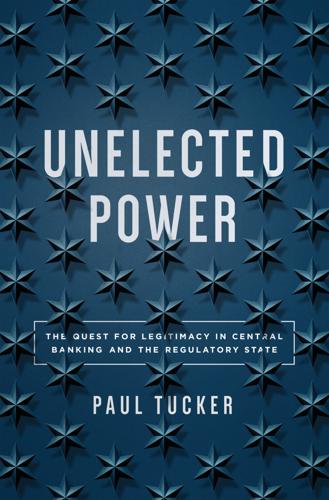
Unelected Power: The Quest for Legitimacy in Central Banking and the Regulatory State
by
Paul Tucker
Published 21 Apr 2018
On both sides of the Atlantic problems of that kind have motivated various forms of social regulation, on the broad grounds that the net cost-benefit can be assessed qualitatively if not quantitatively.19 Asymmetric Power, Monopoly, and Antitrust A slightly different type of problem arises where there is a material imbalance of power between the two parties to a transaction, either because one party is economically dominant (whether as a monopoly seller or buyer) or because of asymmetric information (for example, a borrower knows more about its financial condition than a lender and might also be sufficiently powerful to decline to open its books). Often those are presented as two distinct problems, but both revolve around asymmetric power. Problems of asymmetric information drove a lot of early financial regulation, especially after the founding in 1934 of the US Securities and Exchange Commission, which imposed disclosure requirements on issuers and traders of securities (chapter 7).

The Narrow Corridor: States, Societies, and the Fate of Liberty
by
Daron Acemoglu
and
James A. Robinson
Published 23 Sep 2019
These include the presence of “externalities,” which arise when actions by individual actors have major consequences for others that are not mediated via markets, paving the way for excessive levels of some activities such as pollution; the provision of “public goods,” which are goods from which everybody benefits, such as infrastructure or national defense; and situations in which there is pervasive “asymmetric information,” meaning that some market participants will not be able to accurately judge the quality of the products and services they are trading. They include as well the presence of monopolies that need to be regulated to prevent them from charging excessively high prices or engaging in predatory activities to drive out their competitors.
…
Do the costs of introducing new checks on the Leviathan, especially when these will not be automatically forthcoming due to the Red Queen effect, outweigh the benefits from the additional state intervention? From this perspective, the reason why the government should not regulate the prices of most goods isn’t because these prices are set perfectly by markets (or, in the terminology of economics, because there are no externalities, public goods, asymmetric information, or distributional concerns), but because the political costs of the state widening its remit would be too high, either because of the additional precautions this requires or because of the heightened risk of spinning out of the corridor. This line of reasoning implies that the state should intervene only when the benefits from intervention are larger than the political costs of intervention.
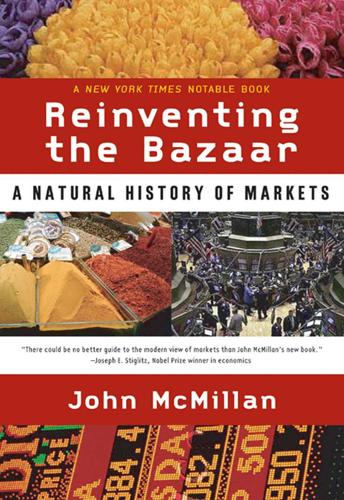
Reinventing the Bazaar: A Natural History of Markets
by
John McMillan
Published 1 Jan 2002
Examining markets up close, the new economics emphasizes market frictions and how they are kept in check. In 2001, this work received recognition with the award of the Nobel Prize in economics to George Akerlof, Michael Spence, and Joseph Stiglitz for laying the foundation, as the Nobel citation said, “for a general theory of markets with asymmetric information.” Expressed in mathematics and impenetrable jargon, these new ideas reside obscurely in the technical journals. They have, however, a deeply practical content.8 Exchange is “one of the purest and most primitive forms of human socialization,” the sociologist Georg Simmel wrote in 1900; it creates “a society, in place of a mere collection of individuals.”9 A market is a social construction.
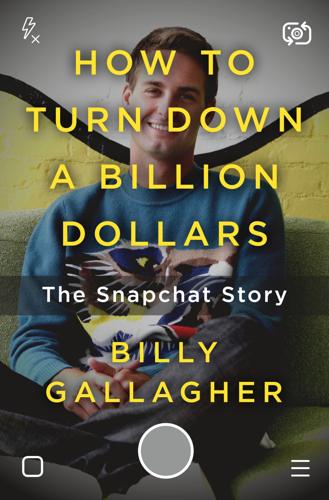
How to Turn Down a Billion Dollars: The Snapchat Story
by
Billy Gallagher
Published 13 Feb 2018
When the acquirer wins the deal, it offers a princely sum to a promising company early on and manages it well (e.g., Instagram), growing it into a business worth far more than the price it paid. It seemed very possible that Snapchat was at the peak of a bubble in startup valuations. But it was unlikely, given all the metrics Evan and Bobby had seen around growth and engagement, that Snapchat was a fad and that they were headed toward a user or growth cliff. Evan obviously had asymmetric information about himself and his ability to manage Snapchat. He had looked into Zuckerberg’s eyes and met other leaders of the tech world and came away fairly unimpressed. He could play the game on this level. Evan believed he knew what users wanted better than Zuckerberg—or anyone at Facebook, for that matter.

Fixed: Why Personal Finance is Broken and How to Make it Work for Everyone
by
John Y. Campbell
and
Tarun Ramadorai
Published 25 Jul 2025
John Campbell, Howell Jackson, Brigitte Madrian, and Peter Tufano provide an overview of the various ways in which free financial markets can function poorly even when market participants are rational and financially sophisticated. They discuss externalities, public goods, market power, and the problems of adverse selection and moral hazard created by asymmetric information; but, like this book, they stress the impact of financial mistakes on financial outcomes. Campbell et al., “Consumer financial protection,” Journal of Economic Perspectives 25, no. 1 (2011): 91–114. 2. The first three of these questions were developed by Annamaria Lusardi and Olivia S.

Age of Ambition: Chasing Fortune, Truth, and Faith in the New China
by
Evan Osnos
Published 12 May 2014
Don’t bother kissing ass.” When it was Gong’s turn, she took a seat at the head of the conference table and informed the new hires that they were now in “the happiness business.” She did not smile. She rarely did when she talked about the happiness business. She focused instead on “price/performance ratios” and “information asymmetry.” She was in office attire: glasses, ponytail, no makeup, and a pink Adidas jacket with a ragged left cuff. The young men and women before her were joining a staff of nearly five hundred. Your customers, she told them, will be virtually indistinguishable from you: migrants, alone in the city, separated from love by “three towering mountains”—no money, no time, and no connections.

The Cigarette: A Political History
by
Sarah Milov
Published 1 Oct 2019
Even though there were more than sixty official tobacco grades, most growers were only aware of five or six, which meant that they had no real idea of the value of what they were selling. It was easy for buyers to undervalue the farmer’s lot of tobacco, especially in the helter-skelter atmosphere of the auction, in which a pile of tobacco was sold approximately every ten seconds. This information asymmetry sustained a brisk speculative trade performed by “pinhookers”—buyers who waited to “see some poor devil’s tobacco going for a song and a dance.” After purchasing tobacco on the cheap, the pinhooker would resell later that day on the very same warehouse floor. In the language of populist producerism that animated many southern Democrats who supported the New Deal farm agenda, Virginia Democrat John Flannagan, the author of the inspection act, condemned the auction system as generating “parasites” who siphoned off wealth that rightfully belonged to “the growers who have labored about 13 months in the year to produce the tobacco.”84 The Tobacco Inspection Act would remedy a farmer’s ignorance by letting him know what he was selling—and what the same grade was bringing in other tobacco markets.
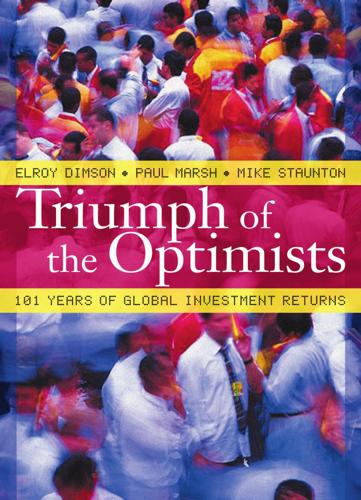
Triumph of the Optimists: 101 Years of Global Investment Returns
by
Elroy Dimson
,
Paul Marsh
and
Mike Staunton
Published 3 Feb 2002
The Modigliani-Miller (1958) and Miller (1977) propositions and extensions make it clear that changes in the required returns on equity and debt should not, in themselves, influence the choice of capital structure. Financial managers should not base capital structure decisions on the perceived “cost” gap between debt and equity, but instead, should focus their attention on the issues that really matter: tax, the risk of financial distress, informational asymmetries, and agency costs. A related topic is dividend policy. We have presented the first century-long study on the performance of value and growth stocks. Our evidence suggests that, at least outside the United States, the expected return on stocks with a low dividend yield is smaller than the expected return on high-yield stocks.

Blood in the Machine: The Origins of the Rebellion Against Big Tech
by
Brian Merchant
Published 25 Sep 2023
The law hinges on the amount of control the employer exerts on the employee—so much of the control is exerted through social psychological gaming algorithms. It looks like you have choice and volition, but really it’s training you to work for the platform in a specific way. There is a purposefully generated information asymmetry, Dubal says. Workers can never be sure how much they’ll earn, or that the algorithm isn’t going to suddenly determine they should be terminated. “Algorithmic hiring and firing have become an everyday part of people’s lives, whether we’re talking about customer service agents or warehouse workers.”
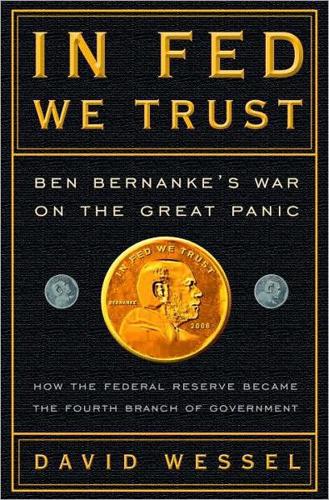
In FED We Trust: Ben Bernanke's War on the Great Panic
by
David Wessel
Published 3 Aug 2009
He was exercising the Fed’s monetary muscle, raising interest rates to double-digit levels to bring down inflation at the cost of a severe recession. At Stanford, seminar rooms and coffee rooms were thick with talk about the ways markets work or don’t work when one side has much better (“asymmetric”) information than the others and about the divergence of the interest of principals (such as shareholders) and those of their agents (corporate executives), especially when the agent has more information than the other. Bernanke applied that theory to the way banks and borrowers work, making his initial mark with the American Economic Review article on the causes of the Depression that was published in 1983, a couple of years after Bernanke finished it.

13 Bankers: The Wall Street Takeover and the Next Financial Meltdown
by
Simon Johnson
and
James Kwak
Published 29 Mar 2010
In a 1995 paper, Robert Merton wrote, “Looking at financial innovations … one sees them as the force driving the global financial system towards its goal of greater economic efficiency. In particular, innovations involving derivatives can improve efficiency by expanding opportunities for risk sharing, by lowering transaction costs and by reducing asymmetric information and agency costs.”45 Two years later, Alan Greenspan said, The unbundling of financial products is now extensive throughout our financial system. Perhaps the most obvious example is the ever-expanding array of financial derivatives available to help firms manage interest rate risk, other market risks, and, increasingly, credit risks.… Another far-reaching innovation is the technology of securitization—a form of derivative—which has encouraged unbundling of the production processes for many credit services.… These and other developments facilitating the unbundling of financial products have surely improved the efficiency of our financial markets.46 As the financial sector became a bigger part of the U.S. economy, the celebration of financial innovation only increased.

The Constitution of Knowledge: A Defense of Truth
by
Jonathan Rauch
Published 21 Jun 2021
It can coordinate its attacks but has little control over the demons it lets loose. It is not good at building durable institutions, because its norms are sociopathic. It is not good at maintaining its own situational awareness, because, as Thomas Rid notes, propagandists tend to become enmeshed in their own lies and half-truths. Trolls use asymmetric information warfare—ambushes, swarms, anonymous raids, disruptive strikes—because they are weak, not strong. Their hope is to batter and undermine the reality-based community. They are dangerous, but their greatest threat lies not in their own capabilities but in their ability to exploit gaps in the Constitution of Knowledge’s defenses: undermining its confidence, degrading its legitimacy, obscuring its principles, dividing its constituencies.
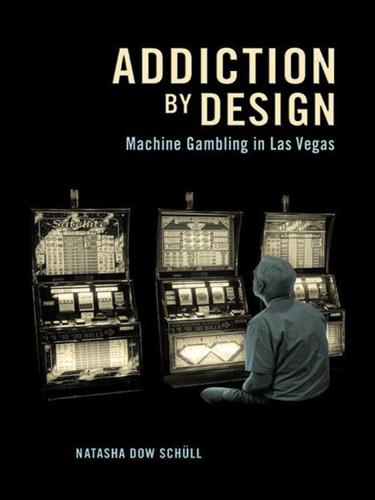
Addiction by Design: Machine Gambling in Las Vegas
by
Natasha Dow Schüll
Published 15 Jan 2012
Machines set up valid expectations in the human cognitive system, he argues, and then violate those expectations—thereby preying on gamblers’ rationality, not their irrationality.49 Accordingly, machines are not a blameless medium through which to educate gamblers and repair their distorted thinking, but are a strategically configured technology whose scripted distortions must be offset via product transparency, thus lessening the informational asymmetry inherent in the gambling exchange. Yet even this more radical version of consumer protection, although it considers machines accountable, ultimately targets consumer behavior; informational remedies unmask the workings of machines as a way to appeal to gamblers’ rationality, leaving basic machine features and functions intact.
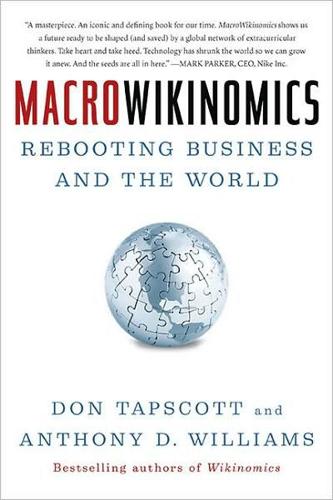
MacroWikinomics: Rebooting Business and the World
by
Don Tapscott
and
Anthony D. Williams
Published 28 Sep 2010
Now, deBronkart operates a blog called “The New Life of e-Patient Dave,” with the “e” standing for “empowered and engaged, equipped and enabled.”54 Through his blog, deBronkart champions patients’ rights to have access to their personal health records along with affordable and effective health care coverage. So while cautions about information asymmetries are duly noted, it’s in people like de- Bronkart and communities like MedHelp, PatientsLikeMe, and Sermo that we see the contours of a new model of health care emerging. WILL VESTED INTERESTS KILL COLLABORATIVE HEALTH CARE? As the battle over President Obama’s health care reform plan showed, there are deep vested interests in the status quo, profound differences in perspective, and almost incomprehensible challenges in reforming the structure of the system.
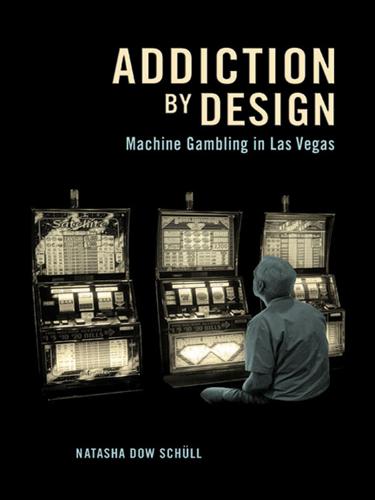
Addiction by Design: Machine Gambling in Las Vegas
by
Natasha Dow Schüll
Published 19 Aug 2012
Machines set up valid expectations in the human cognitive system, he argues, and then violate those expectations—thereby preying on gamblers’ rationality, not their irrationality.49 Accordingly, machines are not a blameless medium through which to educate gamblers and repair their distorted thinking, but are a strategically configured technology whose scripted distortions must be offset via product transparency, thus lessening the informational asymmetry inherent in the gambling exchange. Yet even this more radical version of consumer protection, although it considers machines accountable, ultimately targets consumer behavior; informational remedies unmask the workings of machines as a way to appeal to gamblers’ rationality, leaving basic machine features and functions intact.

Nexus: A Brief History of Information Networks From the Stone Age to AI
by
Yuval Noah Harari
Published 9 Sep 2024
She was also credited with using digital tools to help Taiwan successfully contain the COVID-19 outbreak.51 Yet Tang’s political commitment and career path are not the norm. For every computer-science graduate who wants to be the next Audrey Tang, there are probably many more who want to be the next Jobs, Zuckerberg, or Musk and build a multibillion corporation rather than become an elected public servant. This leads to a dangerous information asymmetry. The people who lead the information revolution know far more about the underlying technology than the people who are supposed to regulate it. Under such conditions, what’s the meaning of chanting that the customer is always right and that the voters know best? The following chapters try to level the playing field a bit and encourage us to take responsibility for the new realities created by the computer revolution.
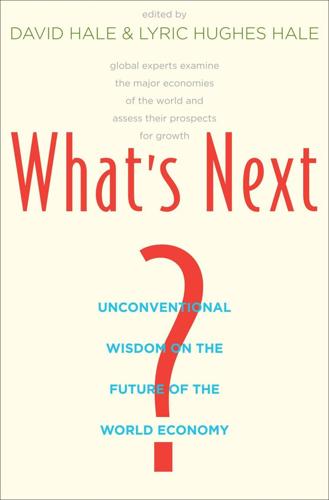
What's Next?: Unconventional Wisdom on the Future of the World Economy
by
David Hale
and
Lyric Hughes Hale
Published 23 May 2011
See Obrador, Andrés Manuel López (AMLO) anchoring, 288 Argentina, 48, 50, 51 Asia, consumption in, 87–89; economic growth in, xx–xxi, 258; equity market valuations, 77–78; investment challenges in, 82–85; investment trends in, 90–91; labor costs in, 86–87; structural shift in, 84–85; yield curves, 82–83. See also specific countries Asia-Pacific Partnership on Clean Development and Climate (APEC), 220 Aso, Taro, 105 asset bubbles, 94, 240–241 asset prices, 81 asymmetric information, 286 Australia, 139–150; banking system, xxiii, 141–142; current account deficit, 140; emissions trading scheme in, 226; exports, 145–146; global financial crisis and, xxiii–xxiv, 140–141, 149–150; impact of global trade contraction on, 145–146; macroeconomic policies in, 146–149; politics of, 150; residential property market in, 143–145 Australian dollar, 146 Australian Prudential Regulation Authority (APRA), 142 availability, 288 Azad University, 210–211 Bank for International Settlements, 246 bank loans, 237–238 Bank of Canada, 22–23 Bank of England, 154, 244, 252 Bank of Japan (BOJ), xxi, 95–98, 101 banks/banking sector, 233–248; in Australia, 141–142; bailouts of, 3–4; in Canada, 15–16; capital requirements and, 233–235, 237–238, 241–244, 246–248; in Nigeria, 126–127; regulatory framework, xxvii, 15–16, 233–234, 244–245; in Sub-Saharan Africa, 120; systemic problems in, 235–241; in US, 235–241 Basle Committee on Banking Supervision, 233, 234, 242–244, 246–248 Basle I, 234, 235, 237 Basle II, 15–16, 235 Basle III, 233, 246, 248 Basle IV, 246 Basri, Carole, xxviii–xxix Bazaar Merchants Association, 213–214 beggar thy neighbor policies, 24–25 Bernanke, Ben, xvii, 7 Bishop, Bill, 296 bond markets, 159 bonds, 258 bond yields, 6 Botswana, 118 bounded rationality, xxix, 286 Bowles, Erskine, 11 BP oil spill, 41, 185–186 Brazil, xvii, 7, 48; economic growth in, 51, 52; fiscal deficit, 257; inflation, 51; oil industry in, xxv, 41–42; politics, 33; reforms in, 49 Bressand, Albert, xxv British pound, 153–154, 161 broad money, 72–73, 240 “broken windows” scenario, 277–278 Brynjolfsson, Erik, 296 budget deficits.
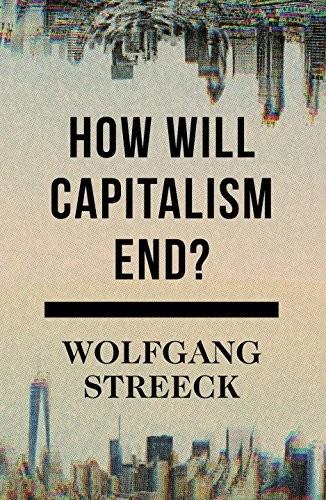
How Will Capitalism End?
by
Wolfgang Streeck
Published 8 Nov 2016
After all, the logic of market capitalism is one that licenses the pursuit of self-interest and, given unlimited potential rewards, must expect traders to be aggressively advantage-seeking.18 Nevertheless, the status of regulation in the system is precarious as the foundational ideology of free markets presumes that freedom of contract and caveat emptor are basically sufficient to keep competitors honest. More importantly, although rules and regulations are vital for the functioning of markets as they establish trust by protecting market participants from asymmetric information, it is in the nature of capitalist competition that profit-seekers will try to evade or circumvent them. Illegal or sublegal just as innovative trading – the two often being the same – tend to be more profitable, due to being riskier, than trading in the usual paths. This is why regulations that limit freedom of trade are typically attacked by enterprising traders, calling forth considerable intelligence and inventiveness in efforts to render them ineffectual.
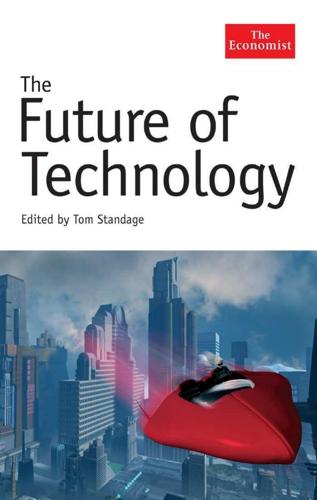
The Future of Technology
by
Tom Standage
Published 31 Aug 2005
Insecurity, he says, “is often due to perverse incentives, rather than to the lack of suitable technical protection mechanisms.” The person or company best placed to protect a system may, for example, be insufficiently motivated to do so, because the costs of failure fall on others. Such problems, Mr Anderson argues, are best examined using economic concepts, such as externalities, asymmetric information, adverse selection and moral hazard. A classic example is that of fraud involving cash dispensers (automated teller machines). Mr Anderson investigated a number of cases of “phantom withdrawals”, which customers said they never made, at British banks. He concluded that almost every time the security technology was working correctly, and that misconfiguration or mismanagement of the machines by the banks was to blame for the error.

The Powerful and the Damned: Private Diaries in Turbulent Times
by
Lionel Barber
Published 5 Nov 2020
In the UK, I watched an ‘old media’ phone-hacking scandal unfold which forced the closure of Rupert Murdoch’s saucy tabloid, the News of the World. This led to the Leveson inquiry into the conduct and regulation of the press which consumed my attention for almost two years. Throughout this period, I also saw the rise of ‘new media’ first hand, through regular trips to Silicon Valley. An important subtext is the ‘asymmetric information flow’ and ‘open-source journalism’ symbolised by WikiLeaks, Julian Assange and the Snowden affair, all of which presented ethical and professional dilemmas for the press. The fourth section begins with the terrorist attack in 2015 on the offices of Charlie Hebdo, the Parisian satirical magazine – the first wave of a series of violent Islamist acts of terror in Europe’s major cities.
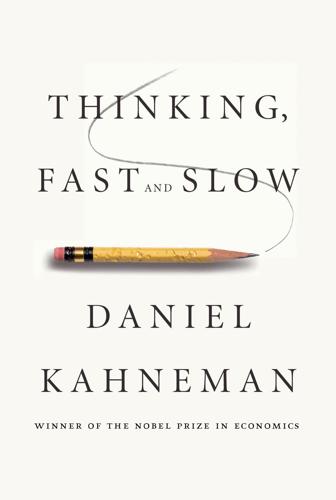
Thinking, Fast and Slow
by
Daniel Kahneman
Published 24 Oct 2011
Weber, and Ido Erev, “Decisions from Experience and the Effect of Rare Events in Risky Choice,” Psychological Science 15 (2004): 534–39. Ralph Hertwig and Ido Erev, “The Description-Experience Gap in Risky Choice,” Trends in Cognitive Sciences 13 (2009): 517–23. not yet settled: Liat Hadar and Craig R. Fox, “Information Asymmetry in Decision from Description Versus Decision from Experience,” Judgment and Decision Making 4 (2009): 317–25. “chances of rare events”: Hertwig and Erev, “The Description-Experience Gap.” 31: Risk Policies inferior option BC: The calculation is straightforward. Each of the two combinations consists of a sure thing and a gamble.

Imagining India
by
Nandan Nilekani
Published 25 Nov 2008
“We have barcodes on all our produce,” Debasish says, “and we can track it back to the exact farm it came from.” Focusing on community solutions may in fact be a great fit for the kind of knowledge economy we see evolving in India today. Collaboration and community networks for formal and informal solutions built on ICT infrastructure can reduce information asymmetry in exponential ways, bridging the gaps between urban and rural India and across socioeconomic classes. Contested lands A somewhat unexpected place where IT in India has massive potential is in land. Land has never been an easy issue in India—it has been a source of much chest-thumping and of pitched, agitated battles.

Site Reliability Engineering: How Google Runs Production Systems
by
Betsy Beyer
,
Chris Jones
,
Jennifer Petoff
and
Niall Richard Murphy
Published 15 Apr 2016
Product development performance is largely evaluated on product velocity, which creates an incentive to push new code as quickly as possible. Meanwhile, SRE performance is (unsurprisingly) evaluated based upon reliability of a service, which implies an incentive to push back against a high rate of change. Information asymmetry between the two teams further amplifies this inherent tension. The product developers have more visibility into the time and effort involved in writing and releasing their code, while the SREs have more visibility into the service’s reliability (and the state of production in general). These tensions often reflect themselves in different opinions about the level of effort that should be put into engineering practices.

Termites of the State: Why Complexity Leads to Inequality
by
Vito Tanzi
Published 28 Dec 2017
See Marginal tax rates negative income tax, 212 progressive taxes, 52–53, 228, 343–44 reduction in, 87 revenue growth and, 385 stabilization policies and, 238 tax expenditures and, 207 in US, 19, 24–25, 208 India Constitution, 270 corruption in, 120 growth in, 386–87 income inequality in, 221, 227 mislabeling of fish in, 149–50 Indirect government intervention, 33, 36, 58 Individualism, 89, 312–13 Individualist governments, 65 Individual versus community rights, 98 Industrial Revolution, 16–17, 346, 357 Inequality. See Income inequality Informal norms, 285–86 Information asymmetry in, 108, 114–15, 148–49, 165–66, 331–32 in exchanges, 93, 112–13 in health care, 166 legal rules and, 254–55 in new markets, 165–66 on prices, 167–68, 331–32 435 public institutions and, 296 Infrastructure entrepreneurs and, 309 income redistribution and, 192–93 legal rules and, 256 limited role of government and, 96 in UK, 316–17 in US, 234, 316–17 The Inside Job (documentary), 337 Institute for Health Metrics and Evaluation, 390 Institute of Economic Affairs, 60–61, 79, 394–95 Institutions.

Capitalism 4.0: The Birth of a New Economy in the Aftermath of Crisis
by
Anatole Kaletsky
Published 22 Jun 2010
It is, however, the least radical of the alternative approaches because it does not challenge the central assumption of REH—that booms, busts, and recessions are all caused by various types of market failure and therefore that breakdowns in laissez-faire capitalism could, at least in principle, be prevented by making markets more perfect, for example, by disseminating information or strengthening the regulations against fraud. Partly because of this ideological compatibility, academic economics has been quite willing to embrace the behavioral approach. Indeed, the work on bounded rationality by Herbert Simon, game theory by Vernon Smith, experimental economics by Daniel Kahneman, and asymmetrical information by George Akerloff, Joe Stiglitz, and Michael Spence have all been rewarded with Nobel prizes. More challenging to orthodox economics is the mathematical work in chaos theory and advanced control engineering, which suggests that most of the mathematical techniques used by precrisis academic economics were simply wrong.

Misbehaving: The Making of Behavioral Economics
by
Richard H. Thaler
Published 10 May 2015
Barberis, Nicholas, Ming Huang, and Tano Santos. 2001. “Prospect Theory and Asset Prices.” Quarterly Journal of Economics 116, no. 1: 1–53. Barner, Martin, Francesco Feri, and Charles R. Plott. 2005. “On the Microstructure of Price Determination and Information Aggregation with Sequential and Asymmetric Information Arrival in an Experimental Asset Market.” Annals of Finance 1, no. 1: 73–107. Barro, Robert J. 1974. “Are Government Bonds Net Wealth?” Journal of Political Economy 82, no. 6: 1095–117. Basu, Sanjoy. 1977. “Investment Performance of Common Stocks in Relation to Their Price-Earnings Ratios: A Test of the Efficient Market Hypothesis.”

The Euro: How a Common Currency Threatens the Future of Europe
by
Joseph E. Stiglitz
and
Alex Hyde-White
Published 24 Oct 2016
The advocates of the euro said that it would enable financial products to move more freely, since the exchange rate risk had been eliminated. In their mind, financial innovation meant designing better products to meet the needs of consumers and firms. That’s the standard neoliberal theory. More modern theories emphasize imperfectly informed and often irrational consumers and firms operating in markets with imperfect and asymmetric information, where profits can typically be enhanced more by exploiting these market imperfections than in any other way. Nobel Prize–winning economists George Akerlof and Rob Shiller document this widespread behavior in their brilliant book Phishing for Phools—using the term for Internet scammers who systematically “fish for fools.”16 With financial products moving ever more easily throughout Europe, the opportunity to take advantage of a whole continent of people who might be duped into buying financial products that were not suitable for them proved irresistible.
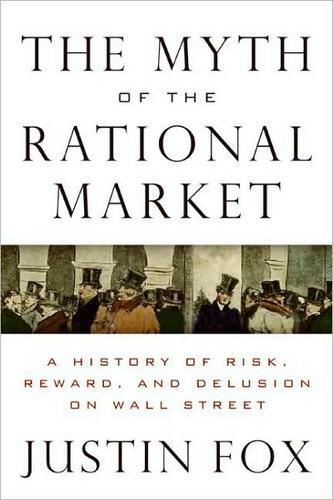
The Myth of the Rational Market: A History of Risk, Reward, and Delusion on Wall Street
by
Justin Fox
Published 29 May 2009
To name just a few such market models in the recent literature: “adaptive rational equilibrium,” “efficient learning,” “adaptive markets hypothesis,” “rational belief equilibria.”32 That, and Bill Sharpe now runs agent-based market simulations on his laptop to see how they play out. CHANGE WOULD APPEAR TO BE coming. It’s not here yet, though, and for now we have to make do with the muddle of neoclassical and behavioral and experimental and asymmetric-information economics and finance that we have. What practical lessons can be drawn from this muddle? First, it is hard to beat the market. If you have money to invest, the only sensible place to start is with the assumption that the market is smarter than you. You don’t have to stop there. But if you do come up with an idea for beating the market, you need a model that explains why everybody else isn’t already doing the same thing that you are.
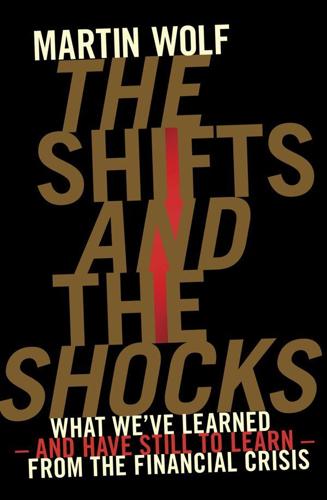
The Shifts and the Shocks: What We've Learned--And Have Still to Learn--From the Financial Crisis
by
Martin Wolf
Published 24 Nov 2015
Thus, not only banks but other investors found themselves holding toxic assets created by the ‘originate and distribute’ model of finance that increasingly replaced the traditional ‘lend and hold’ model in the US in the run-up to the crisis: thus institutions made loans, to be packaged into composite securities and sold on to outside investors, instead of holding those loans on their own books as they used to do. As we have seen, the argument for this wide distribution of assets had been that they would end up being held by those best able to understand the risks. In practice, however, many of them ended up being held by those least able to understand the risks (see Chapter Two above). This is asymmetric information at work. This was partly, no doubt, because better-informed sellers emphasized the upside of complex products, but did not go out of their way to make clear their downside. It is partly because the combination of greed with ignorance is a perennial feature of customers in financial markets.
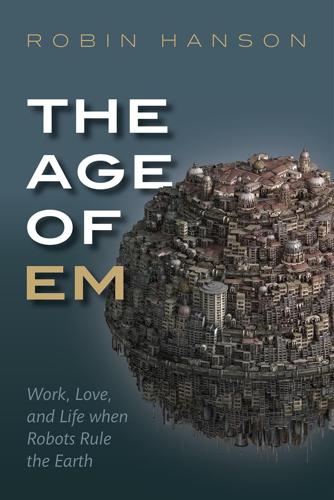
The Age of Em: Work, Love and Life When Robots Rule the Earth
by
Robin Hanson
Published 31 Mar 2016
Soto, Christopher, Oliver John, Samuel Gosling, and Jeff Potter. 2011. “Age Differences in Personality Traits from 10 to 65: Big Five Domains and Facets in a Large Cross-Sectional Sample.” Journal of Personality and Social Psychology 100(2): 330–348. Sousa-Poza, Alfonso, and Alexandre Ziegler. 2003. “Asymmetric Information about Workers’ Productivity as a Cause for Inefficient Long Working Hours.” Labour Economics 10: 727–747. Spengler, Marion, Martin Brunner, Rodica Damian, Oliver Lüdtke, Romain Martin, and Brent Roberts. 2015. “Student characteristics and behaviors at age 12 predict occupational success 40 years later over and above childhood IQ and parental socioeconomic status.”

Small Wars, Big Data: The Information Revolution in Modern Conflict
by
Eli Berman
,
Joseph H. Felter
,
Jacob N. Shapiro
and
Vestal Mcintyre
Published 12 May 2018
Second, if he chooses to call in the tip, he can do so anonymously, with minimal danger of revealing himself as the informant. Let’s return to the father in the courtyard with the phone, deciding whether to text in a tip. To understand his predicament, we need to outline the strategic environment he is involuntarily embedded in: an asymmetric, information-centric war. Information-Centric Insurgency and Counterinsurgency The father faces a dilemma. Well-armed forces—government and insurgents—are vying for control of his street and are willing to use violence to win it. It’s an asymmetric conflict, meaning that one side is better armed (in this case the government), allowing them to capture or kill the insurgents if they can only locate them.
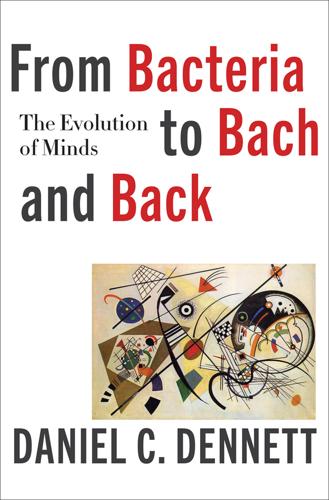
From Bacteria to Bach and Back: The Evolution of Minds
by
Daniel C. Dennett
Published 7 Feb 2017
It highlighted, for the first time, the cardinal value of keeping one’s intentions and plans secret from the opposition. Having a poker face isn’t just for playing poker, and too much transparency is quite literally death to any individual or organization that has to compete in the cruel world. Survival, in short, depends on information and, moreover, depends on differential or asymmetric information: I know some things that you don’t know, and you know some things that I don’t know, and our well-being depends on keeping it that way. Even bacteria—even nonliving viruses—engage in devious ruses to conceal or camouflage themselves in an arms race with their intrusive, inquisitive competitors.25 So let’s consider, as a tentative proposal, defining semantic information as design worth getting, and let’s leave the term “design” as noncommittal as possible for the time being, allowing only for the point I stressed in chapter 3, that design without a designer (in the sense of an intelligent designer) is a real and important category.

Good Economics for Hard Times: Better Answers to Our Biggest Problems
by
Abhijit V. Banerjee
and
Esther Duflo
Published 12 Nov 2019
John Hollander (New York: Library of America, 2005), 58. 35 Ran Abramitzky, Leah Platt Boustan, and Katherine Eriksson, “Europe’s Tired, Poor, Huddled Masses: Self-Selection and Economic Outcomes in the Age of Mass Migration,” American Economic Review 102, no. 5 (2012): 1832–56. 36 “Immigrant Founders of the 2017 Fortune 500,” Center for American Entrepreneurship, 2017, http://startupsusa.org/fortune500/. 37 Nakamura, Sigurdsson, and Steinsson, “The Gift of Moving.” 38 Jie Bai, “Melons as Lemons: Asymmetric Information, Consumer Learning, and Quality Provision,” working paper, 2018, accessed June 19, 2019, https://drive.google.com/file/d/0B52sohAPtnAWYVhBYm11cDBrSm M/view. 39 “For the conversion of his money into capital, therefore, the owner of money must meet in the market with the free labourer, free in the double sense, that as a free man he can dispose of his labour-power as his own commodity, and that on the other hand he has no other commodity for sale, is short of everything necessary for the realisation of his labour-power.”

The Wealth of Networks: How Social Production Transforms Markets and Freedom
by
Yochai Benkler
Published 14 May 2006
In combination, these considerations make it difficult to claim as a general matter that privately set licensing terms would be more efficient than the publicly set background rules of copyright law. 186 The combination of mass-market contracts enforced by technical controls over use of digital materials, which in turn are protected by the DMCA, threatens to displace the statutorily defined public domain with a privately defined realm of permissible use. 187 This privately defined settlement would be arrived at in non-negotiated mass-market transactions, in the presence of significant information asymmetries between consumers and vendors, and in the presence of systematic market power of at least some degree. 782 Trademark Dilution 783 As discussed in chapter 8, the centrality of commercial interaction to social existence in early-twenty-first-century America means that much of our core iconography is commercial in origin and owned as a trademark.
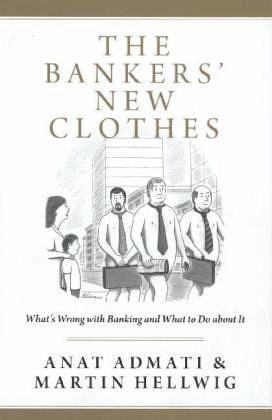
The Bankers' New Clothes: What's Wrong With Banking and What to Do About It
by
Anat Admati
and
Martin Hellwig
Published 15 Feb 2013
Reinhart, Carmen M., and Kenneth Rogoff. 2009. This Time Is Different: Eight Centuries of Financial Folly. Princeton, NJ: Princeton University Press. ———. 2010. “Growth in a Time of Debt.” American Economic Review 100 (2): 573–578. Reiss, Peter. 1990. “Economic and Financial Determinants of Oil and Gas Exploration Activity.” In Asymmetric Information, Corporate Finance and Investment, ed. R. Glenn Hubbard. Chicago: University of Chicago Press. Ricardo, David. 1817. “The Principles of Political Economy and Taxation.” London. Full text available at http://www.econlib.org/library/Ricardo/ricP.html. Accessed October 21, 2012. Riesser, Jakob. [1912] 1971.
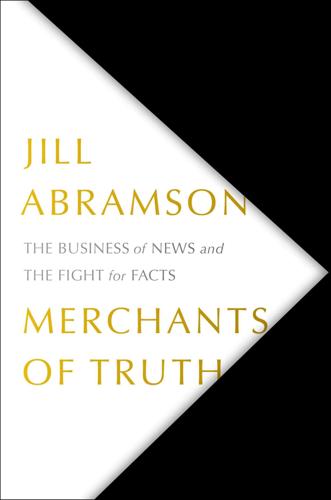
Merchants of Truth: The Business of News and the Fight for Facts
by
Jill Abramson
Published 5 Feb 2019
An ad could be placed in the News Feed of users with whom the message was supposed to resonate, and it would be invisible to anyone outside of that target audience. It was a way to segment a population without its members noticing they had been segmented, a means of perpetuating a state of informational asymmetry, a tool that could be used to divide and confuse. It was a crucial component of what the Trump campaign called its “voter suppression operations,” of which there were at least three. The goal was to dampen turnout from reliably Democratic voting blocs: idealistic white liberals, young women, and African Americans.
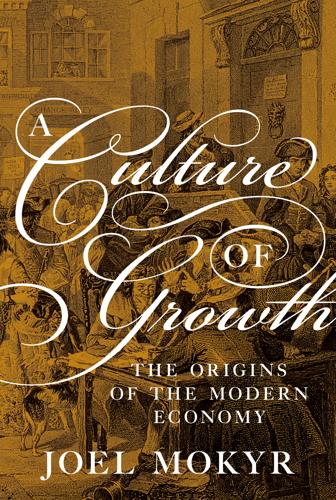
A Culture of Growth: The Origins of the Modern Economy
by
Joel Mokyr
Published 8 Jan 2016
If cooperation in the group could be maintained, a higher living standard would mean increased fitness, and the group would grow relative to others. There is some theoretical work and experimental data to back up this theory.13 Strong religious beliefs also contributed to the resolution of asymmetric information situations, as these were an element in trying to encourage truth-telling by making witnesses swear a holy oath, with a strong implication of severe divine punishment if broken. Again, the flip side is that it is not clear how strong the strength of the commitment between members of different religions was.
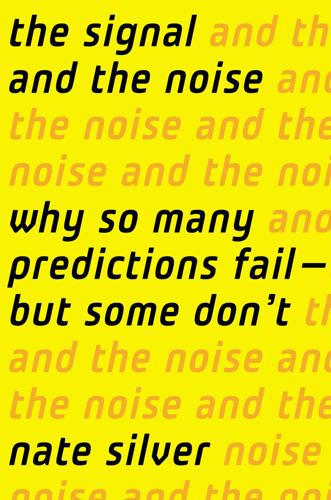
The Signal and the Noise: Why So Many Predictions Fail-But Some Don't
by
Nate Silver
Published 31 Aug 2012
Murrah Federal Building, 425 algorithms, 265, 426 all-in bet, 306 Allison, Graham, 433–35 Al Qaeda, 422, 424, 425, 426, 433, 435–36, 440, 444 Alzheimer’s, 420 Amazon.com, 352–53, 500 American exceptionalism, 10 American Football League (AFL), 185–86, 480 American League, 79 American Stock Exchange, 334 Amsterdam, 228 Anchorage, Alaska, 149 Anderson, Chris, 9 Angelo, Tommy, 324–26, 328 animals, earthquake prediction and, 147–48 Annals of Applied Statistics, 511–12 ANSS catalog, 478 Antarctic, 401 anthropology, 228 antiretroviral therapy, 221 Apple, 264 Archilochus, 53 Arctic, 397, 398 Arianism, 490 Aristotle, 2, 112 Armstrong, Scott, 380–82, 381, 388, 402–3, 405, 505, 508 Arrhenius, Svante, 376 artificial intelligence, 263, 293 Asia, 210 asset-price bubble, 190 asymmetrical information, 35 Augustine, Saint, 112 Australia, 379 autism, 218, 218, 487 availability heuristic, 424 avian flu, see bird flu A/Victoria flu strain, 205–6, 208, 483 Babbage, Charles, 263, 283 Babyak, Michael, 167–68 baby boom, 31 Babylonians, 112 Bachmann, Michele, 217 bailout bills, 19, 461 Bak, Per, 172 Baker, Dean, 22 Bane, Eddie, 87 Bank of England, 35 Barbour, Haley, 140 baseball, 9, 10, 16, 74–106, 128, 426, 446, 447, 451n aging curve in, 79, 81–83, 81, 83, 99, 164 betting on, 286 luck vs. skill in, 322 minor league system in, 92–93 results in, 327 rich data in, 79–80, 84 Baseball America, 75, 87, 89, 90, 90, 91 Baseball Encyclopedia, 94 Baseball Prospectus, 75, 78, 88, 297 basic reproduction number (R0), 214–15, 215, 224, 225, 486 basketball, 80n, 92–93, 233–37, 243, 246, 256, 258, 489 batting average, 86, 91, 95, 100, 314, 321, 321, 339 Bayer Laboratories, 11–12, 249 Bayes, Thomas, 240–43, 251, 253, 254, 255, 490 Bayesian reasoning, 240, 241–42, 259, 349, 444 biases and beliefs in, 258–59 chess computers’ use of, 291 Christianity and, 490 in climatology, 371, 377–78, 403, 406–7, 407, 410–11 consensus opinion and, 367 Fisher’s opposition to, 252 gambling esteemed in, 255–56, 362 priors in, 244, 245, 246, 252, 255, 258–59, 260, 403, 406–7, 433n, 444, 451, 490, 497 stock market and, 259–60 Bayes’s theorem, 15, 16, 242, 243–49, 246, 247, 248, 249, 250, 258, 266, 331, 331, 448–49, 450–51 in poker, 299, 301, 304, 306, 307, 322–23 Beane, Billy, 77, 92, 93–94, 99–100, 103, 105–7, 314 Bear Stearns, 37 beauty, complexity and, 173 beer, 387, 459 behavioral economics, 227–28 Belgium, 459 Bellagio, 298–99, 300, 318, 495 bell-curve distribution, 368n, 496 Bengkulu, Indonesia, 161 Benjamin, Joel, 281 Berlin, Isaiah, 53 Berners-Lee, Tim, 448, 514 BetOnSports PLC, 319 bets, see gambling Betsy, Hurricane, 140 betting markets, 201–3, 332–33 see also Intrade biases, 12–13, 16, 293 Bayesian theory’s acknowledgment of, 258–59 in chess, 273 and errors in published research, 250 favorite-longshot, 497 of Fisher, 255 objectivity and, 72–73 toward overconfidence, 179–83, 191, 203, 454 in polls, 252–53 as rational, 197–99, 200 of scouts, 91–93, 102 of statheads, 91–93 of weather forecasts, 134–38 Bible, 2 Wicked, 3, 13 Biden, Joseph, 48 Big Data, 9–12, 197, 249–50, 253, 264, 289, 447, 452 Big Short, The (Lewis), 355 Billings, Darse, 324 Bill James Baseball Abstract, The, 77, 78, 84 bin Laden, Osama, 432, 433, 434, 440, 509 binomial distribution, 479 biological weapons, 437, 438, 443 biomedical research, 11–12, 183 bird flu, 209, 216, 229 Black, Fisher, 362, 367, 369 “Black Friday,” 320 Black Swan, The (Taleb), 368n Black Tuesday, 349 Blanco, Kathleen, 140 Blankley, Tony, 50 Blodget, Henry, 352–54, 356, 364–65, 500 Blue Chip Economic Indicators survey, 199, 335–36 Bluefire, 110–11, 116, 118, 127, 131 bluffing, 301, 303, 306, 310, 311, 328 Bonus Baby rule, 94 books, 2–4 cost of producing, 2 forecasting and, 5 number of, 2–3, 3, 459 boom, dot-com, 346–48, 361 Boston, 77 Boston Red Sox, 63, 74–77, 87, 102, 103–5 Bowman, David, 161–62, 167 Box, George E.

City: Urbanism and Its End
by
Douglas W. Rae
Published 15 Jan 2003
New Haven Evening Register, October 18, 1909, p. 1. 6. This is of course overstated and simplified in order to represent an ideological position. The voluntary content of market transactions is of course compromised by all manner of complications, including large differences of bargaining power, asymmetrical information, fraud, and the like. 7. This point is explored at length in the literature on welfare economics. See, for instance, I. M. D. Little, A Critique of Welfare Economics (Oxford: Clarendon, 1957). 8. Ad appearing in the New Haven Evening Register, October 2, 1911. 9. New Haven Evening Register, October 6, 1915. 10.